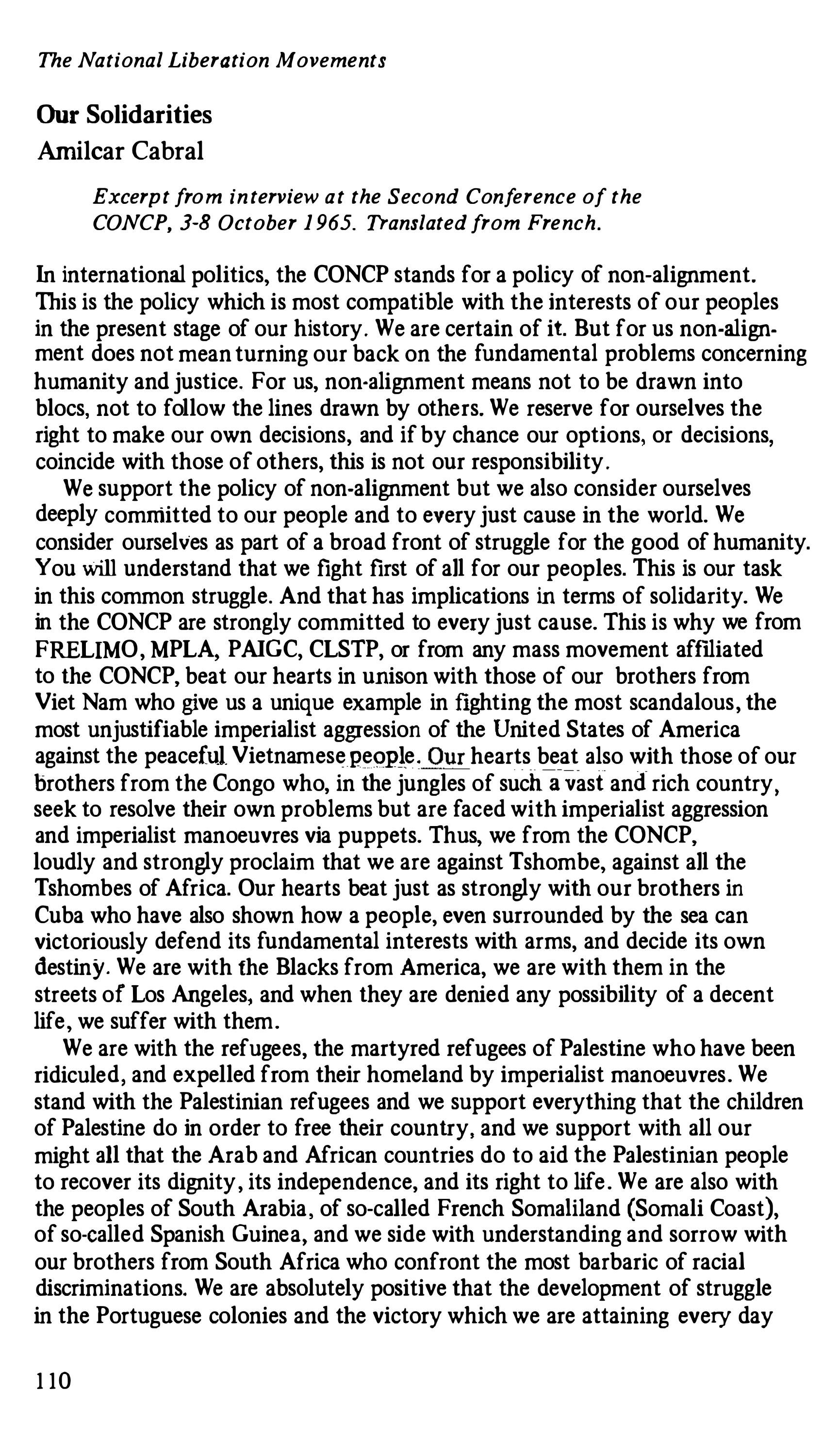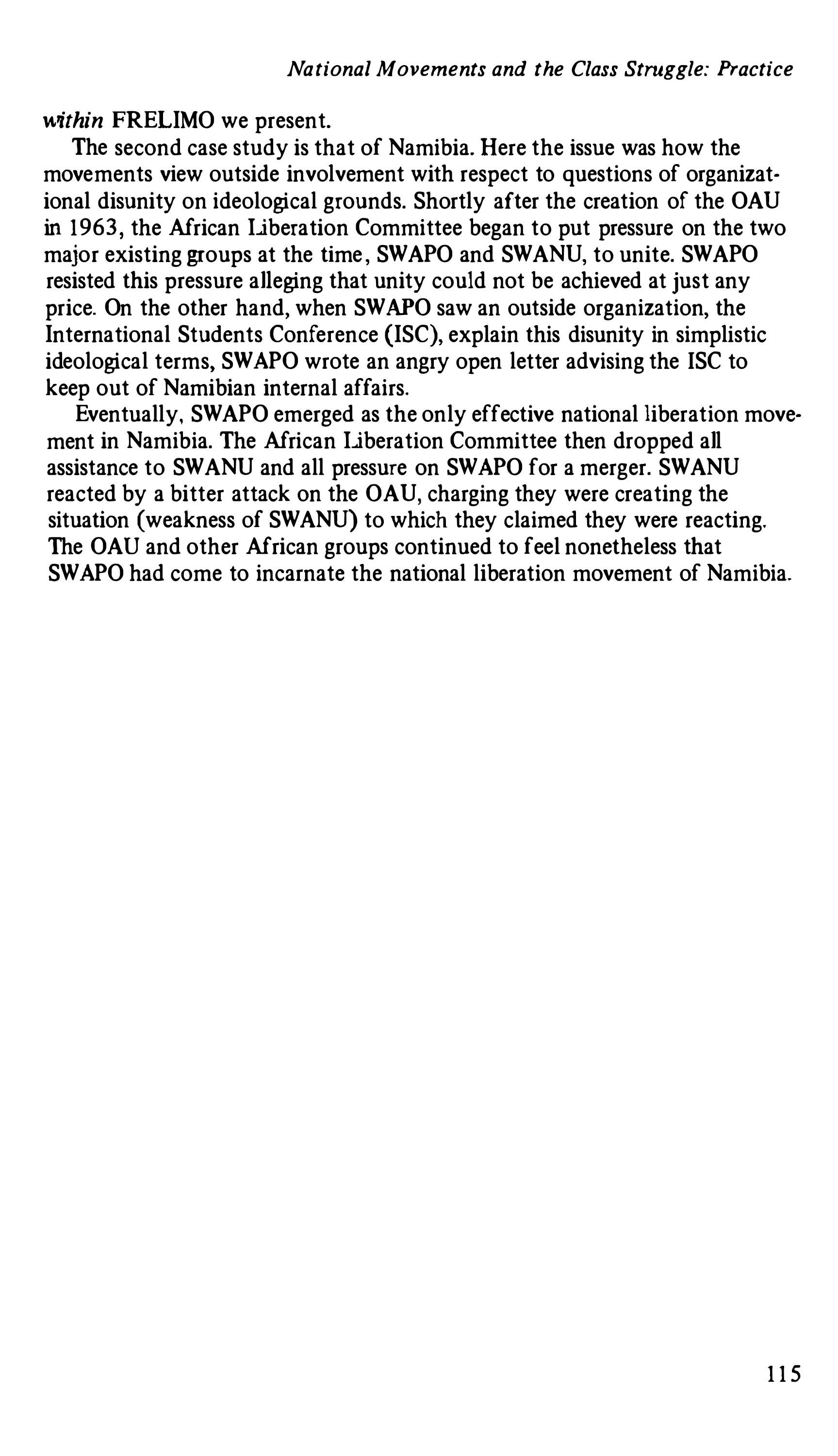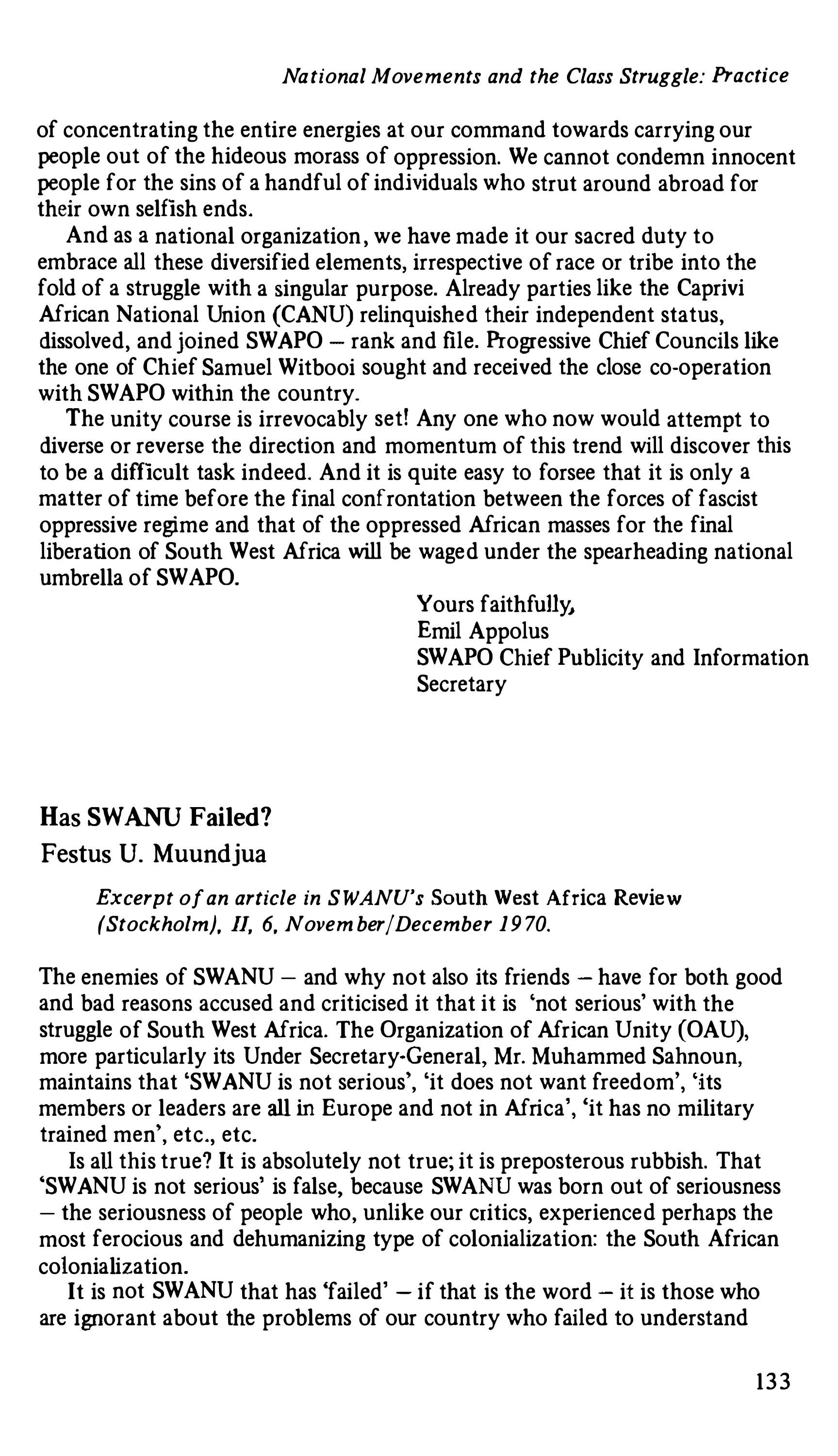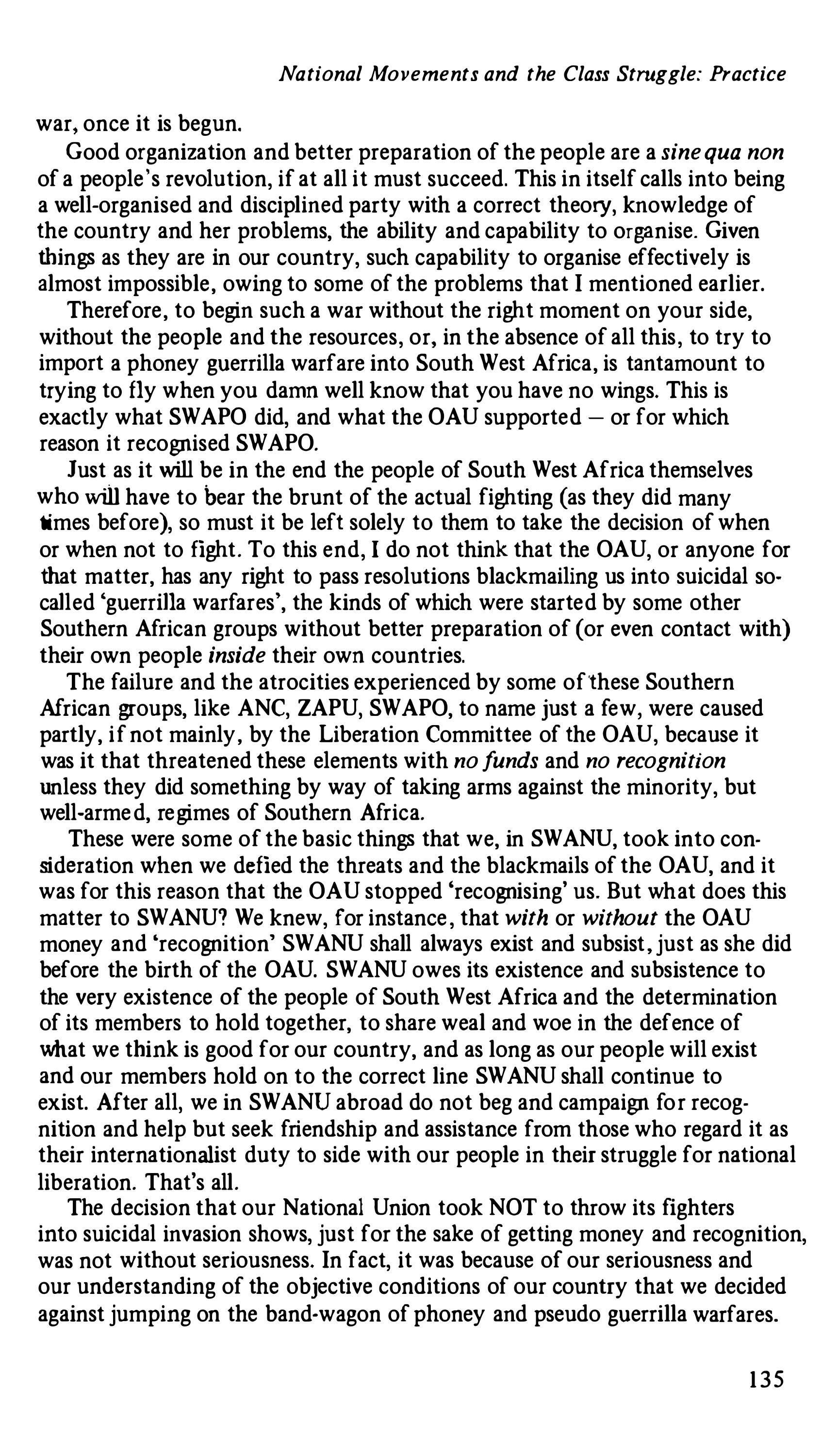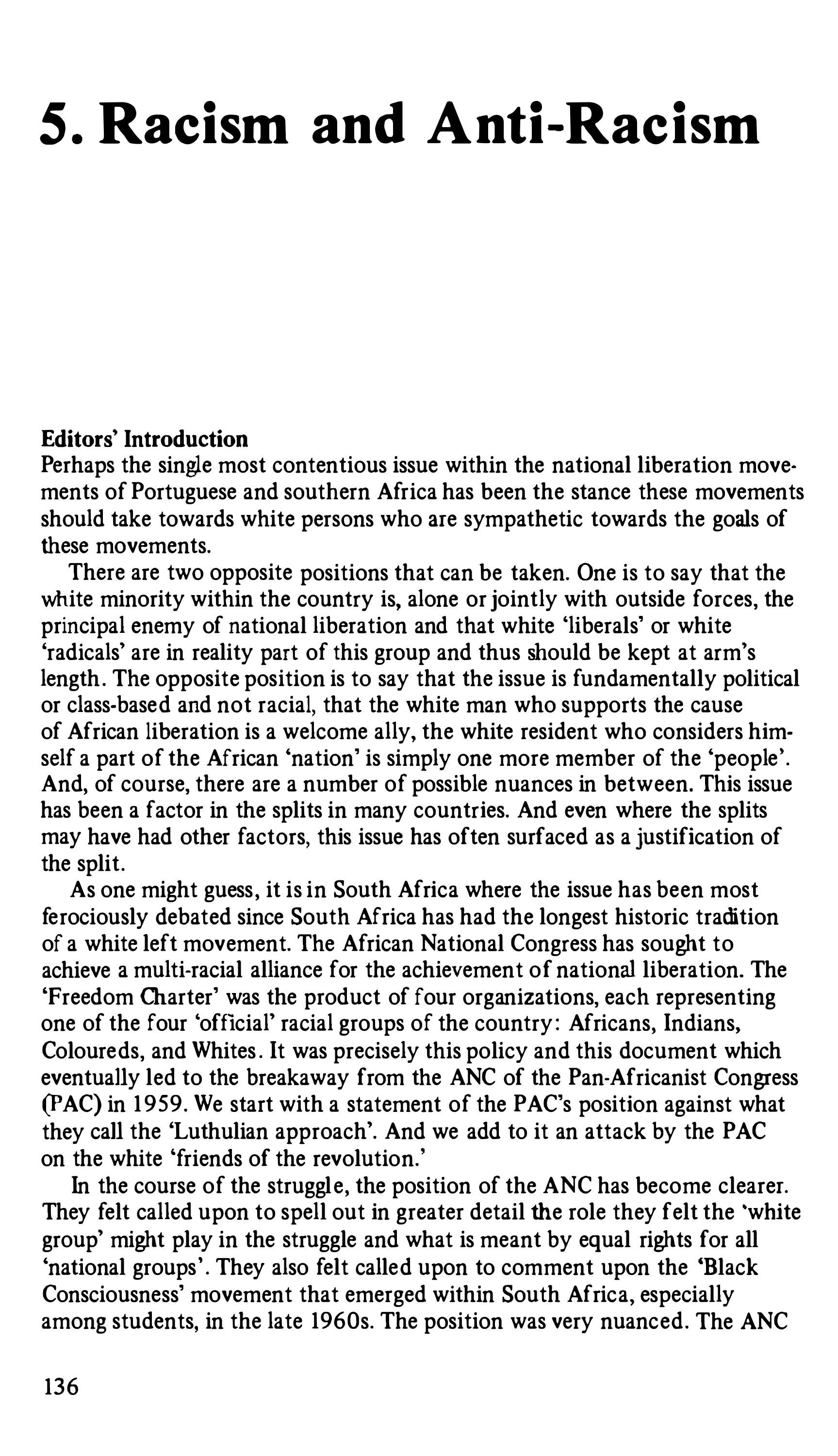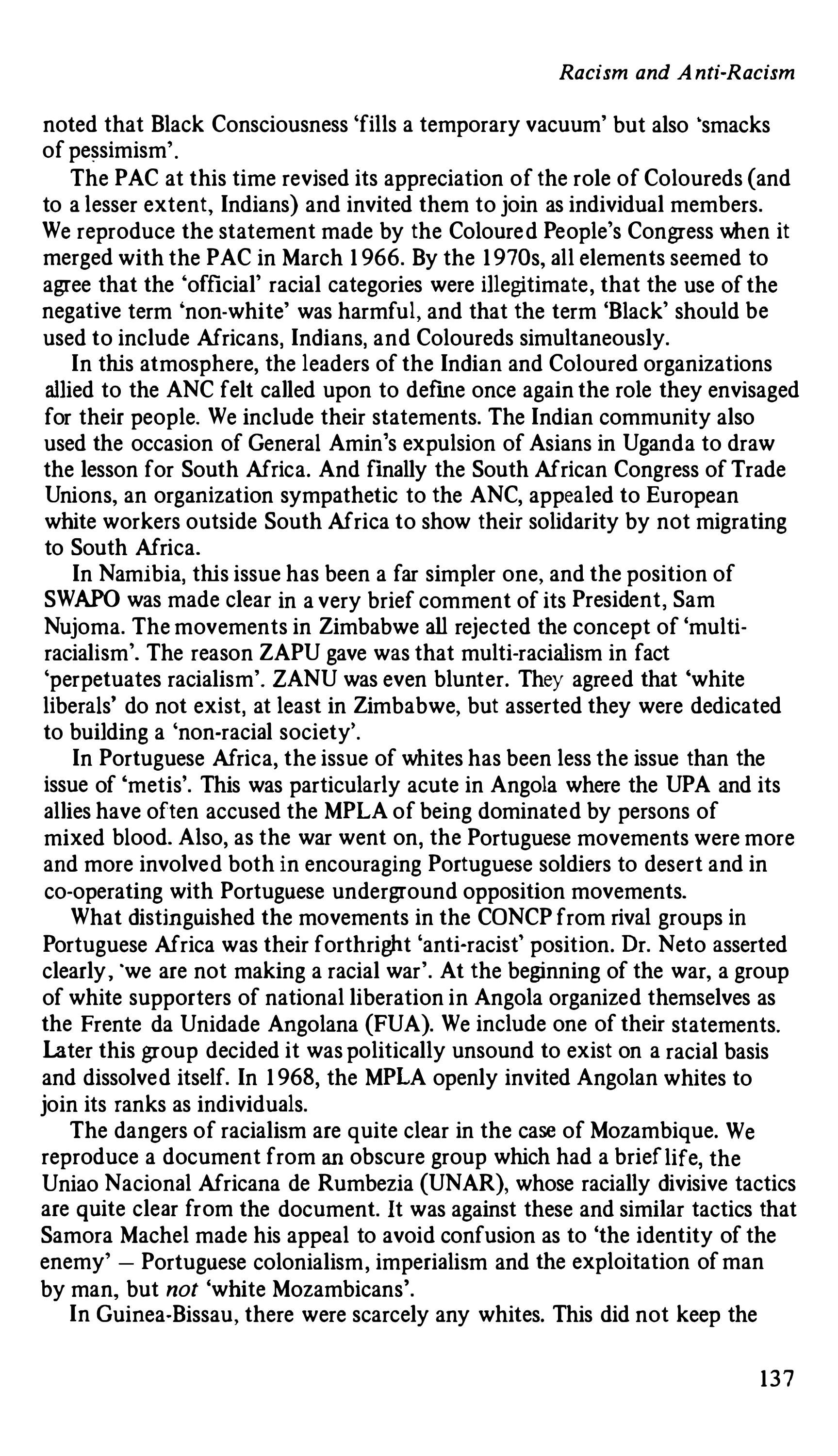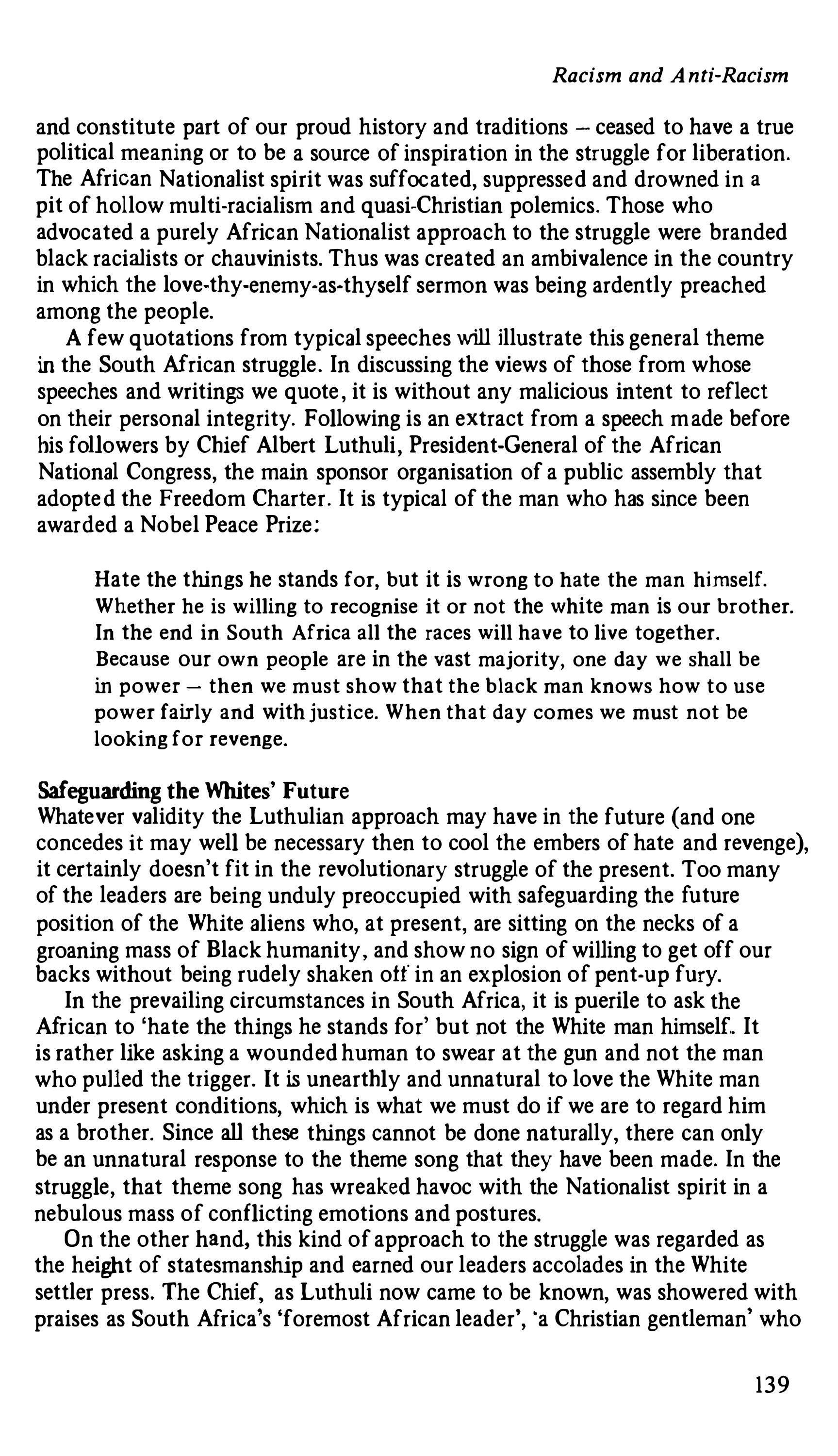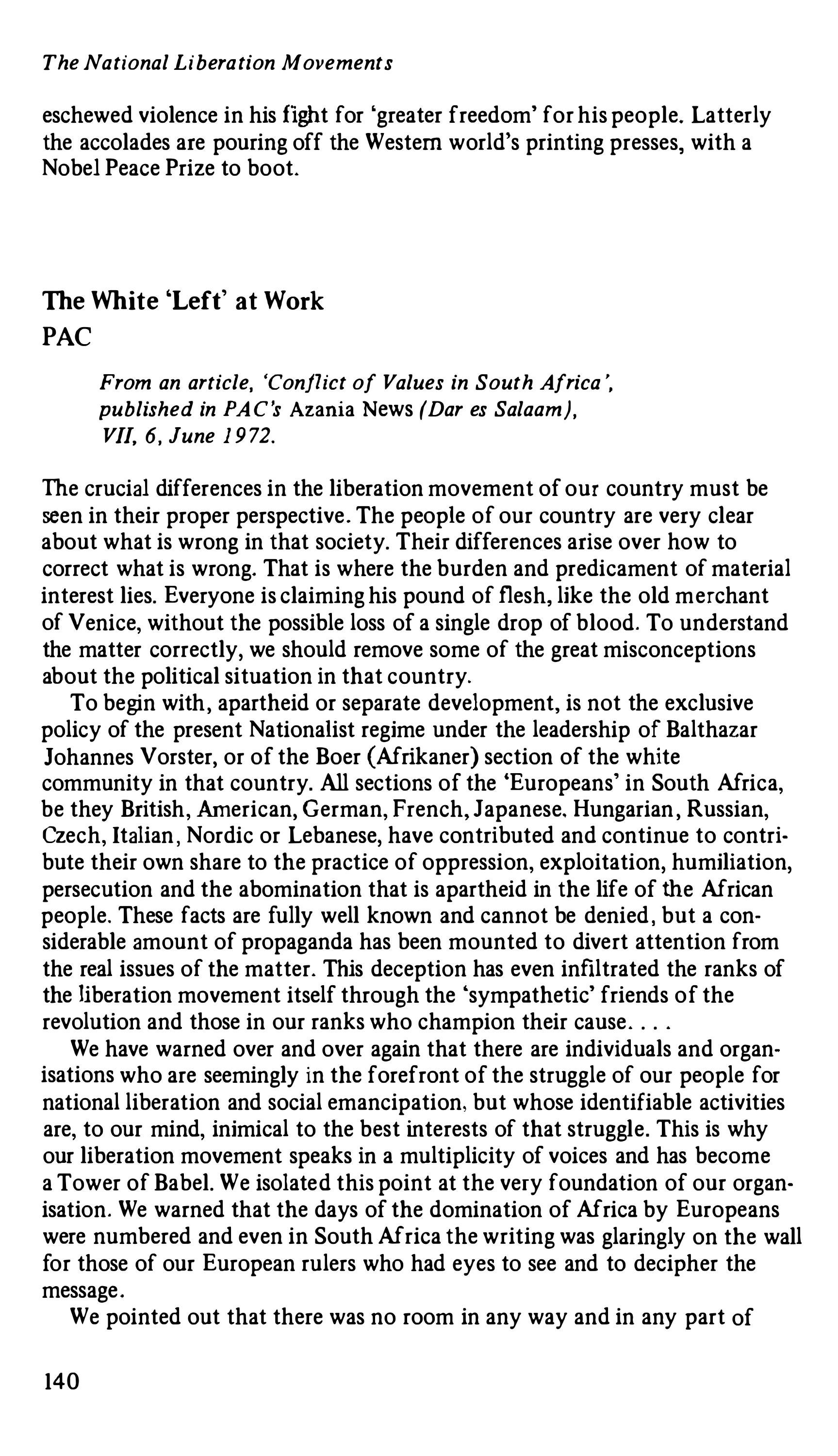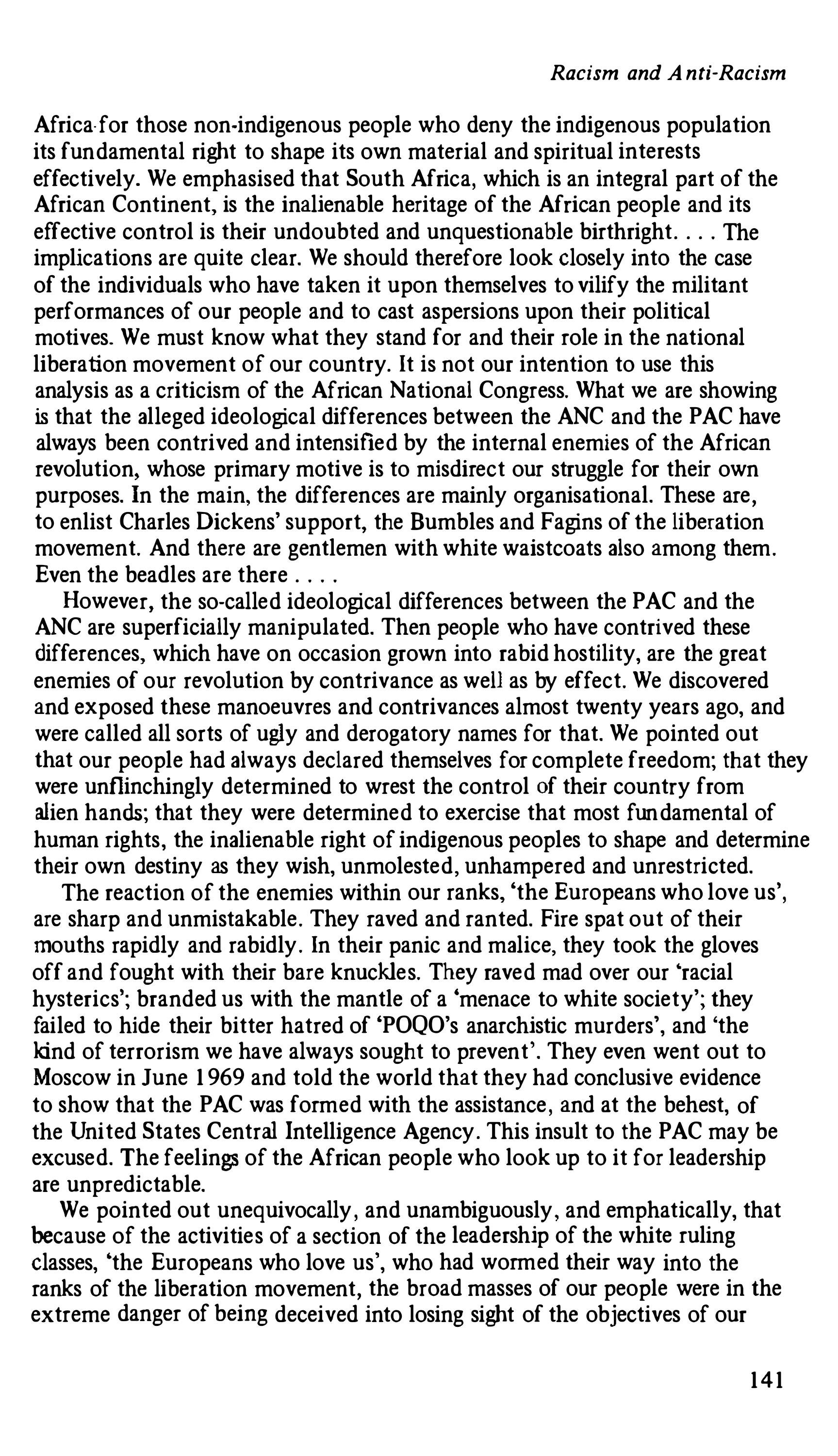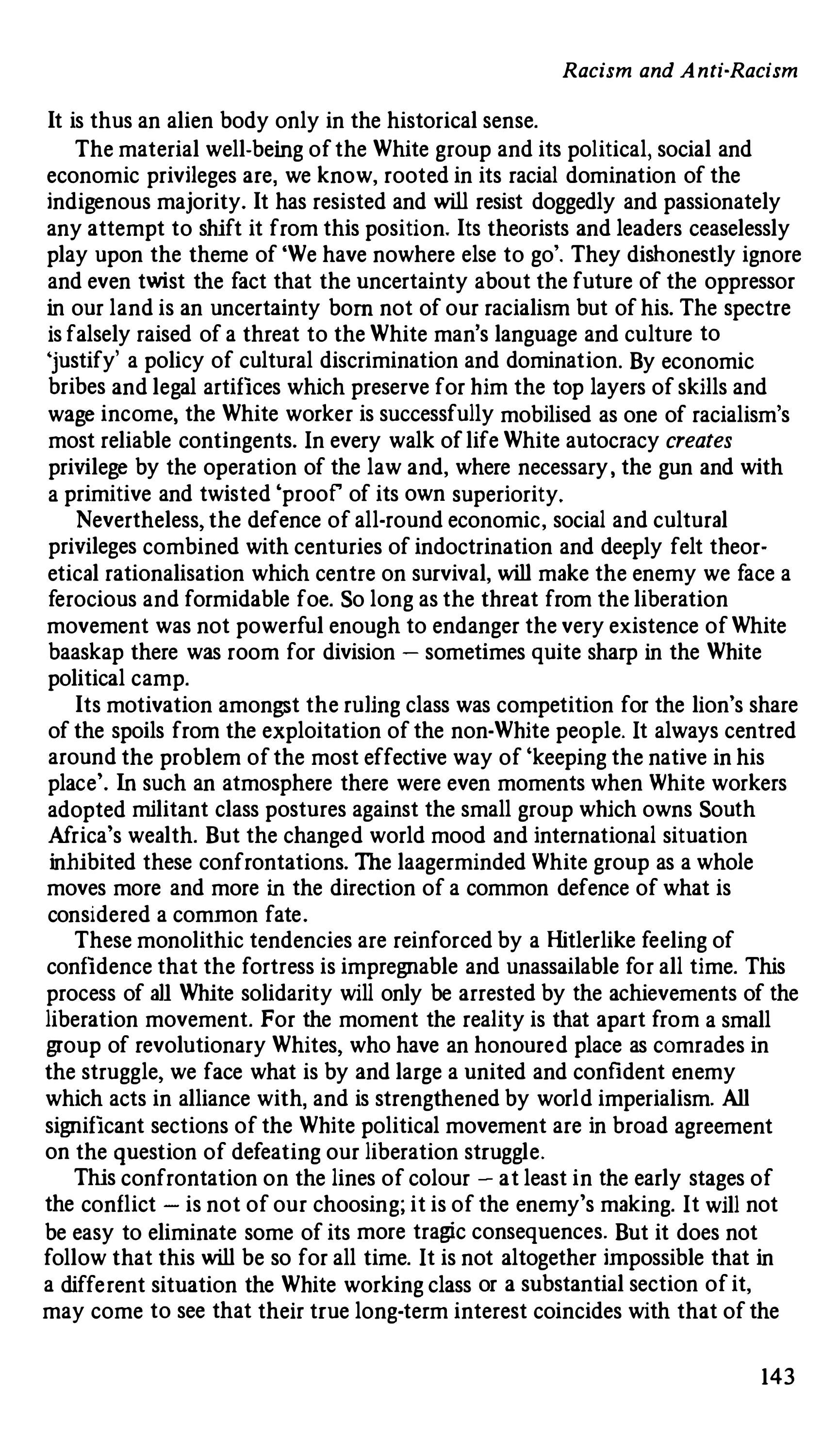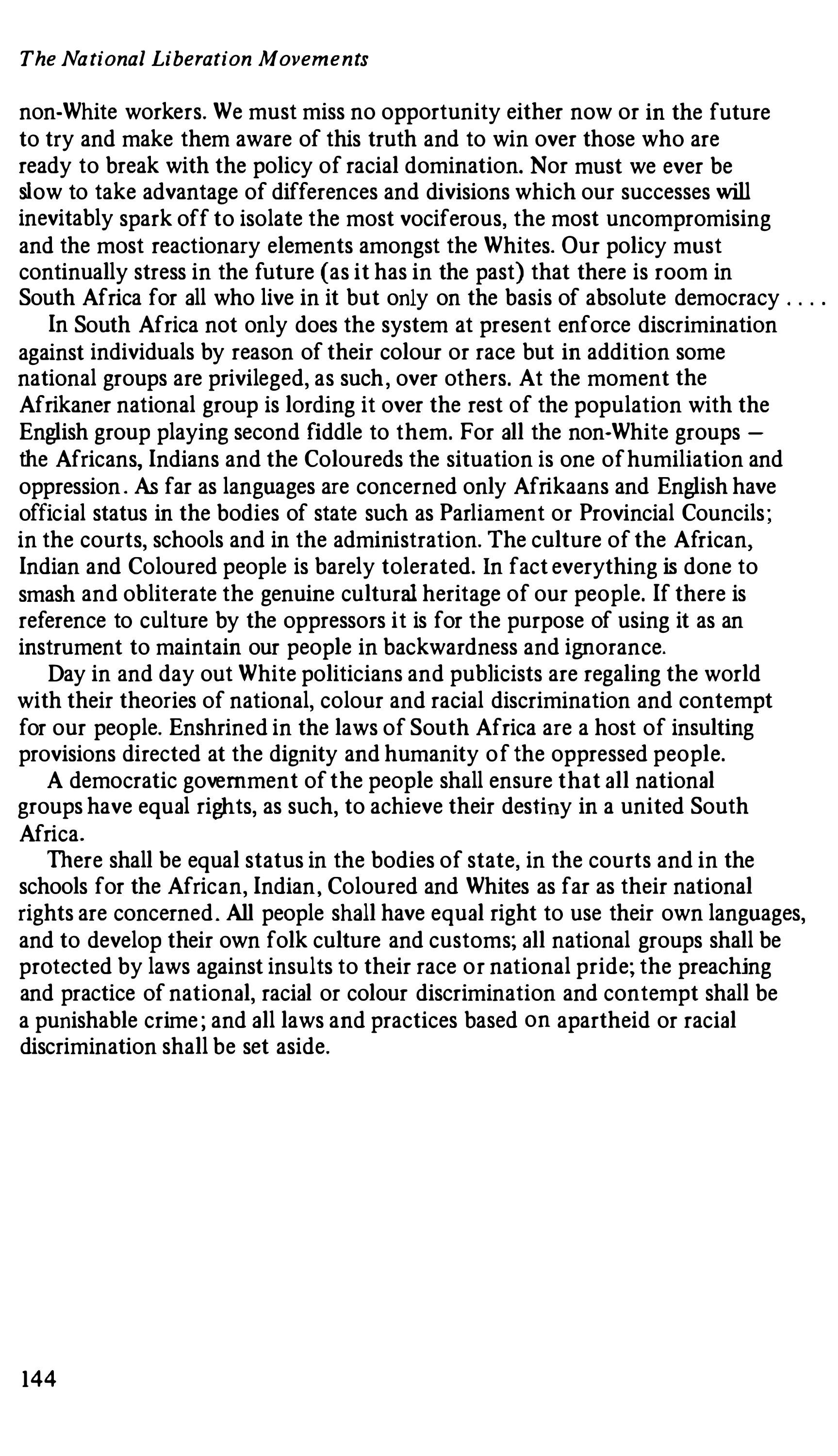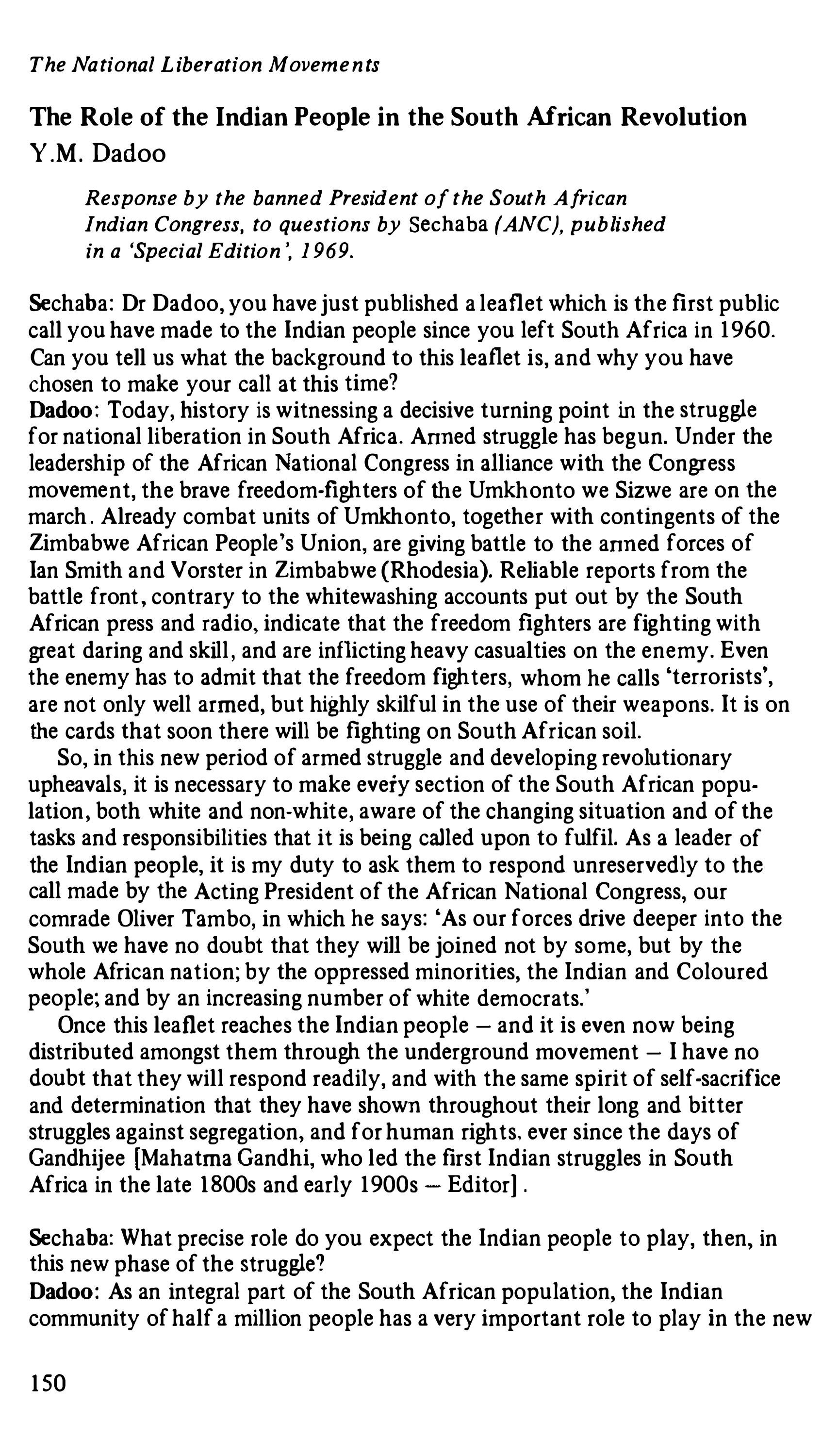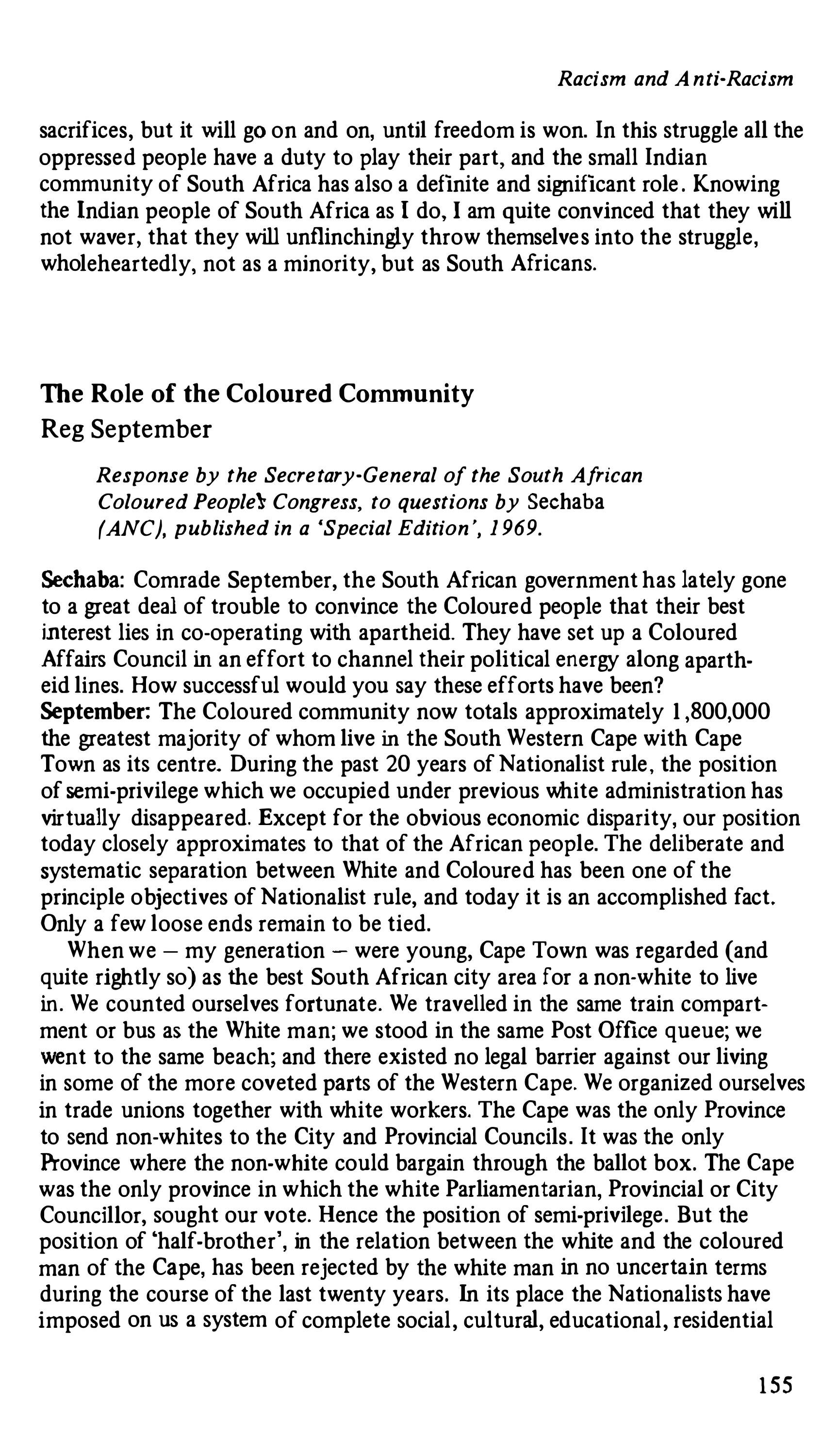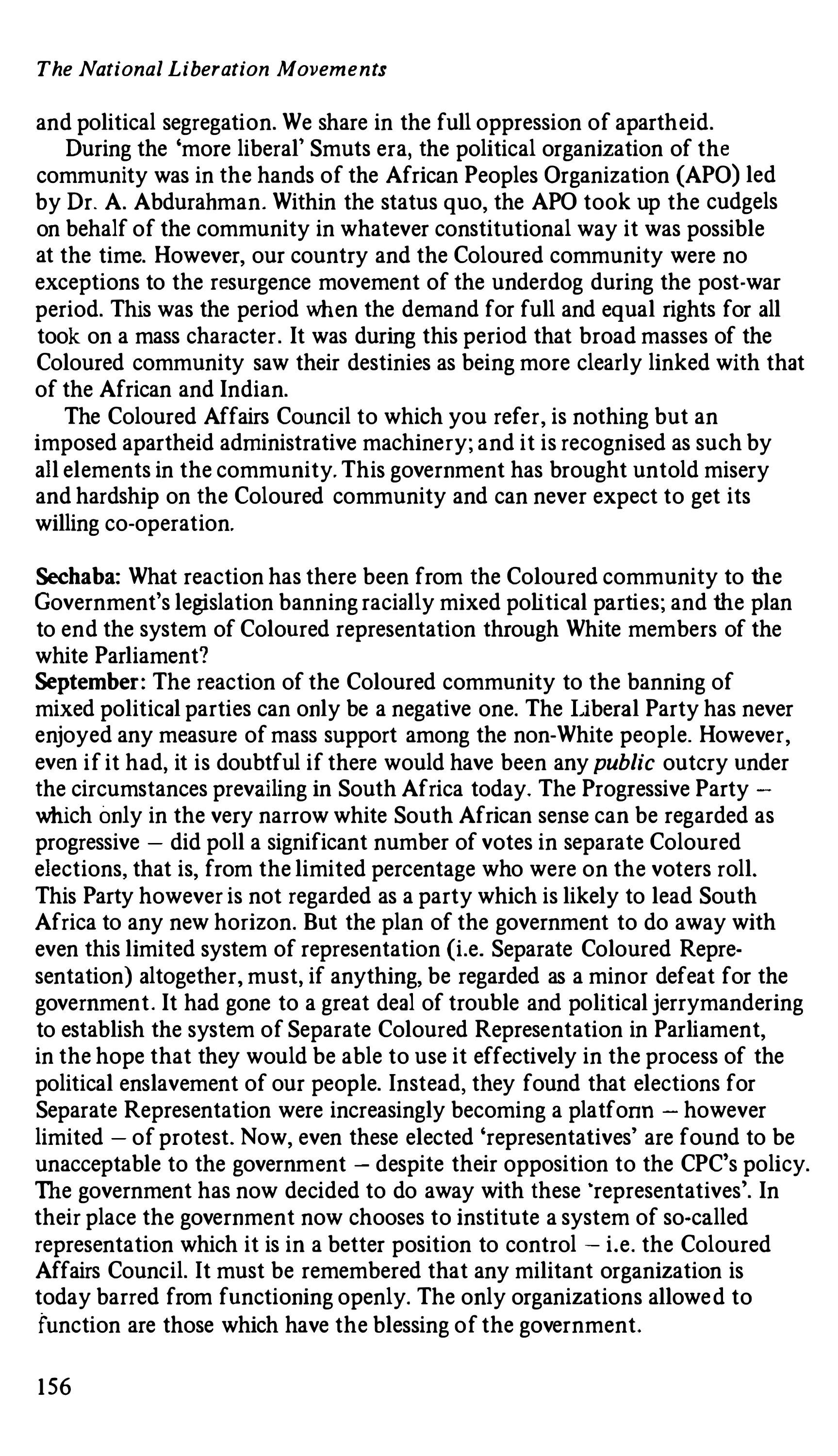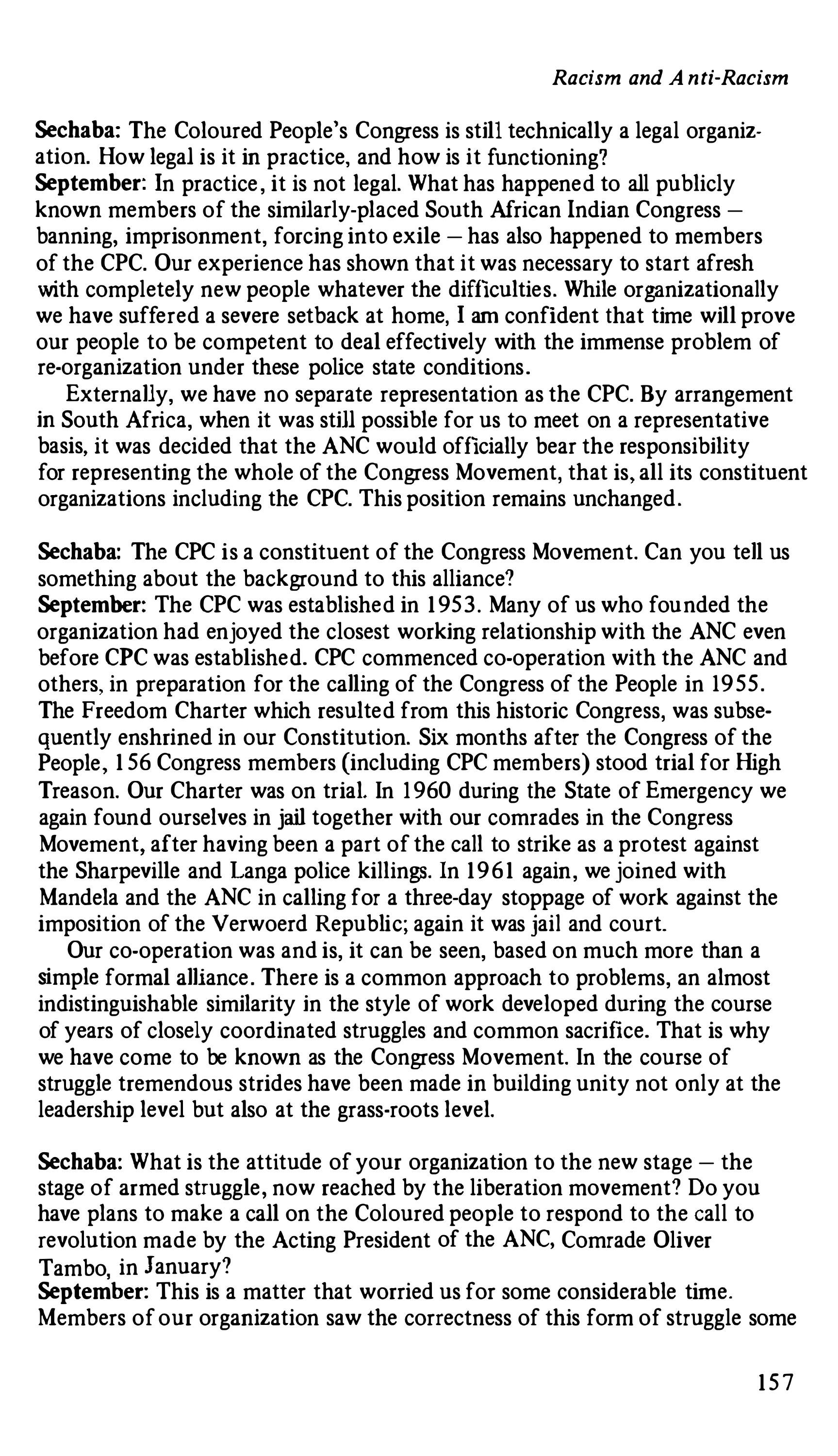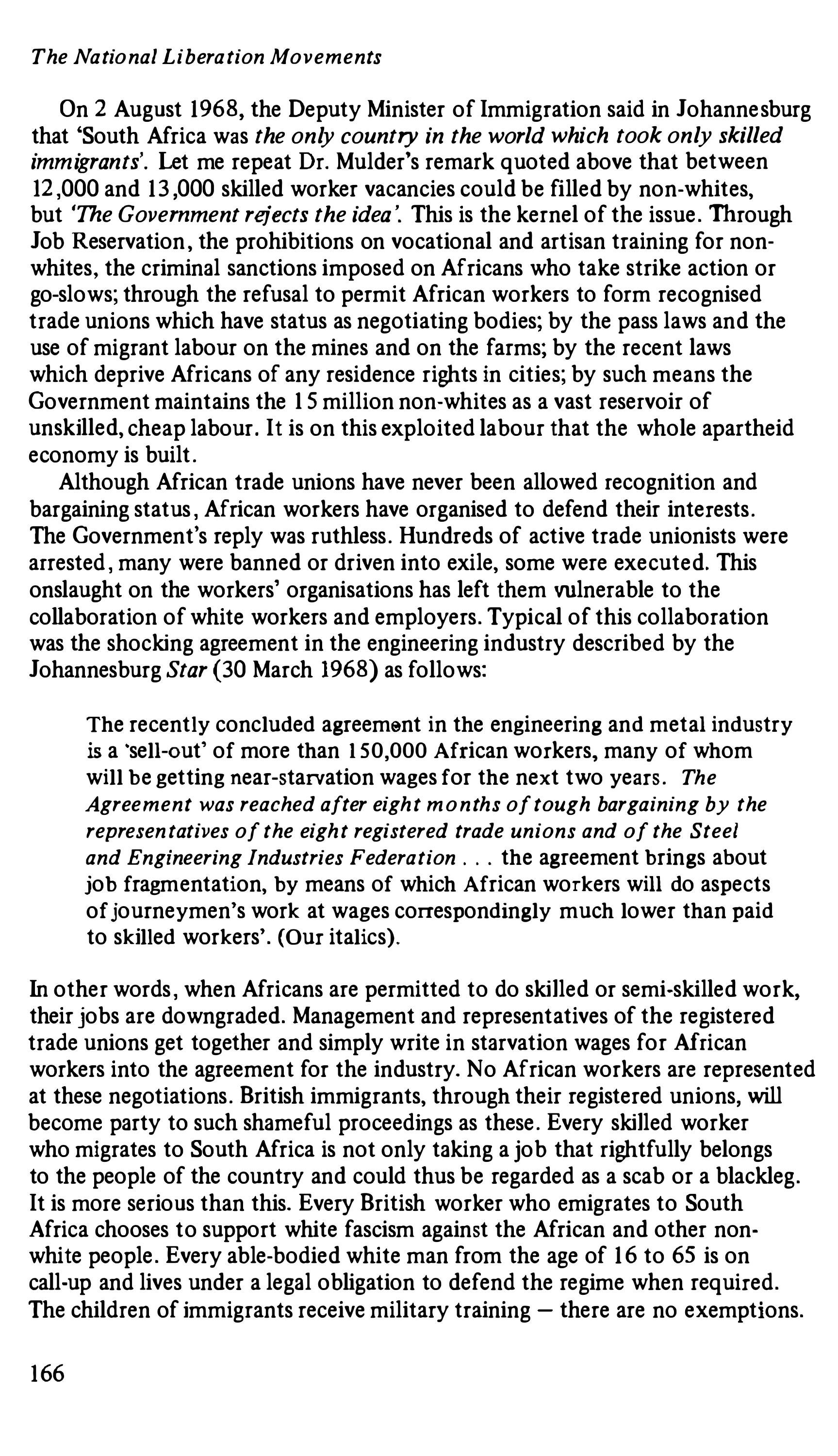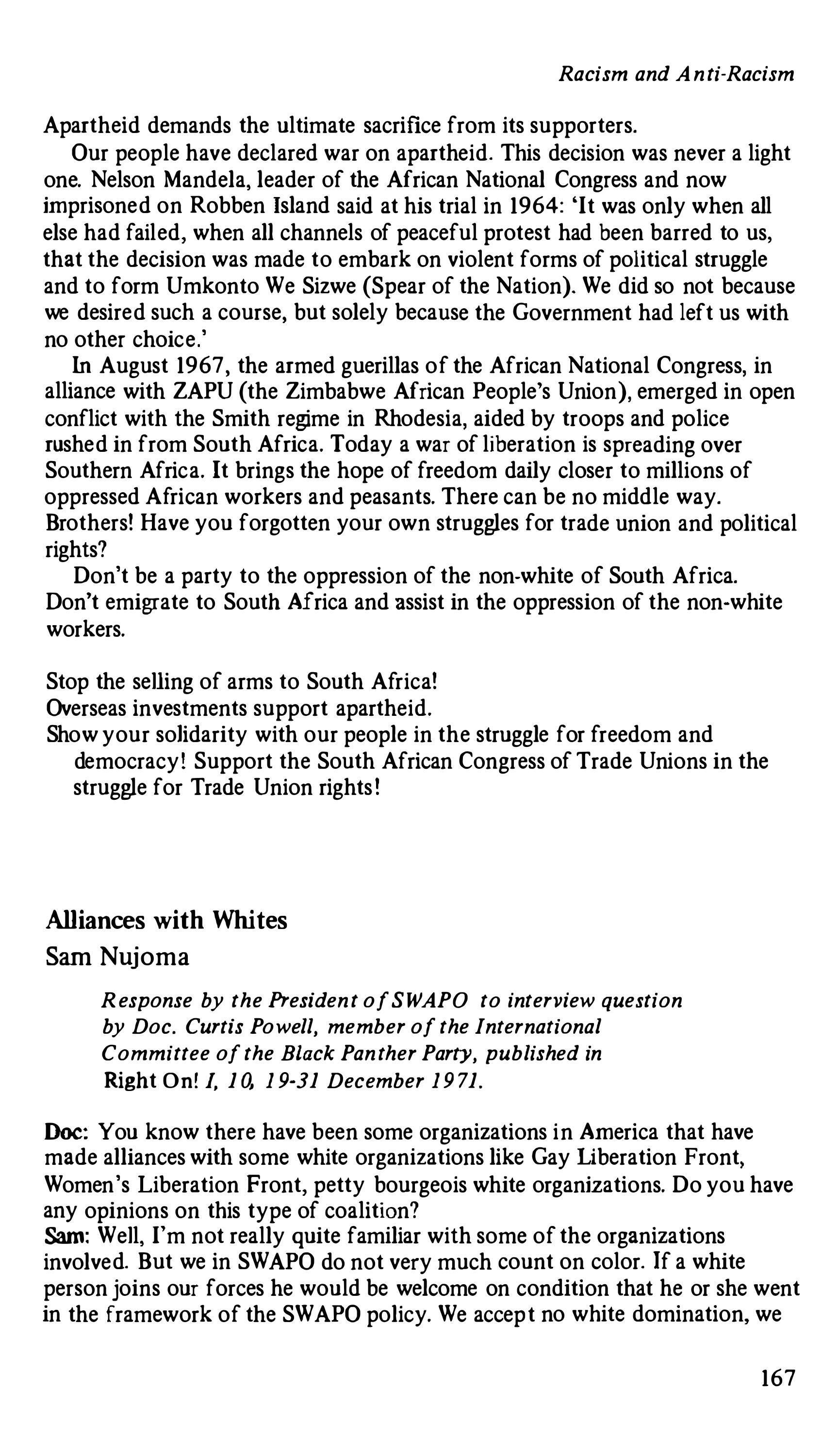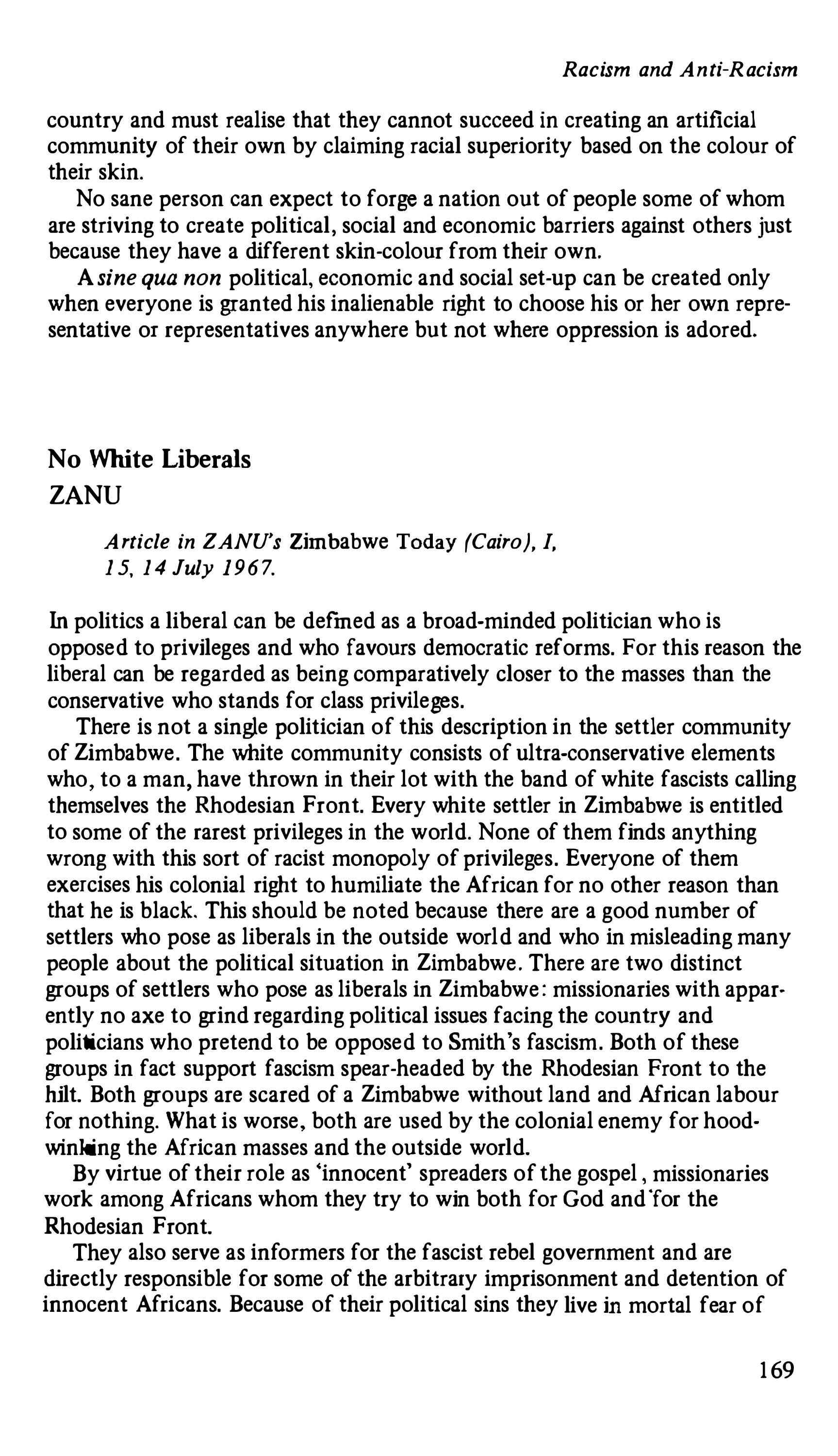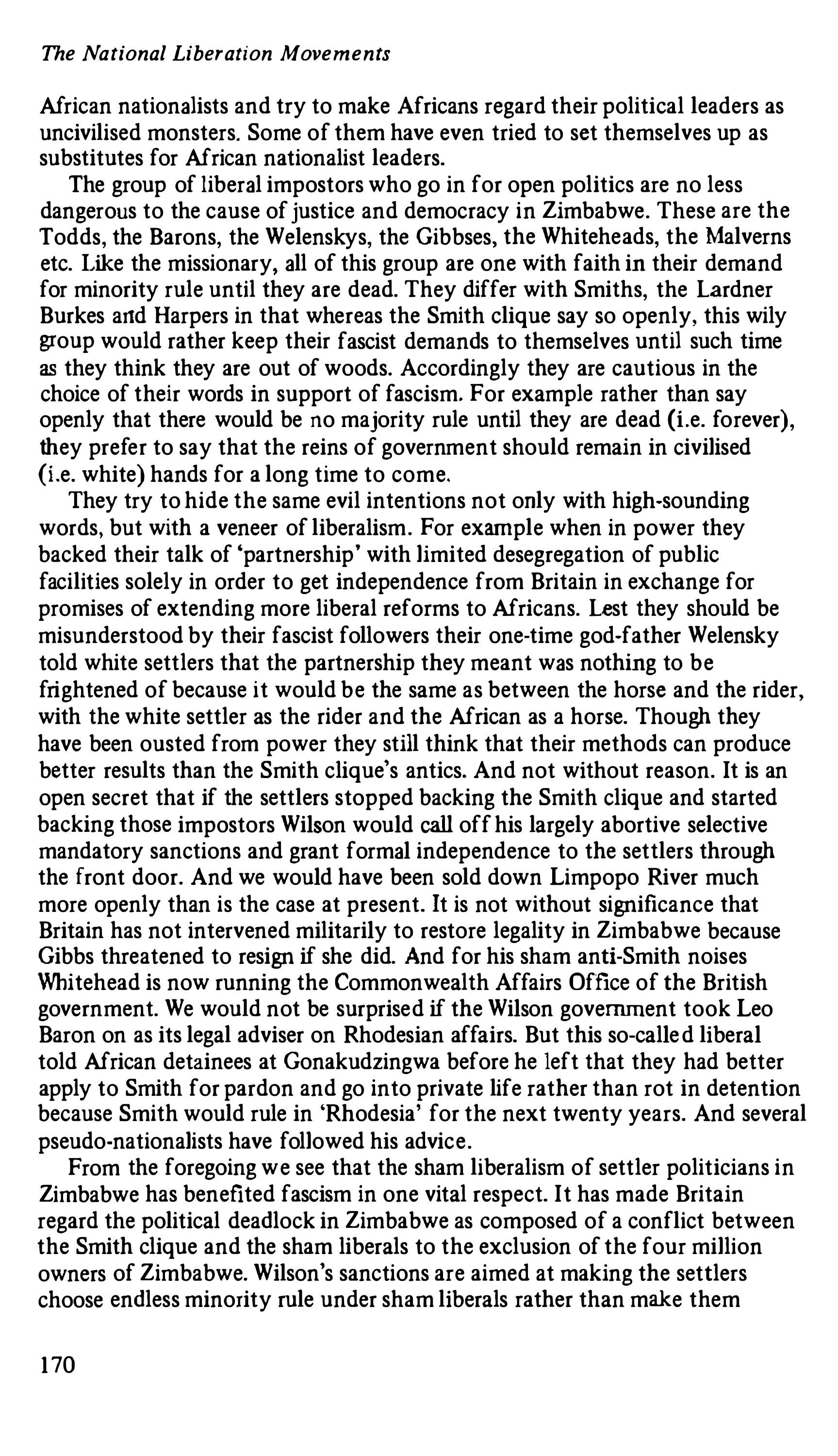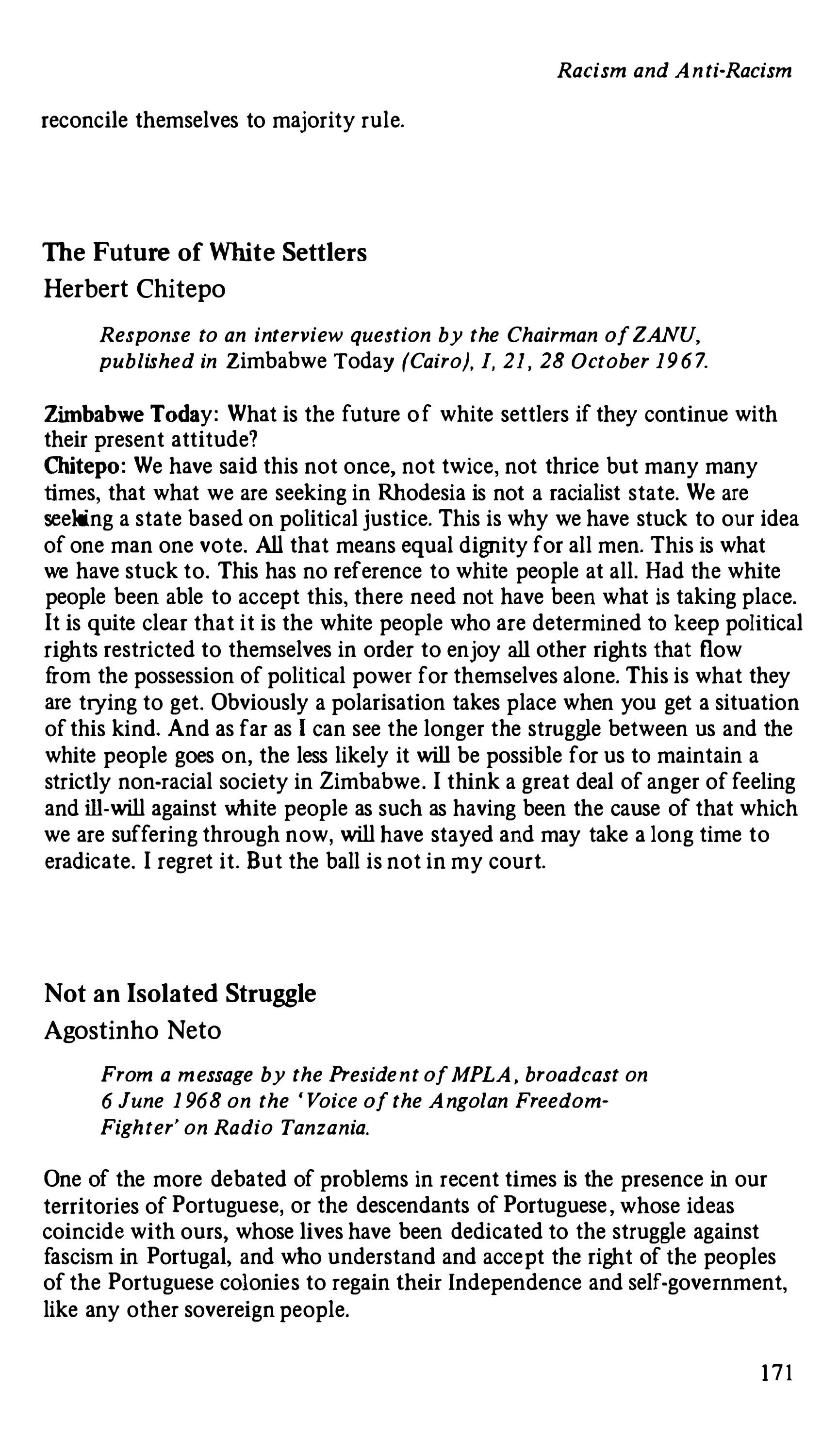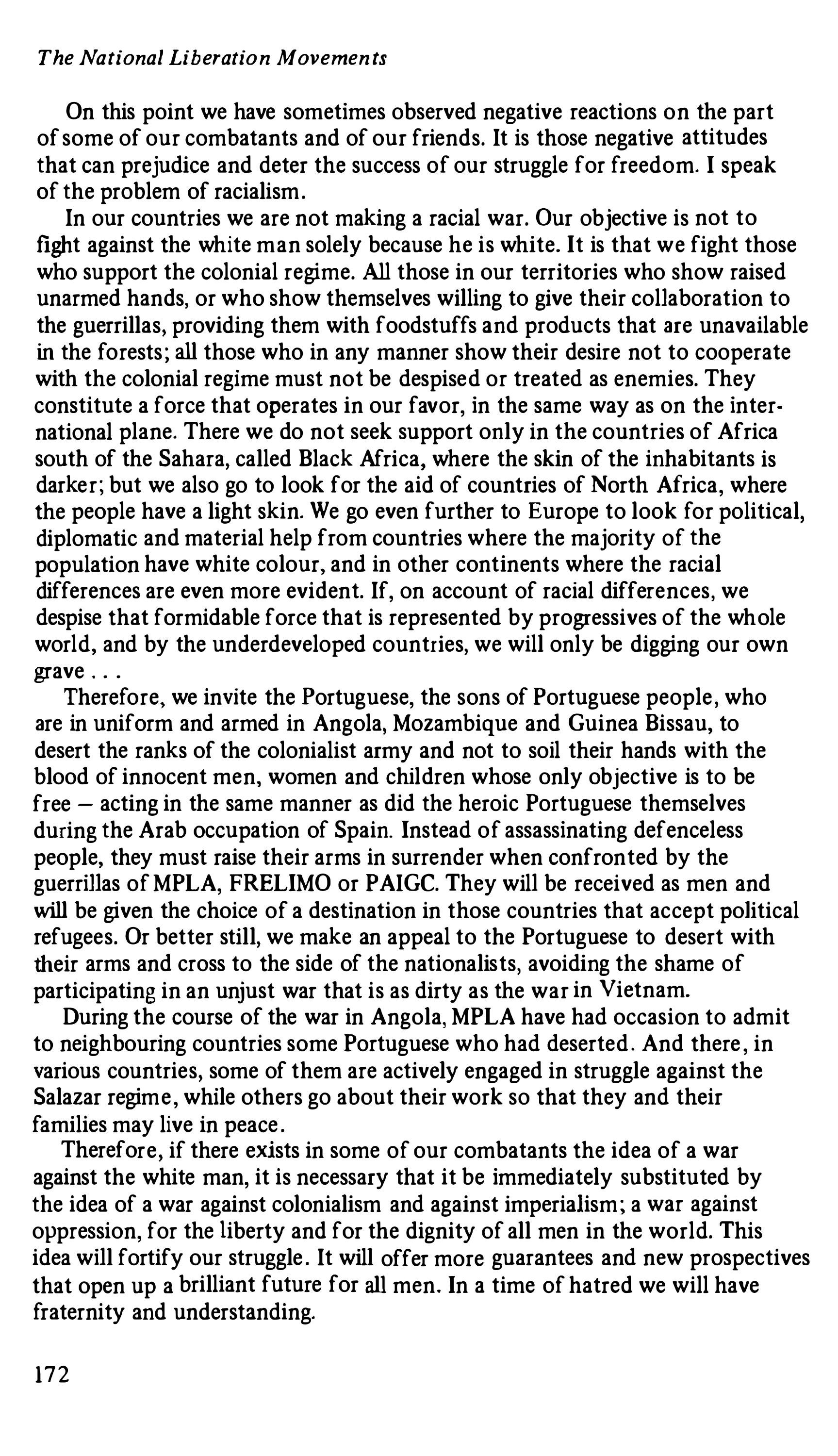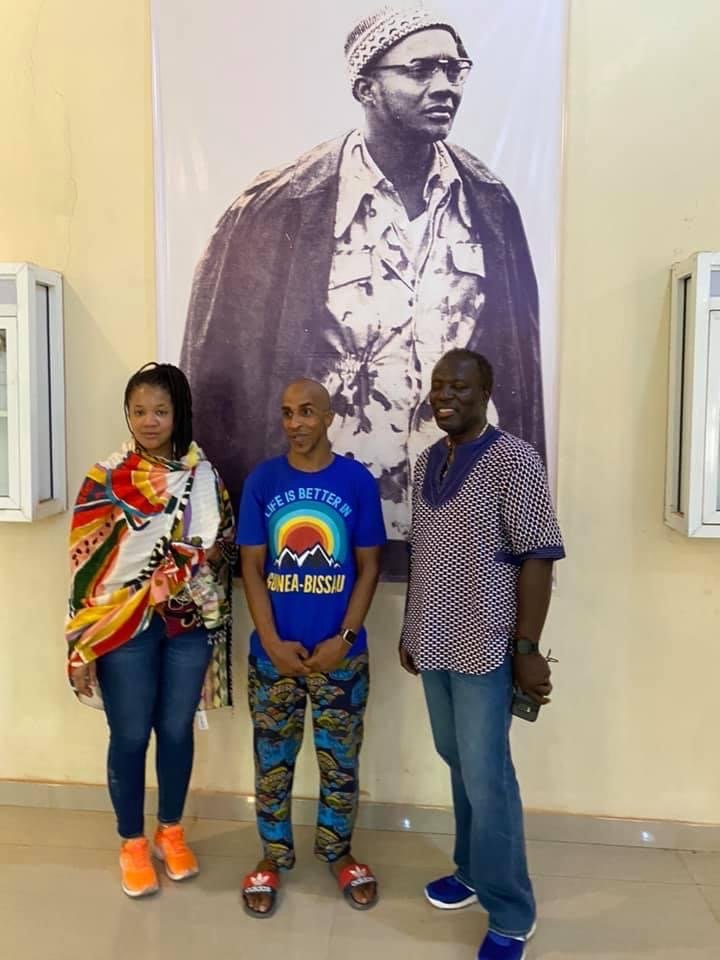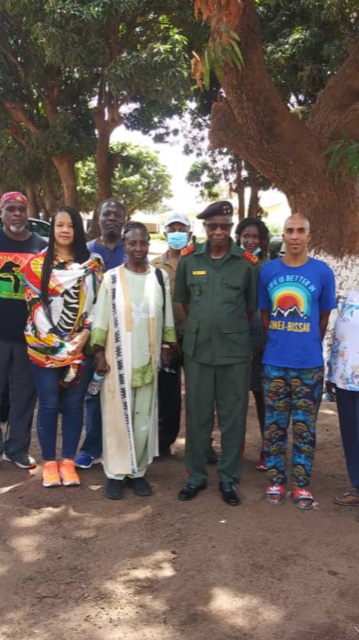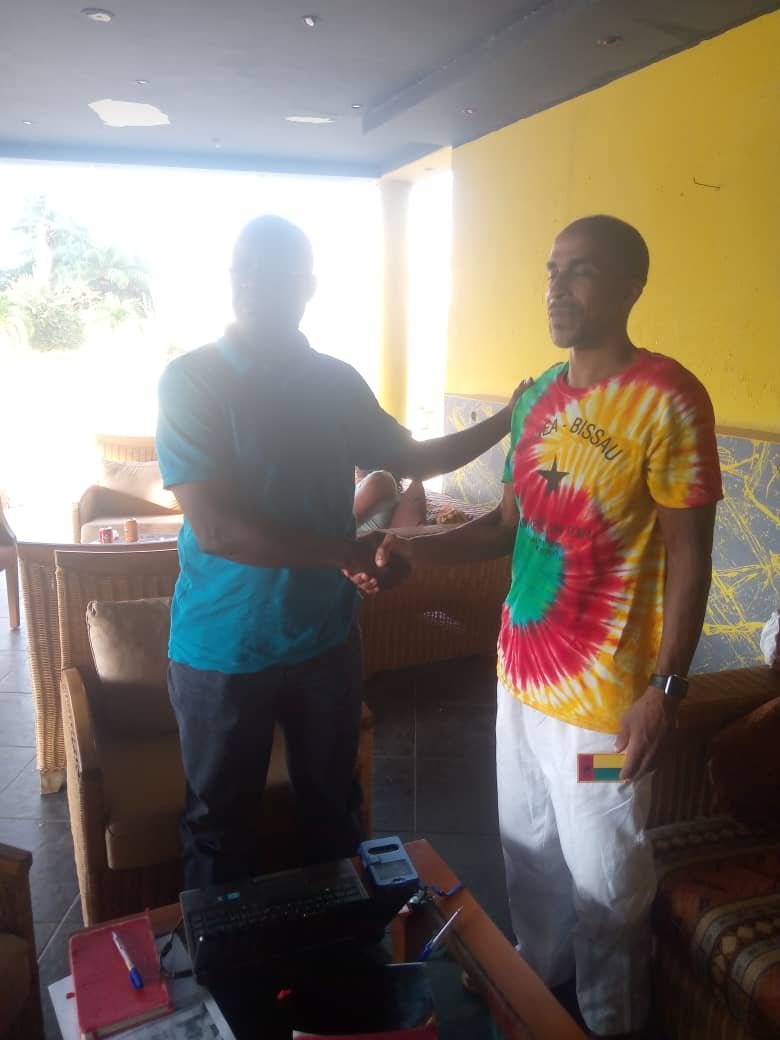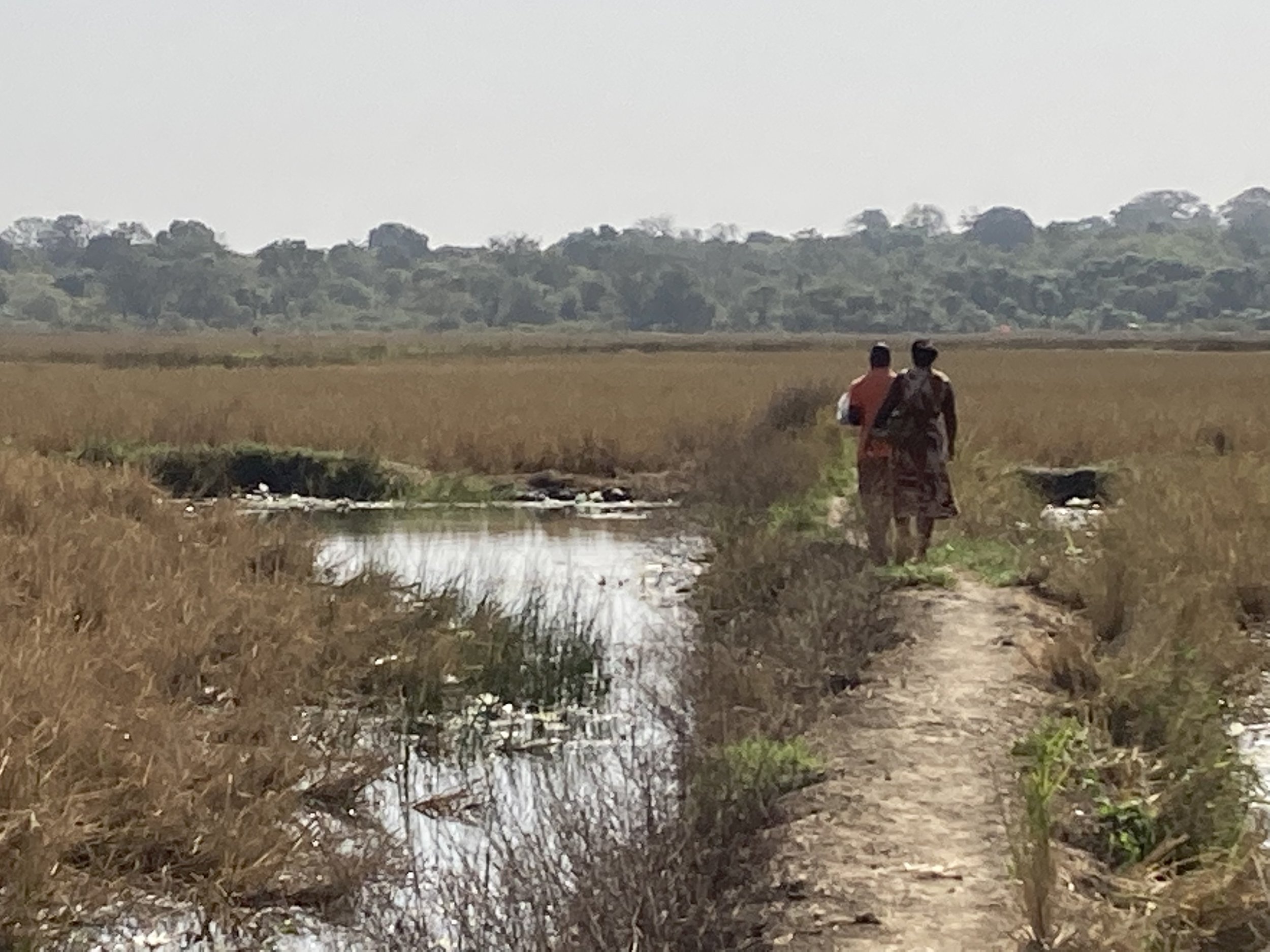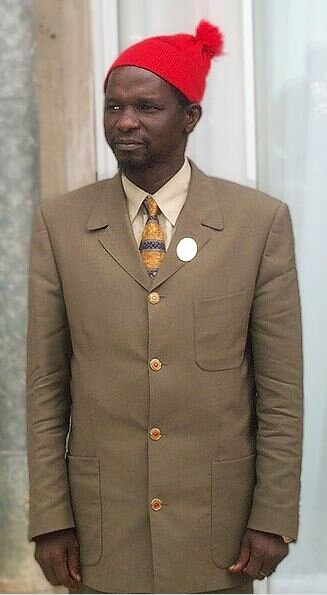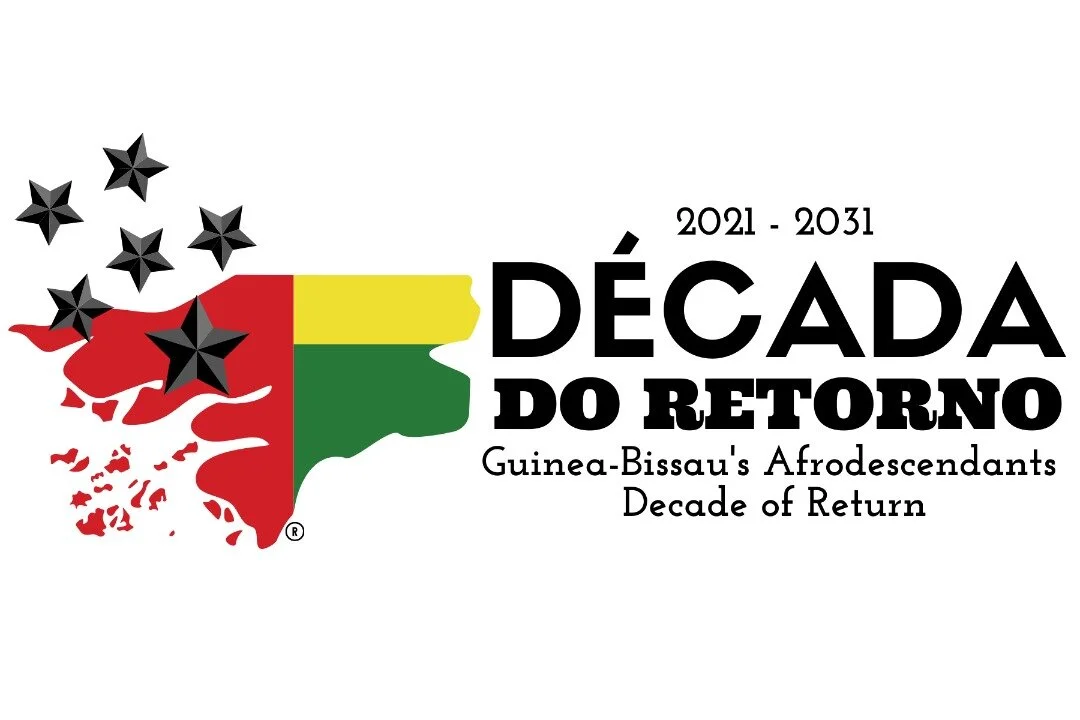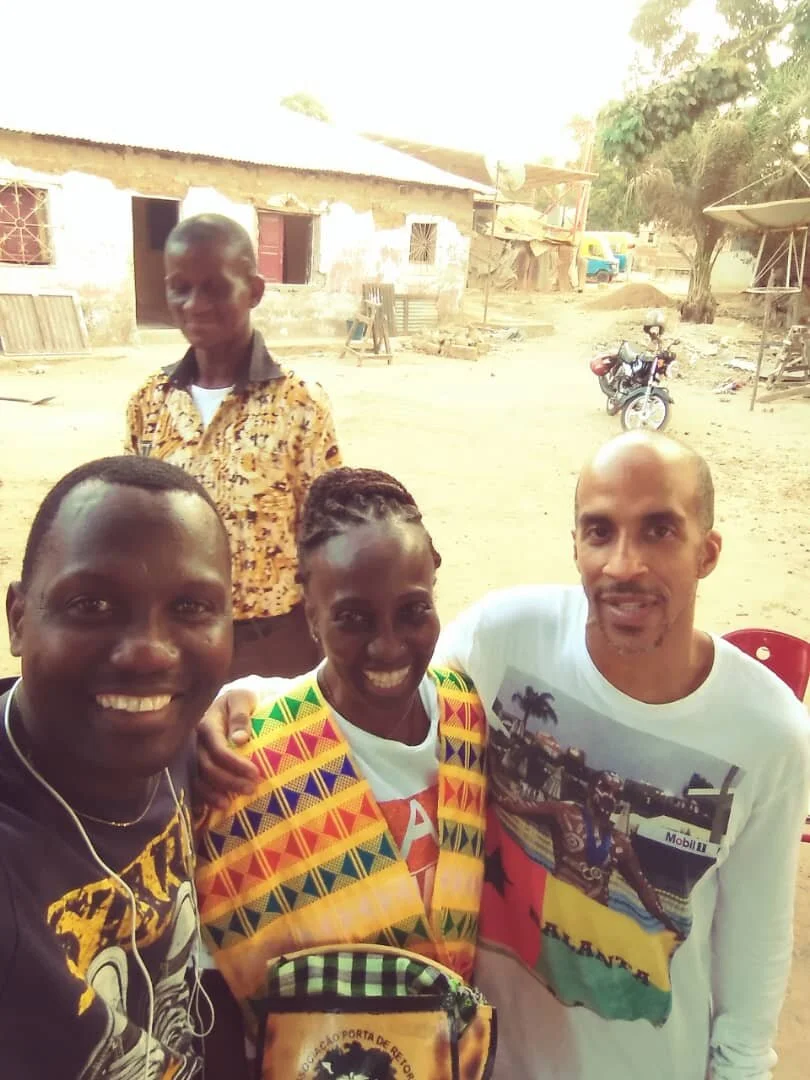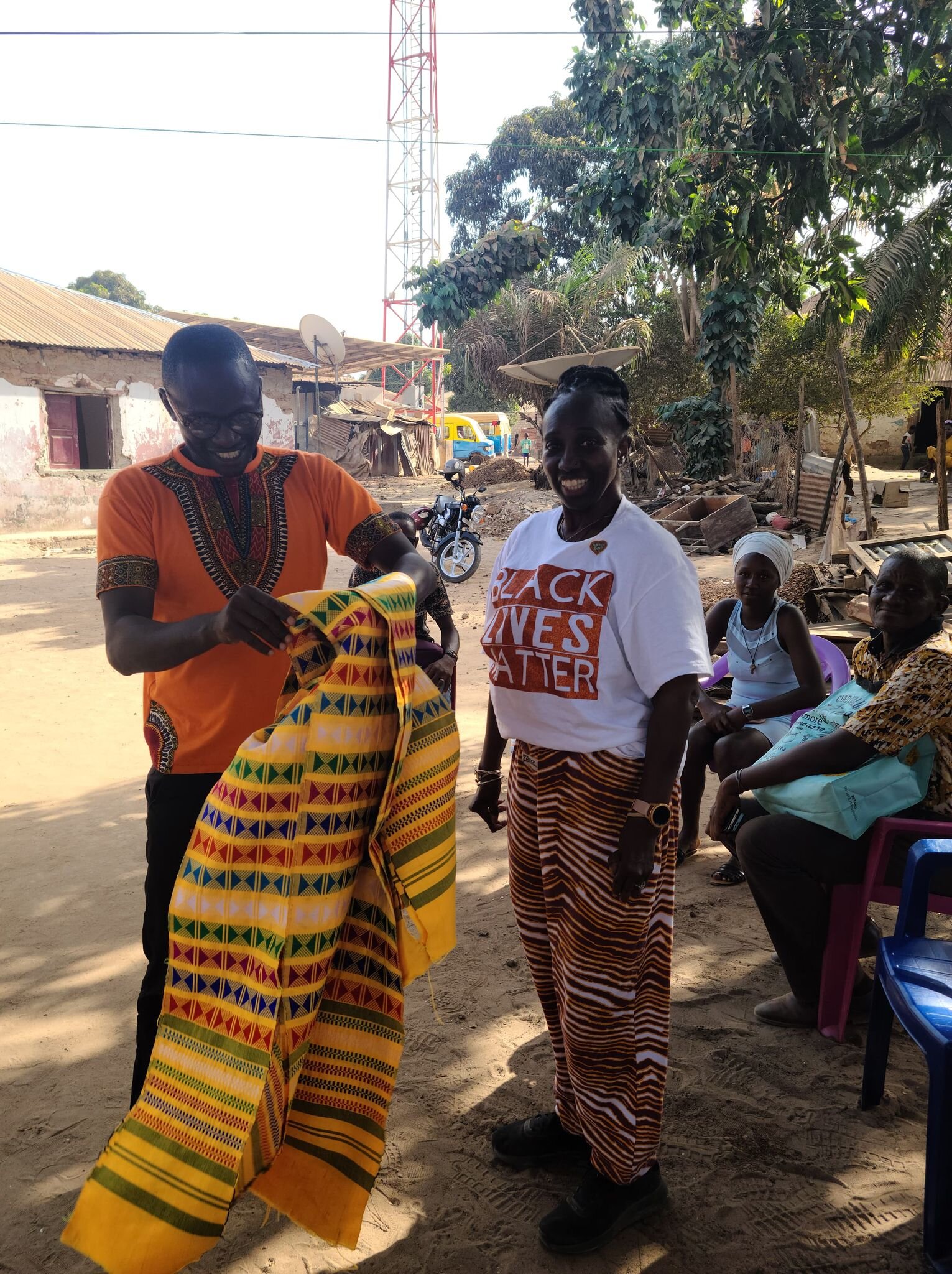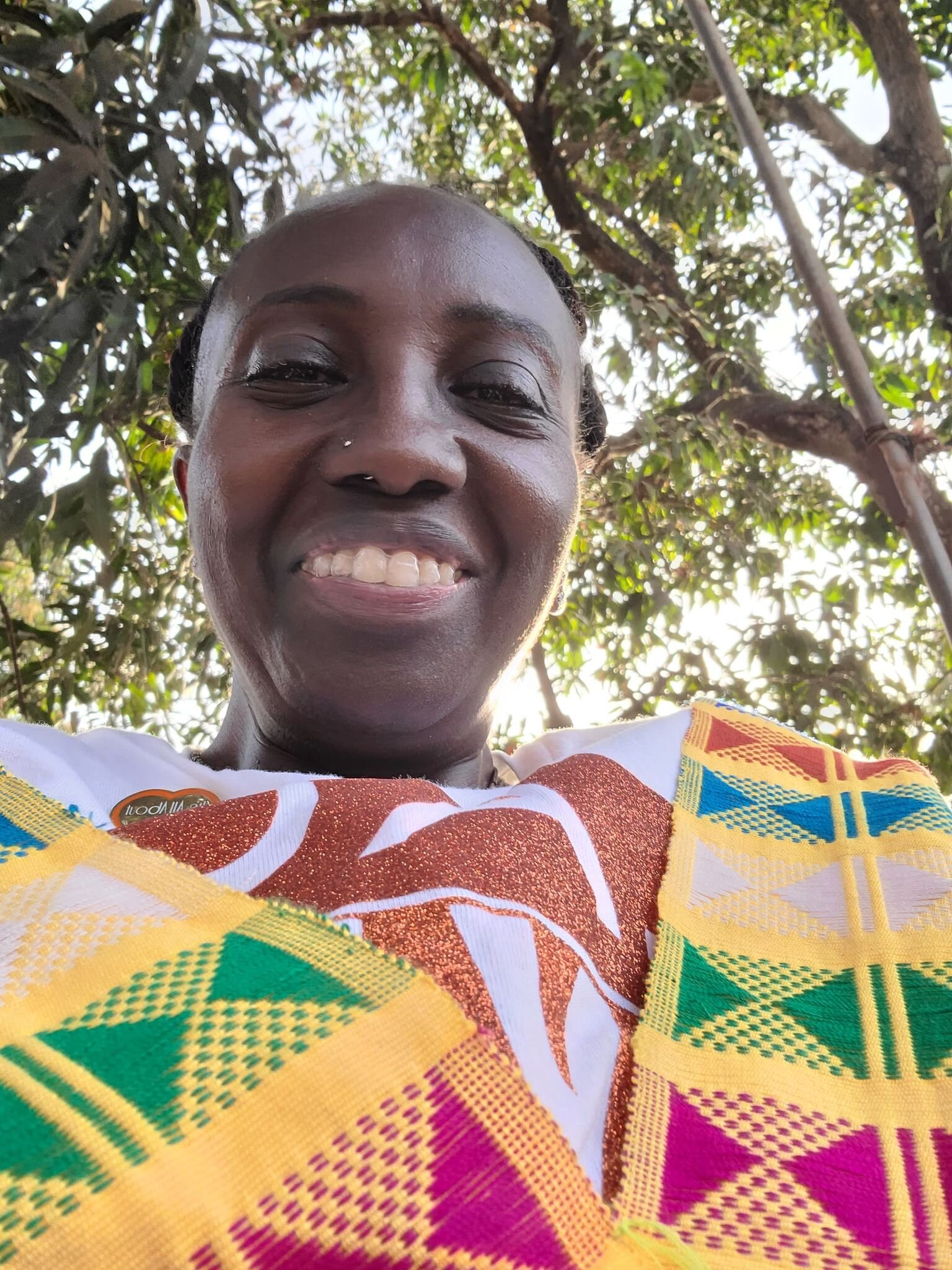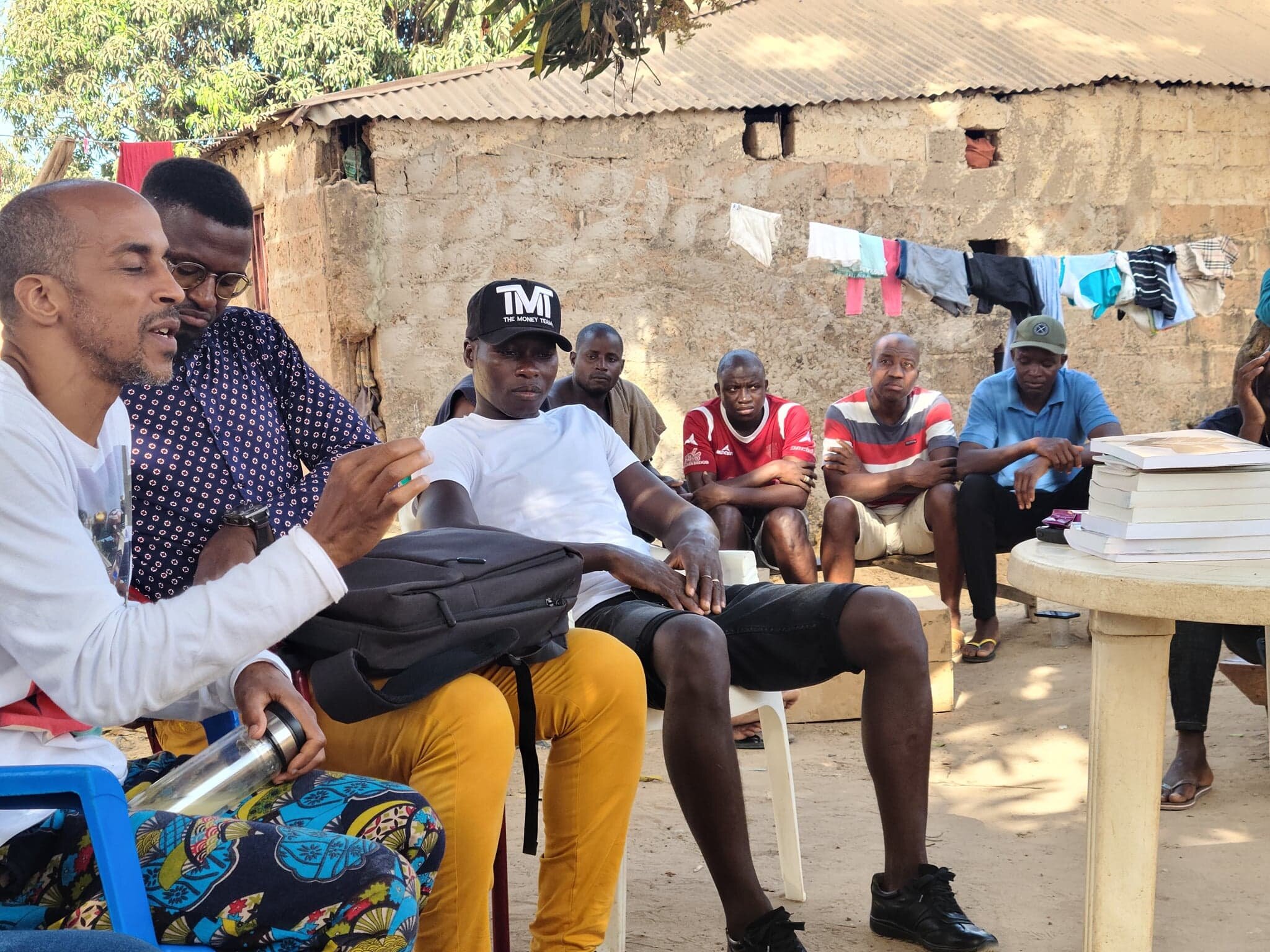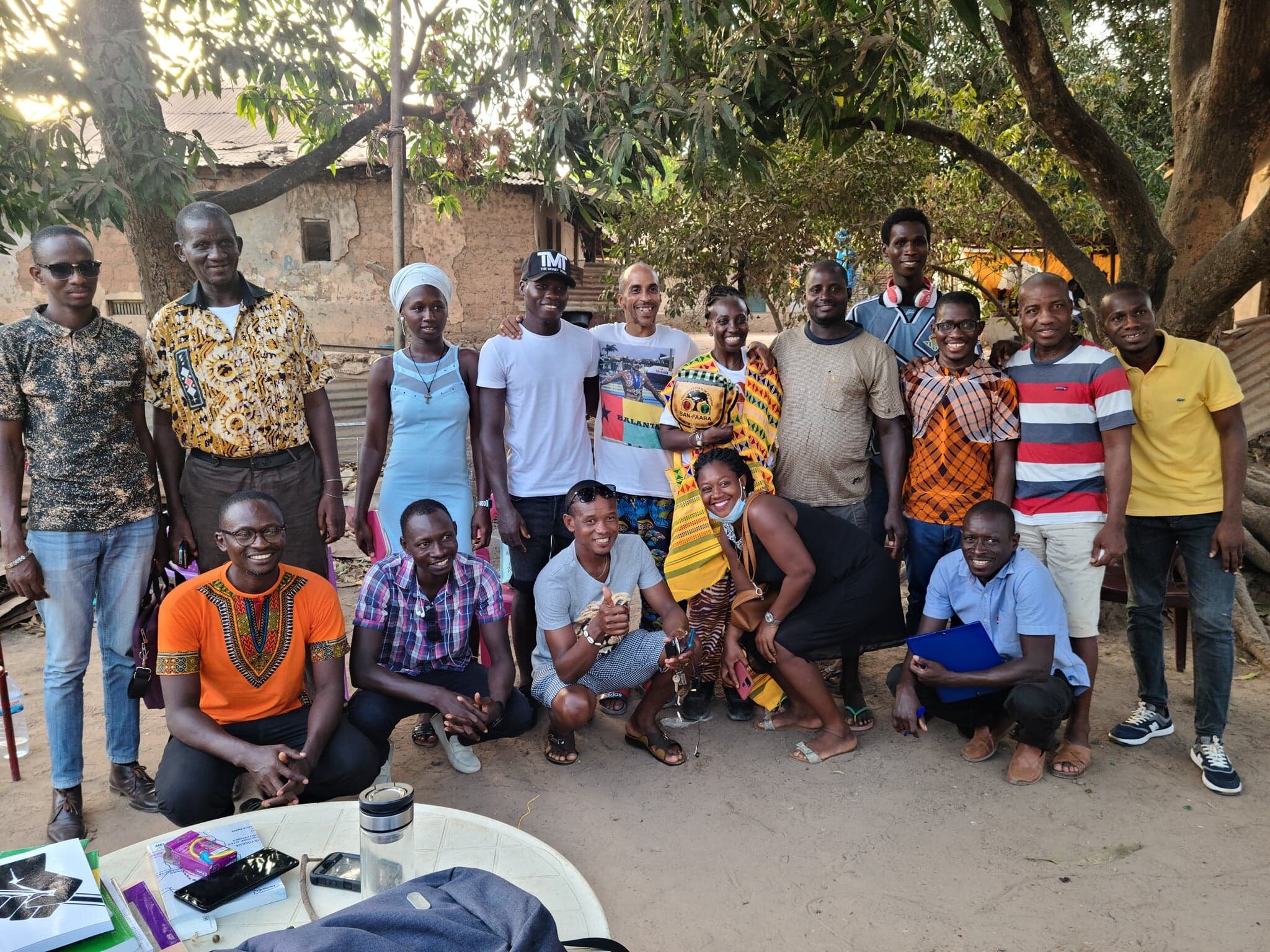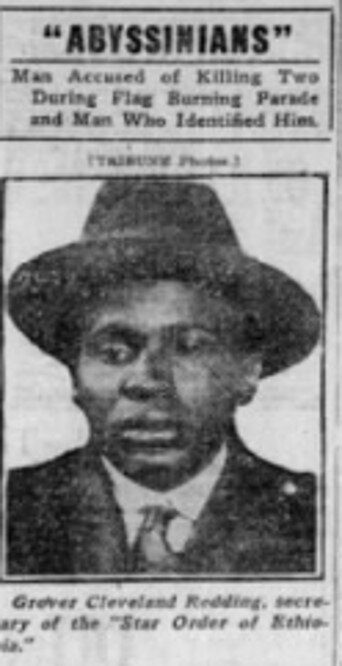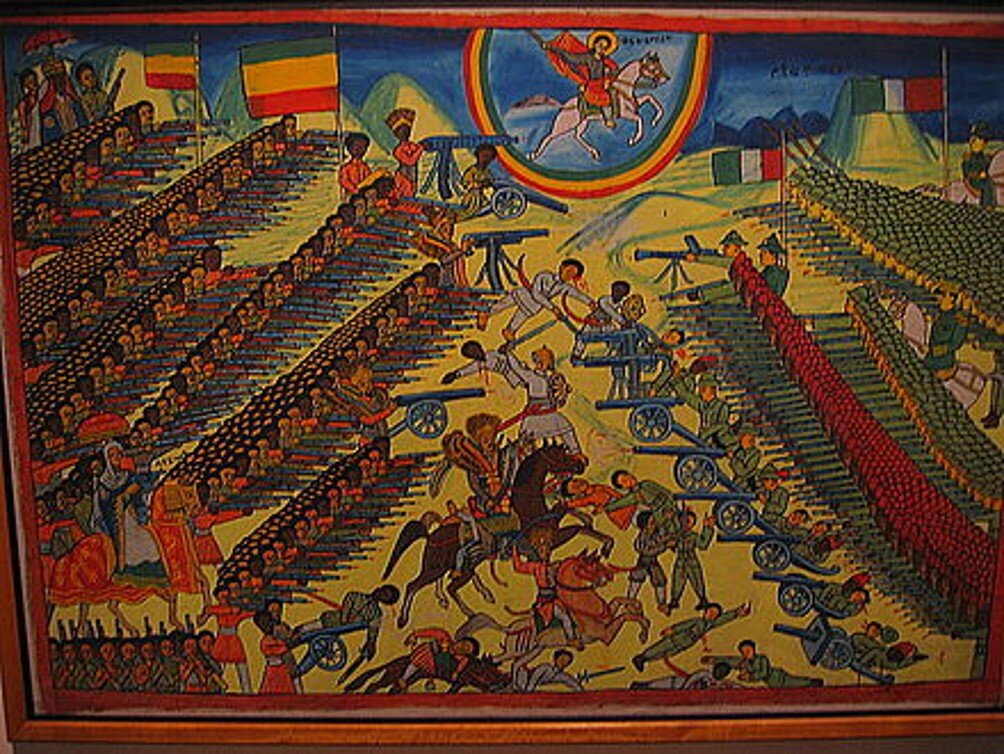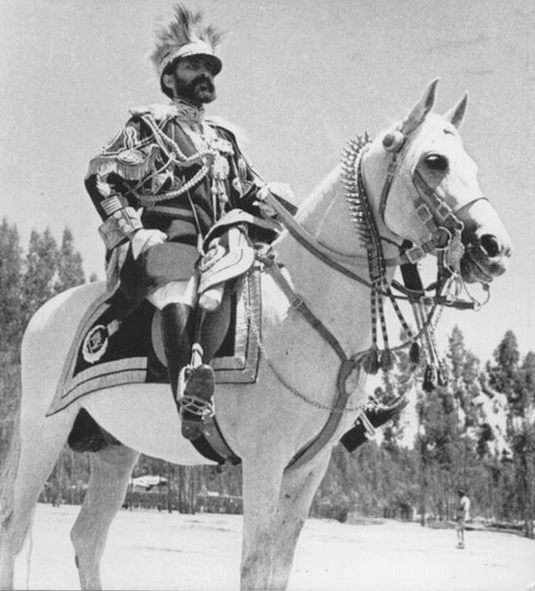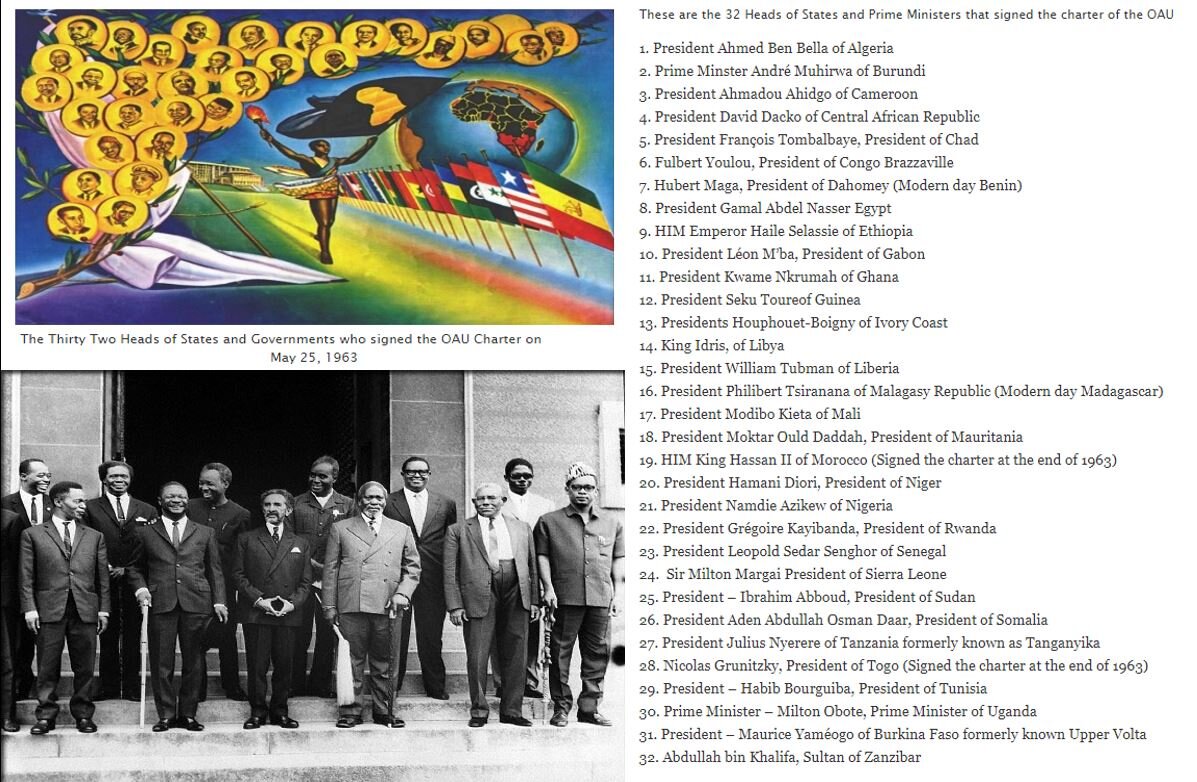CELEBRATING THE INTERNATIONAL DAY FOR PEOPLE OF AFRICAN DESCENT AND THE 102nd ANNIVERSARY OF THE UNIA'S "DECLARATION OF THE RIGHTS OF THE NEGRO PEOPLES OF THE WORLD"
“We proclaim the 31st day of August of each year to be an international holiday to be observed by all Negroes.”
- UNIA Declaration of the Rights of the Negro Peoples of the World, August 1920
August 31 is celebrated as the International Day for People of African Descent as part of the International Decade for People of African Descent. August 31 is also the 102nd Anniversary of the Universal Negro Improvement Association (UNIA) “Declaration of the Rights of the Negro Peoples of the World.” It is with profound recognition that Marcus Garvey’s words have come to pass one hundred years later, and August 31 is, indeed, an international holiday observed by the entire world.
The Balanta B’urassa History and Genealogy Society of America commemorates these two historic efforts in pursuit of justice and preservation of the dignity of African people.
Universal Negro Improvement Association (UNIA)
“Declaration of the Rights of the Negro Peoples of the World”
August 31, 1920
Preamble
Be It Resolved, That the Negro people of the world, through their chosen representatives in convention assembled in Liberty Hall, in the City of New York and United States of America, from August 1 to August 31, in the year of Our Lord one thousand nine hundred and twenty, protest against the wrongs and injustices they are suffering at the hands of their white brethren, and state what they deem their fair and just rights, as well as the treatment they propose to demand of all men in the future.
We complain:
1. That nowhere in the world, with few exceptions, are black men accorded equal treatment with white men, although in the same situation and circumstances, but, on the contrary, are discriminated against and denied the common rights due to human beings for no other reason than their race and color.
We are not willingly accepted as guests in the public hotels and inns of the world for no other reason than our race and color.
2. In certain parts of the United States of America our race is denied the right of public trial accorded to other races when accused of crime, but are lynched and burned by mobs, and such brutal and inhuman treatment is even practiced upon our women.
3. That European nations have parcelled out among them and taken possession of nearly all of the continent of Africa, and the natives are compelled to surrender their lands to aliens and are treated in most instances like slaves.
4. In the southern portion of the United States of America, although citizens under the Federal Constitution, and in some States almost equal to the whites in population and are qualified land owners and taxpayers, we are, nevertheless, denied all voice in the making and administration of the laws and are taxed without representation by the State governments, and at the same time compelled to do military service in defense of the country.
5. On the public conveyances and common carriers in the southern portion of the United States we are jim-crowed and compelled to accept separate and inferior accommodations and made to pay the same fare charged for first-class accommodations, and our families are often humiliated and insulted by drunken white men who habitually pass through the jim-crow cars going to the smoking car.
6. The physicians of our race are denied the right to attend their patients while in the public hospitals of the cities and States where they reside in certain parts of the United States.
Our children are forced to attend inferior separate schools for shorter terms than white children, and the public school funds are unequally divided between the white and colored schools.
7. We are discriminated against and denied an equal chance to earn wages for the support of our families, and in many instances are refused admission into labor unions and nearly everywhere are paid smaller wages than white men.
8. In the Civil Service and departmental offices we are everywhere discriminated against and made to feel that to be a black man in Europe, America and the West Indies is equivalent to being an outcast and a leper among the races of men, no matter what the character attainments of the black men may be.
9. In the British and other West Indian islands and colonies Negroes are secretly and cunningly discriminated against and denied those fuller rights of government to which white citizens are appointed, nominated and elected.
10. That our people in those parts are forced to work for lower wages than the average standard of white men and are kept in conditions repugnant to good civilized tastes and customs.
11. That the many acts of injustices against members of our race before the courts of law in the respective islands and colonies are of such nature as to create disgust and disrespect for the white man’s sense of justice.
12. Against all such inhuman, unchristian and uncivilized treatment we here and now emphatically protest, and invoke the condemnation of all mankind.
In order to encourage our race all over the world and to stimulate it to overcome the handicaps and difficulties surrounding it, and to push forward to a higher and grander destiny, we demand and insist on the following Declaration of Rights:
1. Be it known to all men that whereas all men are created equal and entitled to the rights of life, liberty and the pursuit of happiness, and because of this we, the duly elected representatives of the Negro peoples of the world, invoking the aid of the just and Almighty God, do declare all men, women and children of our blood throughout the world free denizens, and do claim them as free citizens of Africa, the Motherland of all Negroes.
2. That we believe in the supreme authority of our race in all things racial; that all things are created and given to man as a common possession; that there should be an equitable distribution and apportionment of all such things, and in consideration of the fact that as a race we are now deprived of those things that are morally and legally ours, we believed it right that all such things should be acquired and held by whatsoever means possible.
3. That we believe the Negro, like any other race, should be governed by the ethics of civilization, and therefore should not be deprived of any of those rights or privileges common to other human beings.
4. We declare that Negroes, wheresoever they form a community among themselves should be given the right to elect their own representatives to represent them in Legislatures, courts of law, or such institutions as may exercise control over that particular community.
5. We assert that the Negro is entitled to even-handed justice before all courts of law and equity in whatever country he may be found, and when this is denied him on account of his race or color such denial is an insult to the race as a whole and should be resented by the entire body of Negroes.
6. We declare it unfair and prejudicial to the rights of Negroes in communities where they exist in considerable numbers to be tried by a judge and jury composed entirely of an alien race, but in all such cases members of our race are entitled to representation on the jury.
7. We believe that any law or practice that tends to deprive any African of his land or the privileges of free citizenship within his country is unjust and immoral, and no native should respect any such law or practice.
8. We declare taxation without representation unjust and tyran[n]ous, and there should be no obligation on the part of the Negro to obey the levy of a tax by any law-making body from which he is excluded and denied representation on account of his race and color.
9. We believe that any law especially directed against the Negro to his detriment and singling him out because of his race or color is unfair and immoral, and should not be respected.
10. We believe all men entitled to common human respect and that our race should in no way tolerate any insults that may be interpreted to mean disrespect to our race or color.
11. We deprecate the use of the term “nigger” as applied to Negroes, and demand that the word “Negro” be written with a capital “N.”
12. We believe that the Negro should adopt every means to protect himself against barbarous practices inflicted upon him because of color.
13. We believe in the freedom of Africa for the Negro people of the world, and by the principle of Europe for the Europeans and Asia for the Asiatics, we also demand Africa for the Africans at home and abroad.
14. We believe in the inherent right of the Negro to possess himself of Africa and that his possession of same shall not be regarded as an infringement of any claim or purchase made by any race or nation.
15. We strongly condemn the cupidity of those nations of the world who, by open aggression or secret schemes, have seized the territories and inexhaustible natural wealth of Africa, and we place on record our most solemn determination to reclaim the treasures and possession of the vast continent of our forefathers.
16. We believe all men should live in peace one with the other, but when races and nations provoke the ire of other races and nations by attempting to infringe upon their rights[,] war becomes inevitable, and the attempt in any way to free one’s self or protect one’s rights or heritage becomes justifiable.
17. Whereas the lynching, by burning, hanging or any other means, of human beings is a barbarous practice and a shame and disgrace to civilization, we therefore declare any country guilty of such atrocities outside the pale of civilization.
18. We protest against the atrocious crime of whipping, flogging and overworking of the native tribes of Africa and Negroes everywhere. These are methods that should be abolished and all means should be taken to prevent a continuance of such brutal practices.
19. We protest against the atrocious practice of shaving the heads of Africans, especially of African women or individuals of Negro blood, when placed in prison as a punishment for crime by an alien race.
10. We protest against segregated districts, separate public conveyances, industrial discrimination, lynchings and limitations of political privileges of any Negro citizen in any part of the world on account of race, color or creed, and will exert our full influence and power against all such.
21. We protest against any punishment inflicted upon a Negro with severity, as against lighter punishment inflicted upon another of an alien race for like offense, as an act of prejudice and injustice, and should be resented by the entire race.
22. We protest against the system of education in any country where Negroes are denied the same privileges and advantages as other races.
23. We declare it inhuman and unfair to boycott Negroes from industries and labor in any part of the world.
24. We believe in the doctrine of the freedom of the press, and we therefore emphatically protest against the suppression of Negro newspapers and periodicals in various parts of the world, and call upon Negroes everywhere to employ all available means to prevent such suppression.
25. We further demand free speech universally for all men.
26. We hereby protest against the publication of scandalous and inflammatory articles by an alien press tending to create racial strife and the exhibition of picture films showing the Negro as a cannibal.
27. We believe in the self-determination of all peoples.
28. We declare for the freedom of religious worship.
29. With the help of Almighty God we declare ourselves the sworn protectors of the honor and virtue of our women and children, and pledge our lives for their protection and defense everywhere and under all circumstances from wrongs and outrages.
30. We demand the right of an unlimited and unprejudiced education for ourselves and our posterity forever[.]
31. We declare that the teaching in any school by alien teachers to our boys and girls, that the alien race is superior to the Negro race, is an insult to the Negro people of the world.
32. Where Negroes form a part of the citizenry of any country, and pass the civil service examination of such country, we declare them entitled to the same consideration as other citizens as to appointments in such civil service.
33. We vigorously protest against the increasingly unfair and unjust treatment accorded Negro travelers on land and sea by the agents and employee of railroad and steamship companies, and insist that for equal fare we receive equal privileges with travelers of other races.
34. We declare it unjust for any country, State or nation to enact laws tending to hinder and obstruct the free immigration of Negroes on account of their race and color.
35. That the right of the Negro to travel unmolested throughout the world be not abridged by any person or persons, and all Negroes are called upon to give aid to a fellow Negro when thus molested.
36. We declare that all Negroes are entitled to the same right to travel over the world as other men.
37. We hereby demand that the governments of the world recognize our leader and his representatives chosen by the race to look after the welfare of our people under such governments.
38. We demand complete control of our social institutions without interference by any alien race or races.
39. That the colors, Red, Black and Green, be the colors of the Negro race.
40. Resolved, That the anthem “Ethiopia, Thou Land of Our Fathers etc.,” shall be the anthem of the Negro race. . . .
41. We believe that any limited liberty which deprives one of the complete rights and prerogatives of full citizenship is but a modified form of slavery.
42. We declare it an injustice to our people and a serious Impediment to the health of the race to deny to competent licensed Negro physicians the right to practice in the public hospitals of the communities in which they reside, for no other reason than their race and color.
43. We call upon the various government[s] of the world to accept and acknowledge Negro representatives who shall be sent to the said governments to represent the general welfare of the Negro peoples of the world.
44. We deplore and protest against the practice of confining juvenile prisoners in prisons with adults, and we recommend that such youthful prisoners be taught gainful trades under human[e] supervision.
45. Be it further resolved, That we as a race of people declare the League of Nations null and void as far as the Negro is concerned, in that it seeks to deprive Negroes of their liberty.
46. We demand of all men to do unto us as we would do unto them, in the name of justice; and we cheerfully accord to all men all the rights we claim herein for ourselves.
47. We declare that no Negro shall engage himself in battle for an alien race without first obtaining the consent of the leader of the Negro people of the world, except in a matter of national self-defense.
48. We protest against the practice of drafting Negroes and sending them to war with alien forces without proper training, and demand in all cases that Negro soldiers be given the same training as the aliens.
49. We demand that instructions given Negro children in schools include the subject of “Negro History,” to their benefit.
50. We demand a free and unfettered commercial intercourse with all the Negro people of the world.
51. We declare for the absolute freedom of the seas for all peoples.
52. We demand that our duly accredited representatives be given proper recognition in all leagues, conferences, conventions or courts of international arbitration wherever human rights are discussed.
53. We proclaim the 31st day of August of each year to be an international holiday to be observed by all Negroes.
54. We want all men to know that we shall maintain and contend for the freedom and equality of every man, woman and child of our race, with our lives, our fortunes and our sacred honor.
These rights we believe to be justly ours and proper for the protection of the Negro race at large, and because of this belief we, on behalf of the four hundred million Negroes of the world, do pledge herein the sacred blood of the race in defense, and we hereby subscribe our names as a guarantee of the truthfulness and faithfulness hereof, in the presence of Almighty God, on this 13th day of August, in the year of our Lord one thousand nine hundred and twenty.
Source: UNIA Declaration of Rights of the Negro Peoples of the World, New York, August 13, 1920. Reprinted in Robert Hill, ed., The Marcus Garvey and Universal Negro Improvement Papers, vol. 2 (Berkeley, University of California Press, 1983), 571–580.
Marcus Garvey, Explanation of the Objects of the Universal Negro Improvement Association - 1921
Inspired by the writings of Booker T. Washington, Jamaican-born Marcus Garvey became the most prominent Black Nationalist in the United States. He championed the back-to-Africa movement, advocated for Black-owned businesses—he founded the Black Star Line, a transnational shipping company—and founded the Universal Negro Improvement Association. Thousands of UNIA chapters formed all across the world. In 1921, Garvey recorded a message in a New York studio explaining the object of the UNIA.
Fellow citizens of Africa, I greet you in the name of the Universal Negro Improvement Association and African Communities League of the World. You may ask, “what organization is that?” It is for me to inform you that the Universal Negro Improvement Association is an organization that seeks to unite, into one solid body, the four hundred million Negroes in the world. To link up the fifty million Negroes in the United States of America, with the twenty million Negroes of the West Indies, the forty million Negroes of South and Central America, with the two hundred and eighty million Negroes of Africa, for the purpose of bettering our industrial, commercial, educational, social, and political conditions.
As you are aware, the world in which we live today is divided into separate race groups and distinct nationalities. Each race and each nationality is endeavoring to work out its own destiny, to the exclusion of other races and other nationalities. We hear the cry of “England for the Englishman,” of “France for the Frenchman,” of “Germany for the German,” of “Ireland for the Irish,” of “Palestine for the Jew,” of “Japan for the Japanese,” of “China for the Chinese.”
We of the Universal Negro Improvement Association are raising the cry of “Africa for the Africans,” those at home and those abroad. There are 400 million Africans in the world who have Negro blood coursing through their veins, and we believe that the time has come to unite these 400 million people toward the one common purpose of bettering their condition.
The great problem of the Negro for the last 500 years has been that of disunity. No one or no organization ever succeeded in uniting the Negro race. But within the last four years, the Universal Negro Improvement Association has worked wonders. It is bringing together in one fold four million organized Negroes who are scattered in all parts of the world. Here in the 48 States of the American Union, all the West Indies islands, and the countries of South and Central America and Africa. These four million people are working to convert the rest of the four hundred million that are all over the world, and it is for this purpose, that we are asking you to join our land and to do the best you can to help us to bring about an emancipated race.
If anything praiseworthy is to be done, it must be done through unity, and it is for that reason that the Universal Negro Improvement Association calls upon every Negro in the United States to rally to this standard. We want to unite the Negro race in this country. We want every Negro to work for one common object, that of building a nation of his own on the great continent of Africa. That all Negroes all over the world are working for the establishment of a government in Africa means that it will be realized in another few years.
We want the moral and financial support of every Negro to make this dream a possibility. Our race, this organization, has established itself in Nigeria, West Africa, and it endeavors to do all possible to develop that Negro country to become a great industrial and commercial commonwealth.
Pioneers have been sent by this organization to Nigeria, and they are now laying the foundations upon which the four hundred million Negroes of the world will build. If you believe that the Negro has a soul, if you believe that the Negro is a man, if you believe the Negro was endowed with the senses commonly given to other men by the Creator, then you must acknowledge that what other men have done, Negroes can do. We want to build up cities, nations, governments, industries of our own in Africa, so that we will be able to have a chance to rise from the lowest to the highest position in the African Commonwealth.
[Source: Marcus Garvey, “Explanation of the Objects of the Universal Negro Improvement Association” (1921), Marcus Garvey and the UNIA Papers Project at the University of California, Los Angeles. Available online via History Matters (http://historymatters.gmu.edu/d/5124).]
UNIA drafts a petition and decides to send a delegation to the Third Assembly of the League of Nations - 20 July 1922.





































































Marcus Garvey: Aims and Objects of Movement for Solution of Negro Problem - 1924





UNIA 1928 Renewal of the 1922 Petition with Letters of Support















































































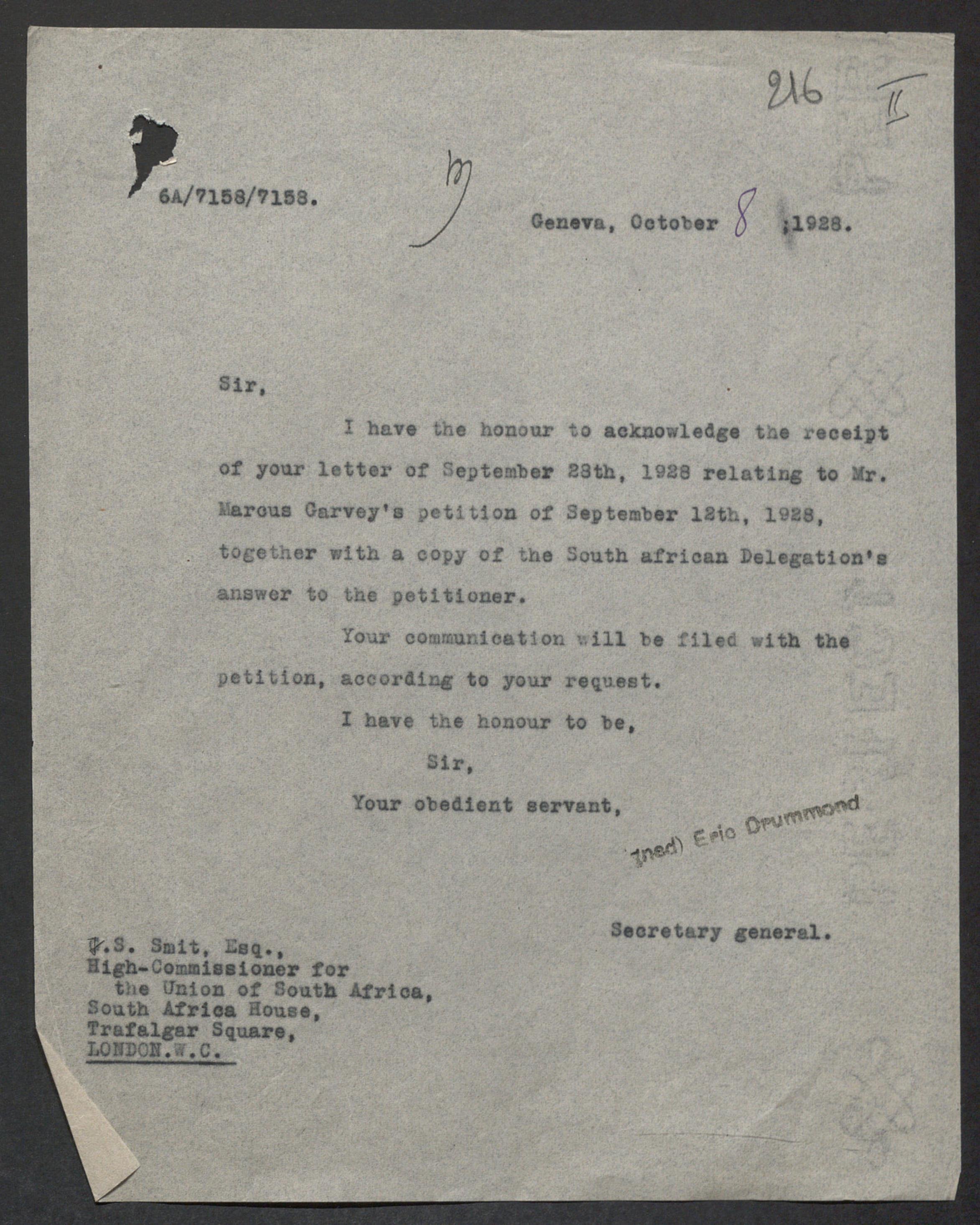

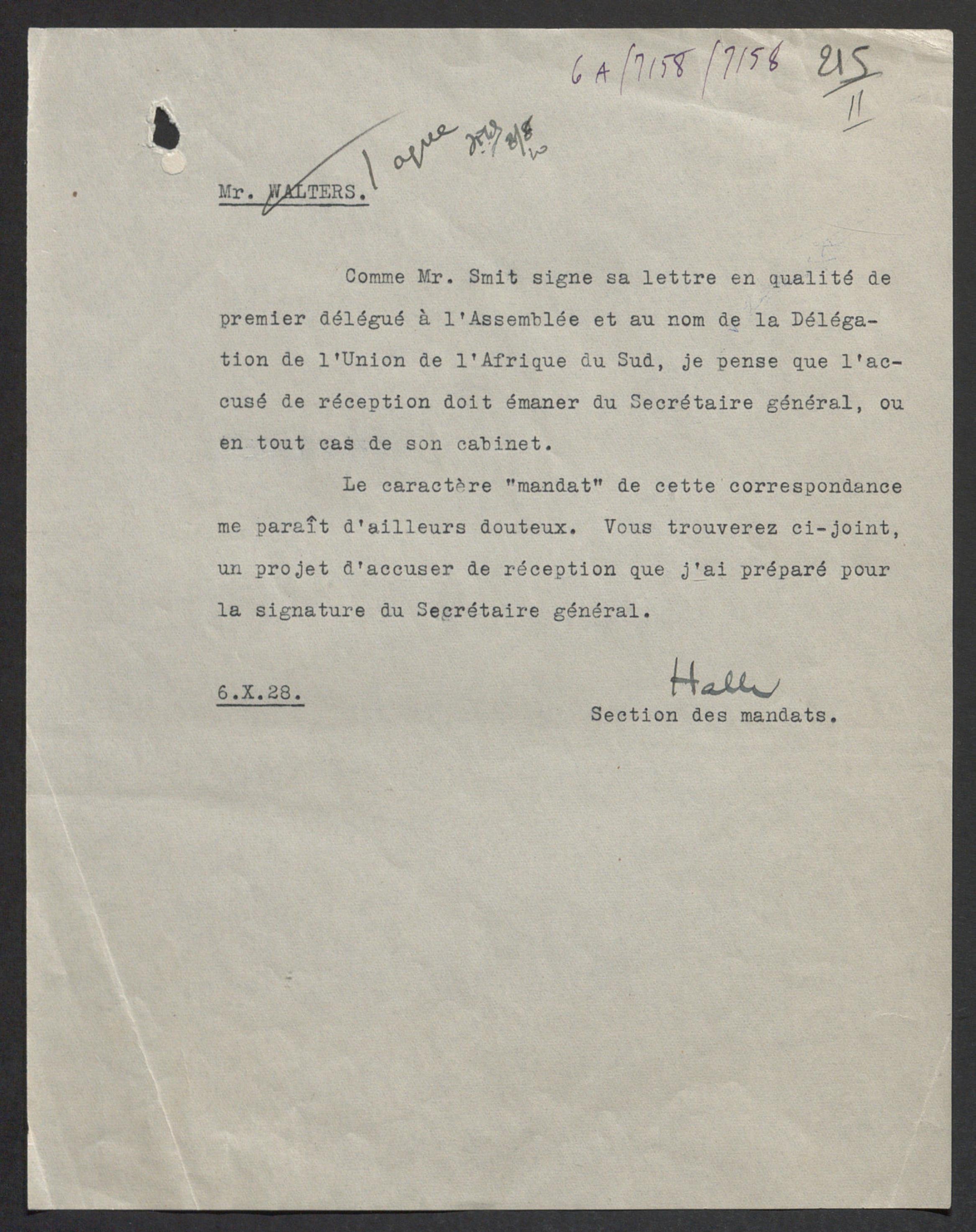

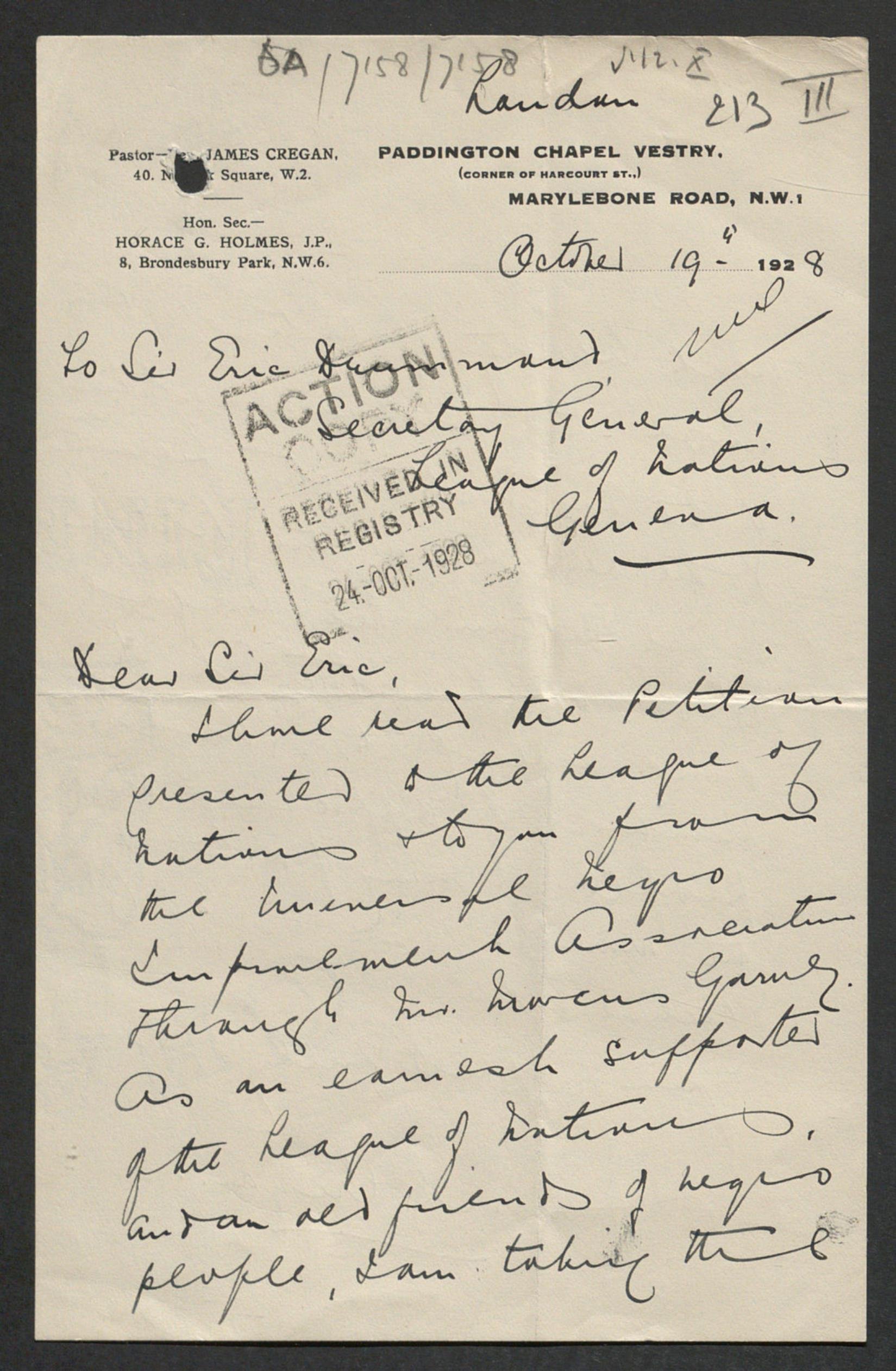



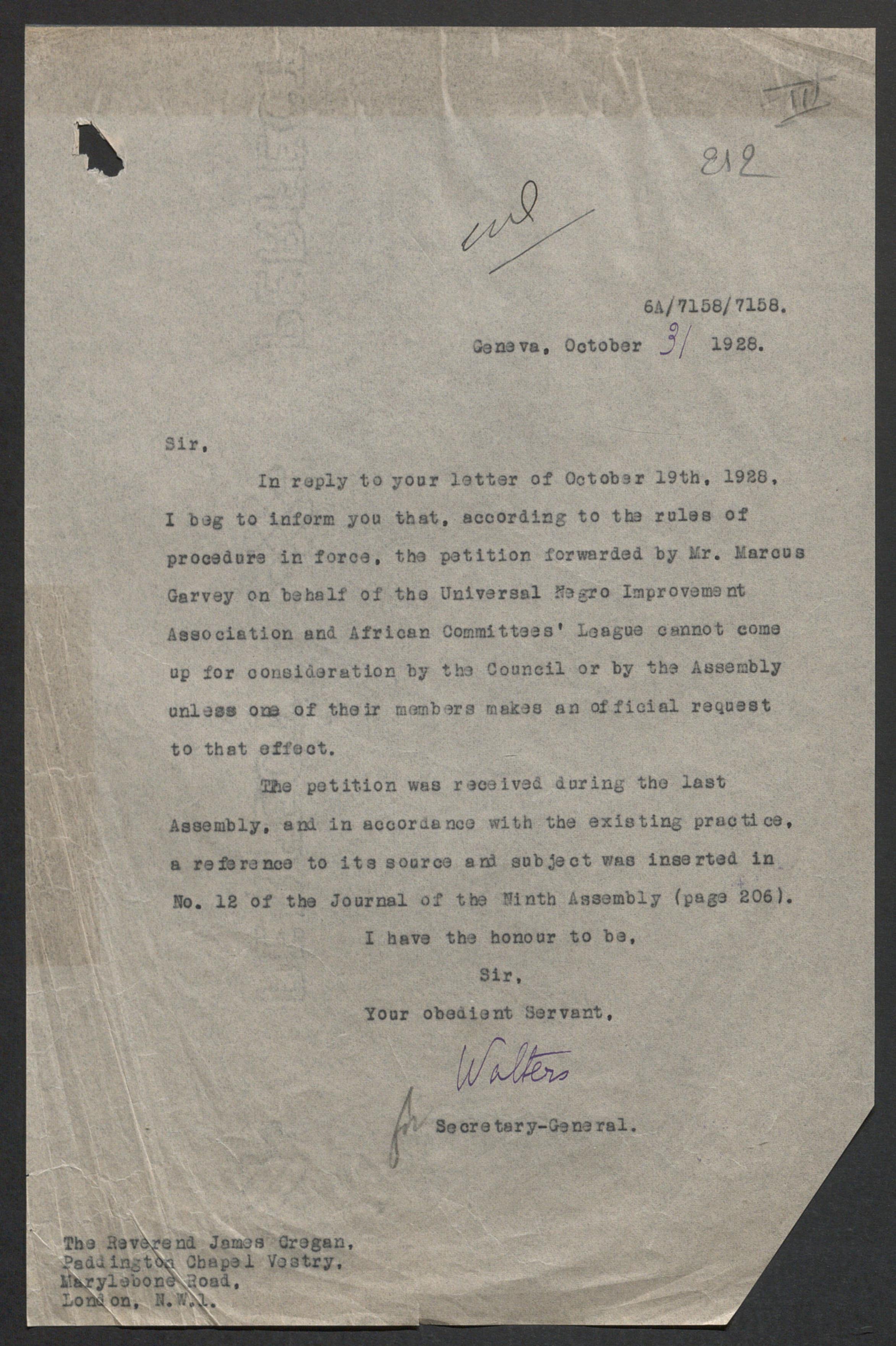



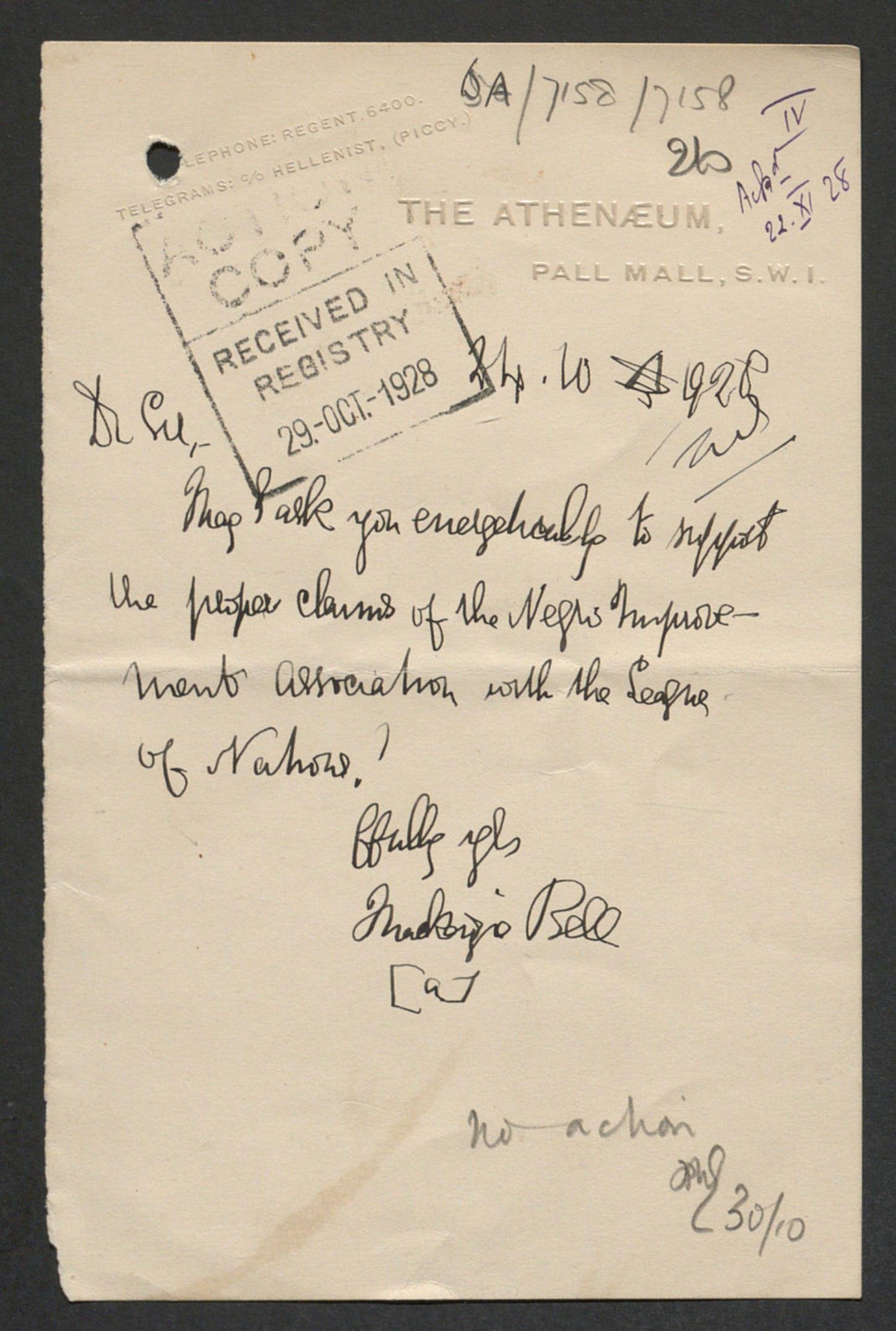

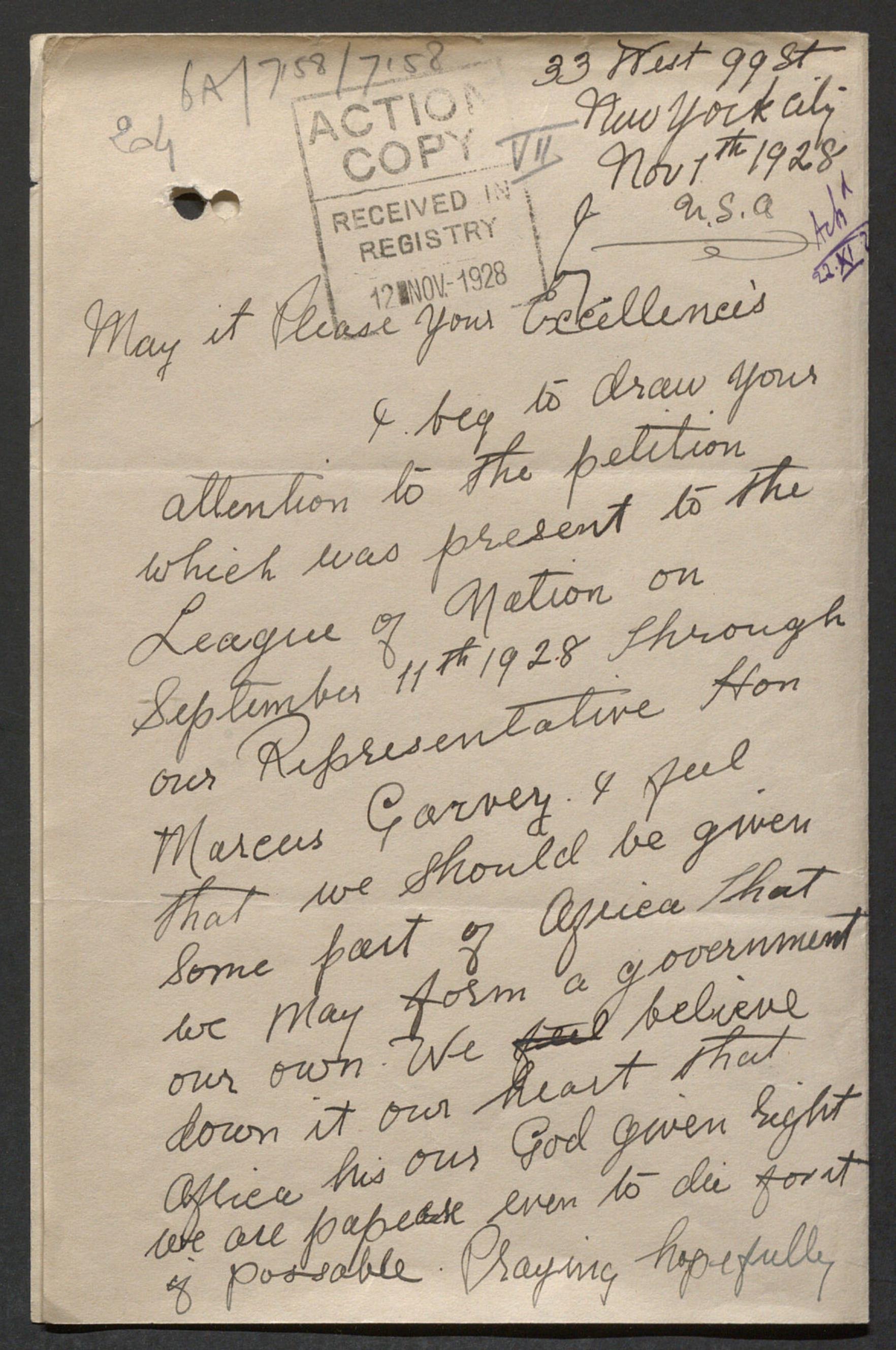

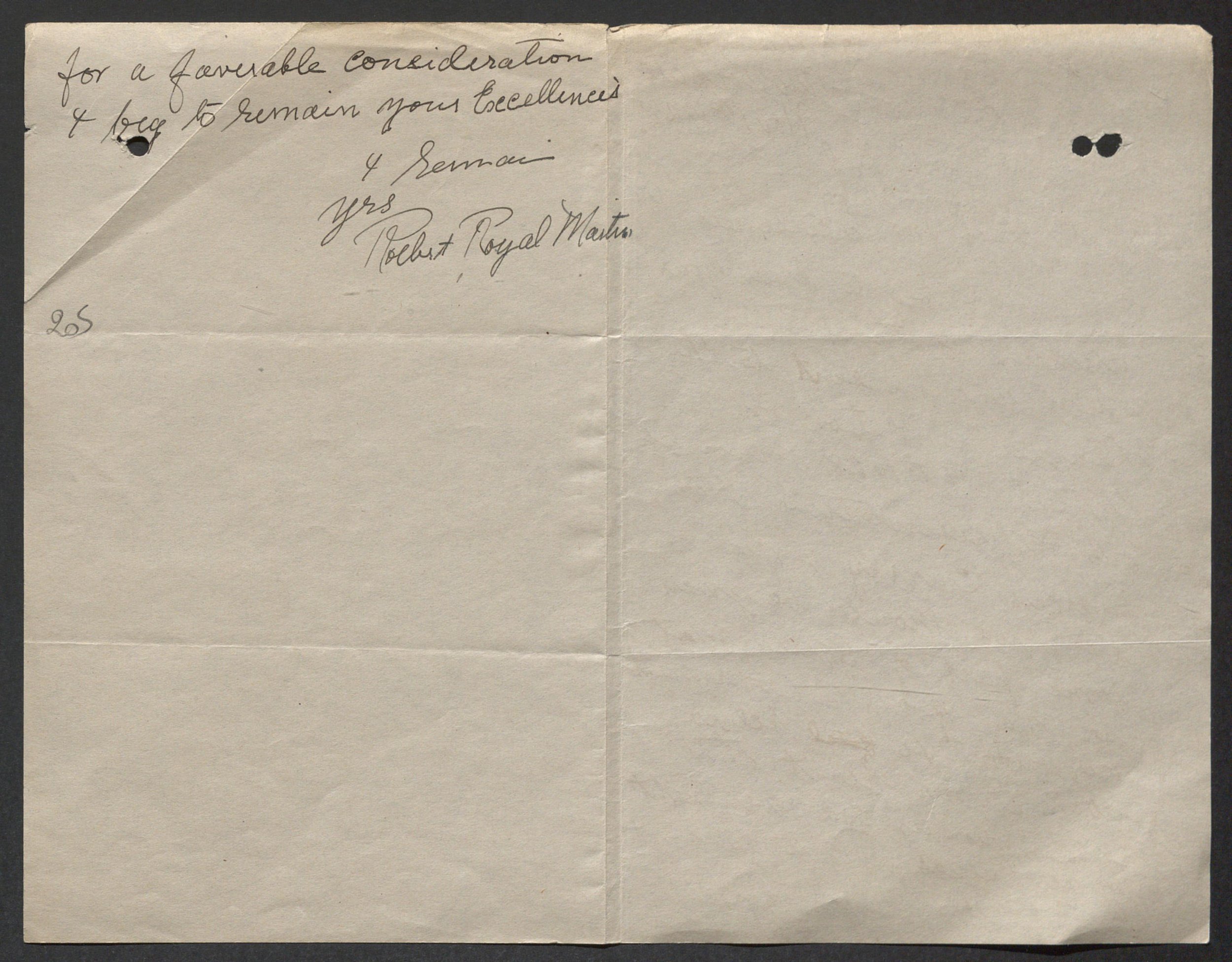

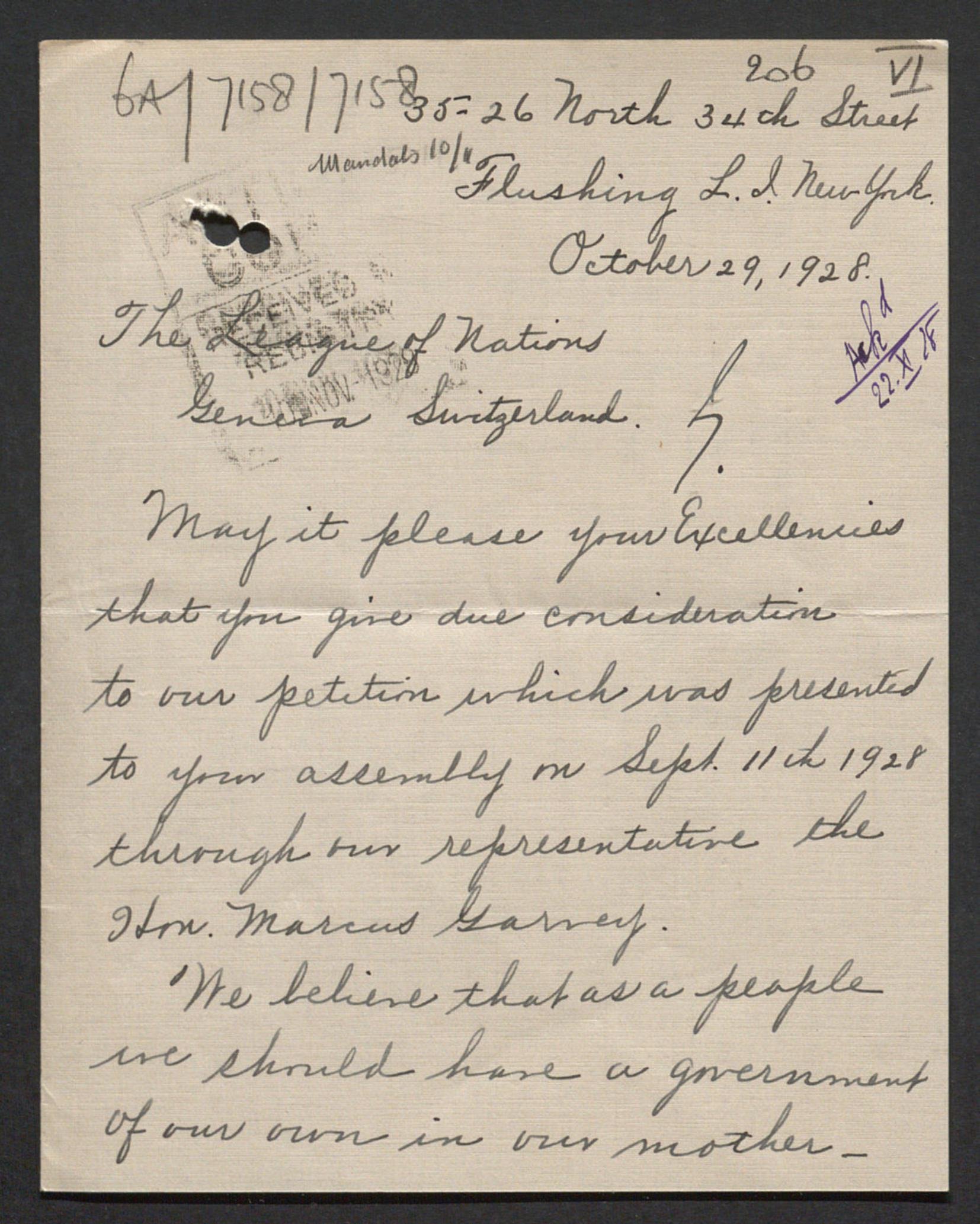







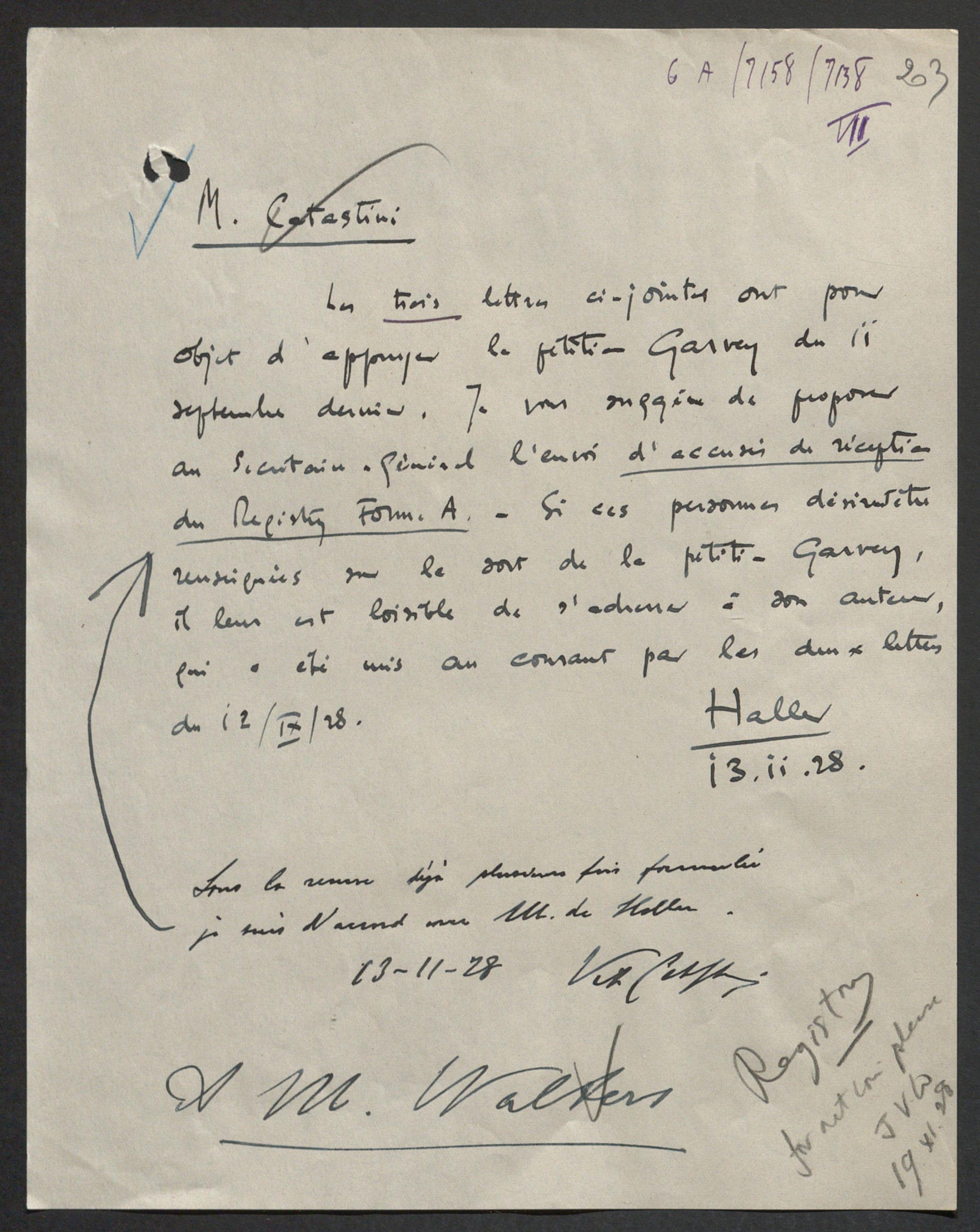

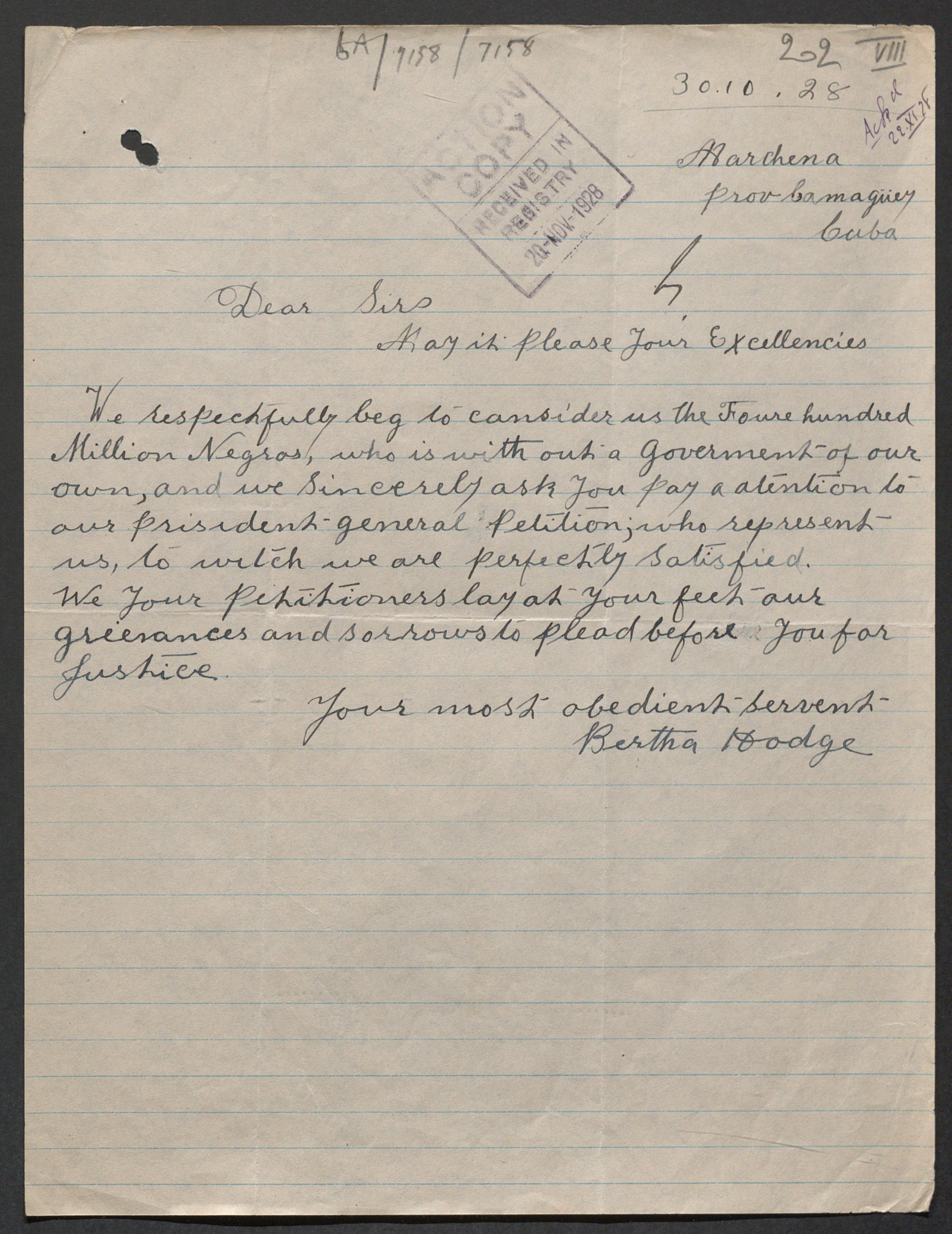

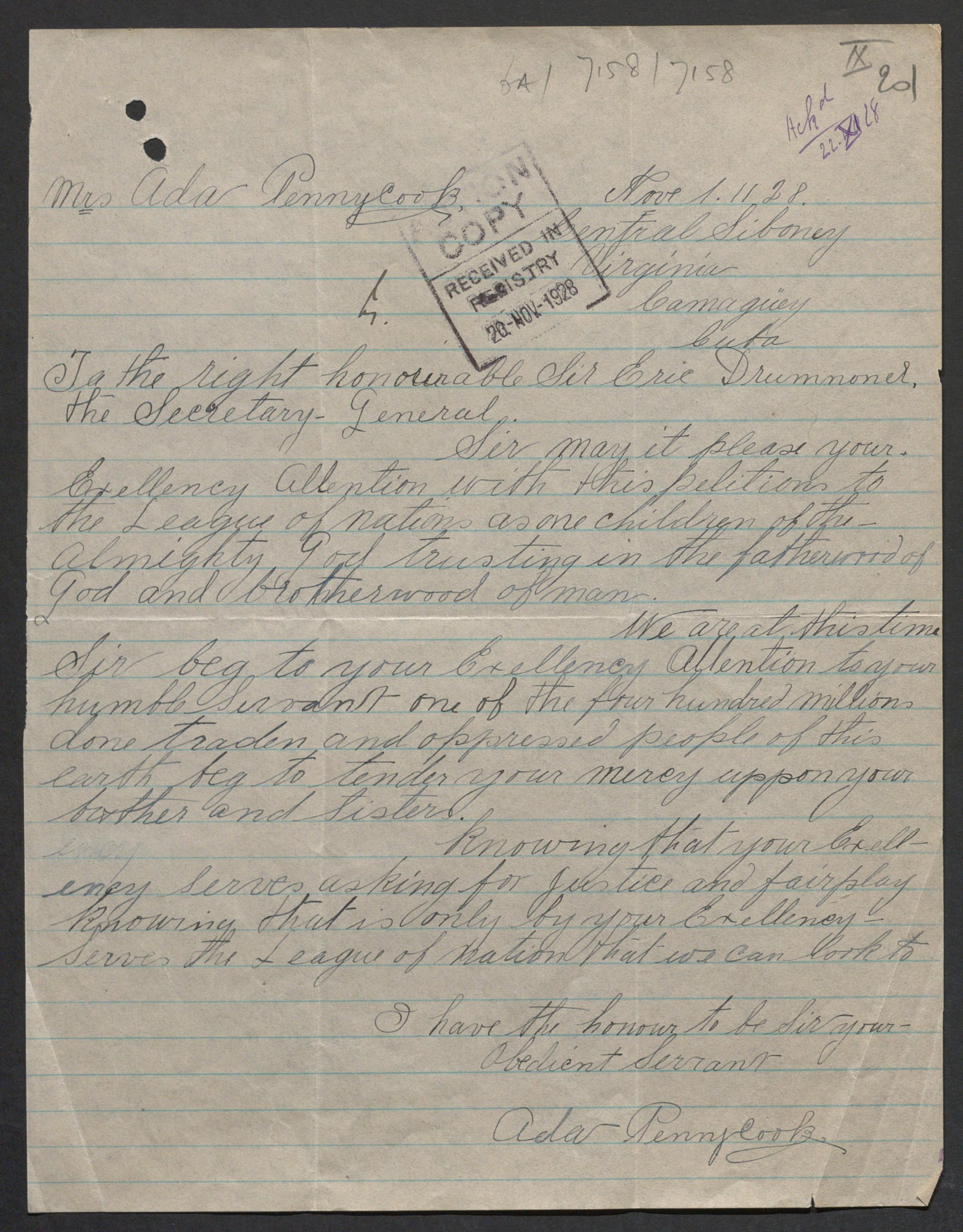

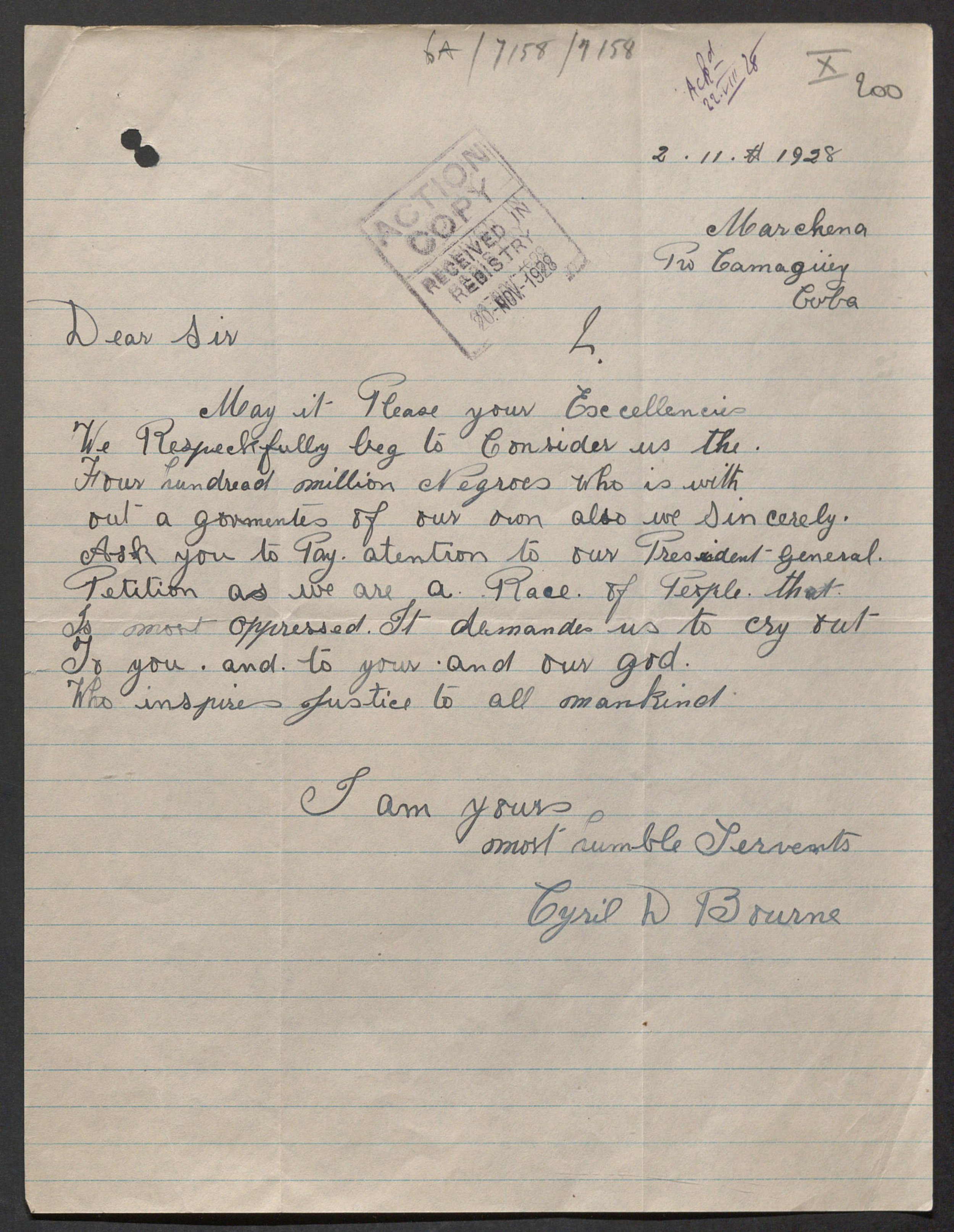

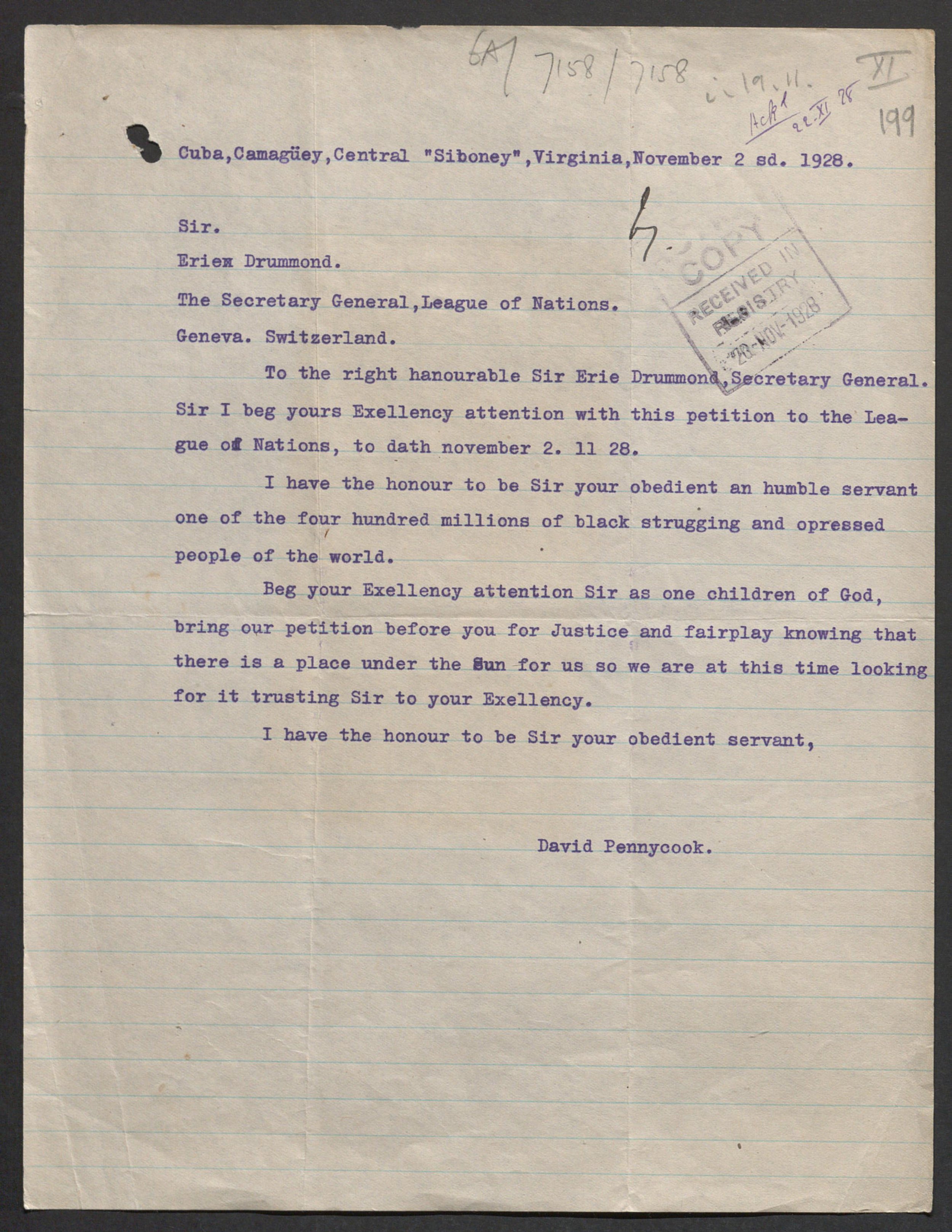

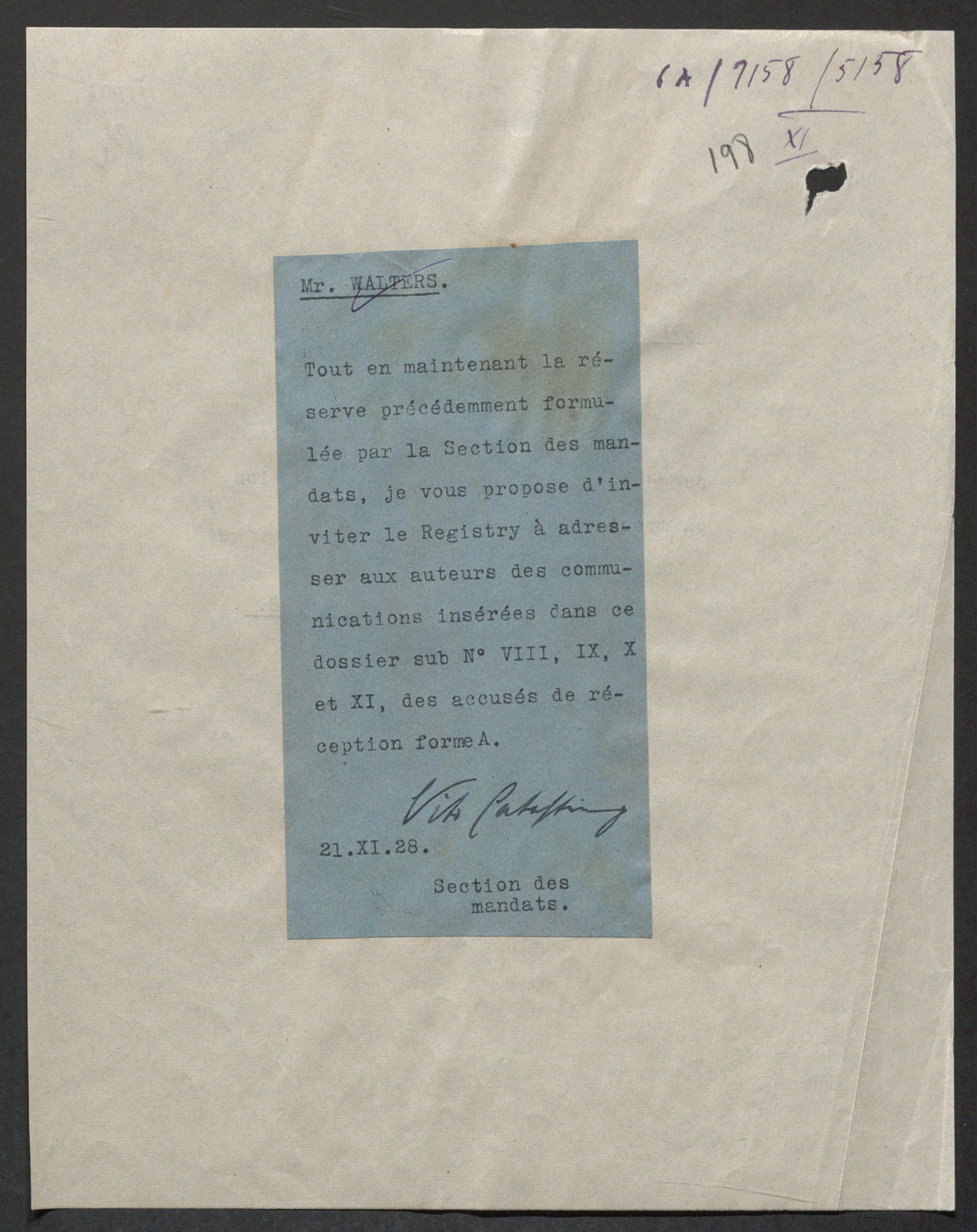

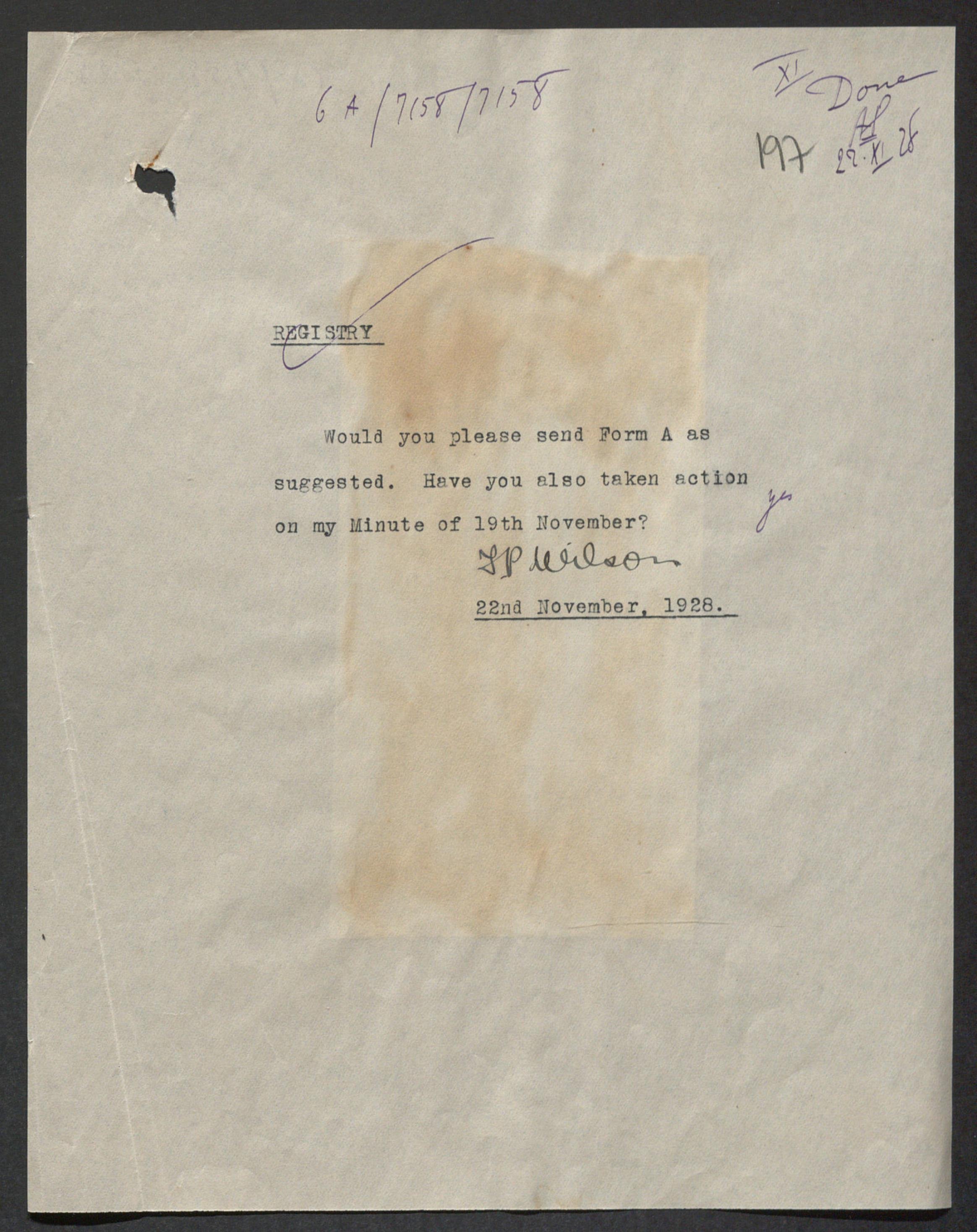

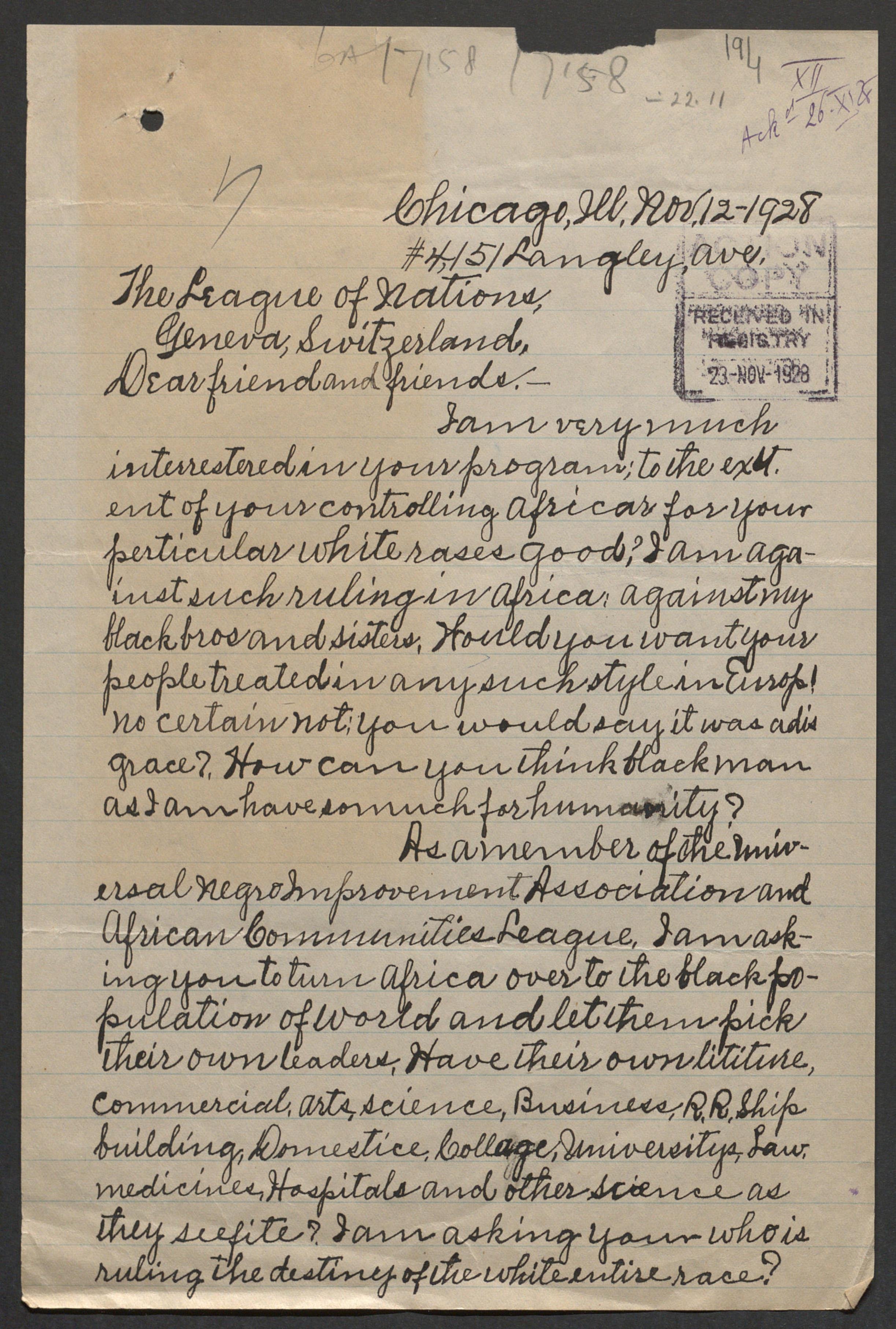
























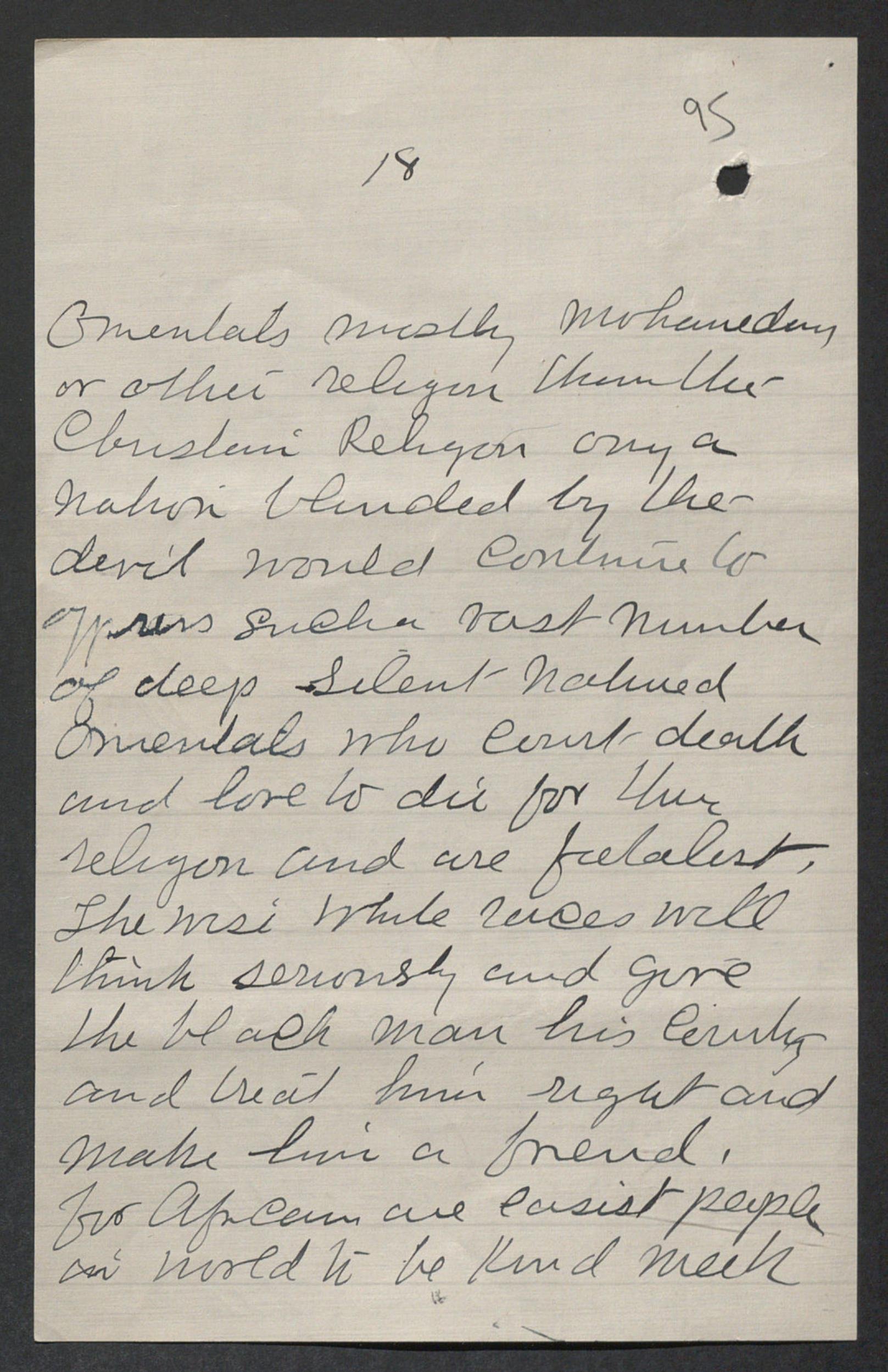


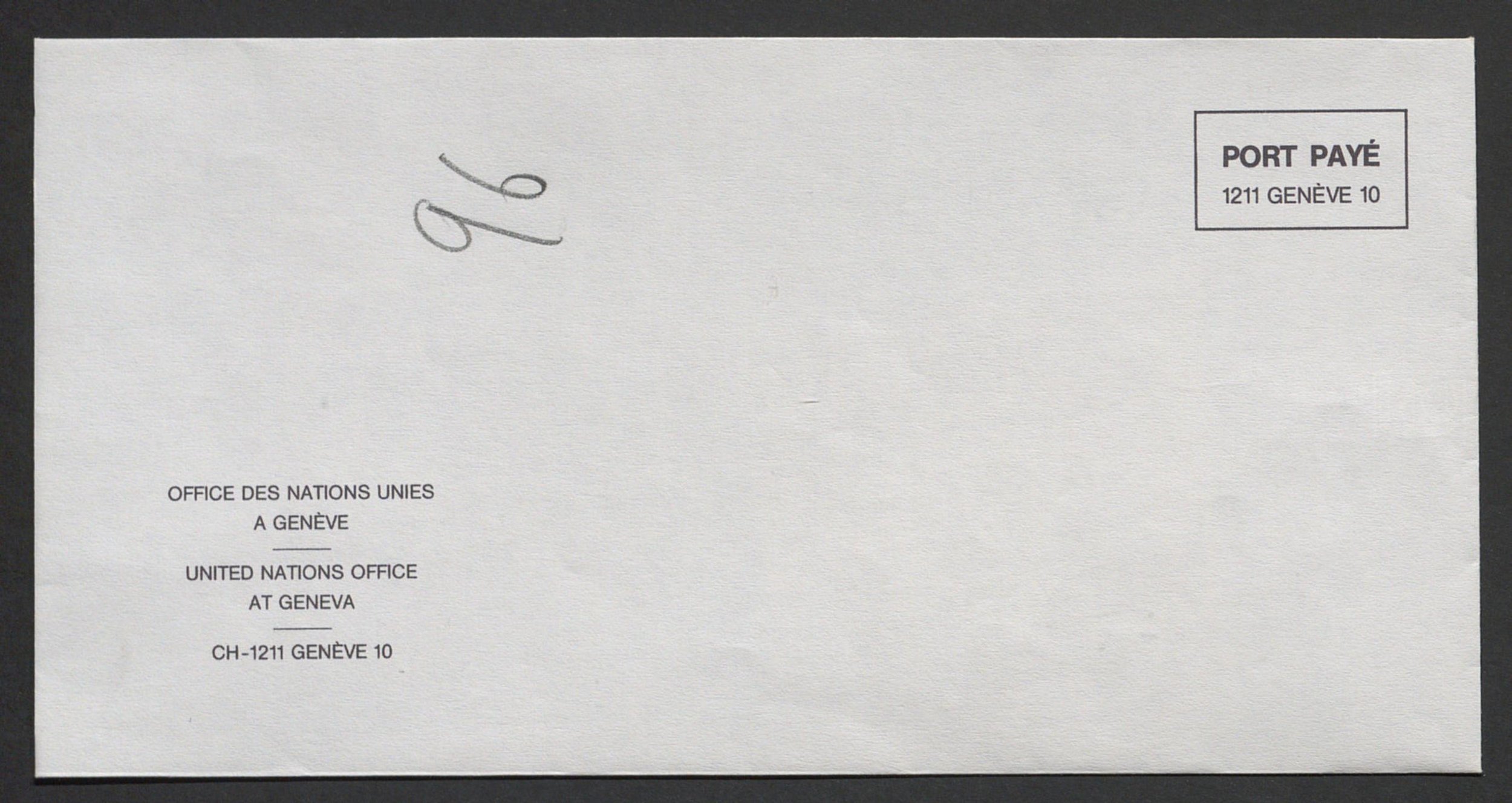





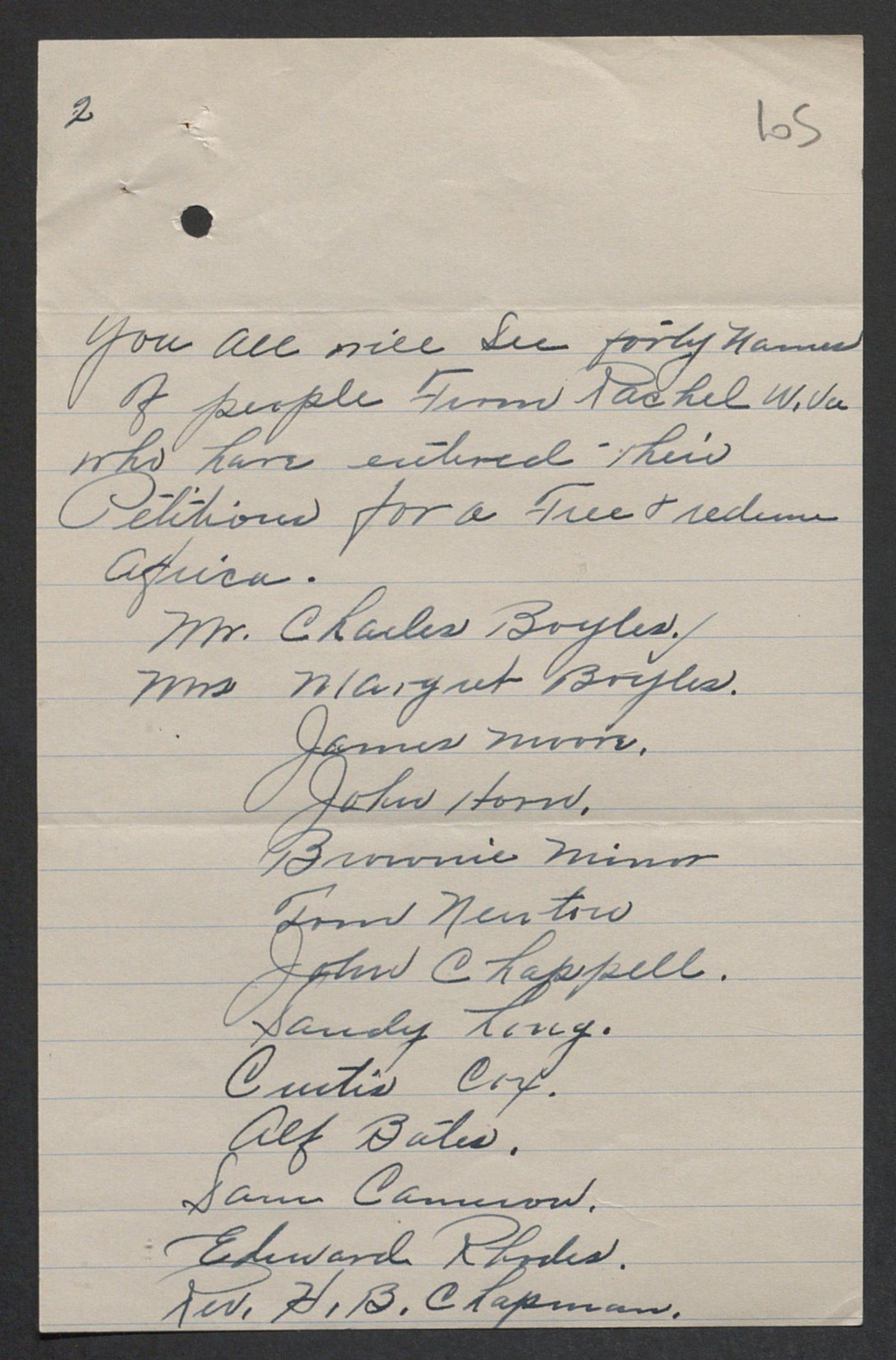

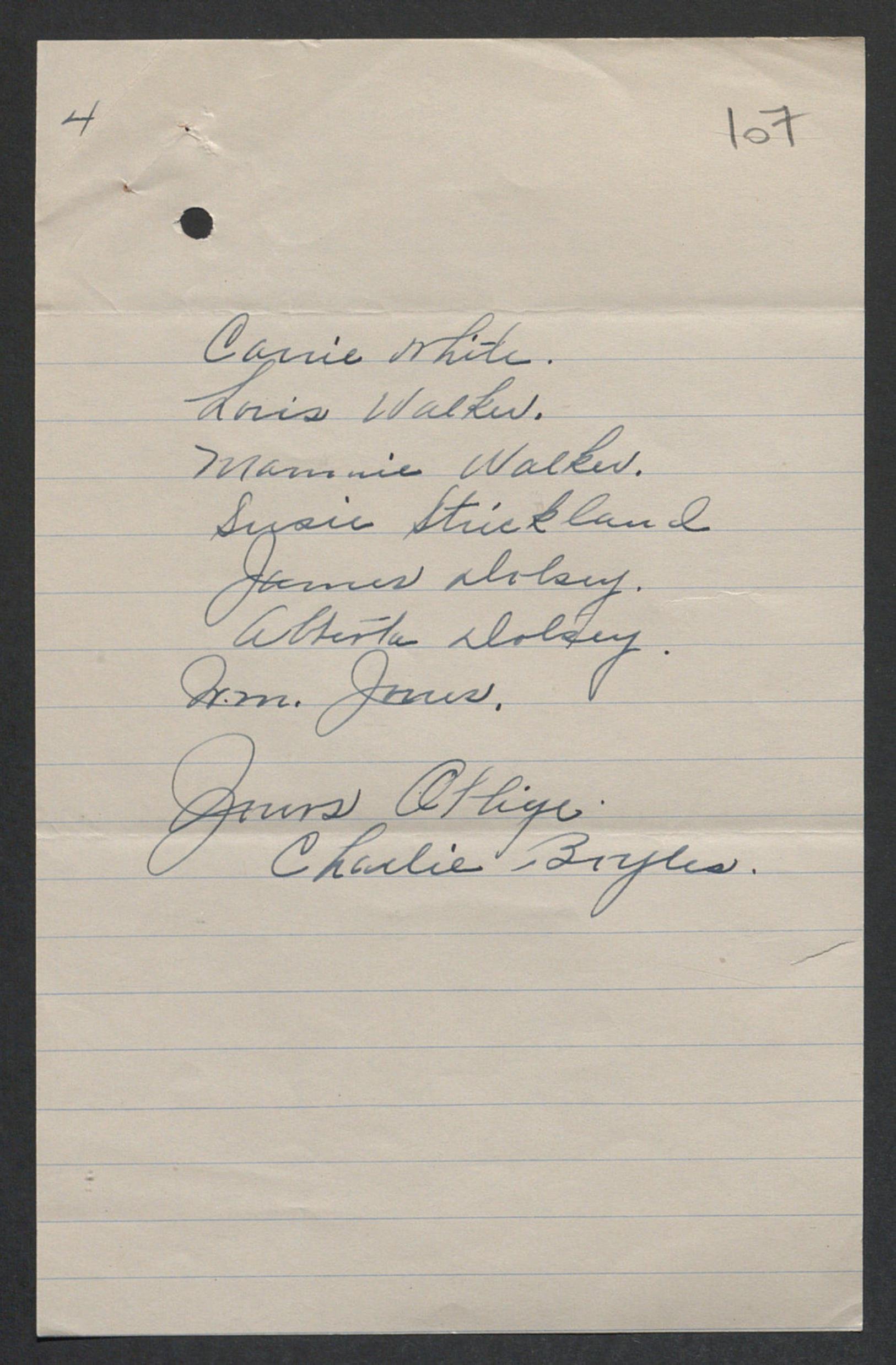
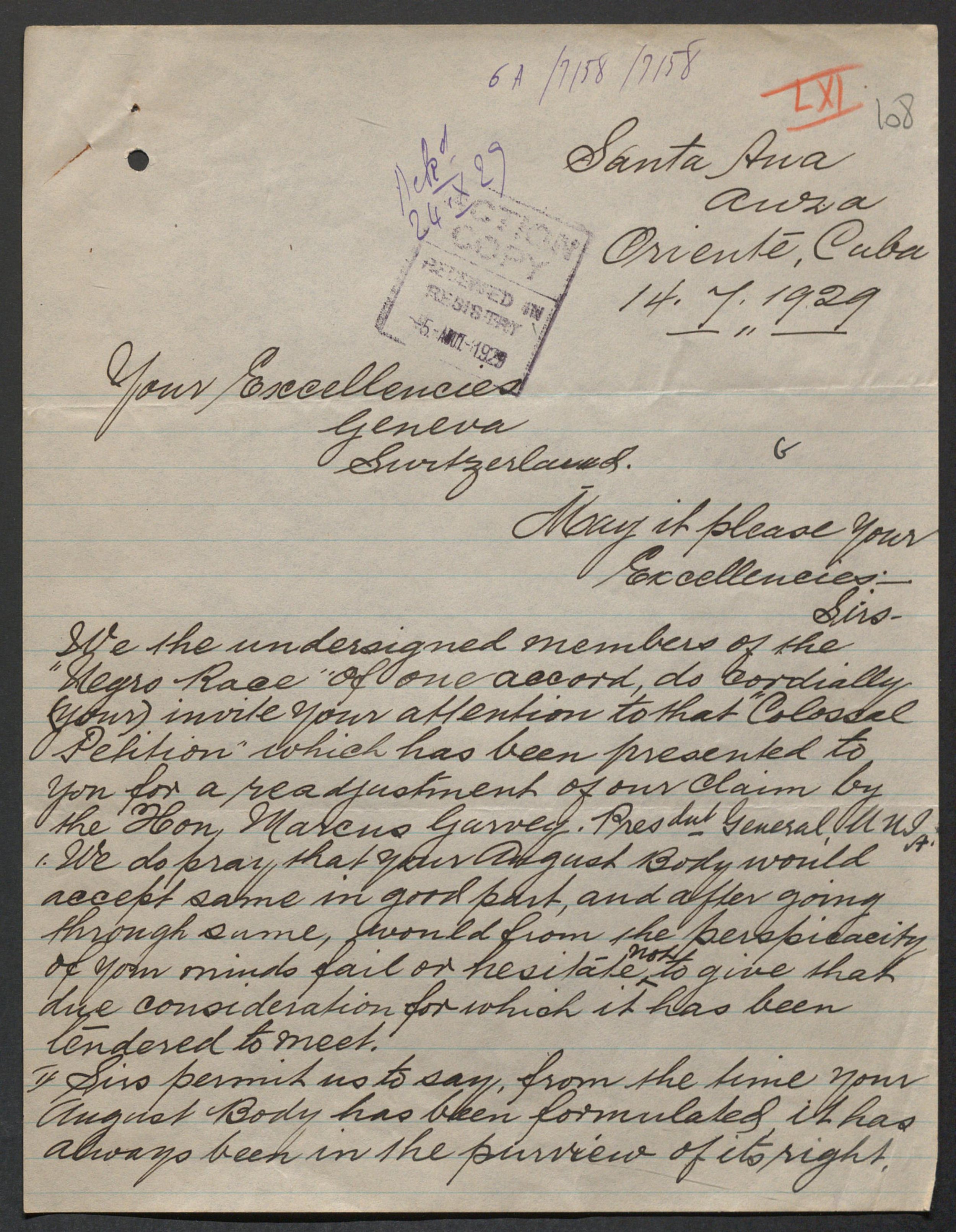

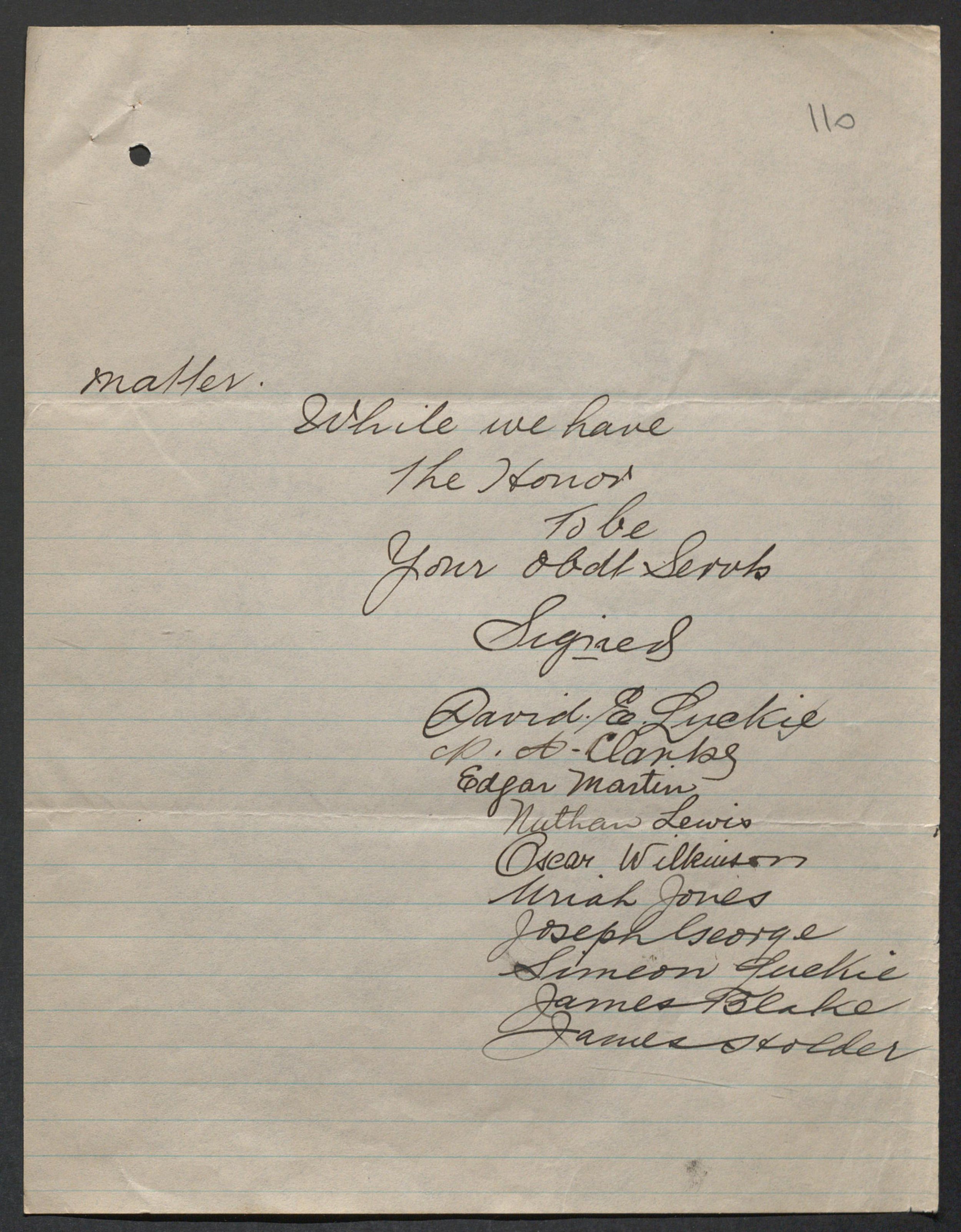
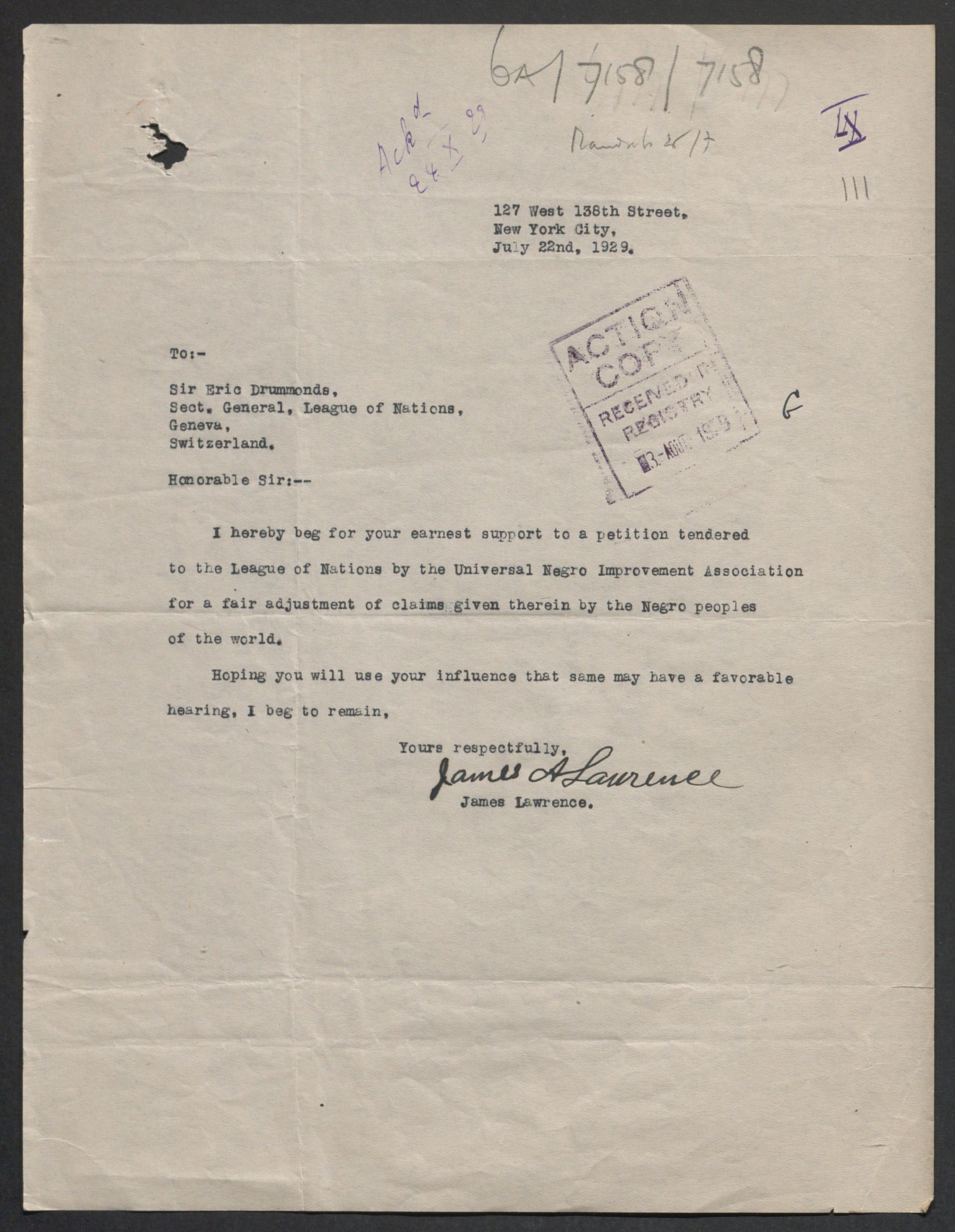



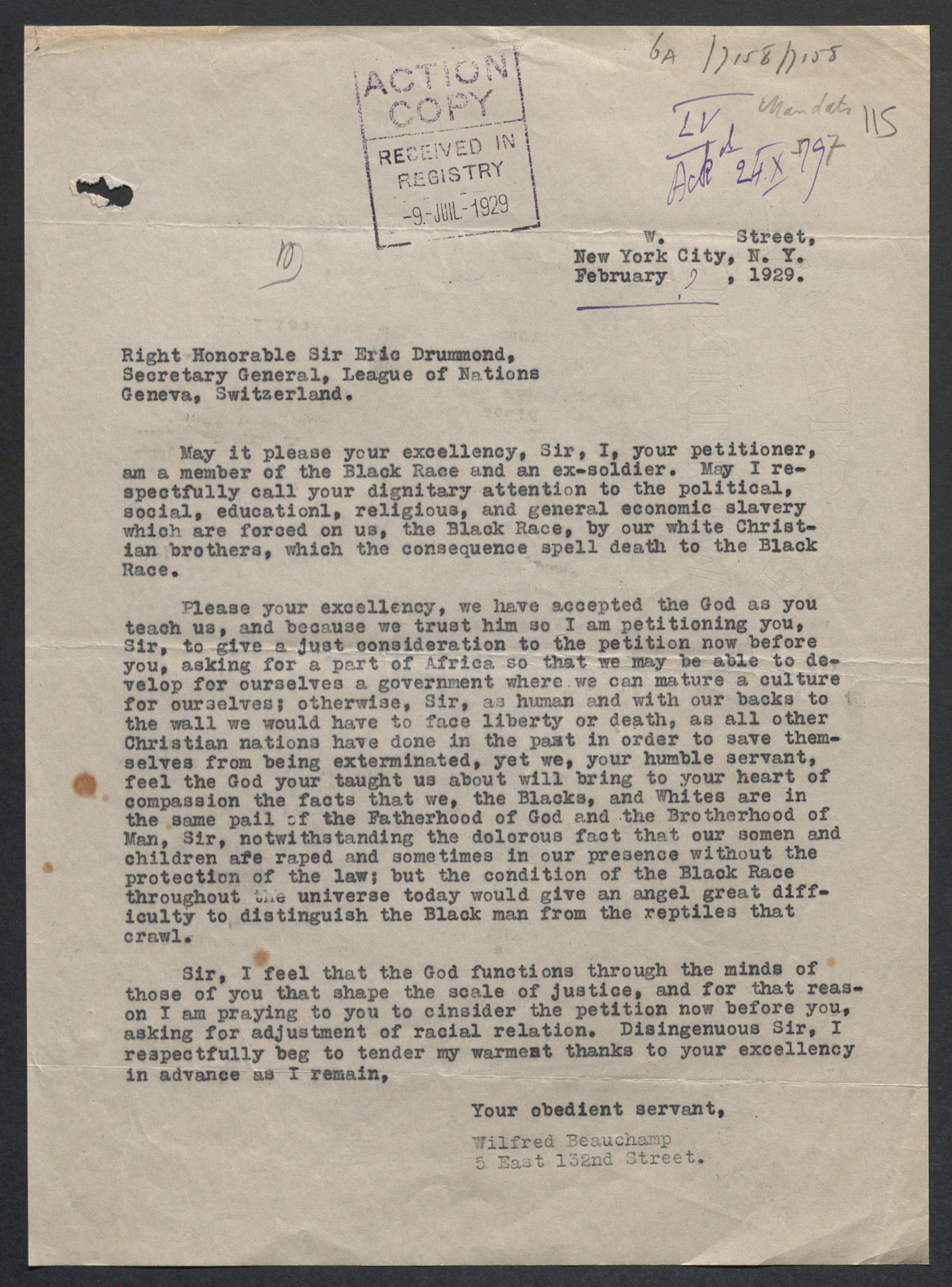
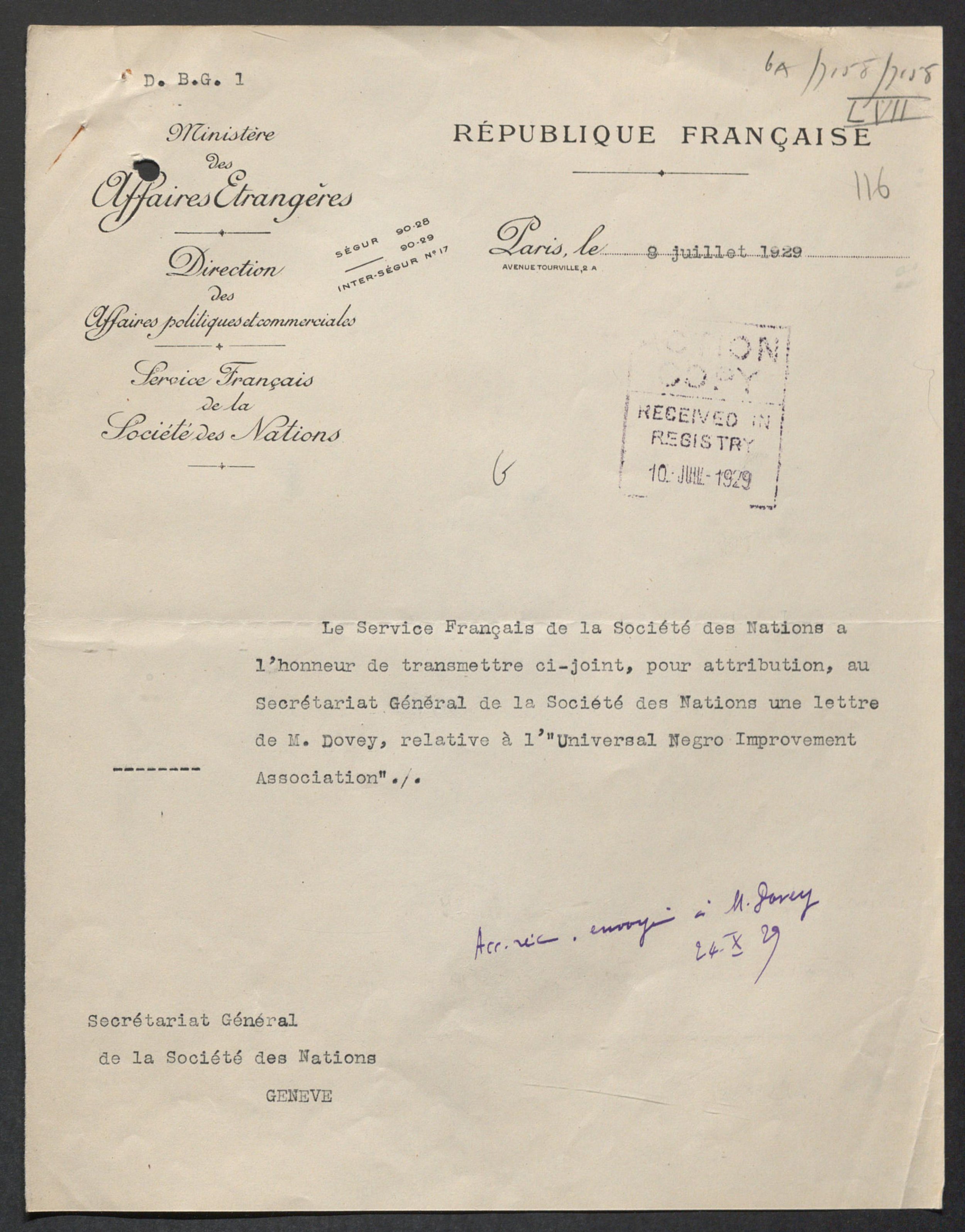
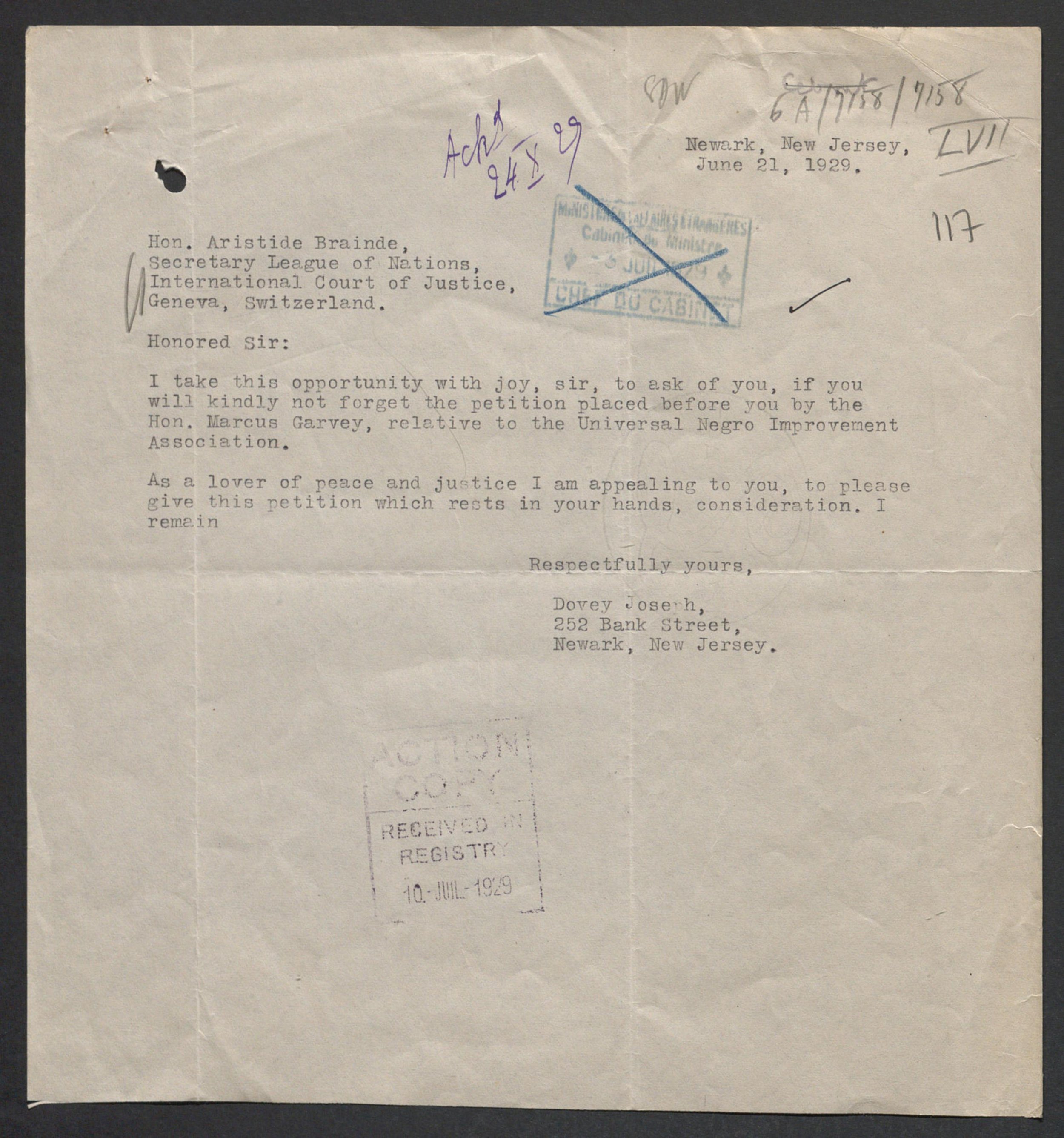
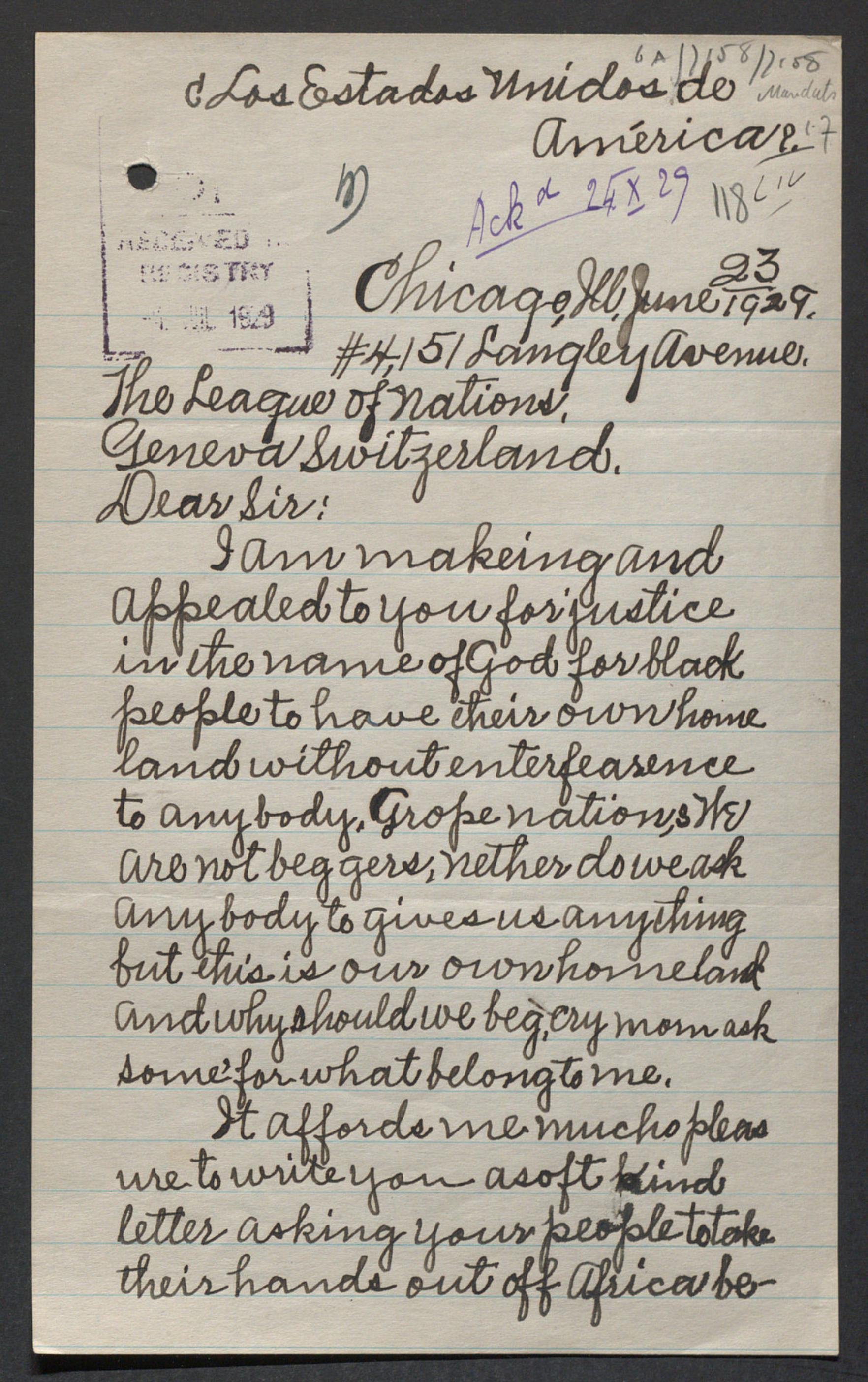
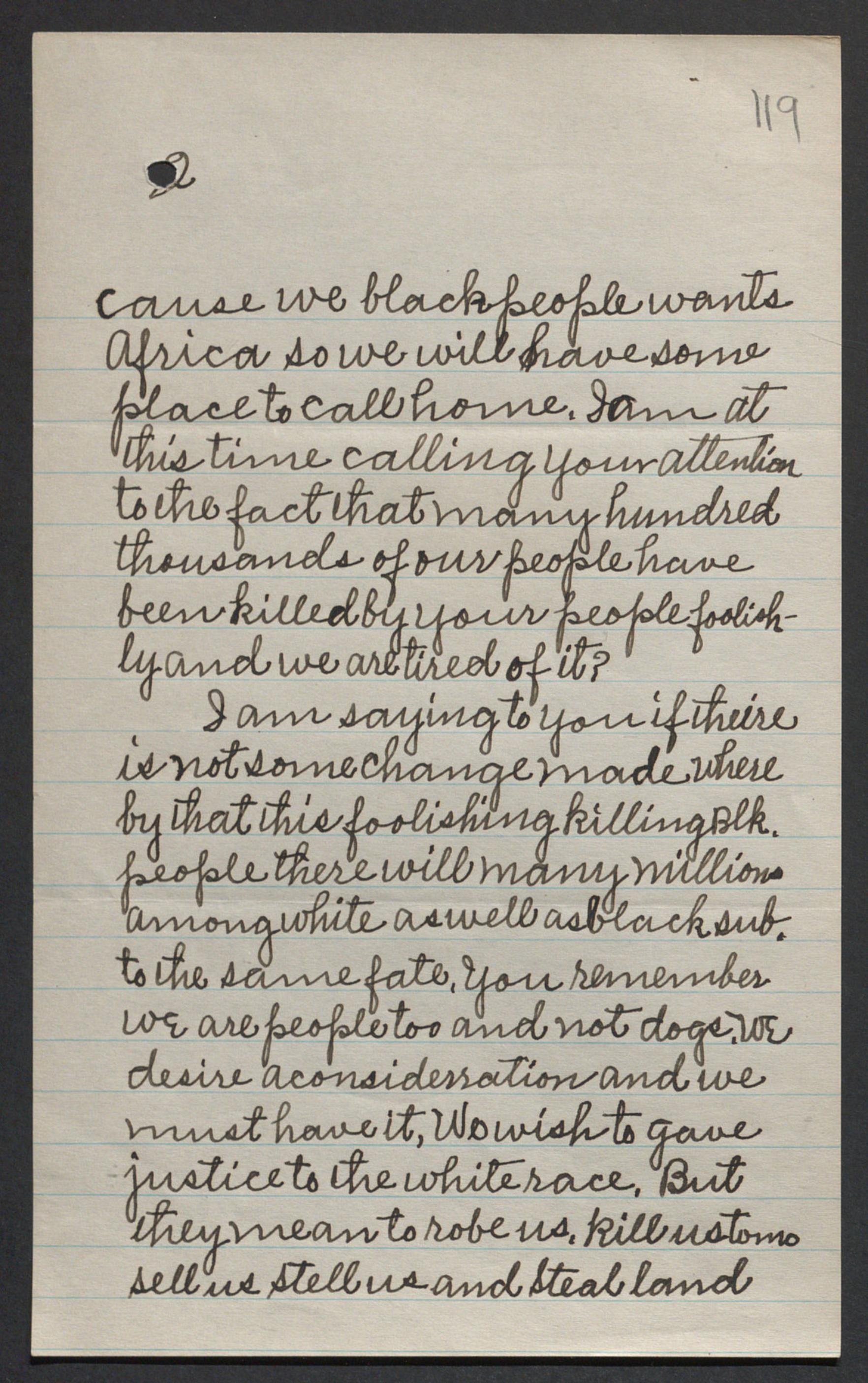
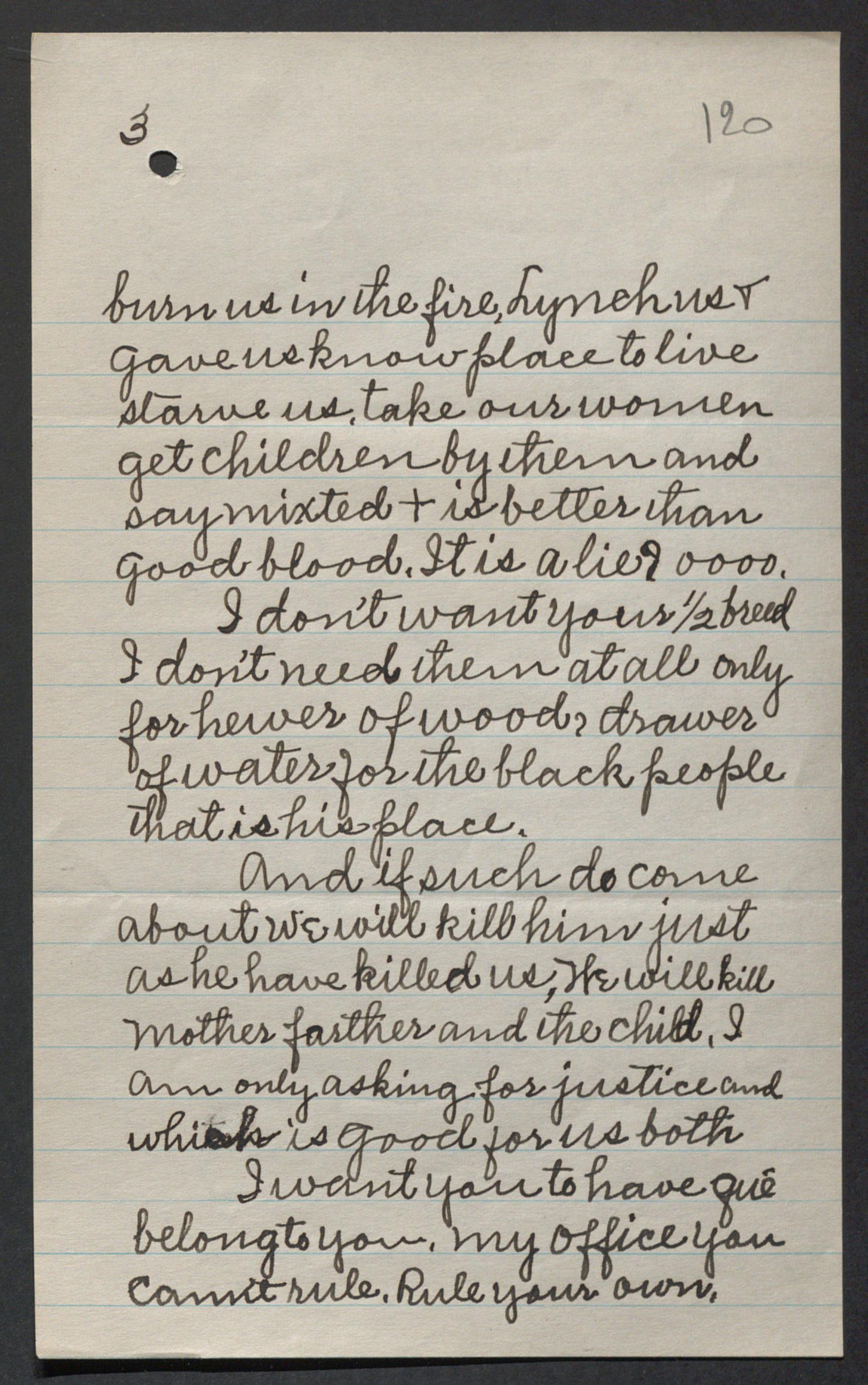
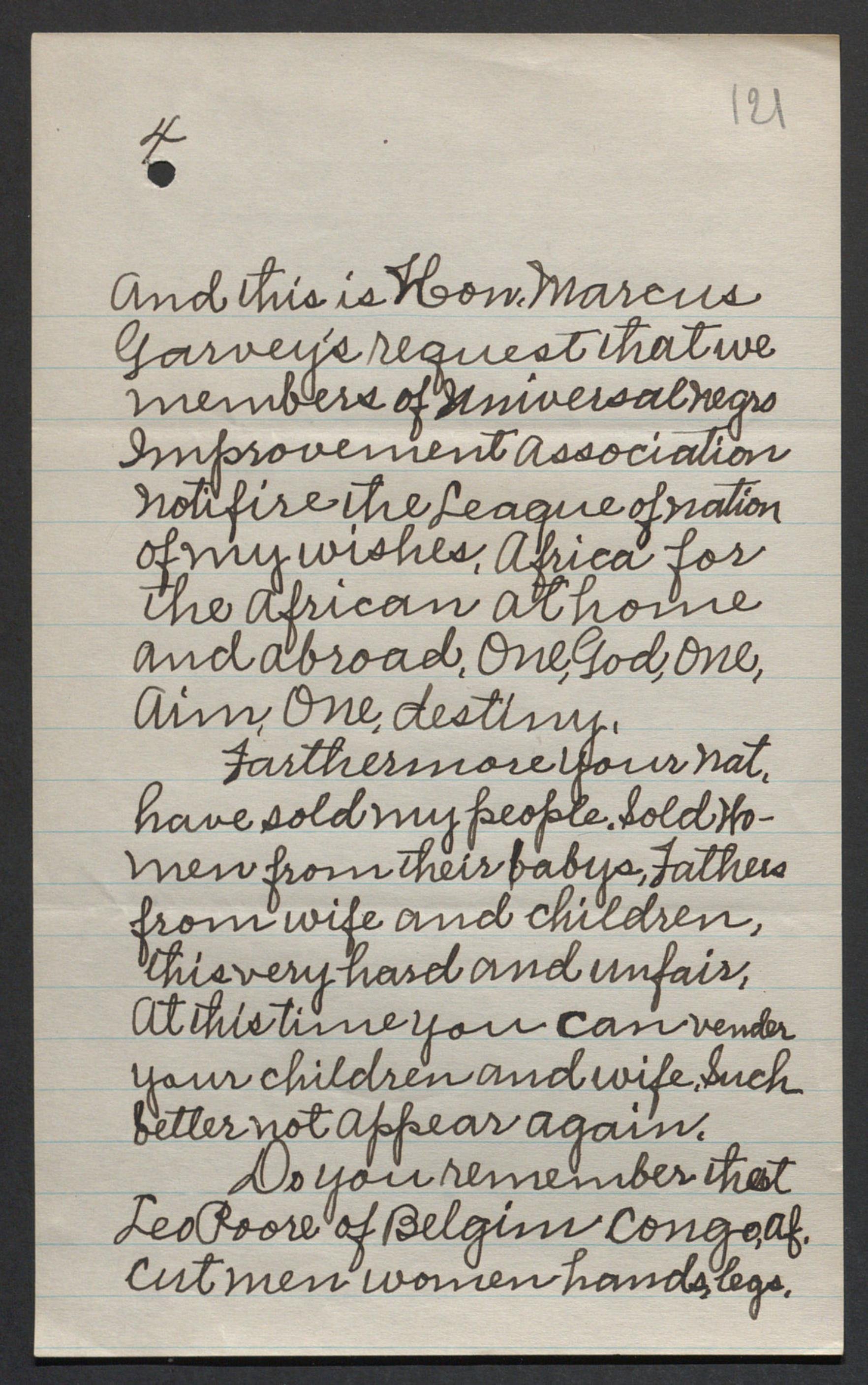
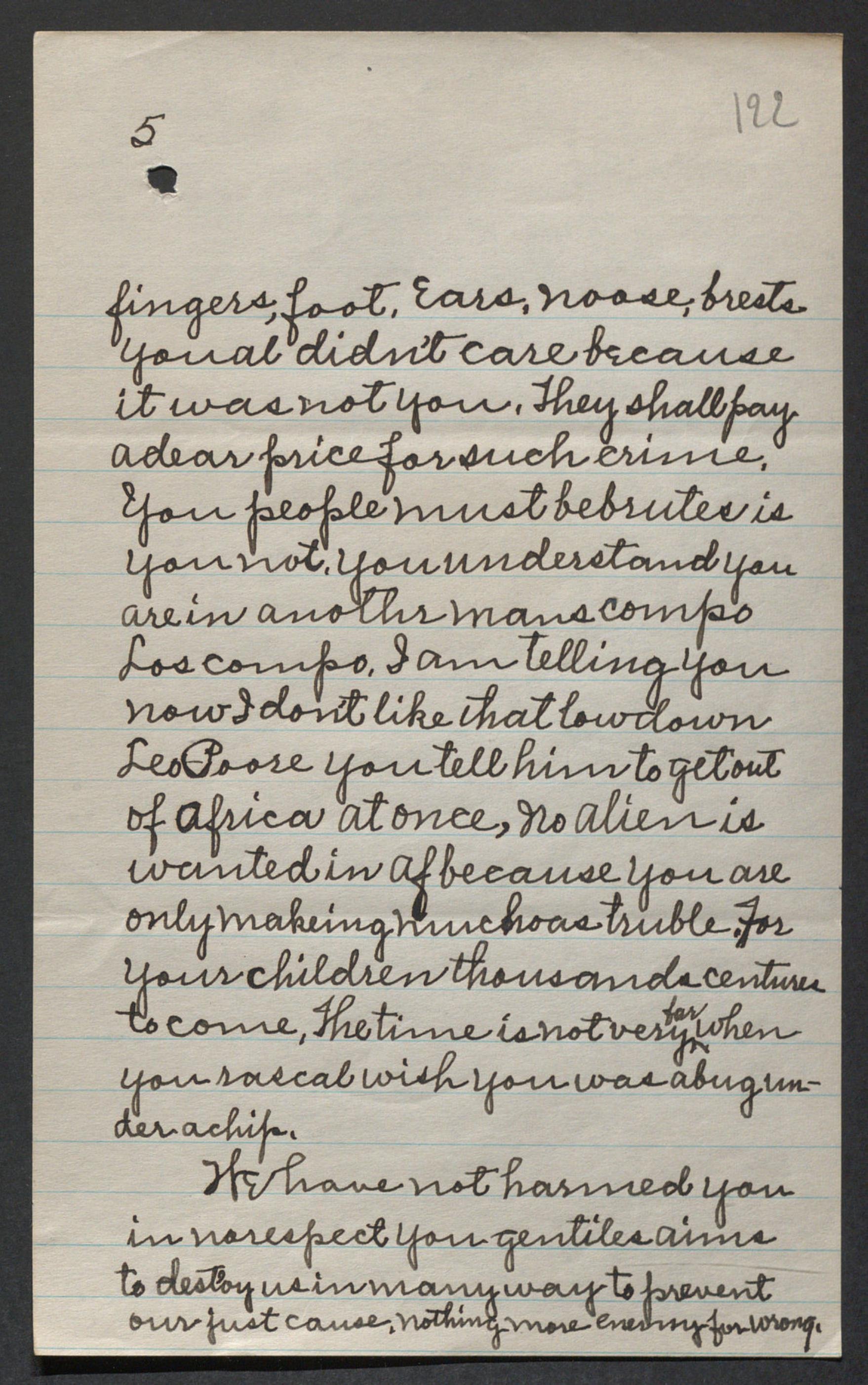


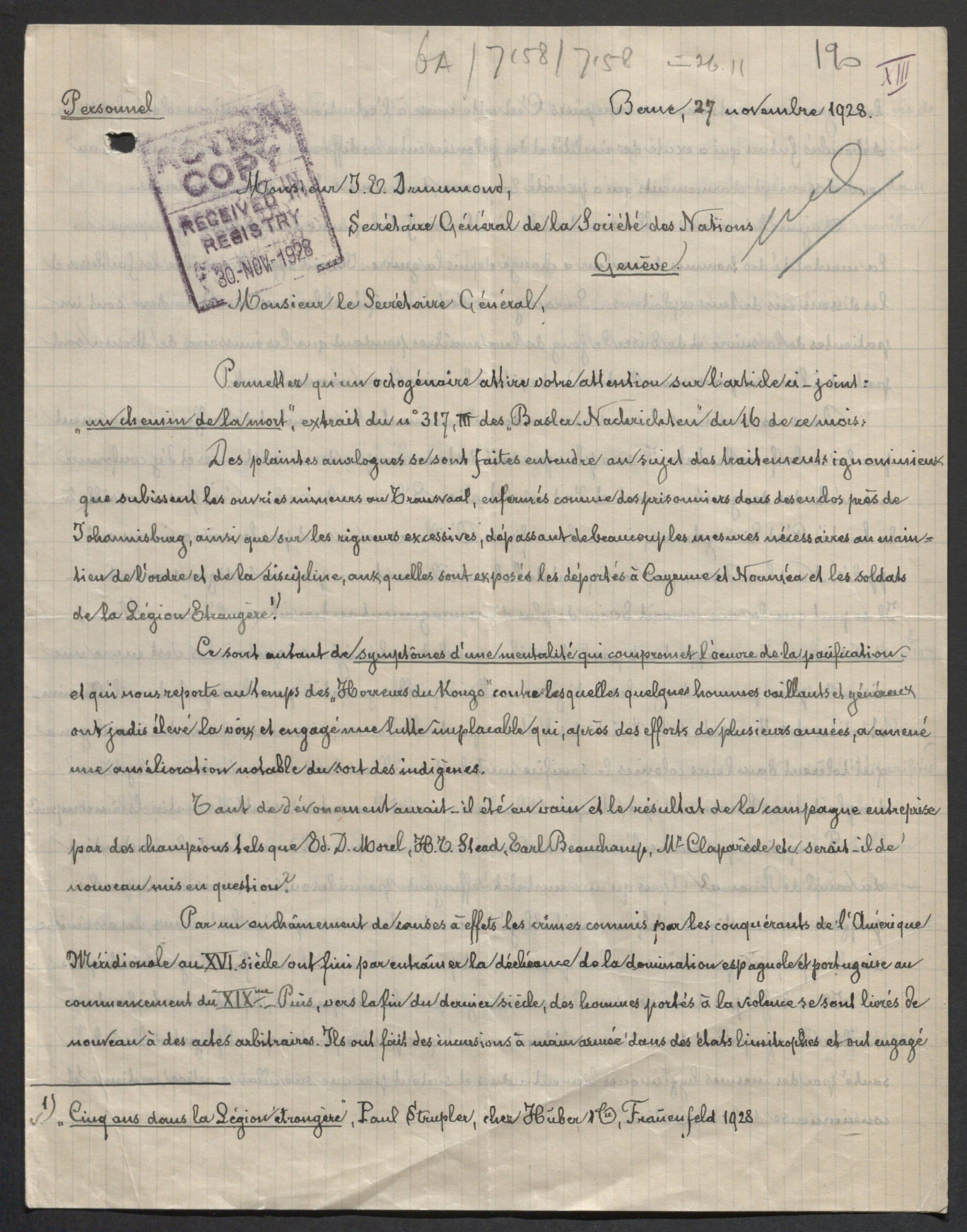



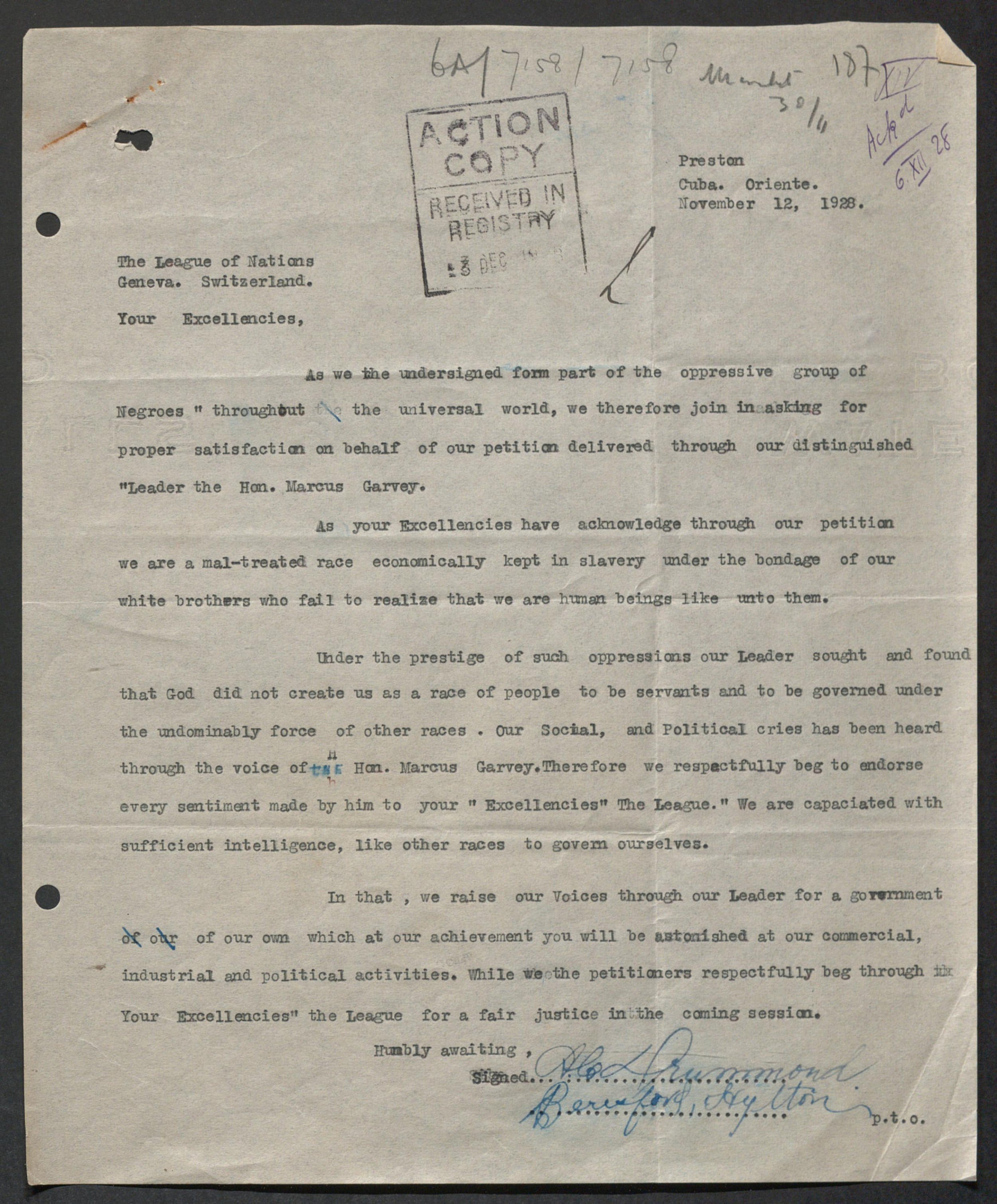
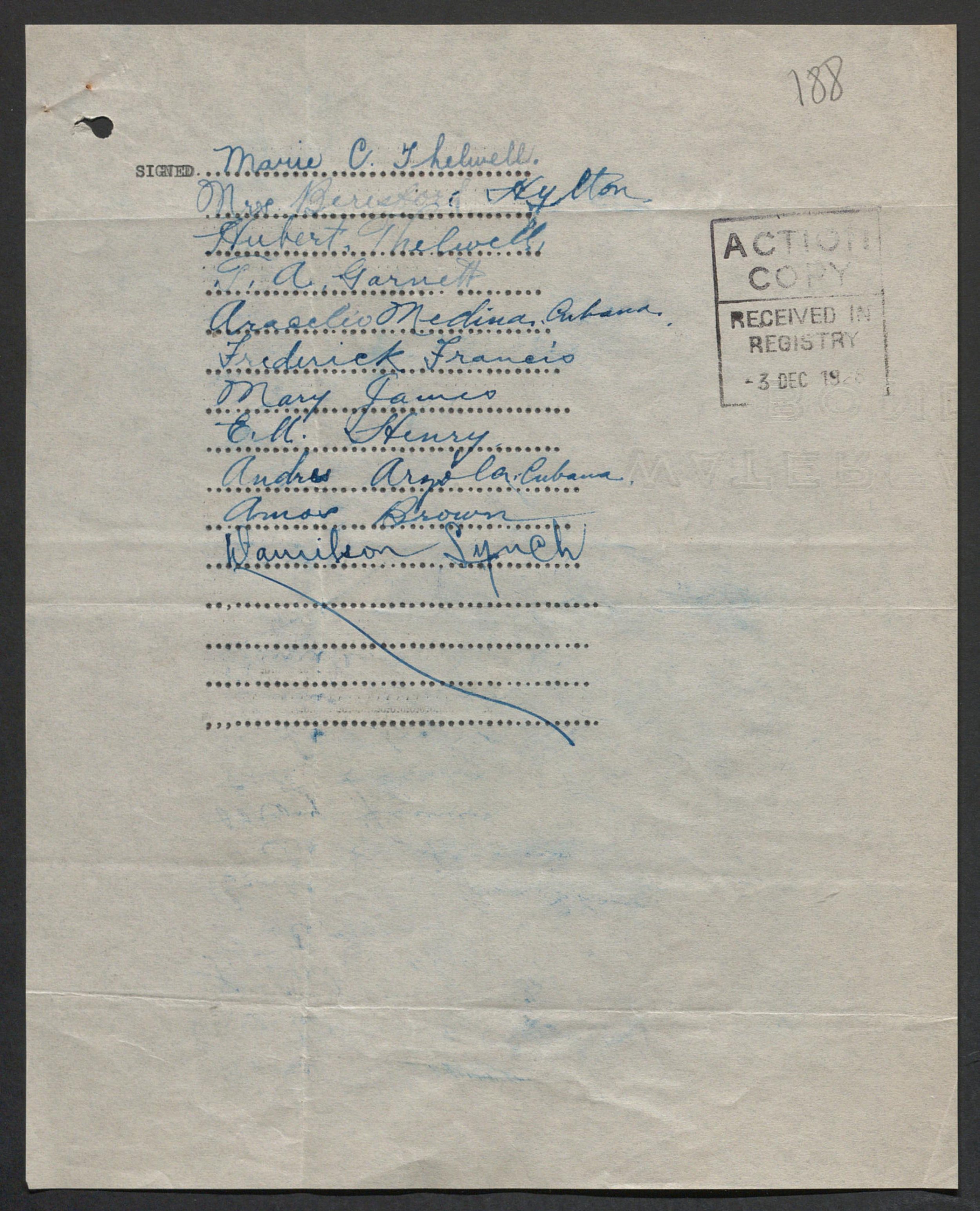
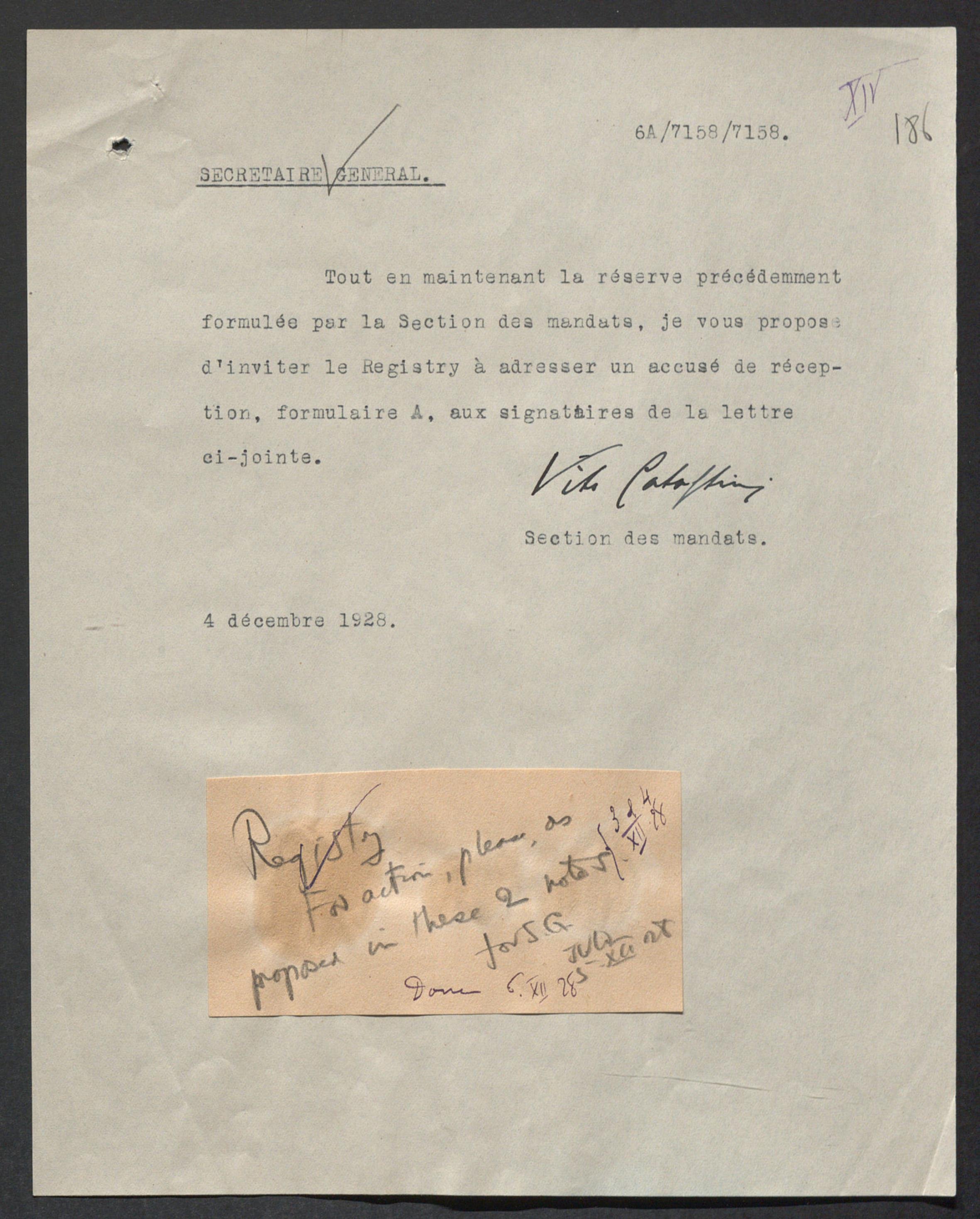
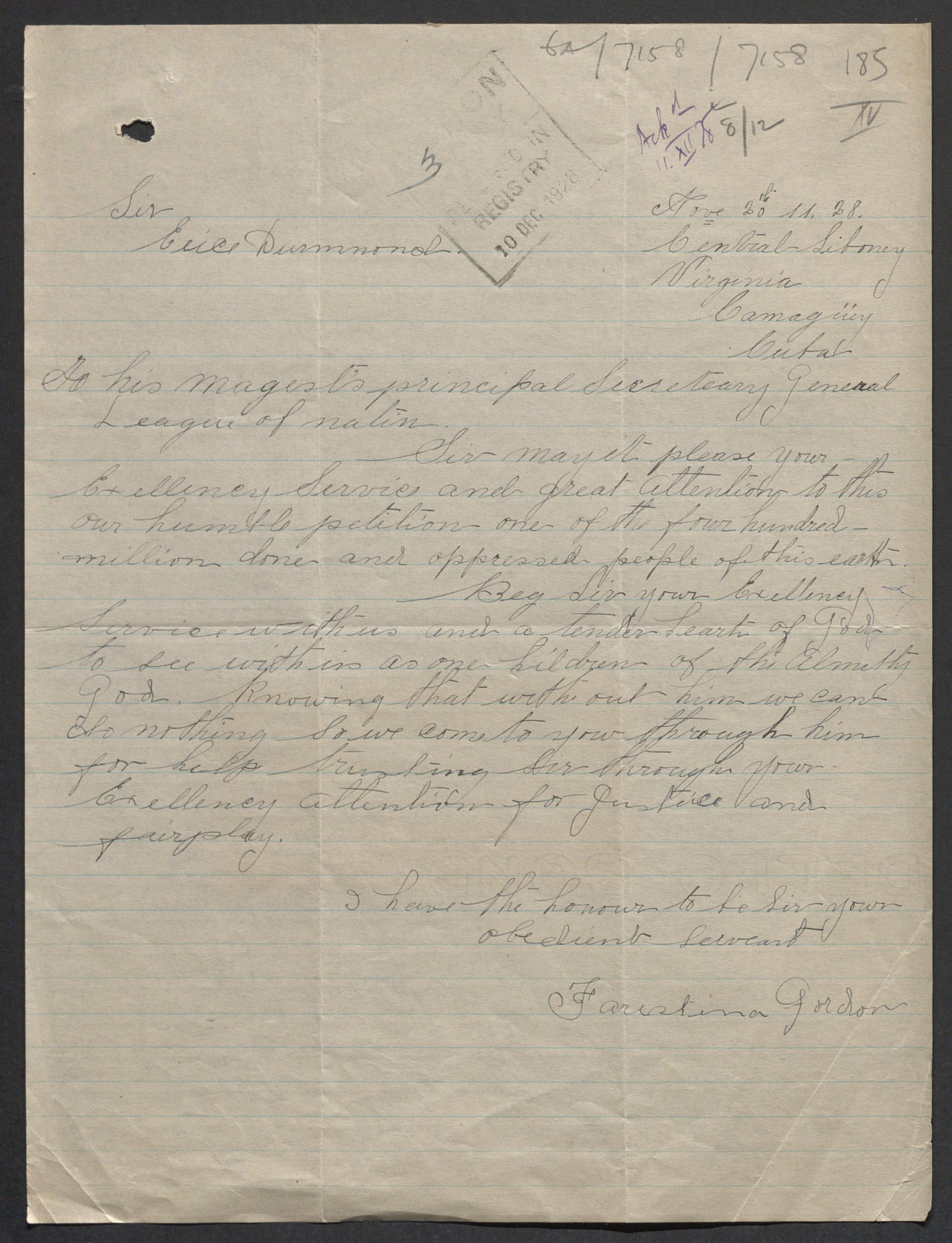

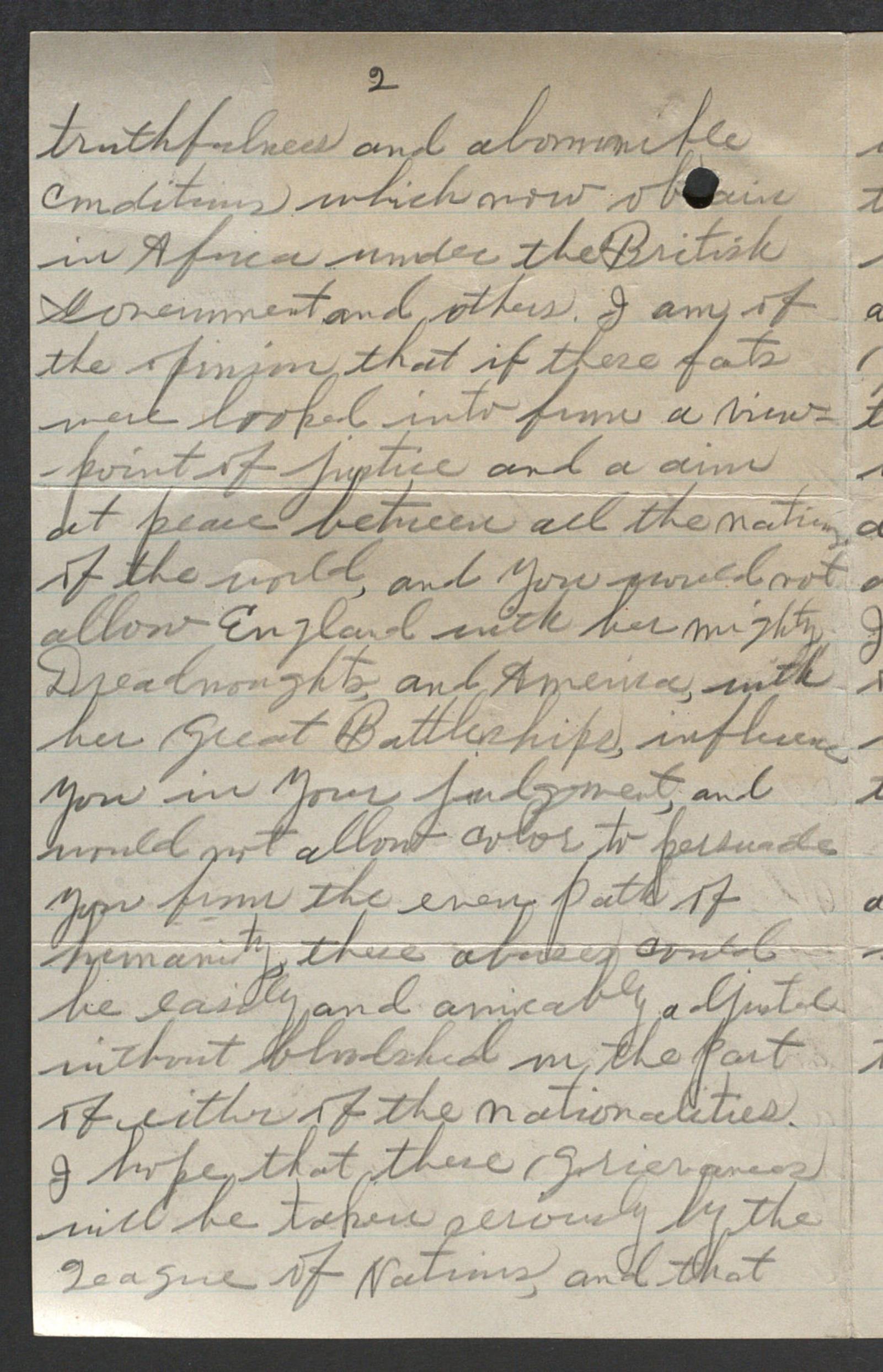

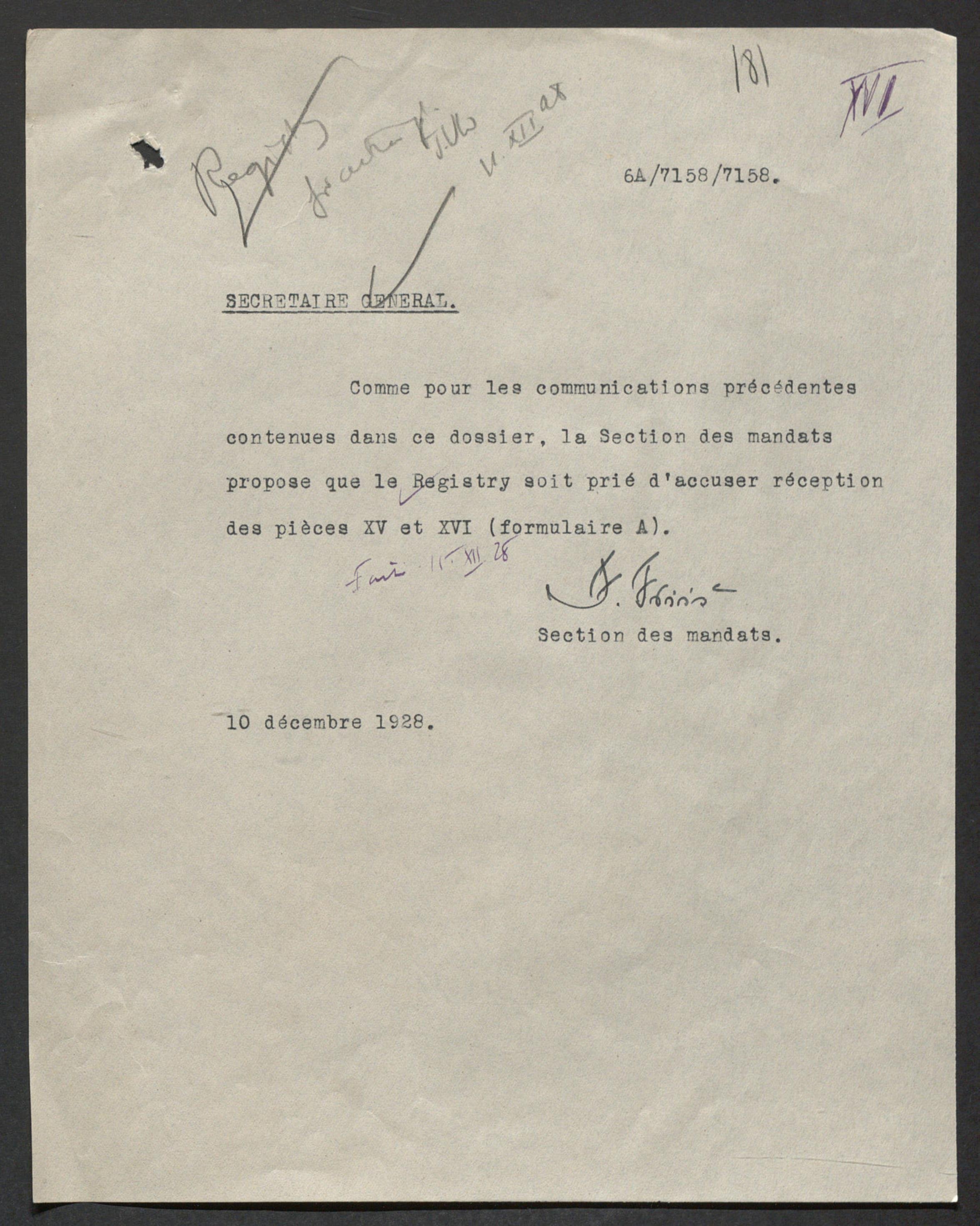
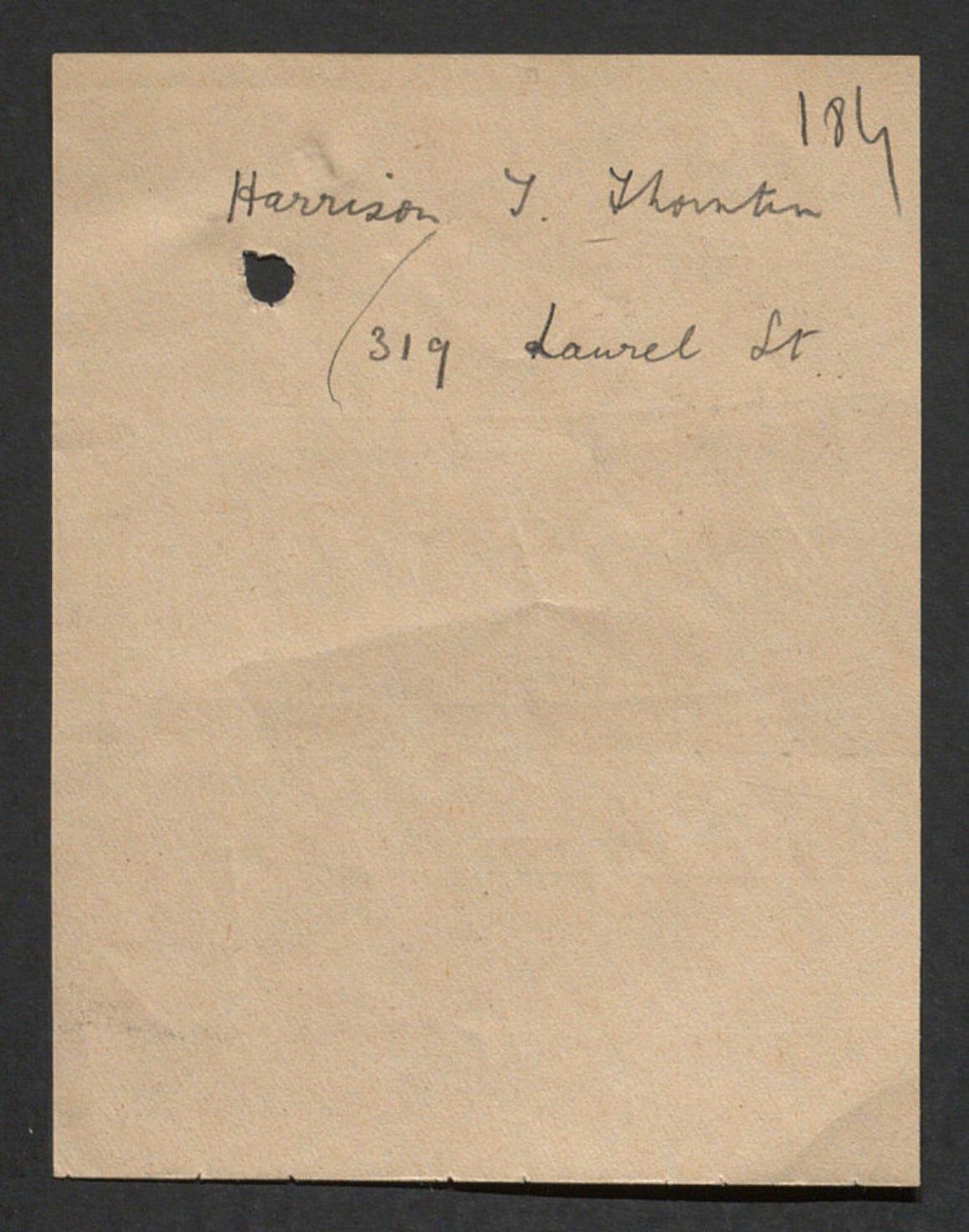






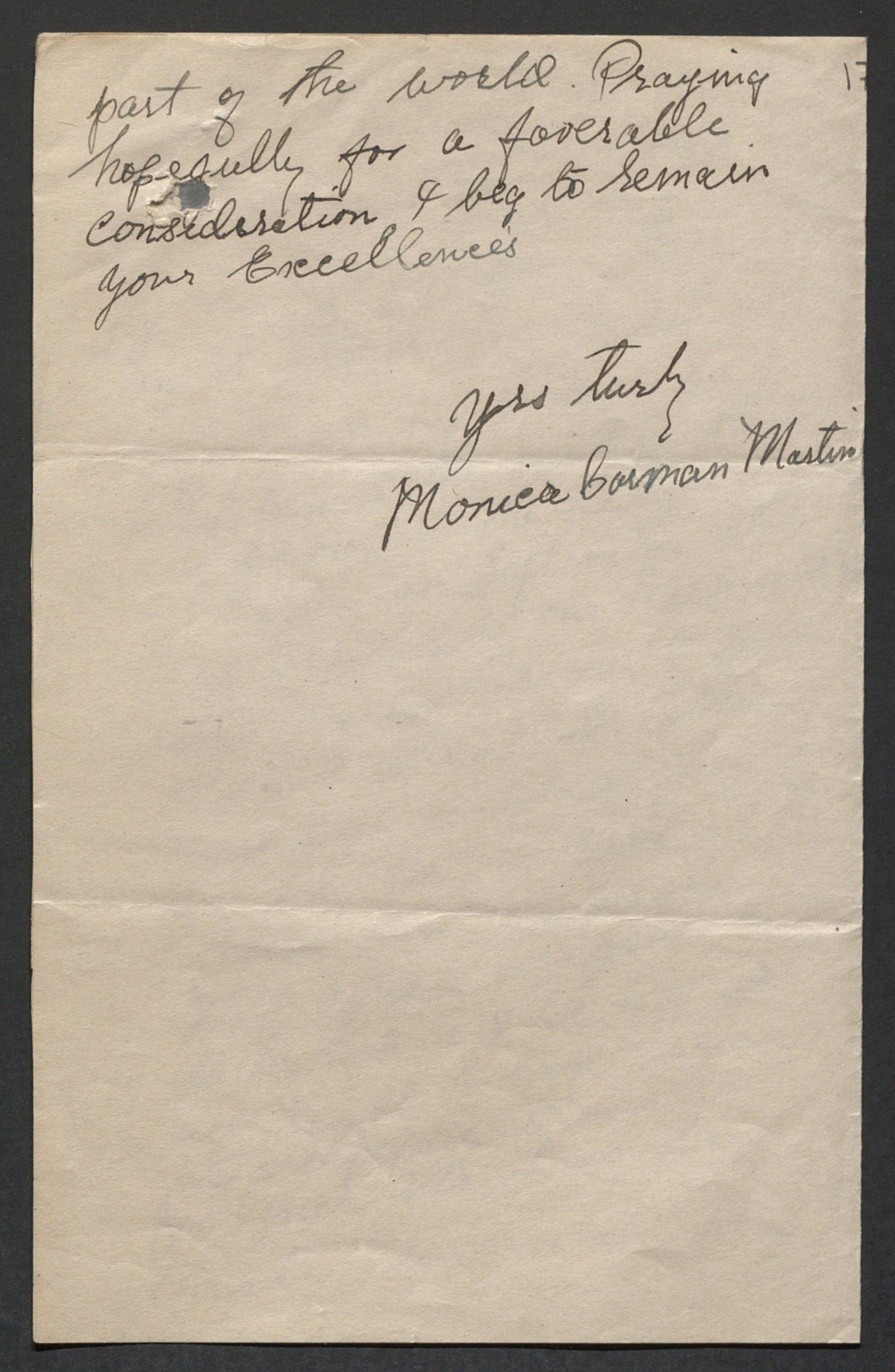

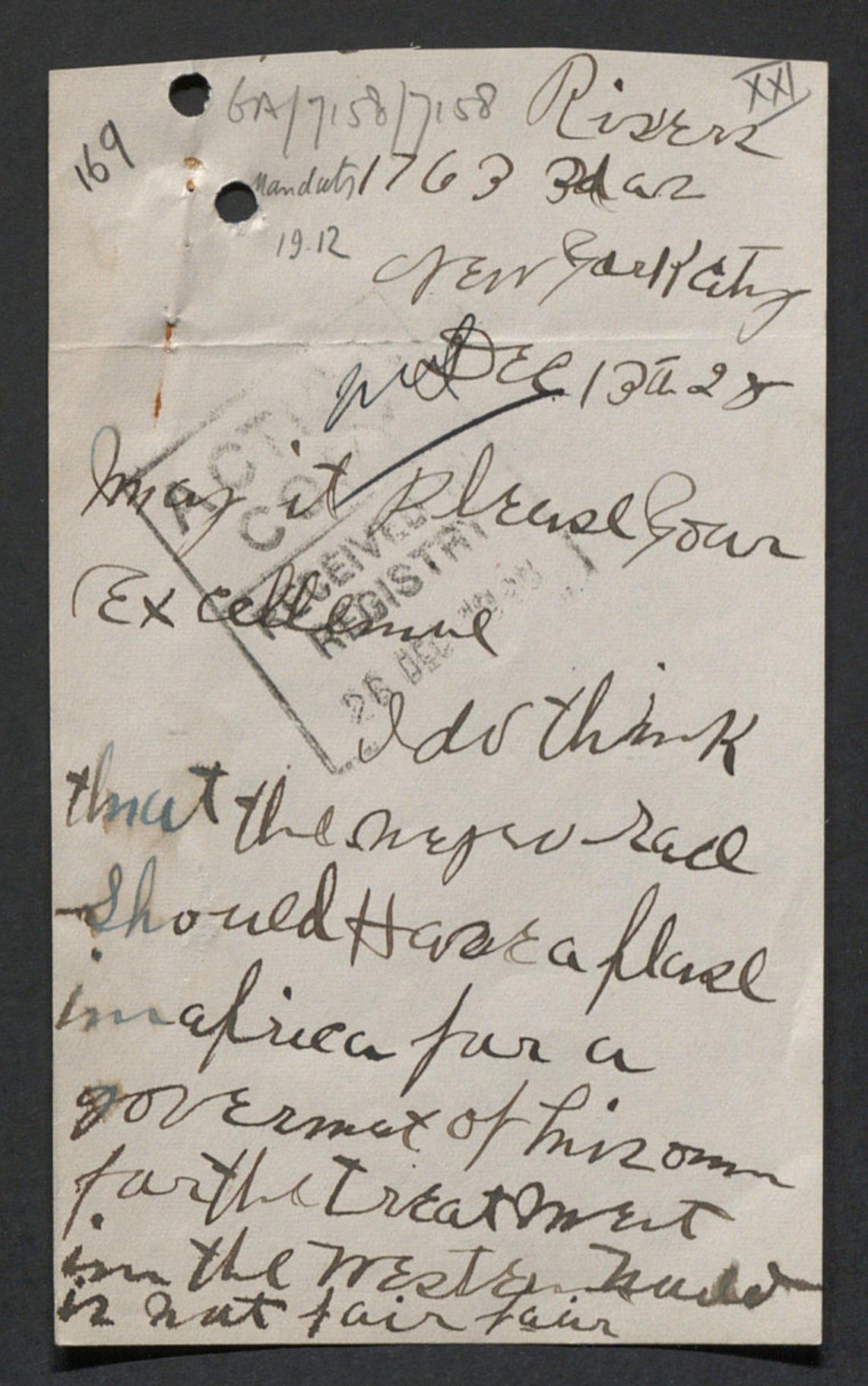




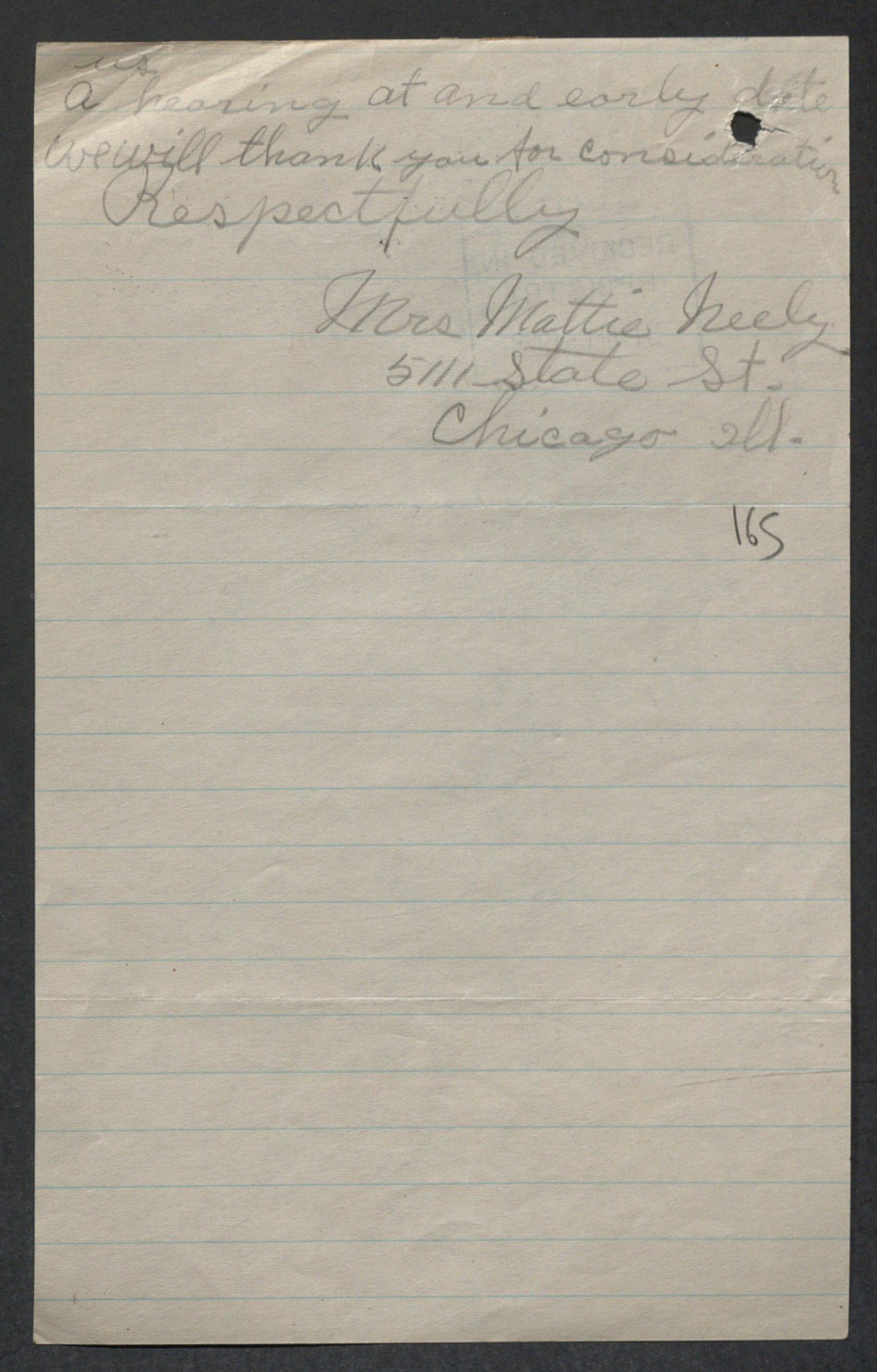

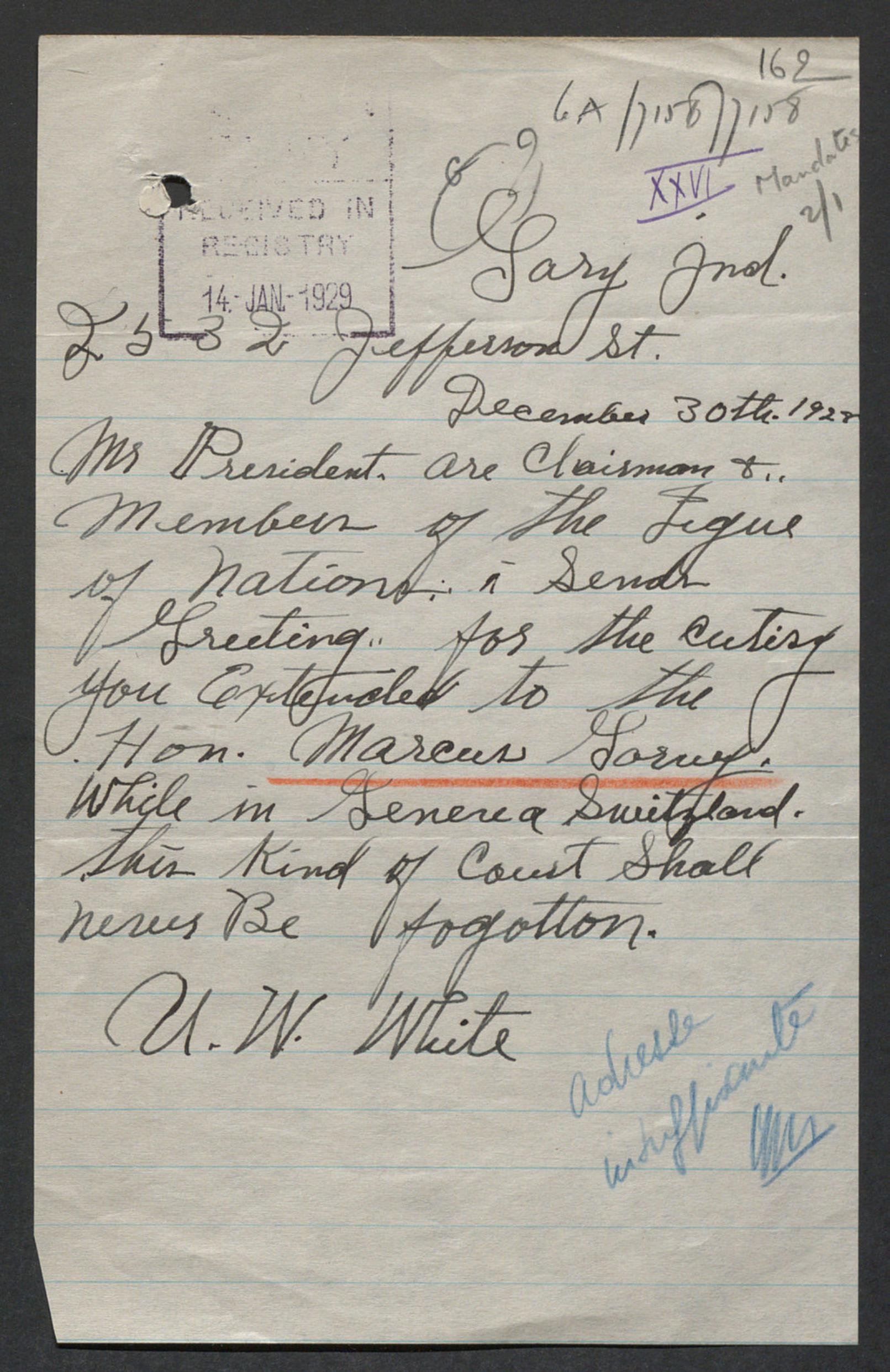



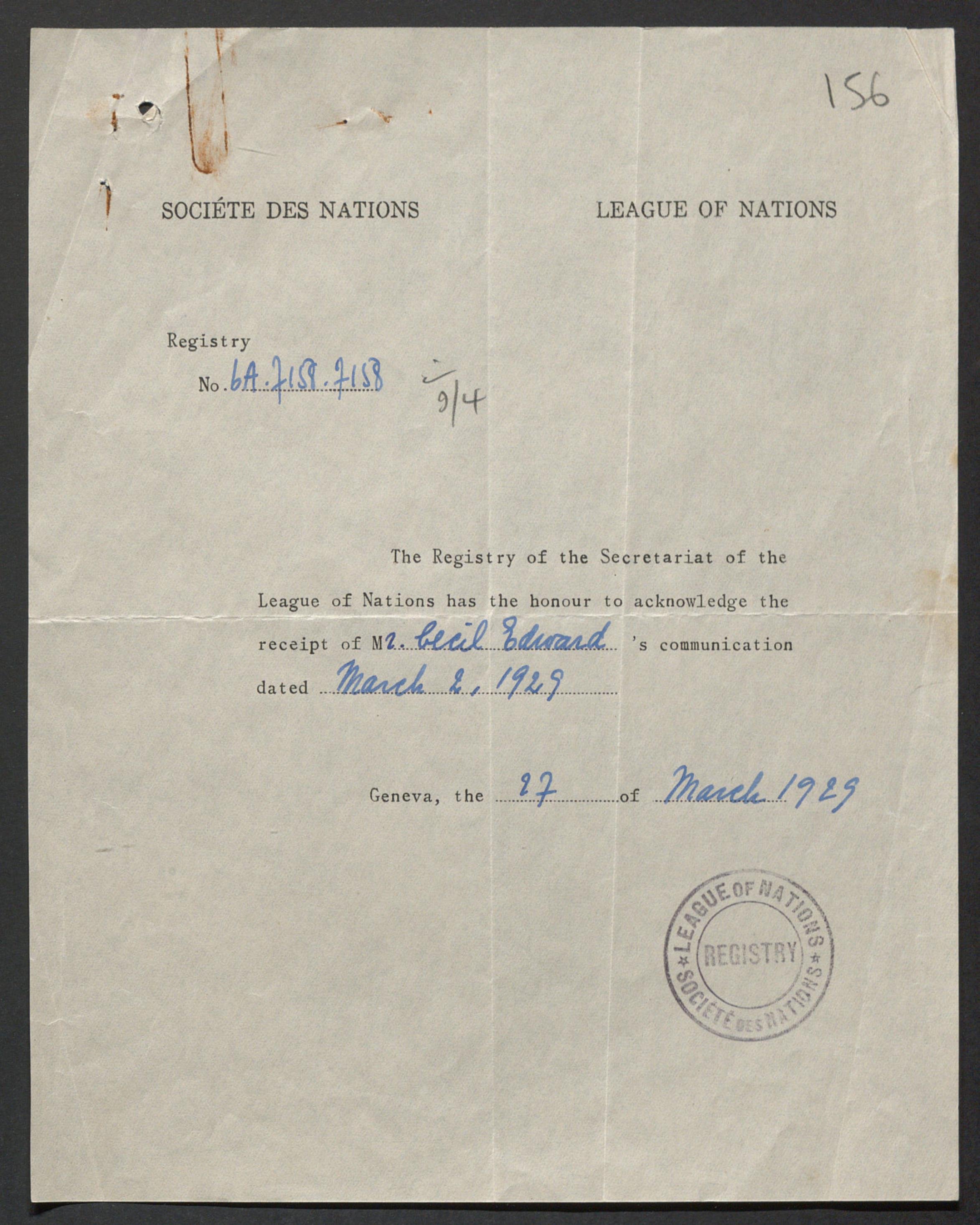
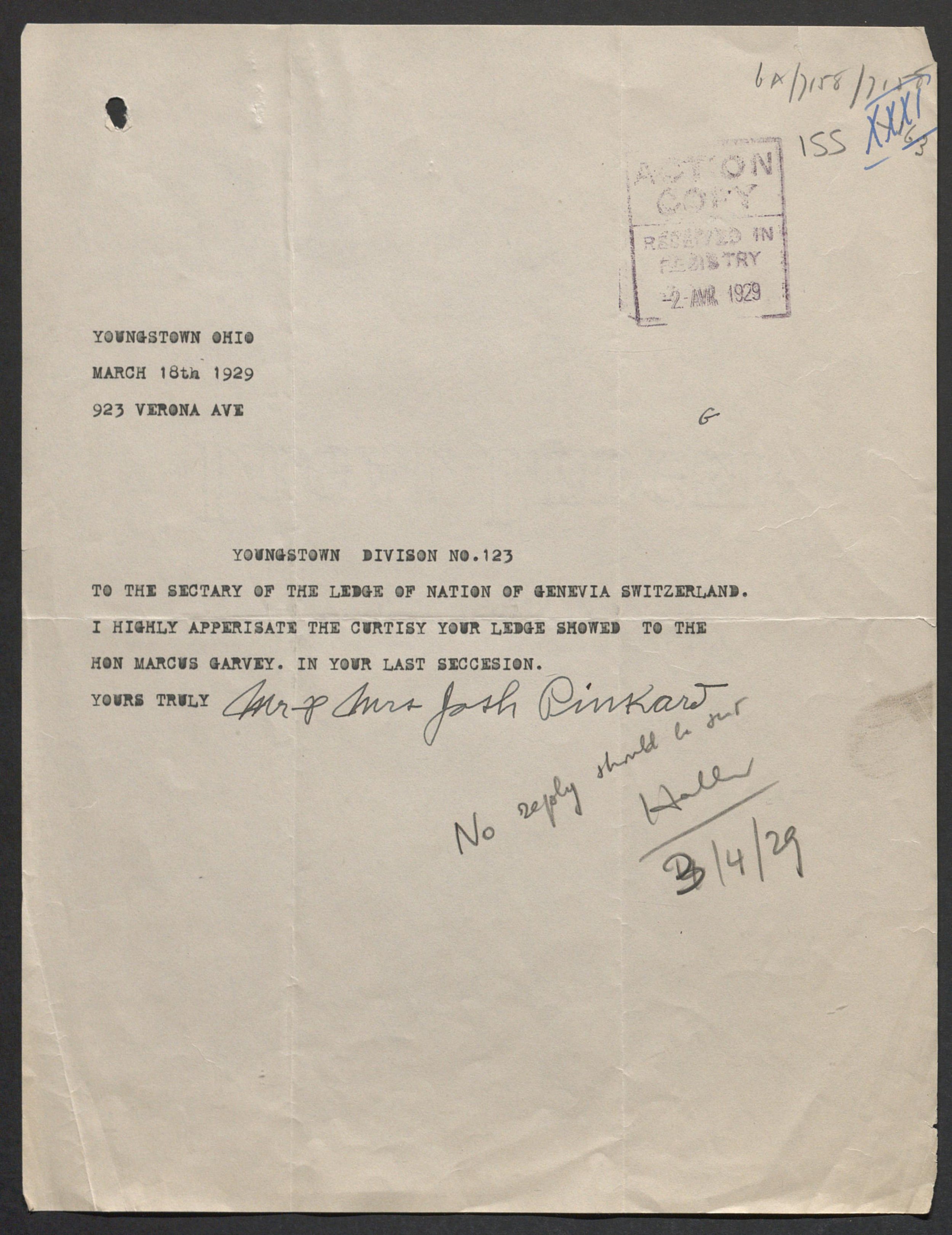

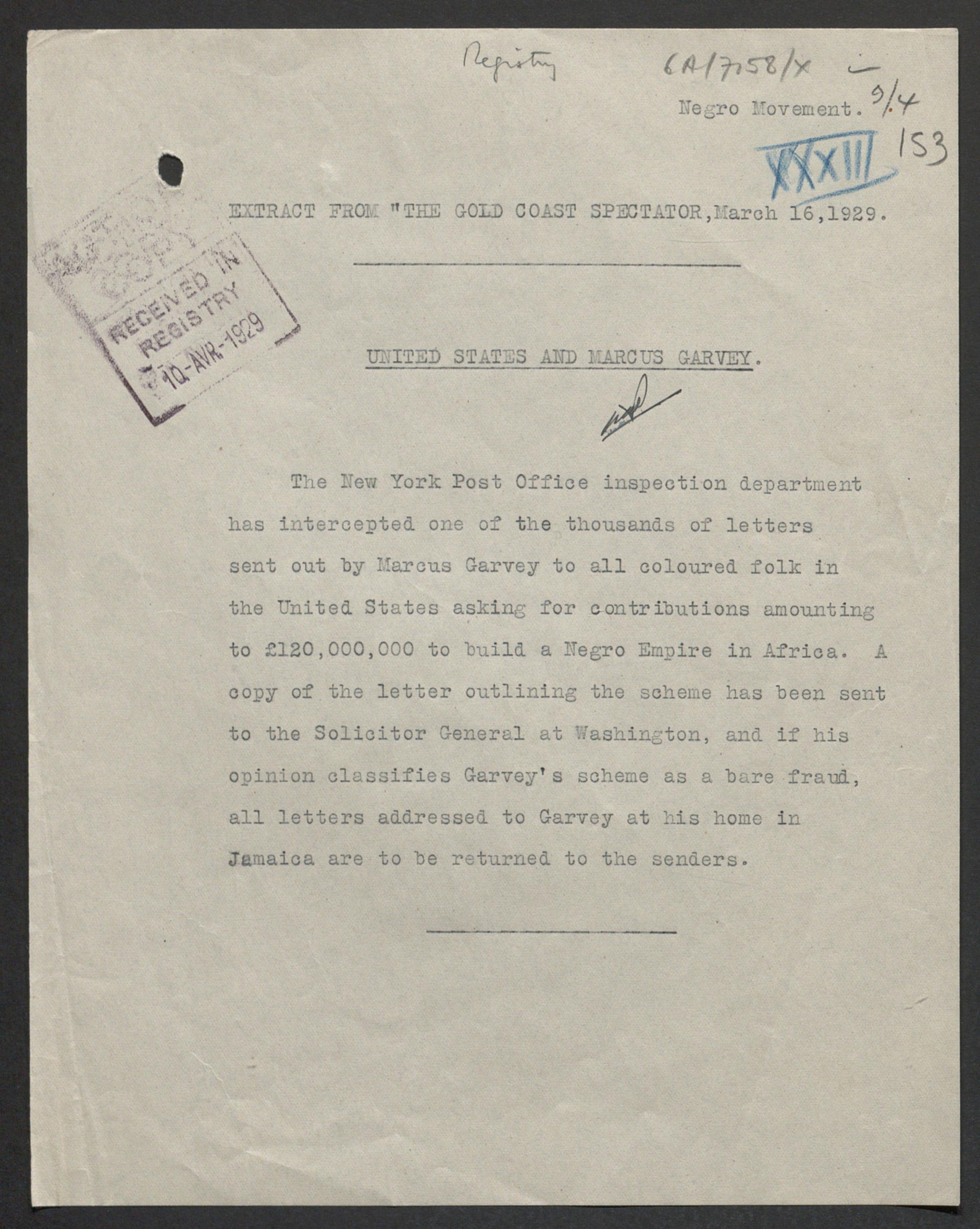
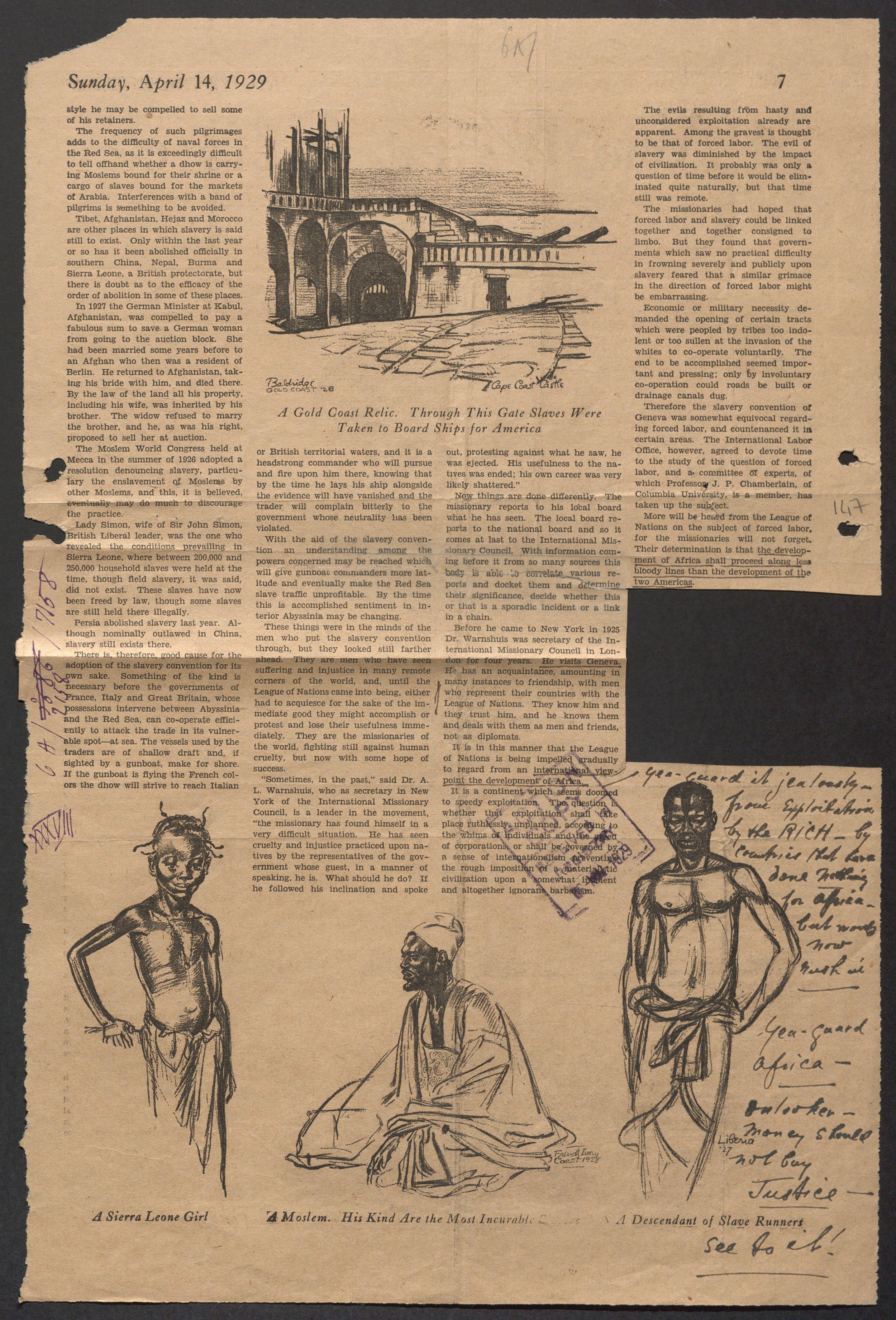
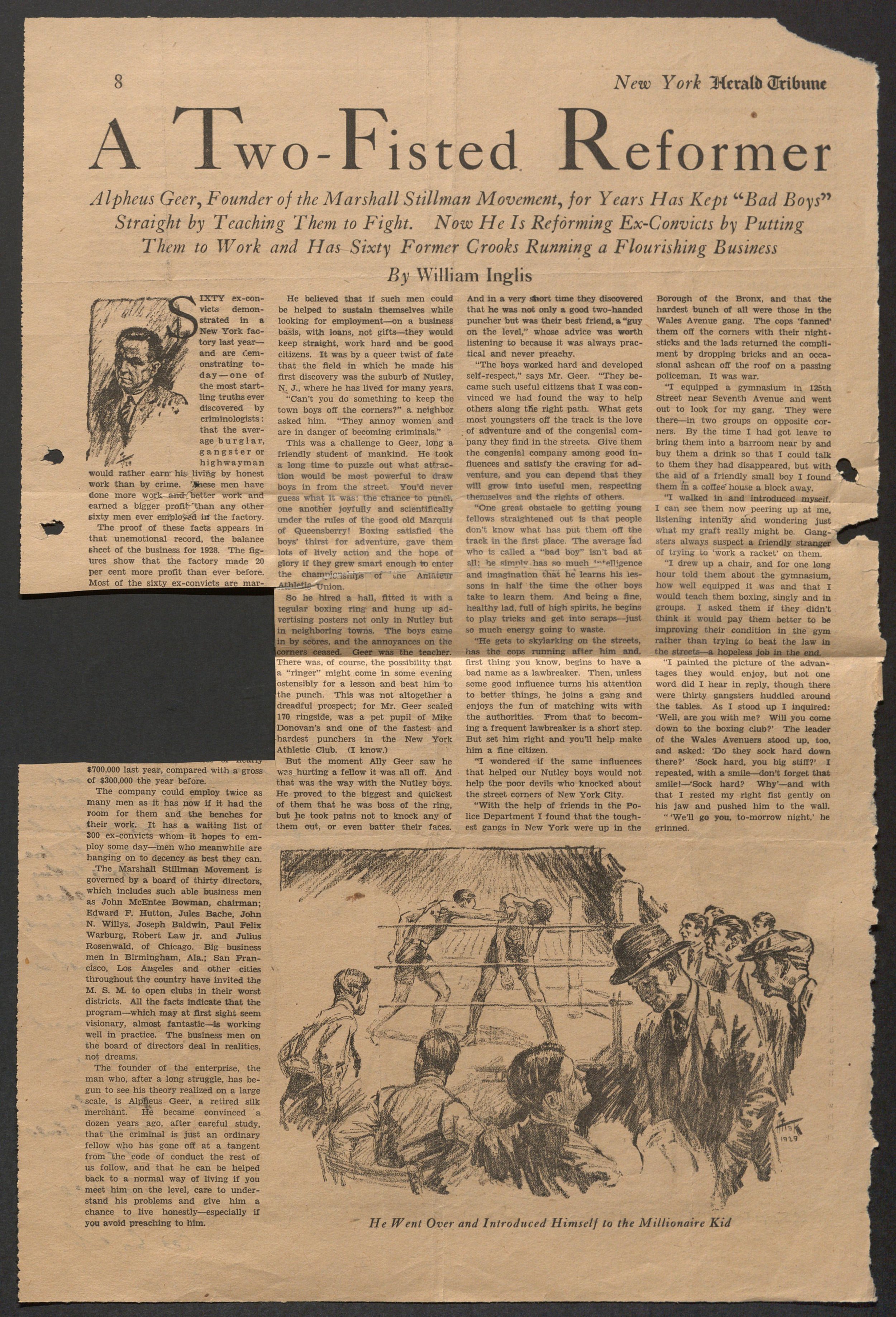
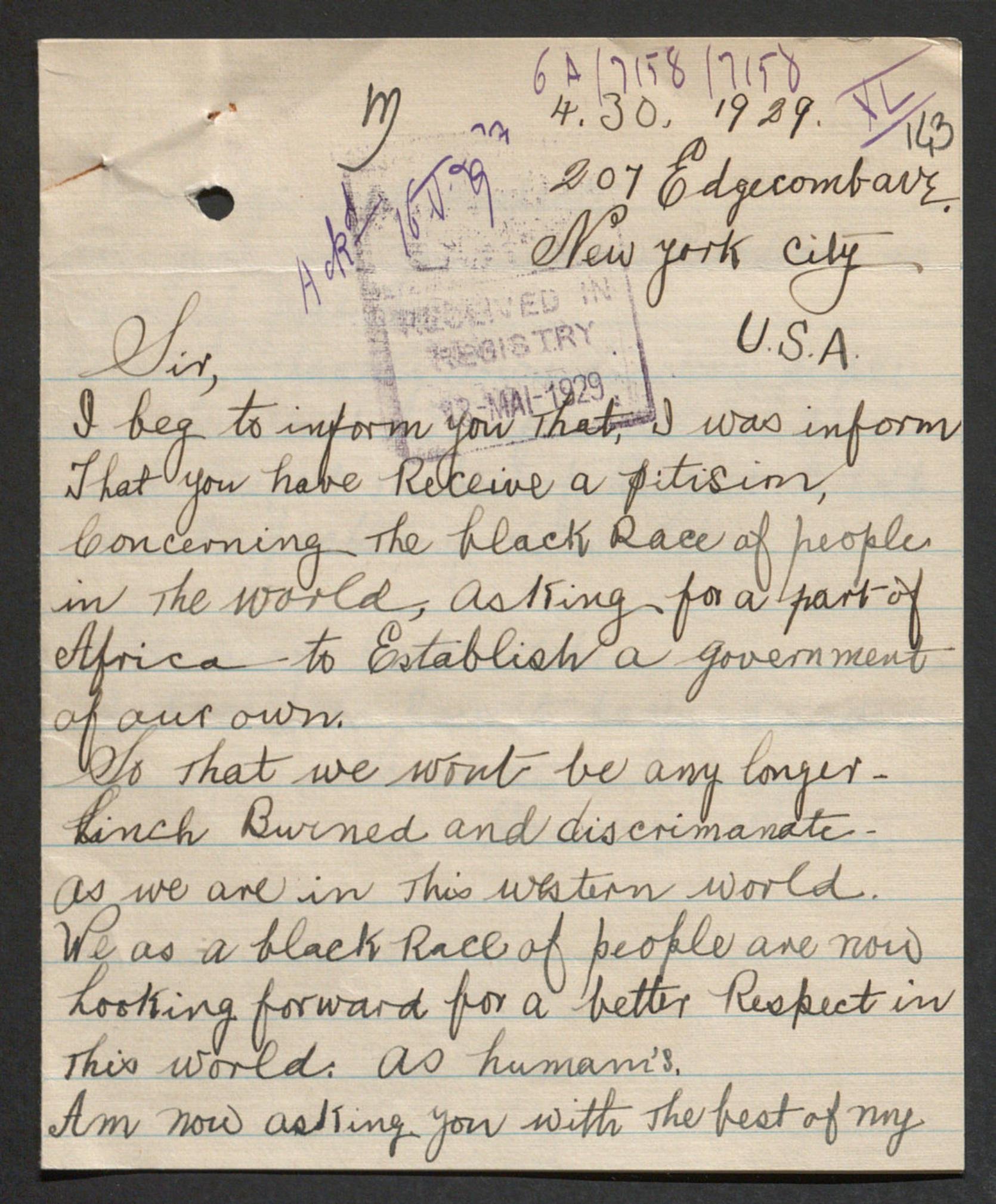
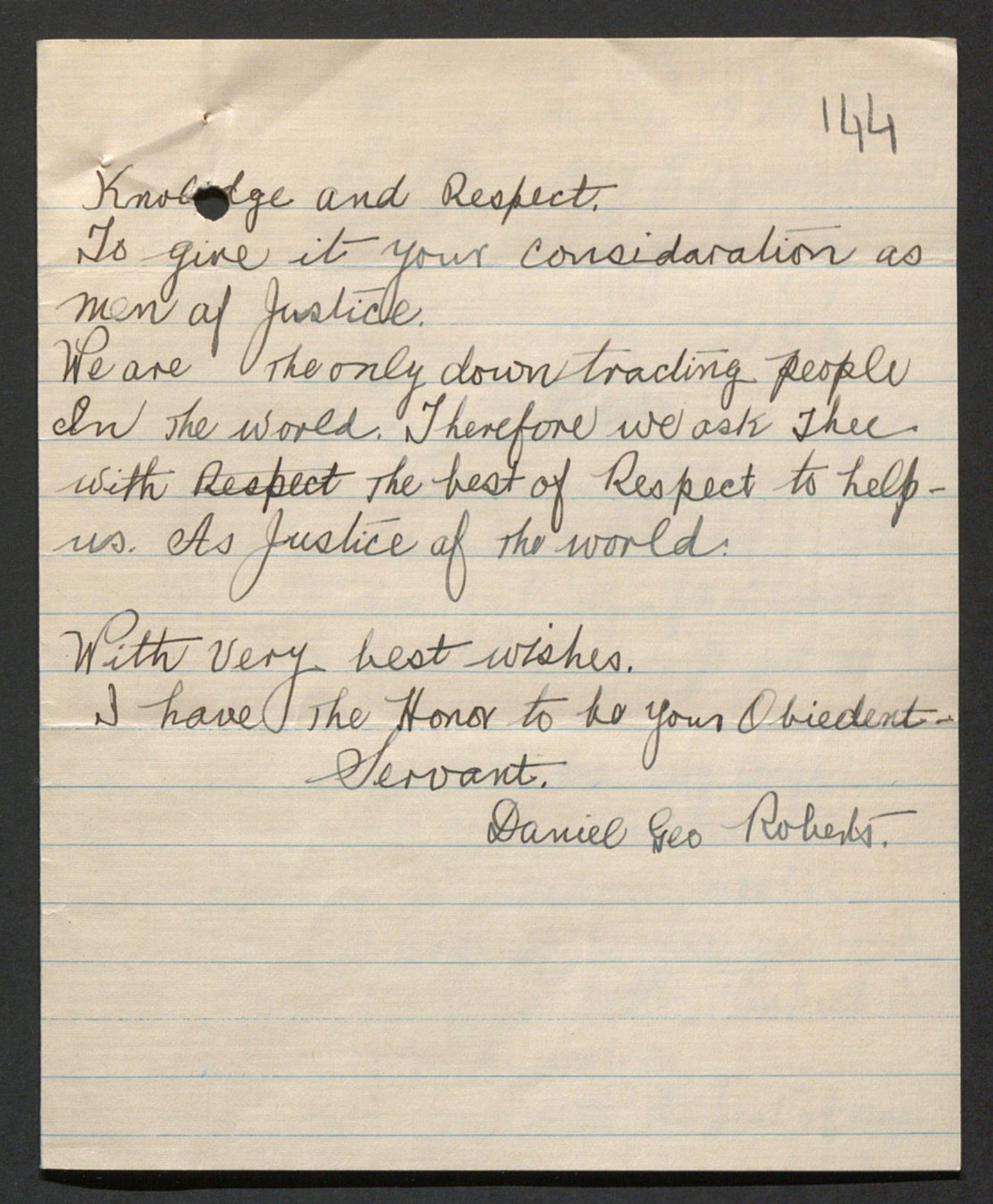
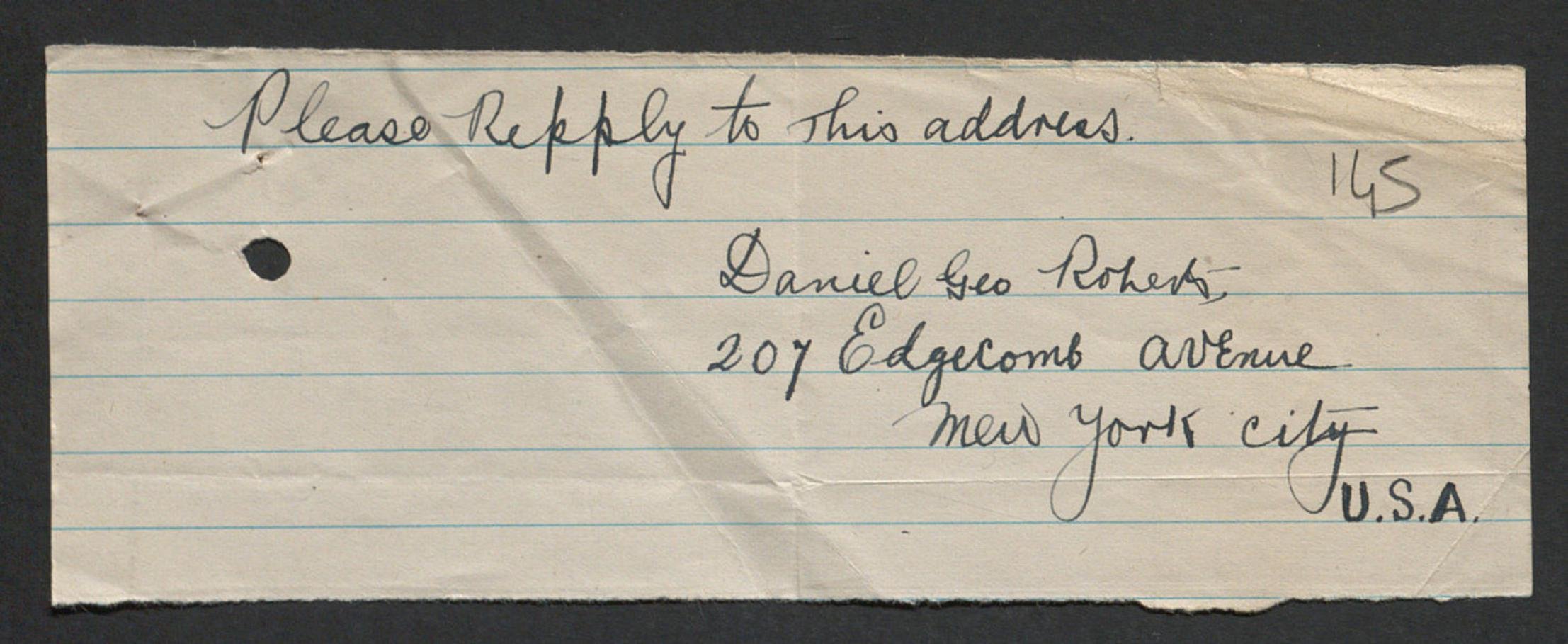
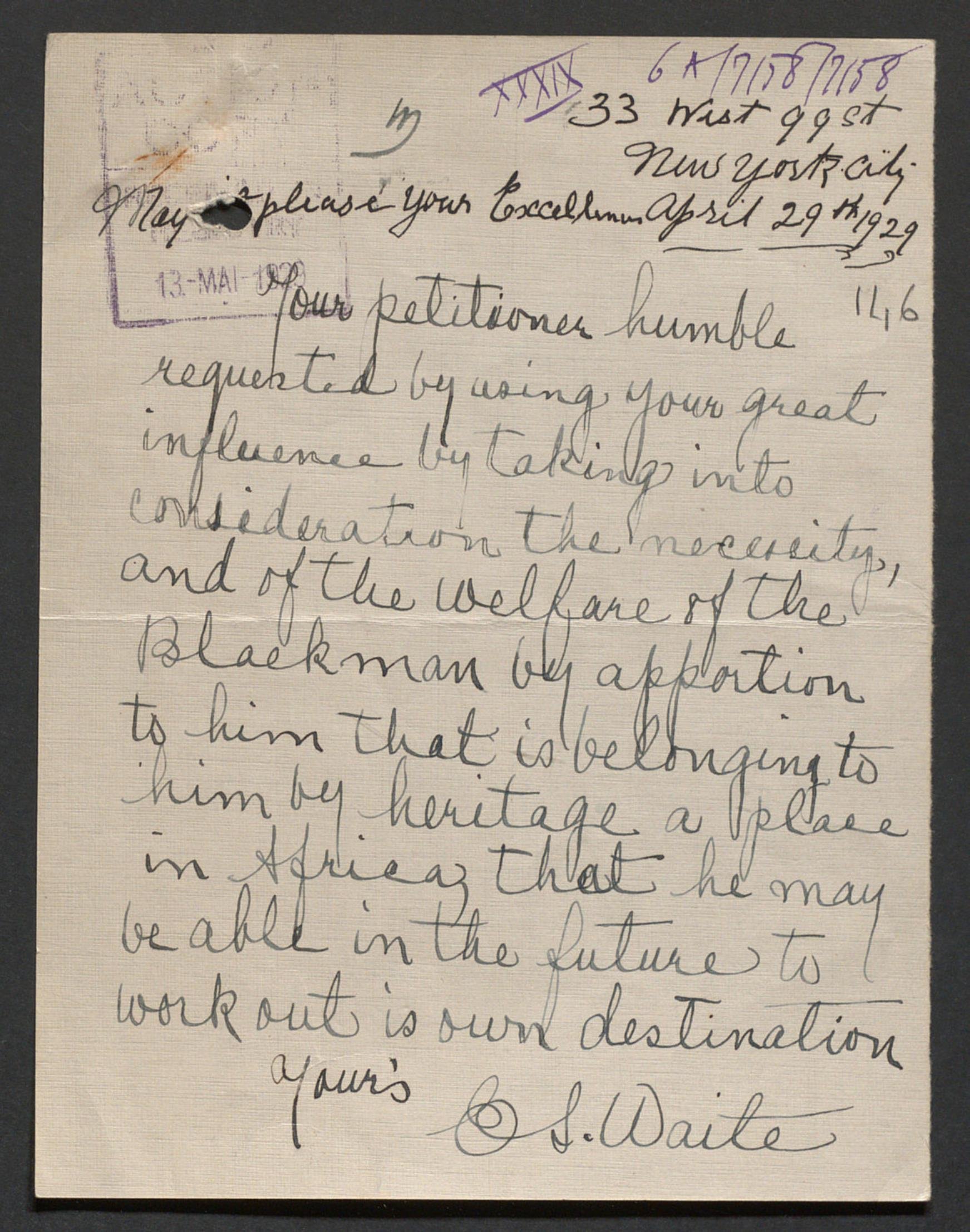
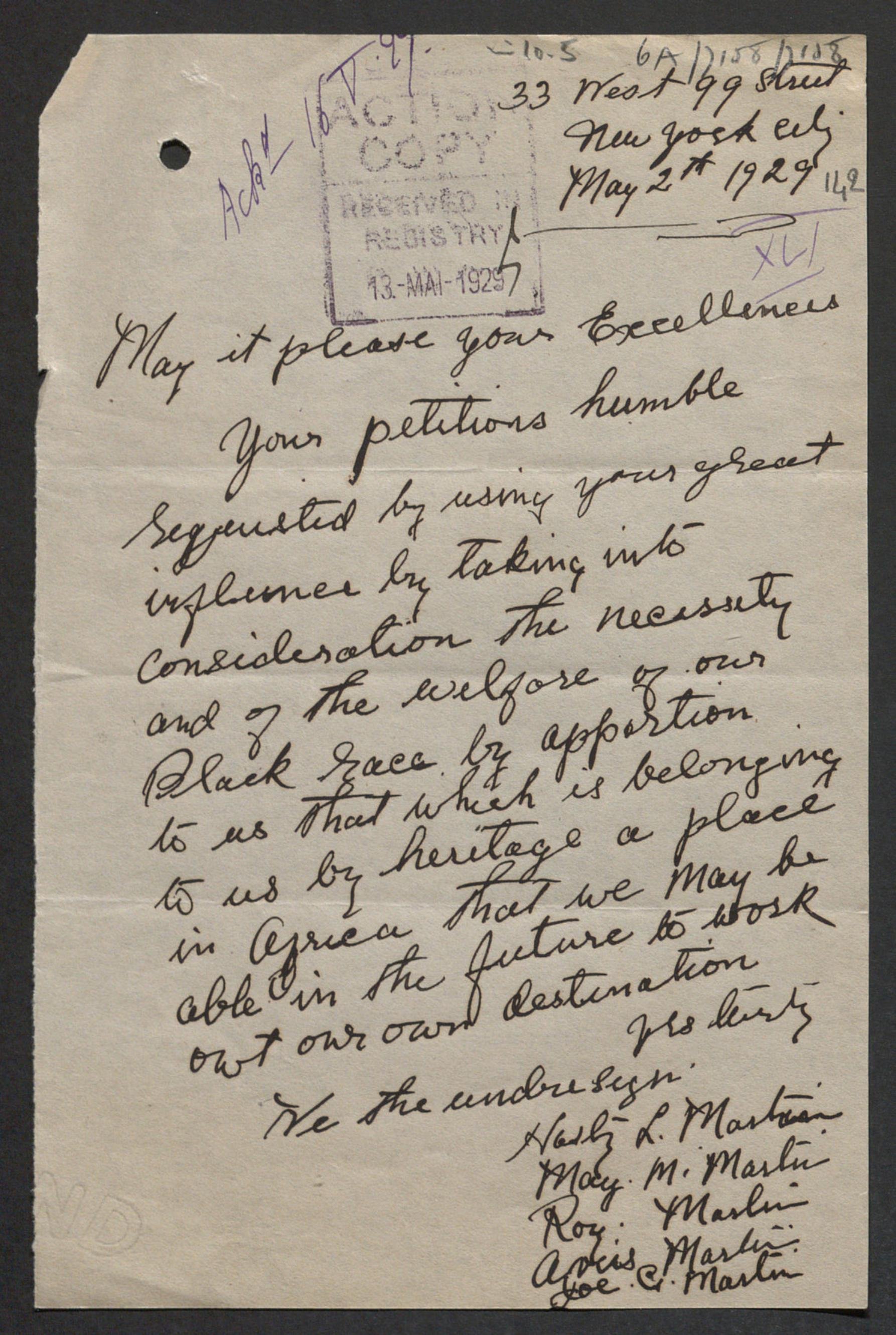
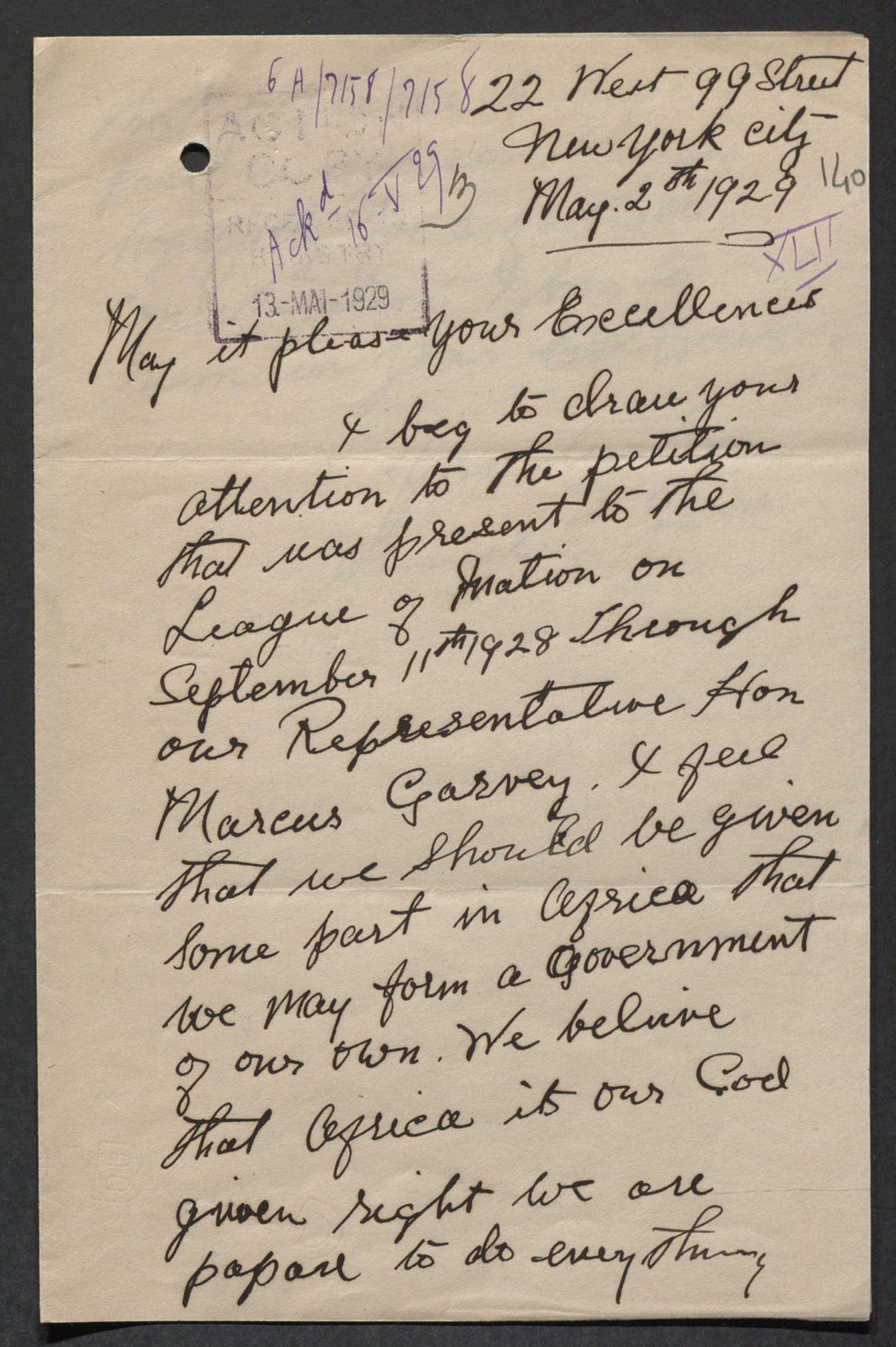
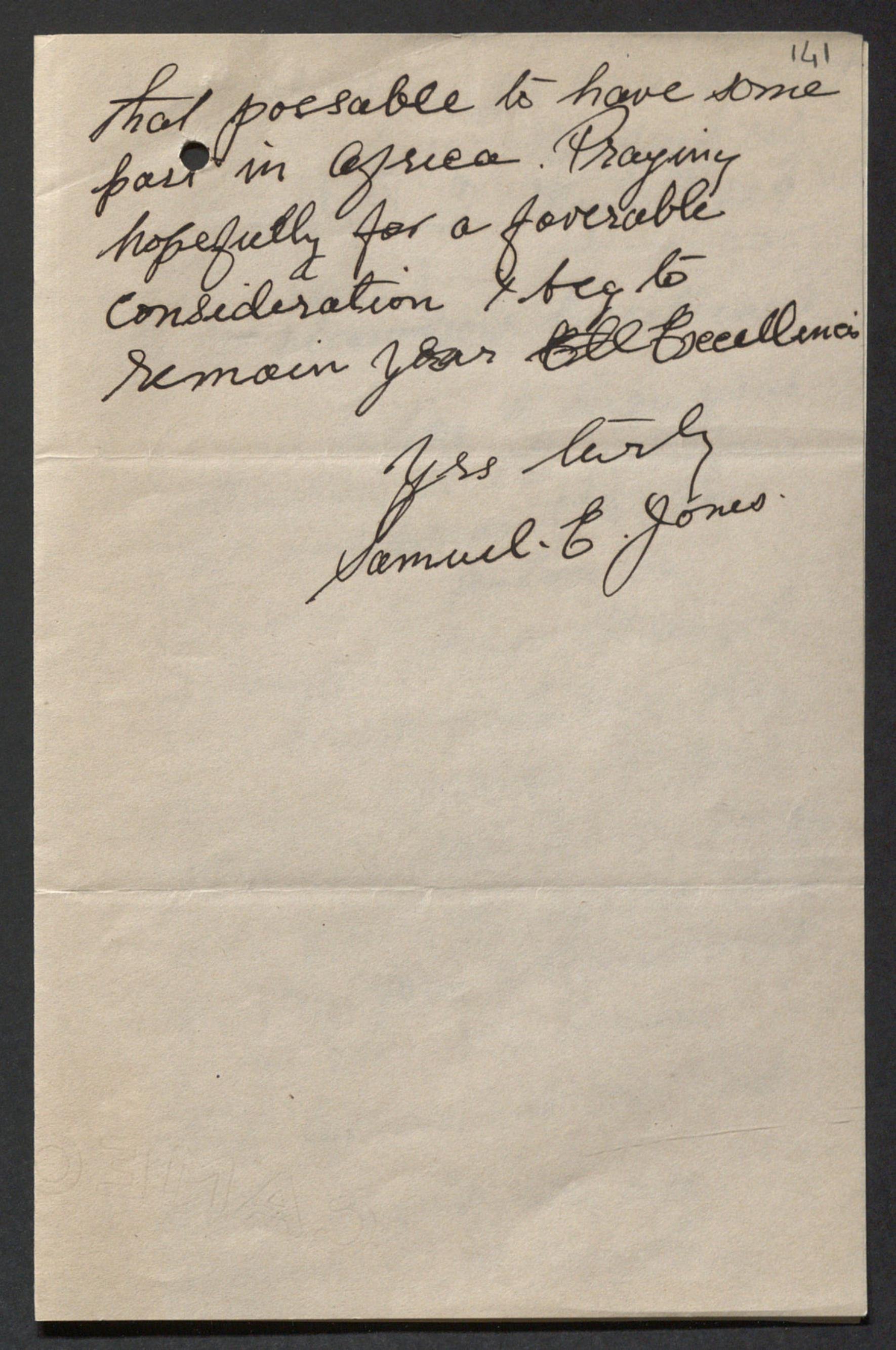
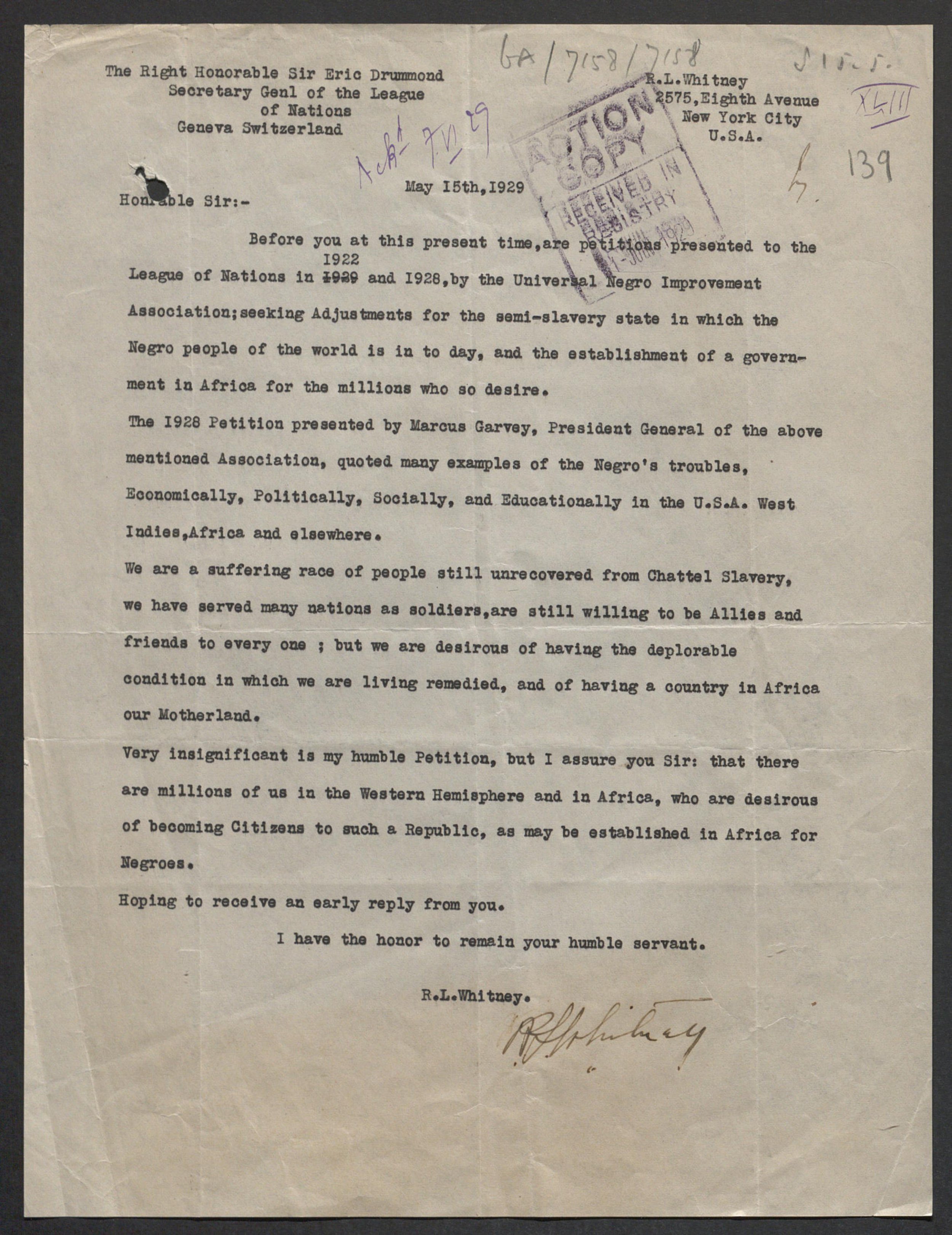
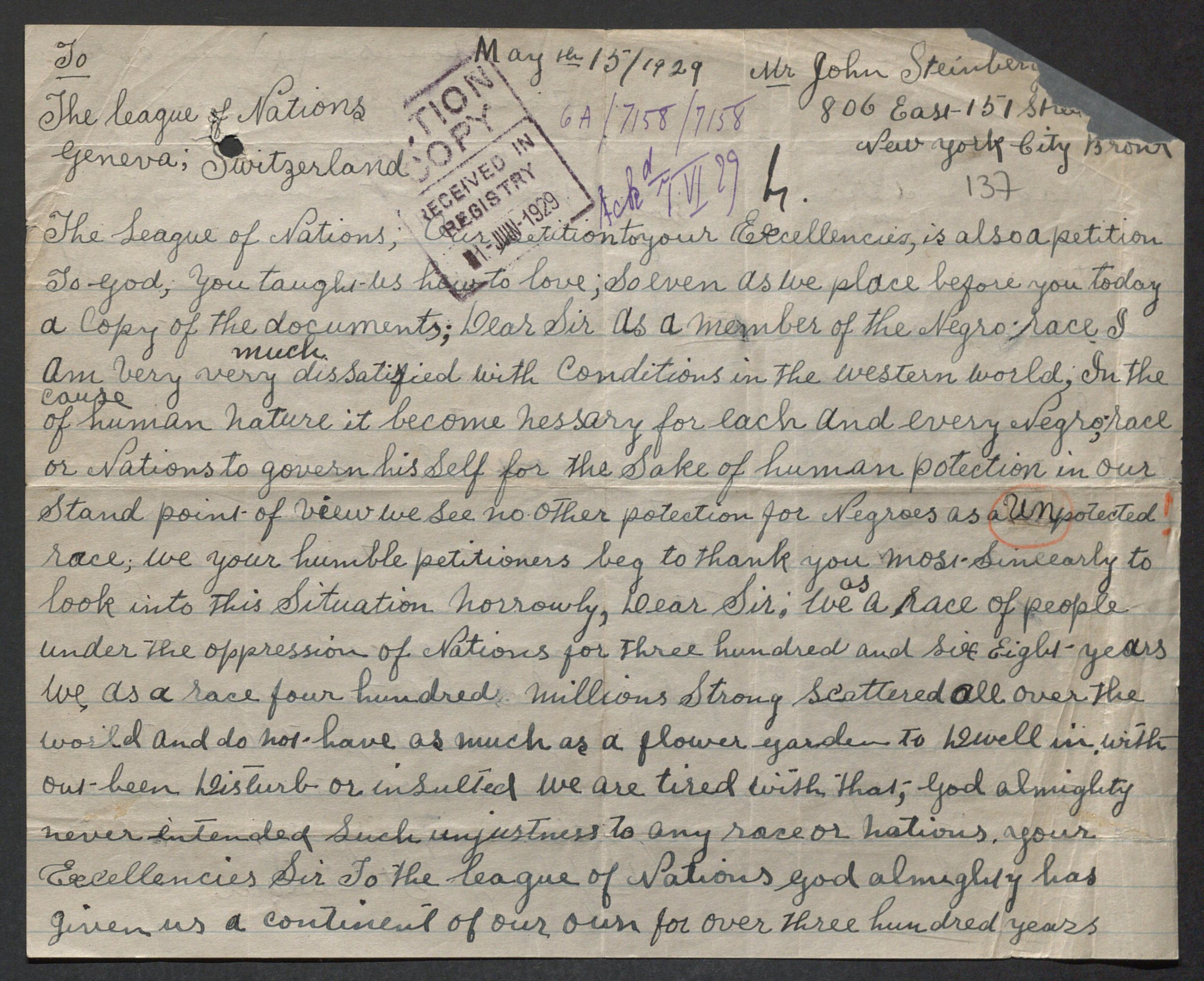
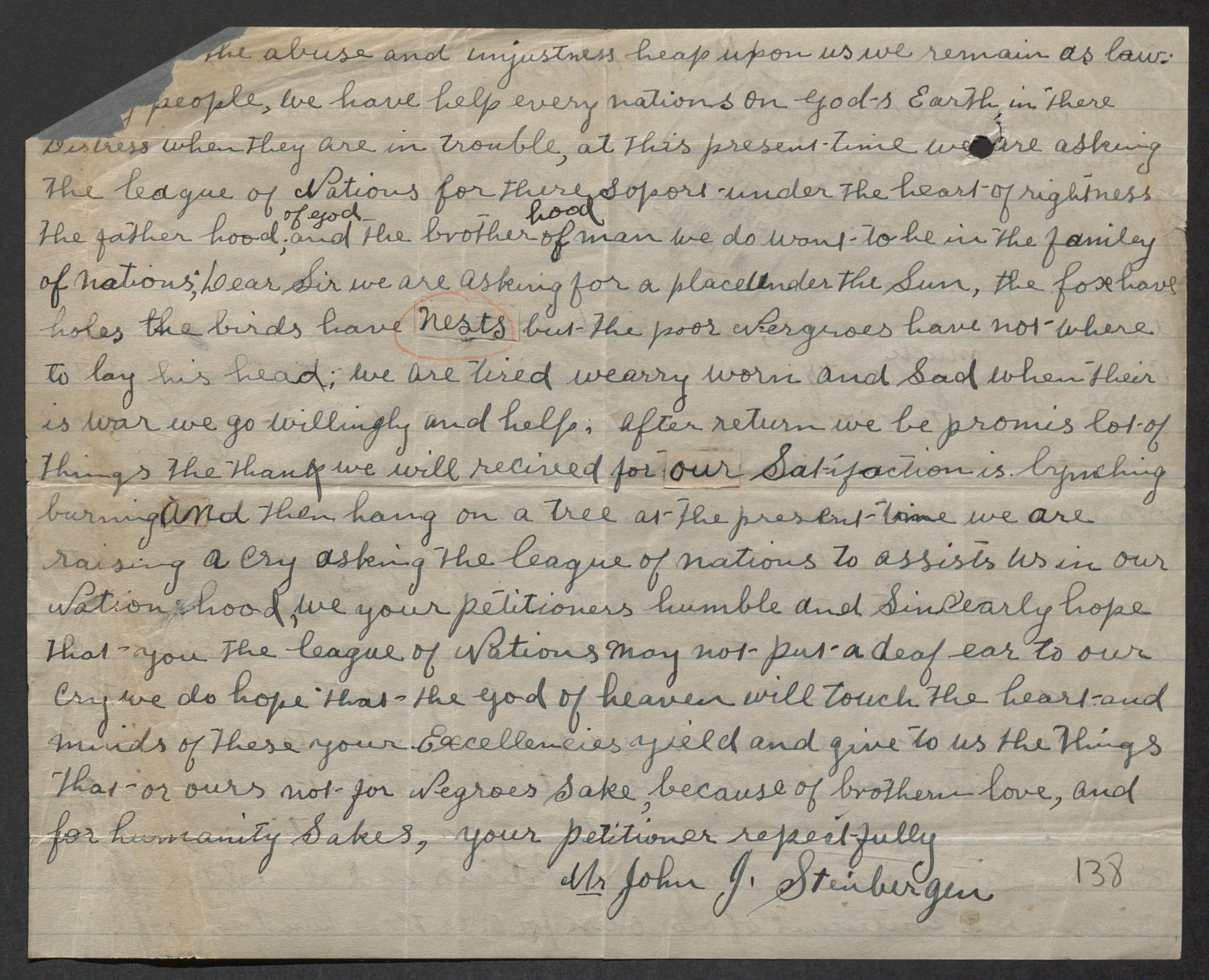
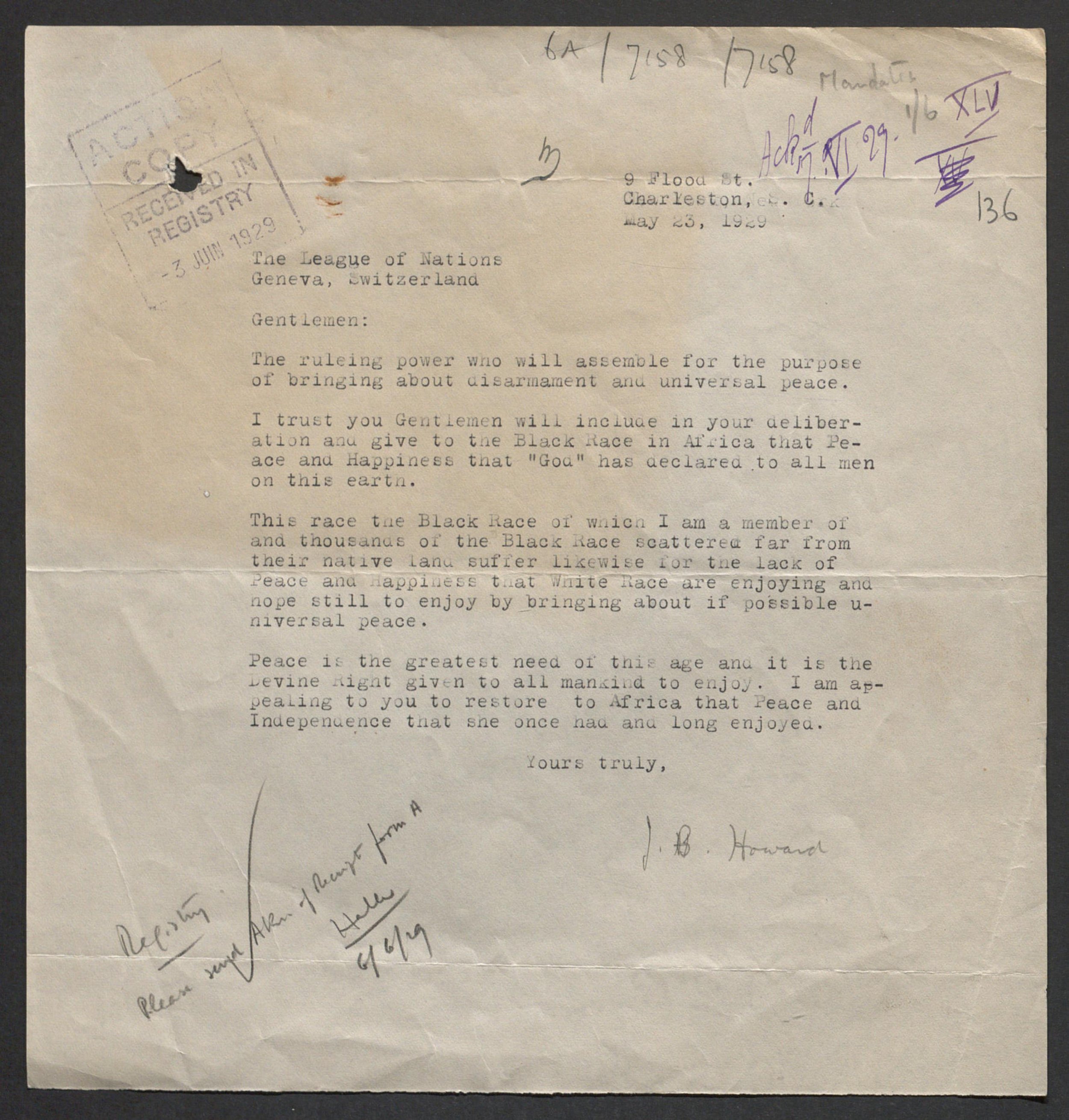
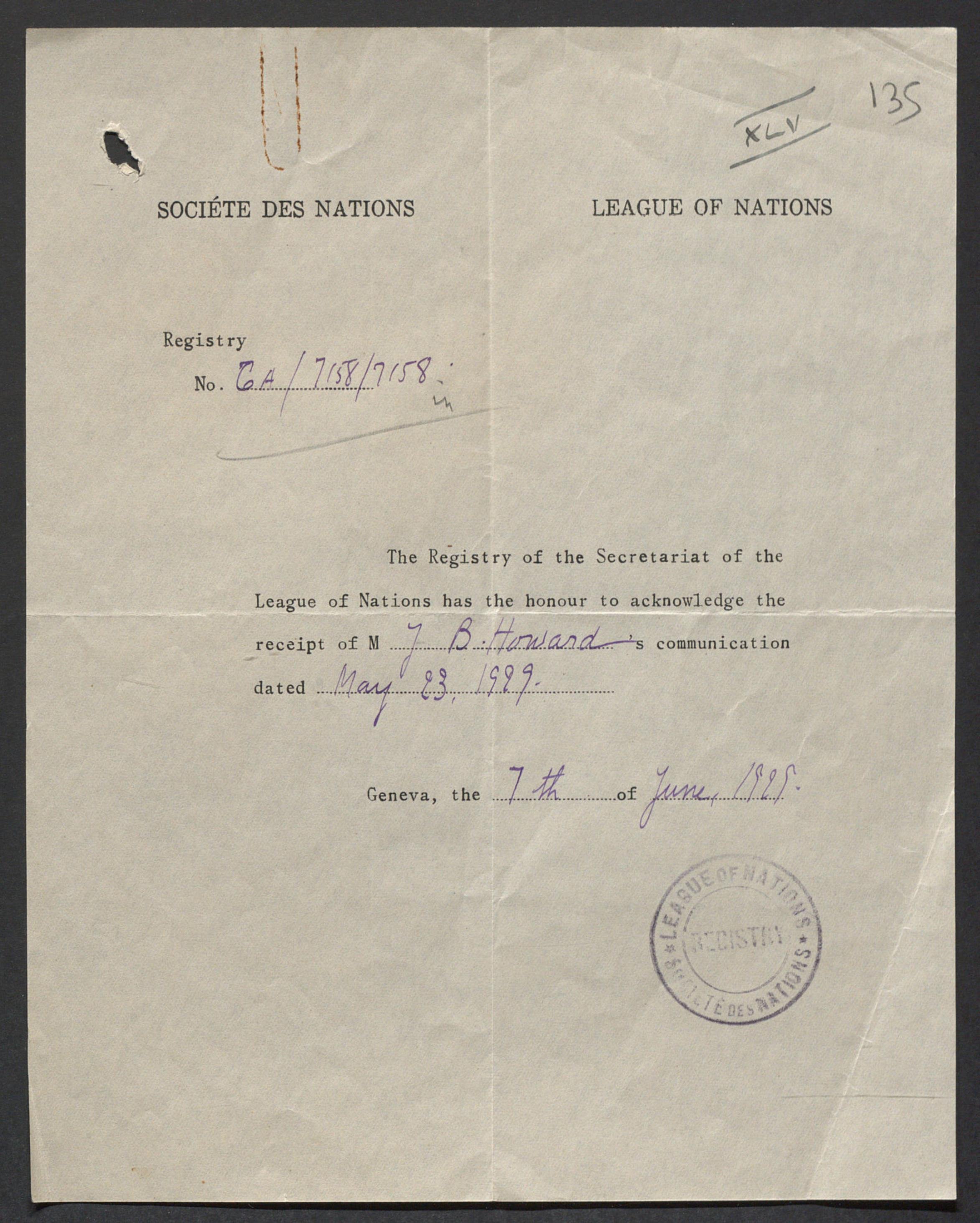
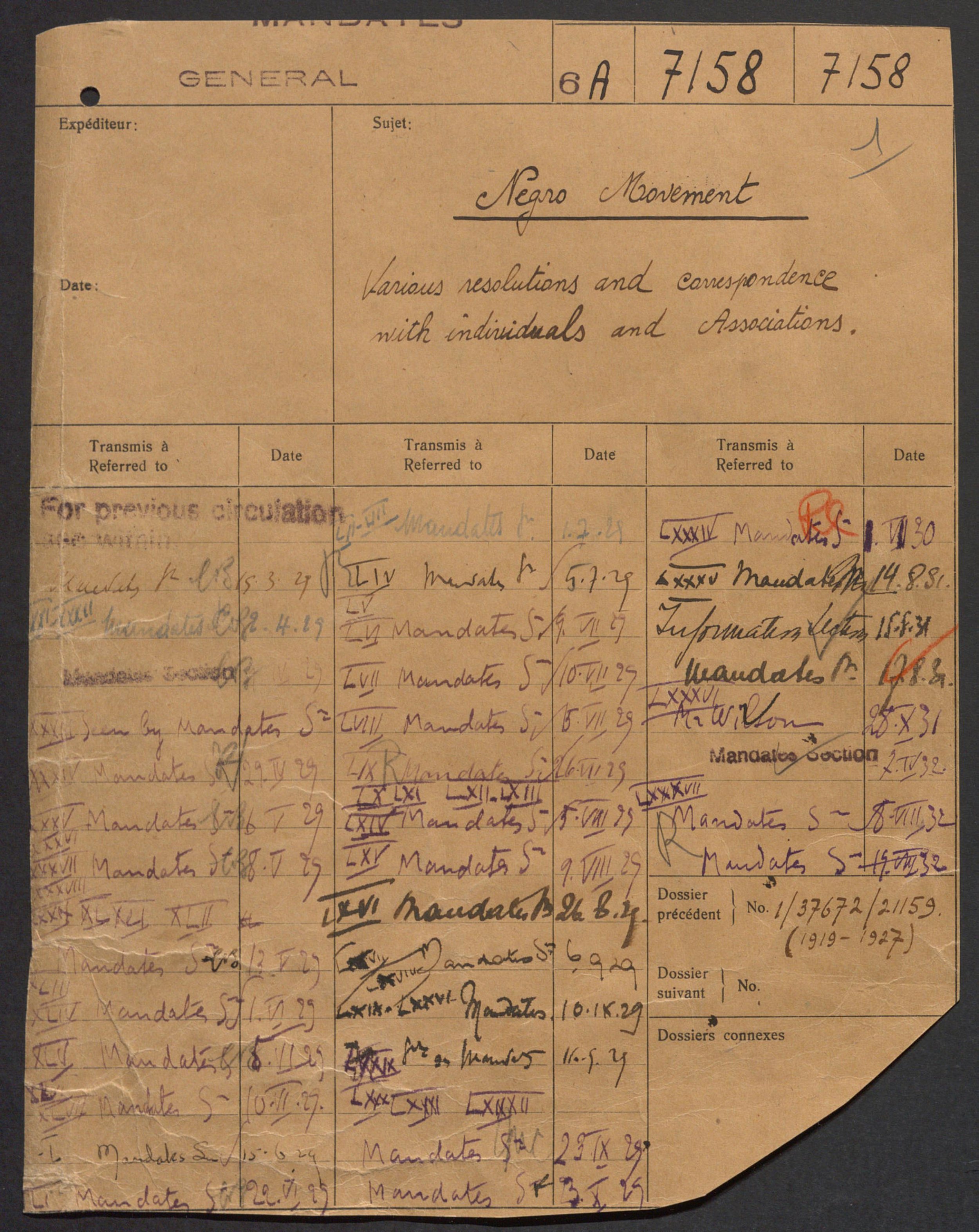


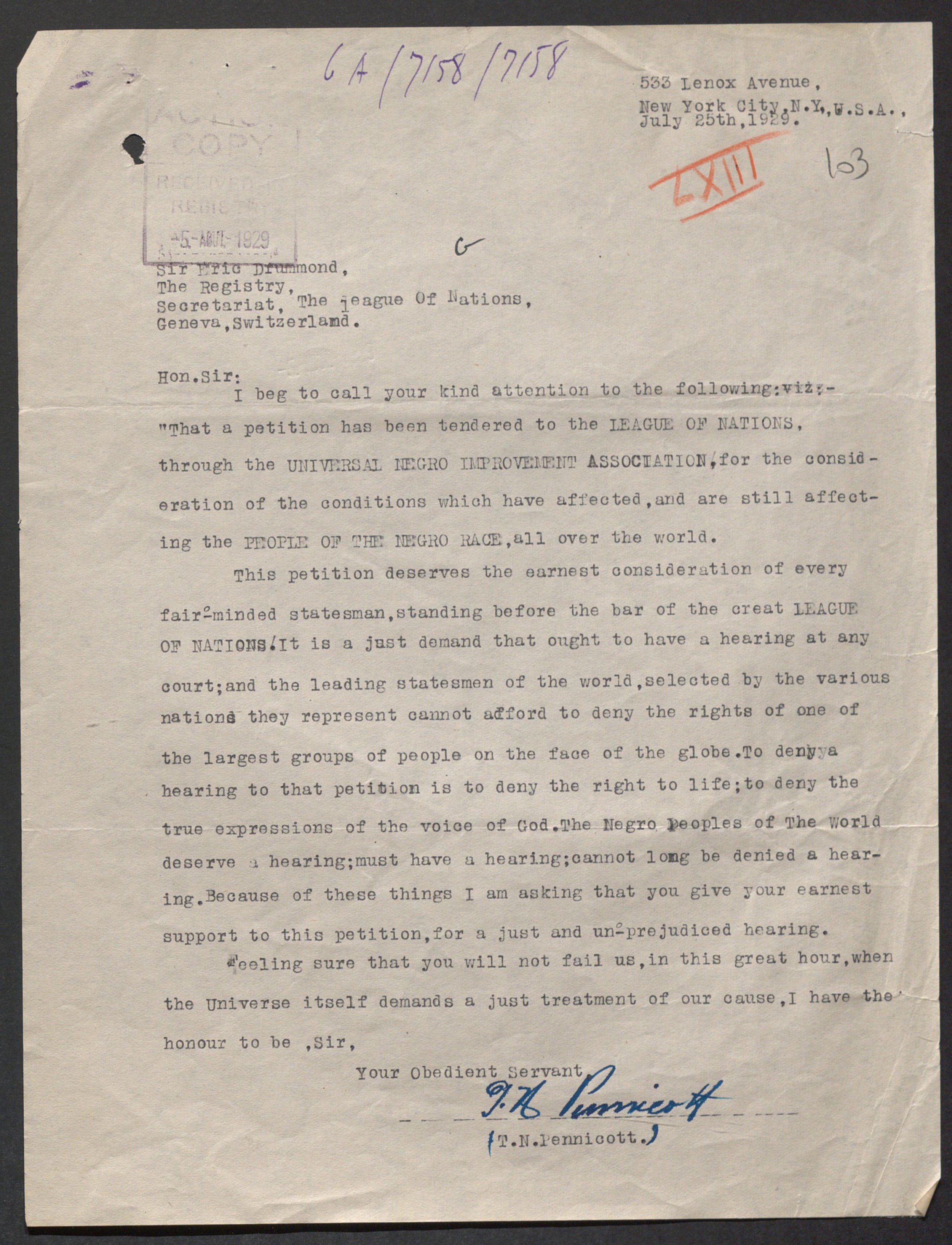
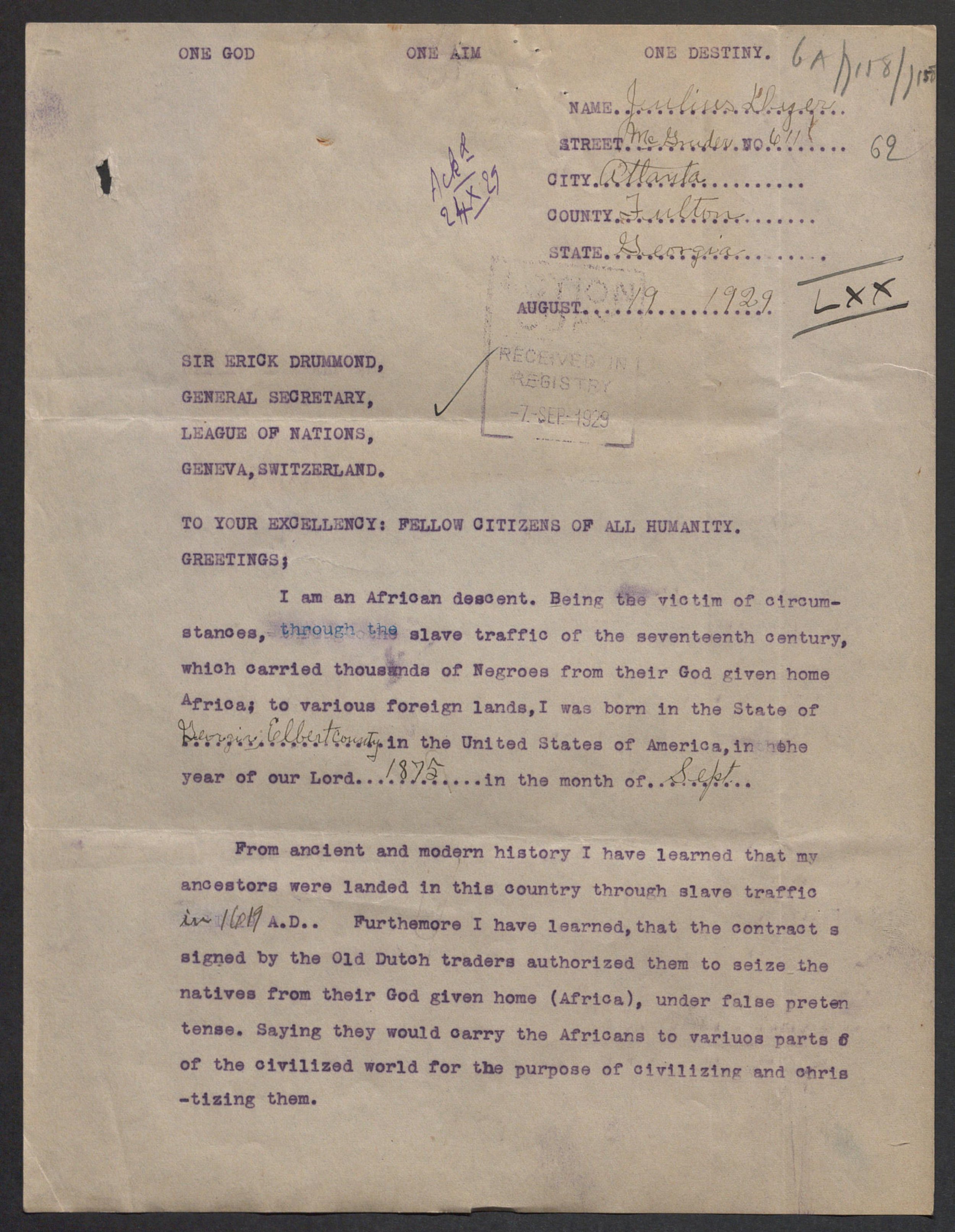
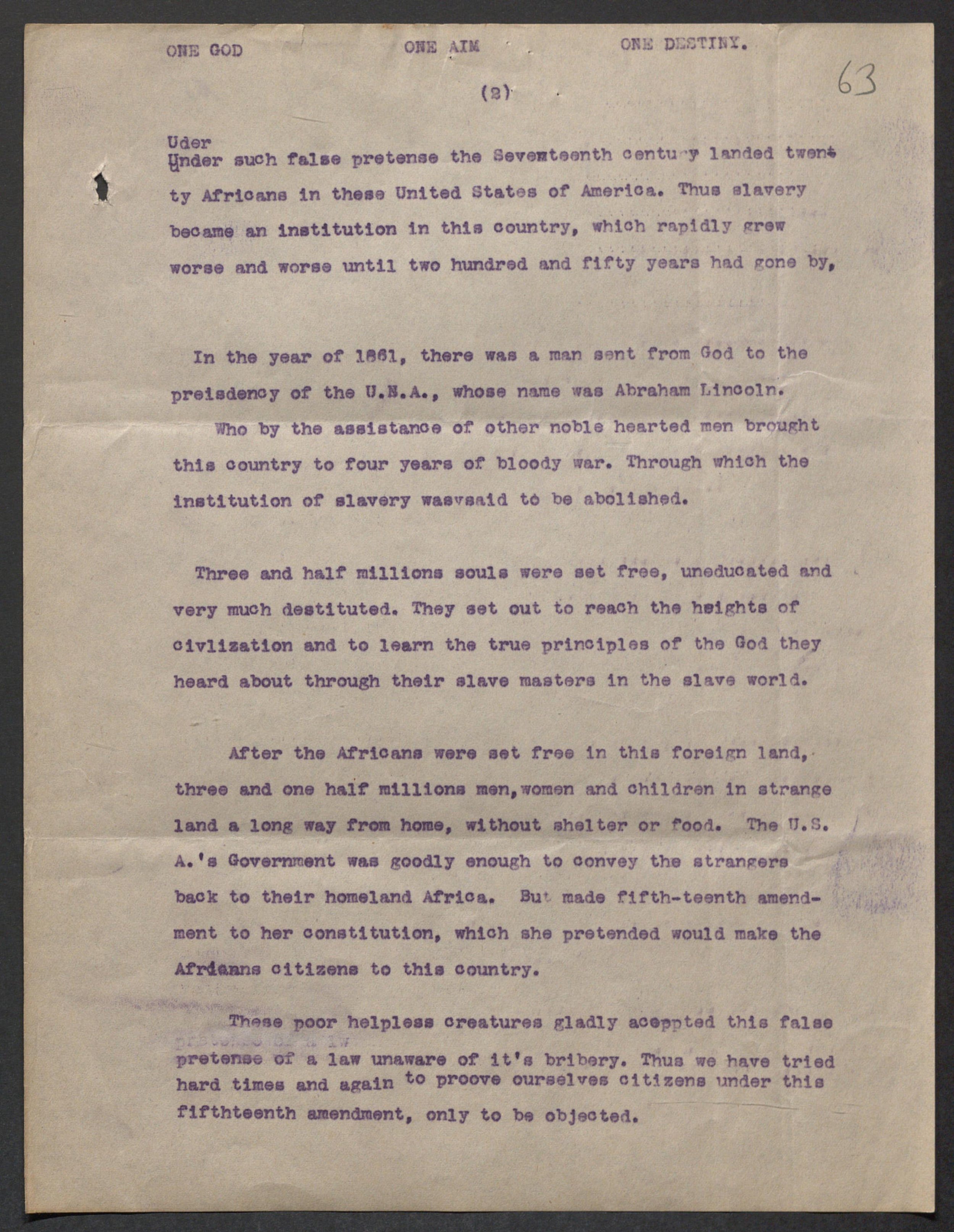
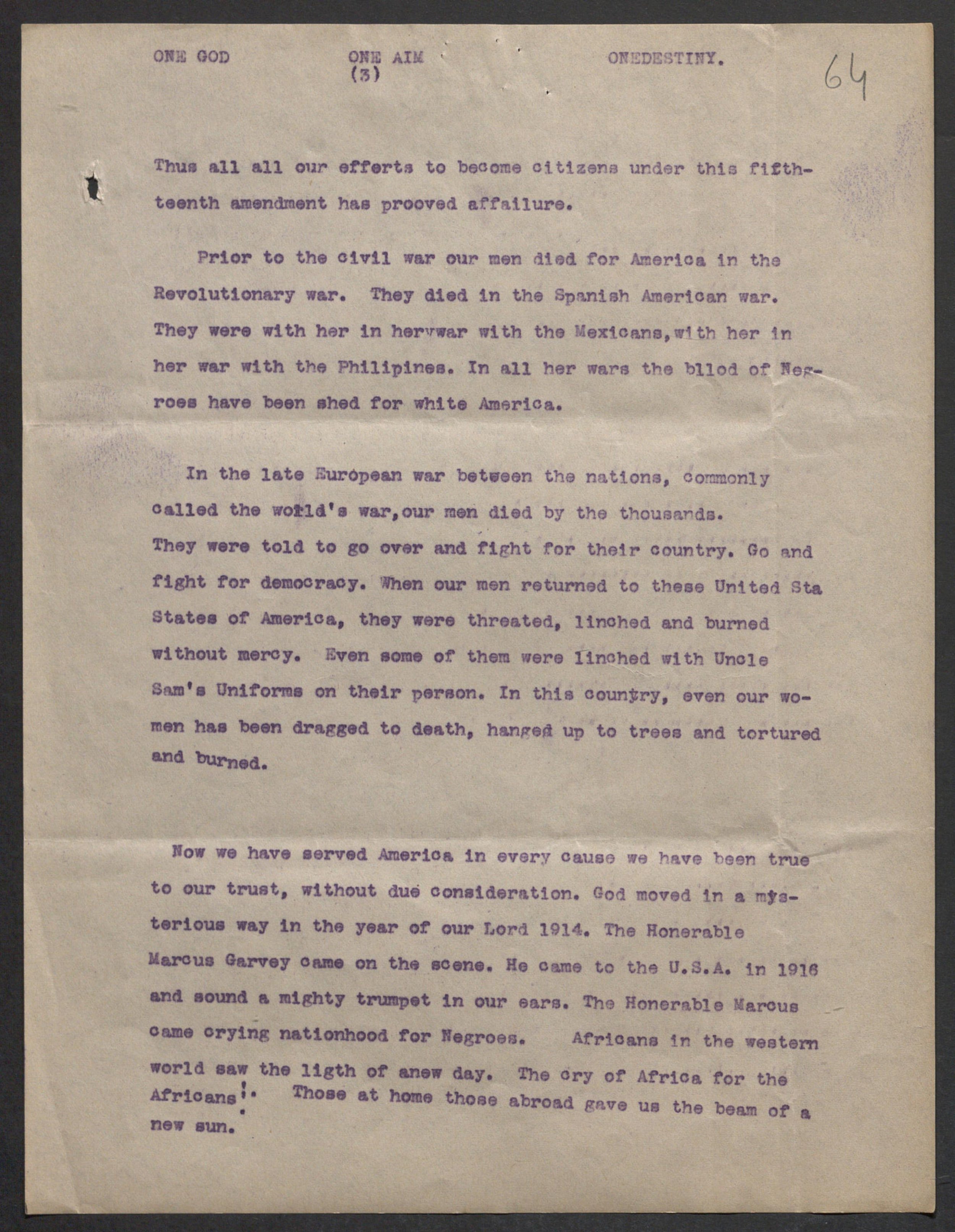
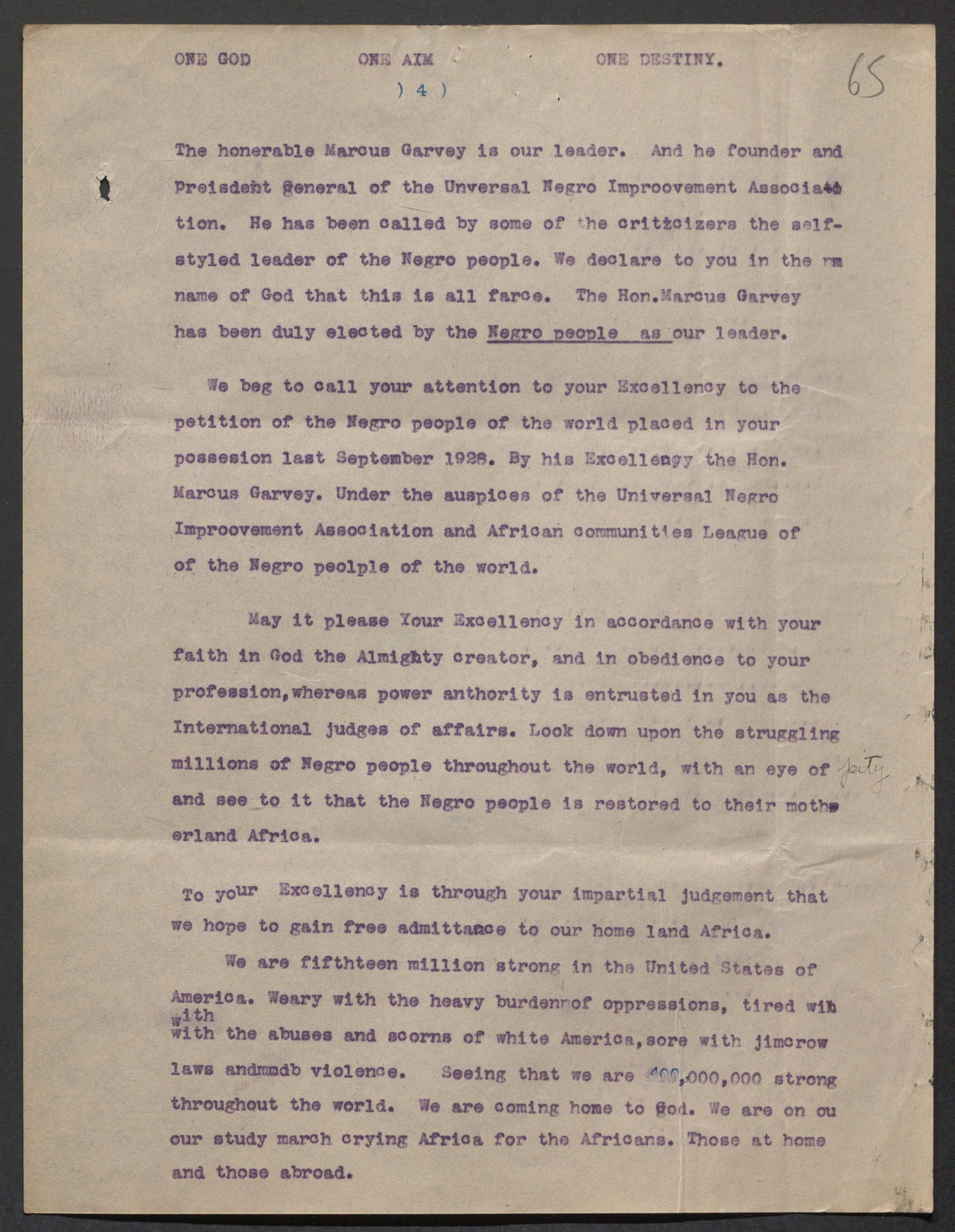
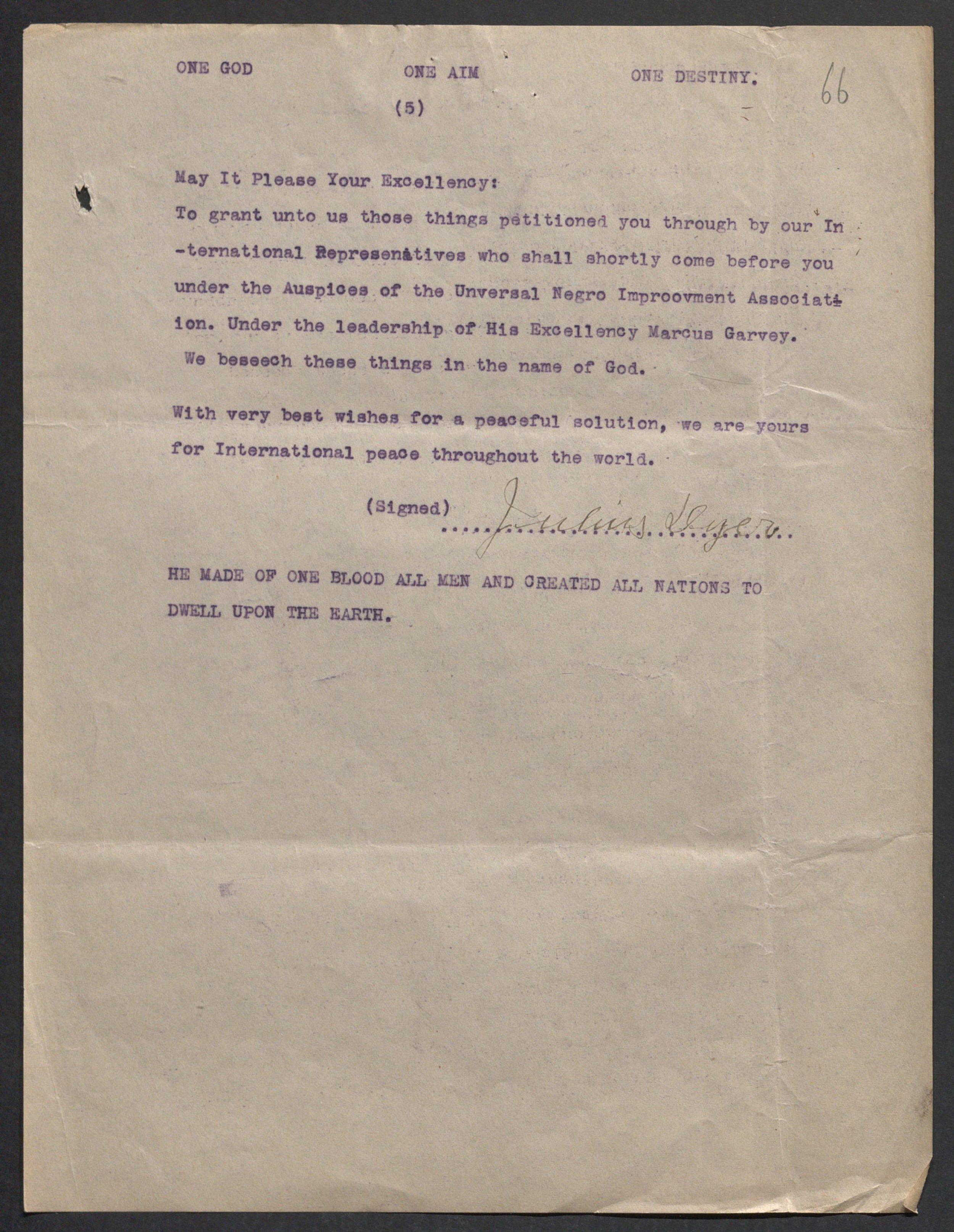
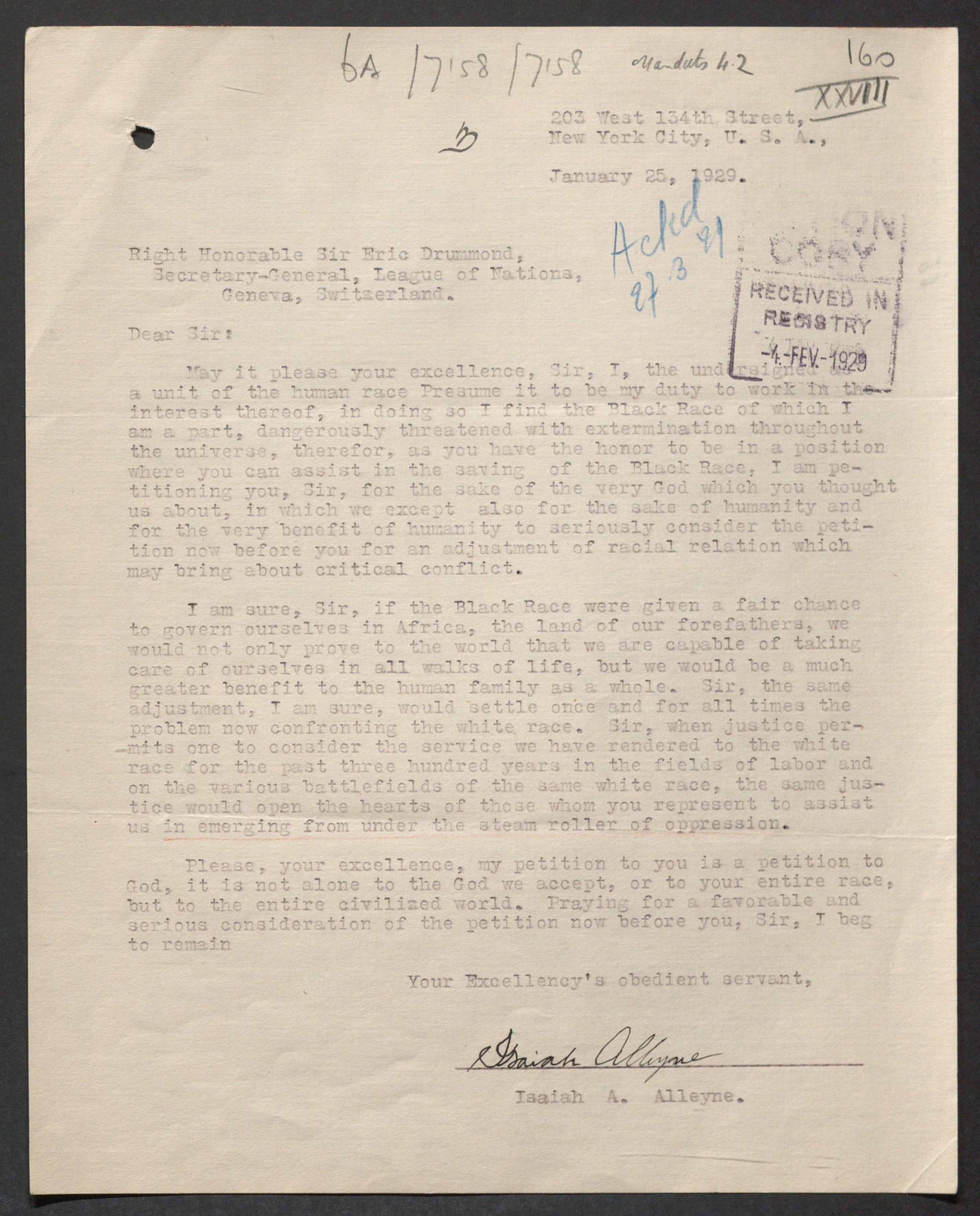
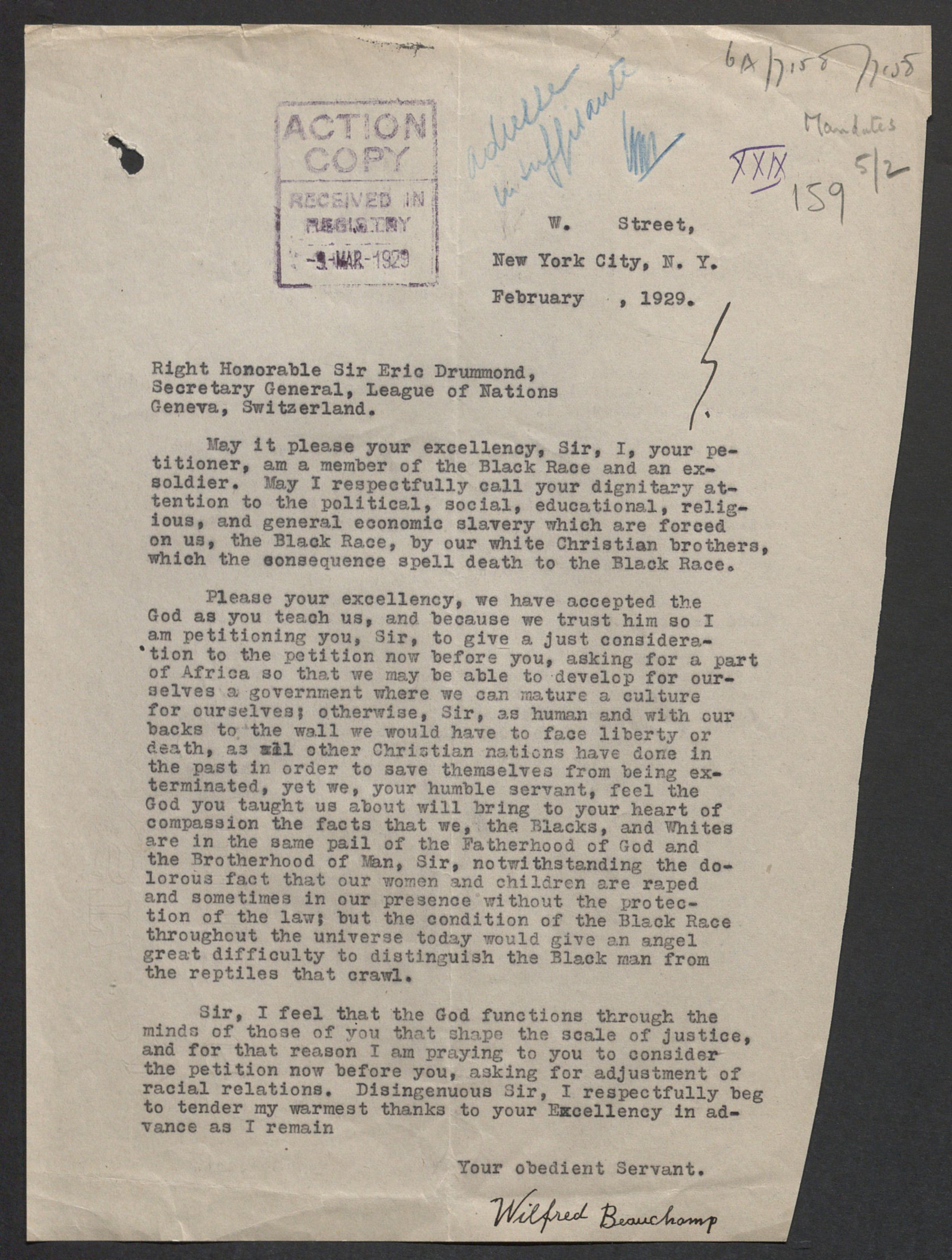
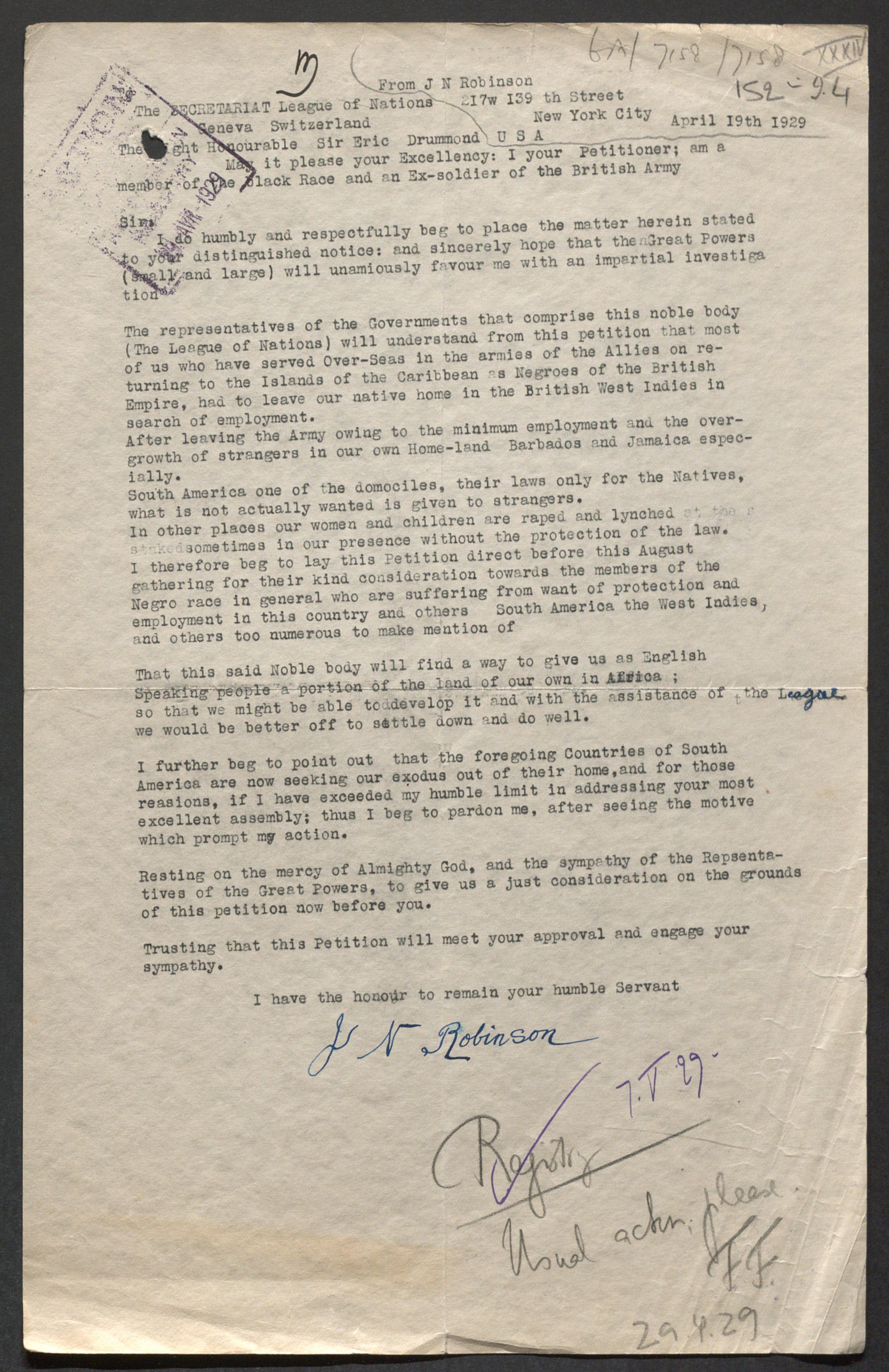
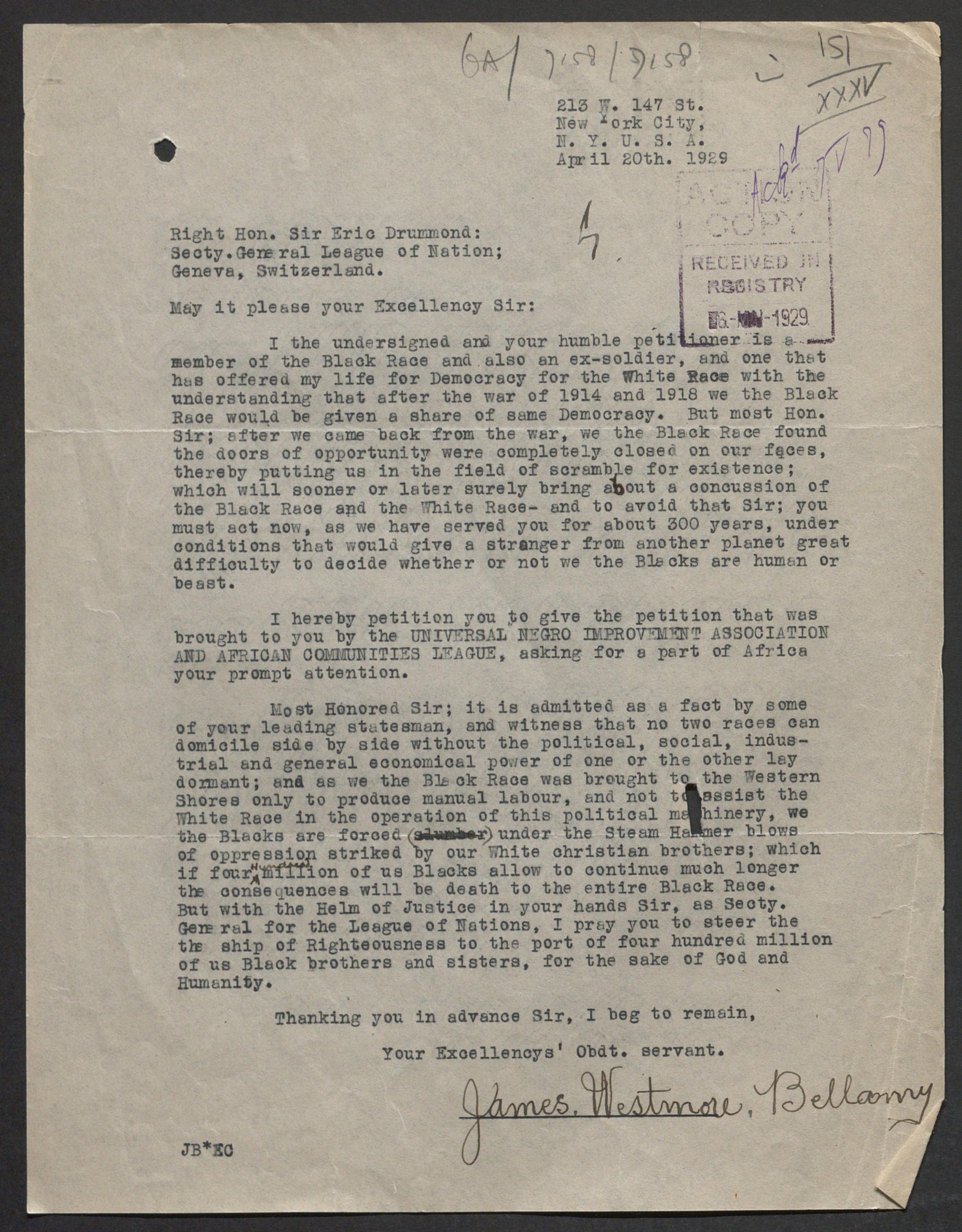
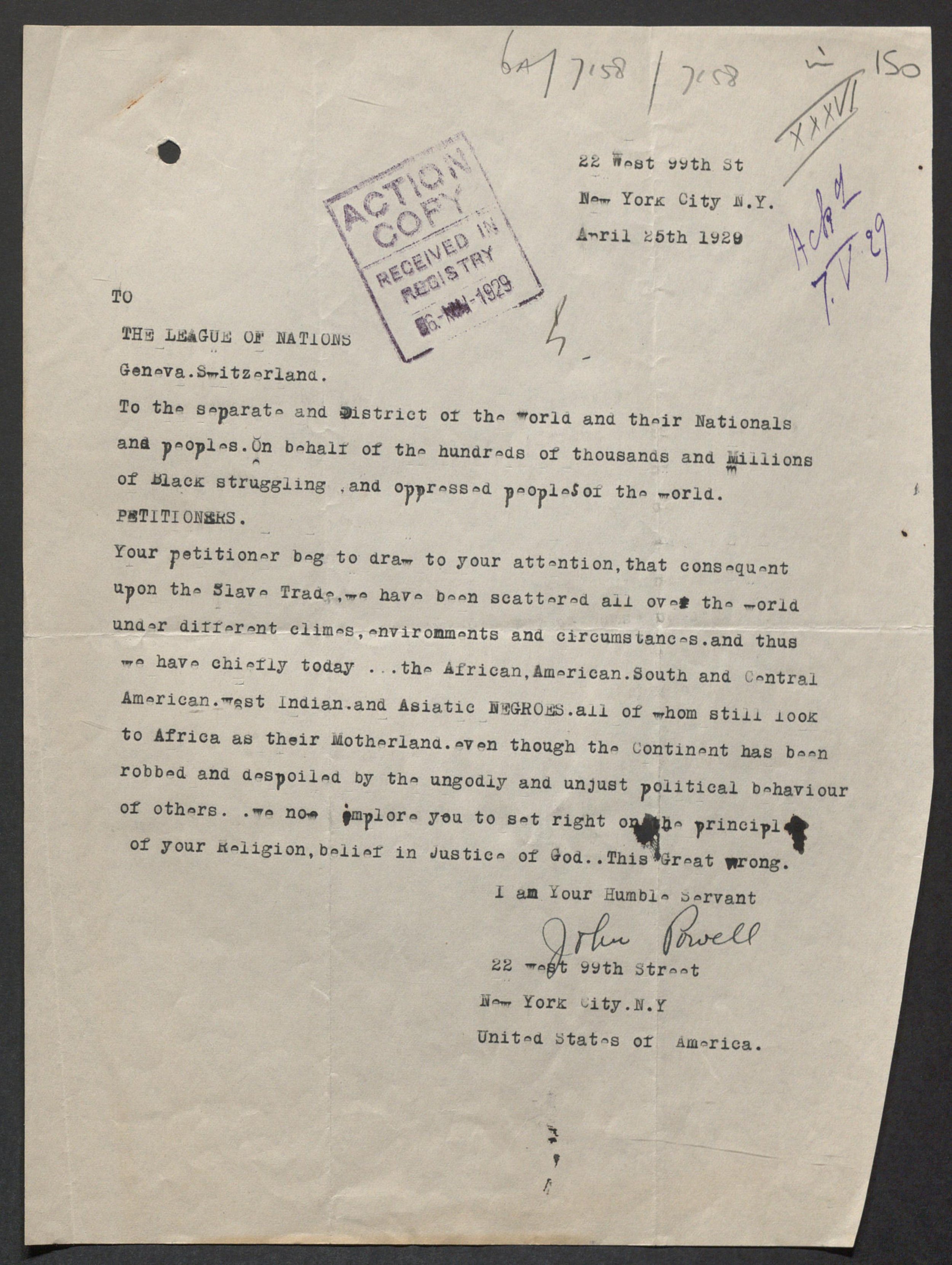
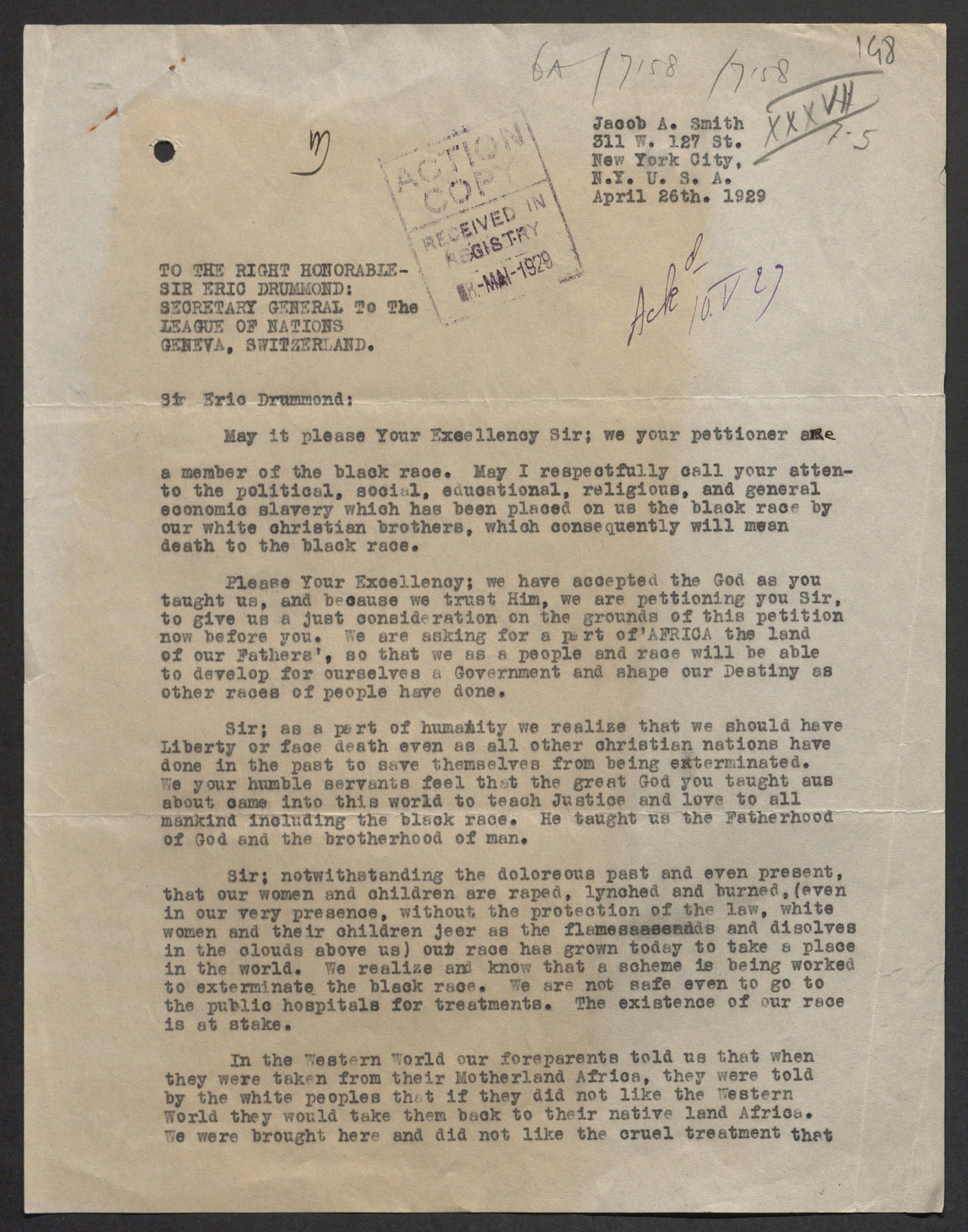
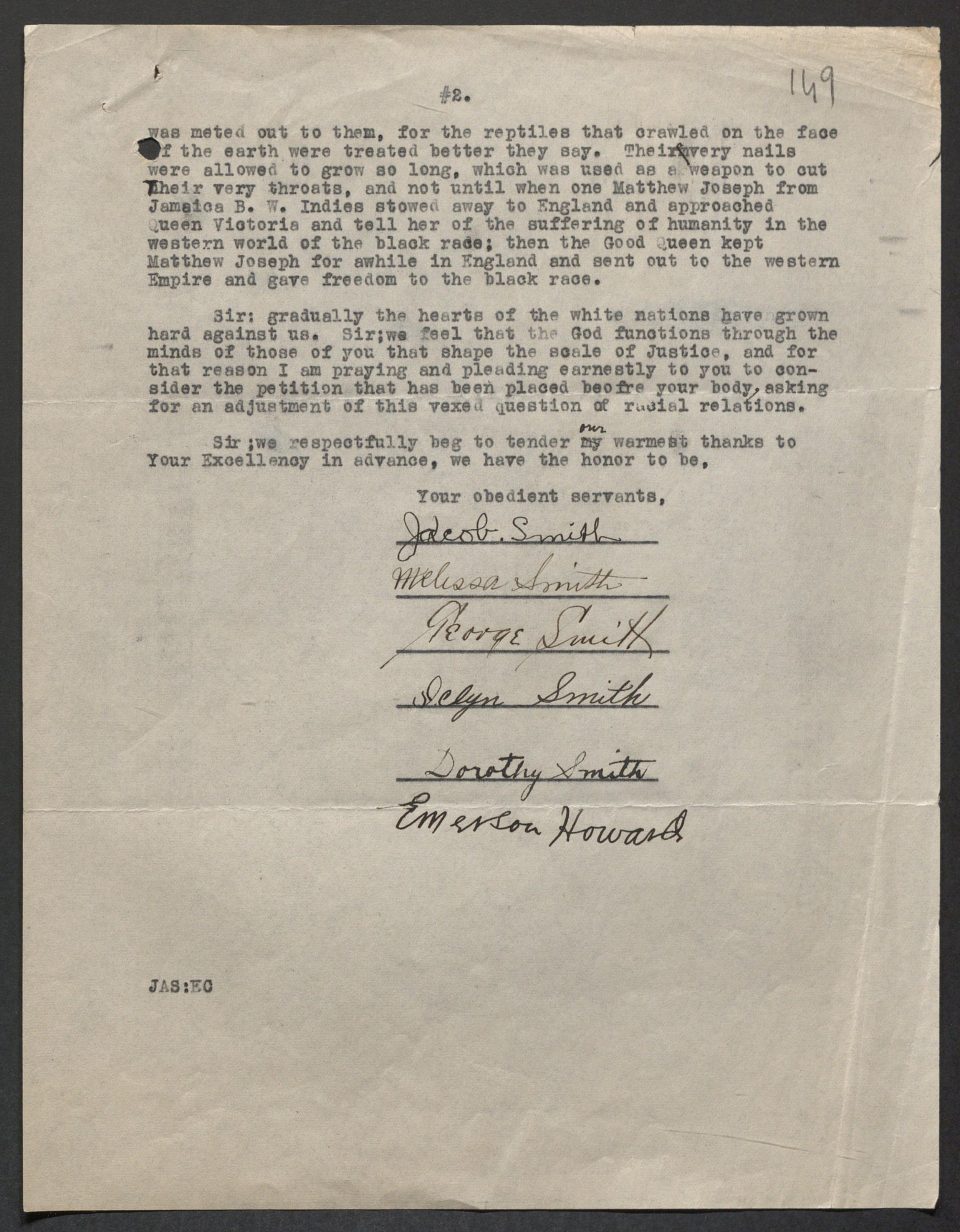
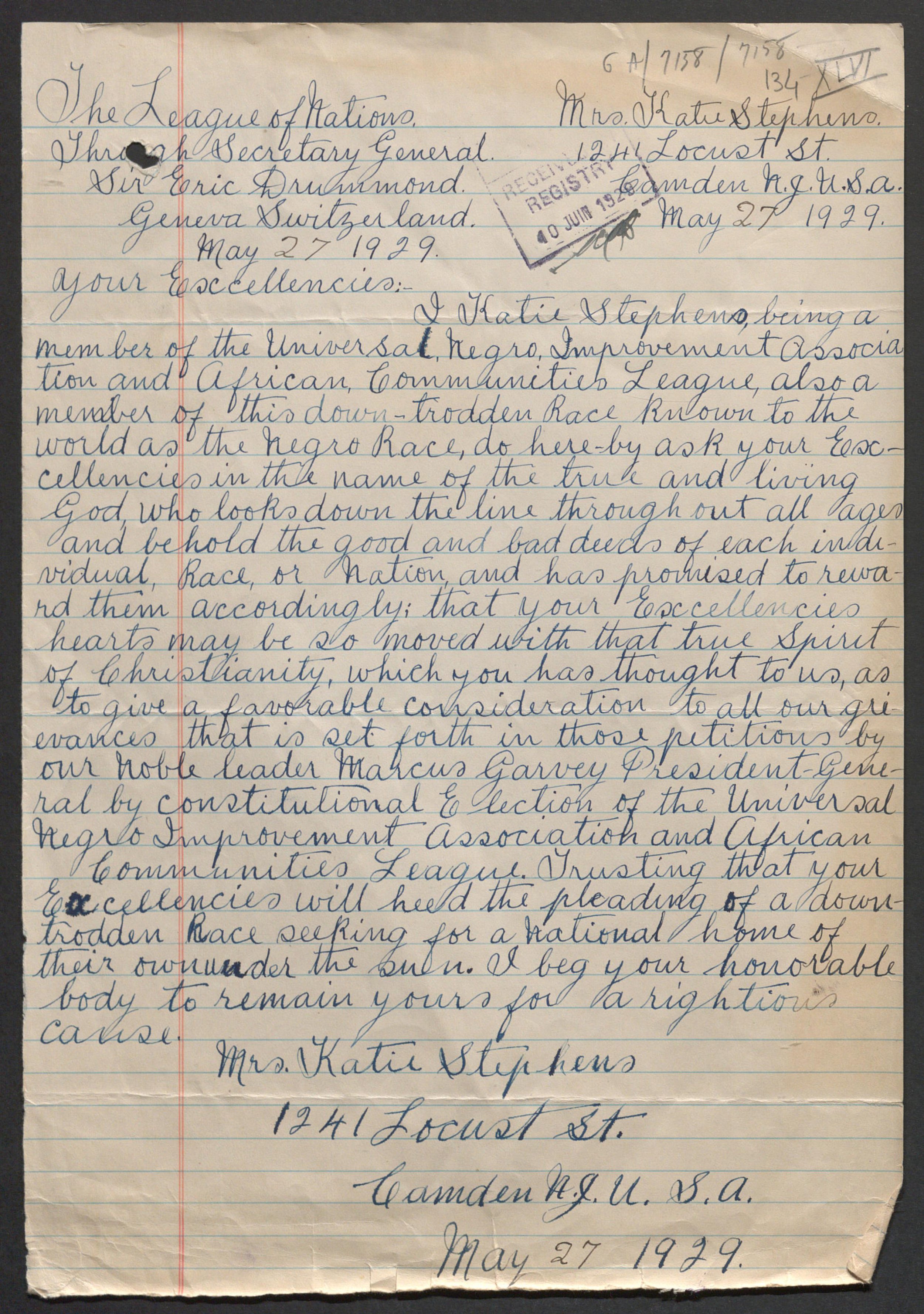
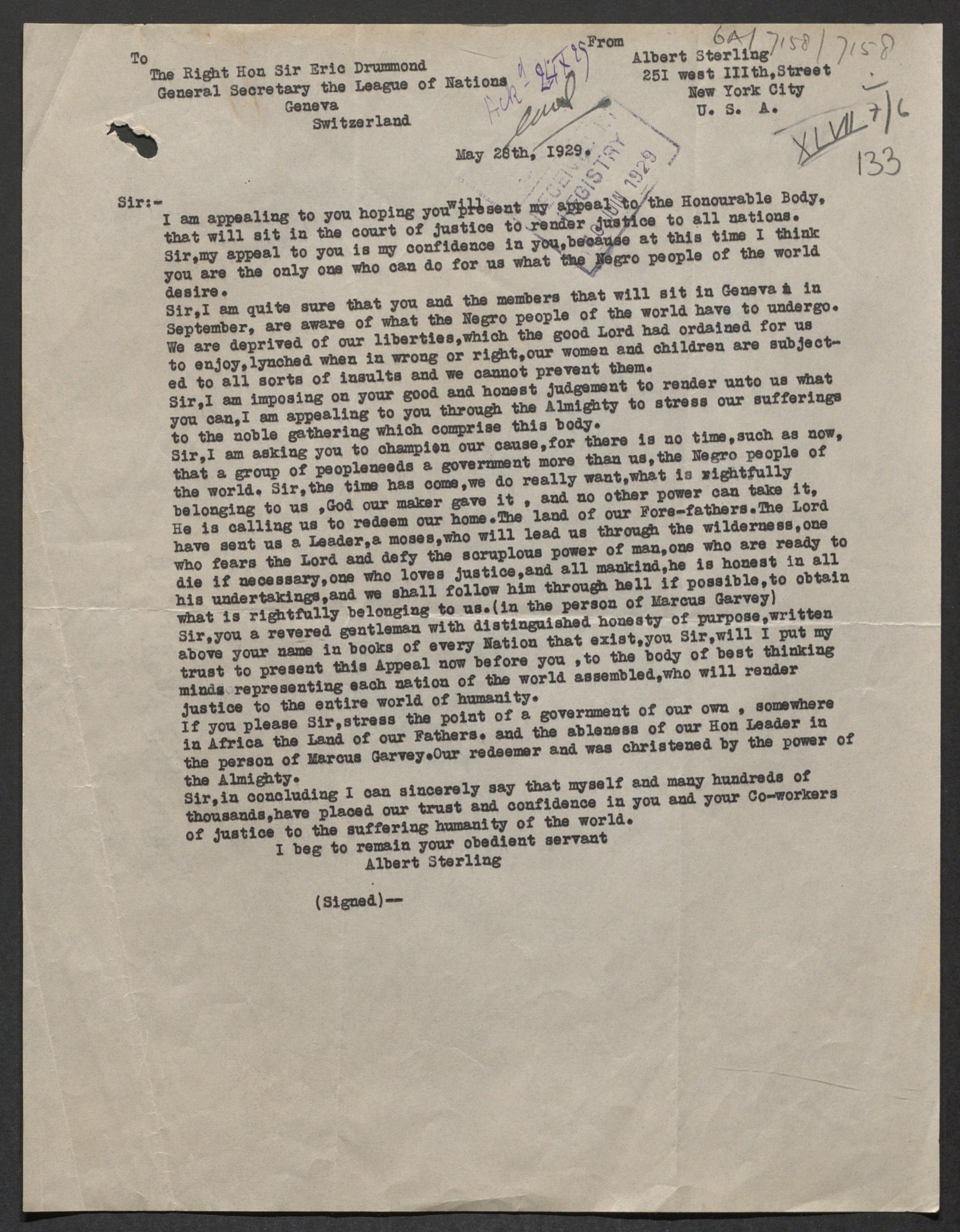
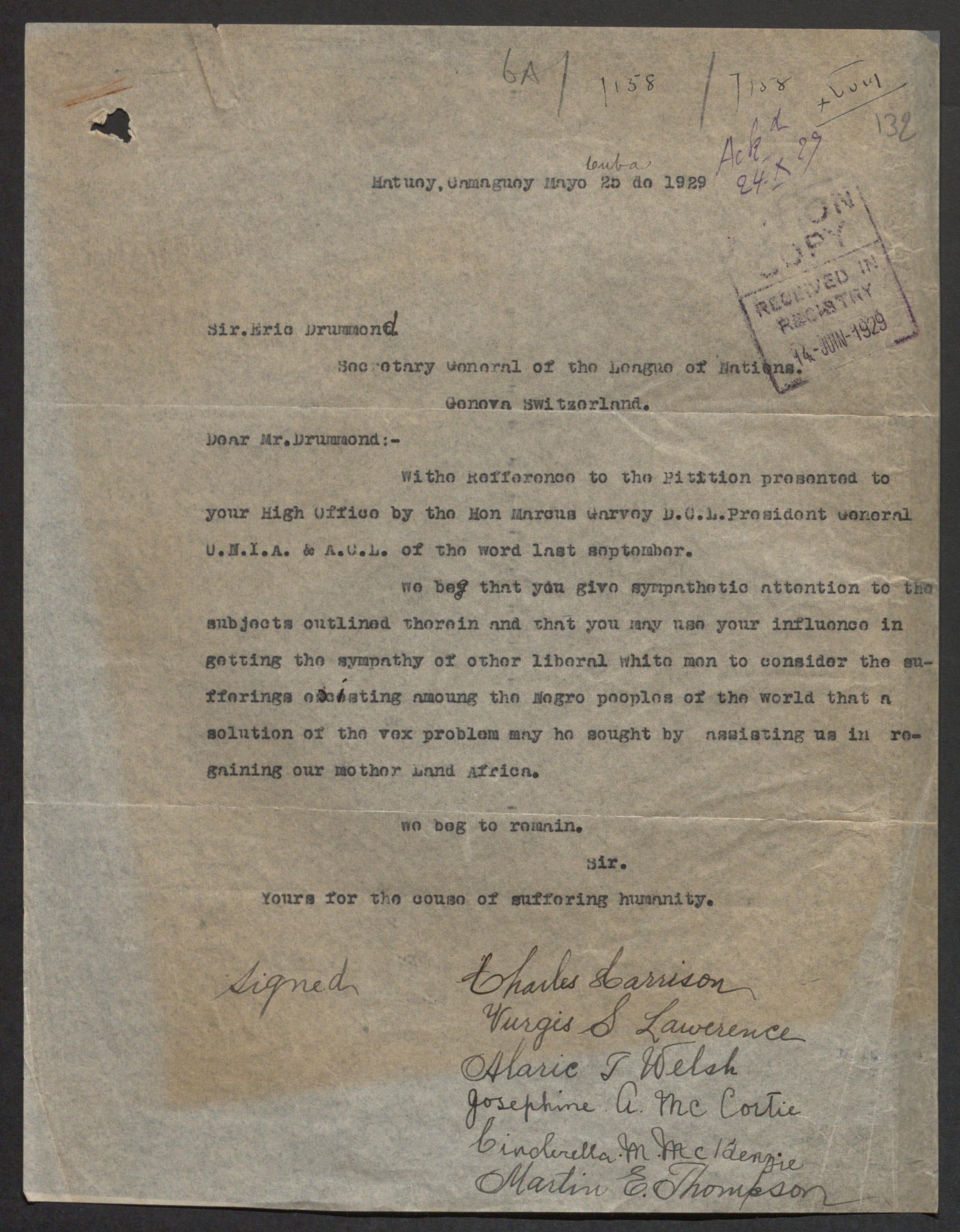

















MARTIN DELANY ON THE QUESTION OF ORIGINAL AND NATIONAL IDENTITY IN 1854
“So soon as a people or nation lose their original identity, just so soon must that nation or people become extinct.”
- Martin Delany, 1854
Currently, there is a movement underway in which some “black” people in America are saying that they were in America before Columbus. While it is true that some black people were in the Americas before Columbus, it is also true that some black people came after Columbus, especially as a result of the trans-Atlantic trafficking and enslavement of people with African lineage and heritage from the African continent. Unfortunately, because of state-sanctioned ETHNOCIDE committed by the United States, most “black” people don’t really know their ancestral lineage and whether or not their direct maternal and paternal ancestors descended from the “black” people that were in the Americas before Columbus or came after. More unfortunate, however, is the disunity and animosity that has been escalating between “aboriginal/indigenous” black people who seem to be claiming that ALL or MOST black people today are descended from the black people who were here before Columbus. That claim - the idea that ALL or MOST black people today are descended from those black people who were in the Americas before Columbus - is simply a claim that is not a known fact, but merely speculation. Again, most people don’t actually know their lineage ancestry, where their direct maternal and maternal ancestors lived before 1492 or what language they spoke. However, this can be determined now through DNA testing.
Worse, some of these “black” aboriginal/indigenous people are denigrating other “black” people who are claiming that they are descended from the people who came in the slave ships. They say that we have been lied to and that we are stupid because we believe the lie.
NOW, WE REMIND THE BLACK PEOPLE IN AMERICA WHO ARE TRYING TO DISTANCE THEMSELVES FROM IDENTIFYING AS AFRICANS IN FAVOR OF SOME OTHER IDENTITY OF THE WORDS OF MARTIN DELANY ON THE QUESTION OF NATIONAL IDENTITY IN “Political Destiny of the Colored Race, on the American Continent”-
Delaney, like everyone else of his time AND BEFORE, knew that there were black people already here when Europeans discovered America and started trafficking prisoners of war taken from Africa. This is not knew knowledge as suggested by some people who are just now themselves becoming acquainted with scholarship on the AFRICAN presence in the Americas before Columbus. It was common knowledge that some Africans were in the Americas before the slave ship, and some were arriving because of the slave ships. As Delany points out, it is the ORIGINAL IDENTITY that is the key to our liberation. And now there is technology (genetic testing through African Ancestry) that can determine each individual's ORIGINAL IDENTITY. This is what will unite us - ORIGINAL IDENTITY. If your ORIGINAL IDENTITY comes from the continent of Africa, we have a basis for uniting whether you are one of the Africans that was here before Columbus, or whether you are on of the Africans that came after Columbus.
In his keynote Address to the National Emigration Convention for Colored Men - 24-26 August 1854, “Political Destiny of the Colored Race, on the American Continent”, Delaney stated,
"A people, to be free, must necessarily be their own rulers: that is, each individual must, in himself, embody the essential ingredient—so to speak—of the sovereign principle which composes the true basis of his liberty. . . .
Then, to be successful, our attention must be turned in a direction towards those places where the black and colored man comprise, by population, and constitute by necessity of numbers, the ruling element of the body politic. And where, when occasion shall require it, the issue can be made and maintained on this basis. Where our political enclosure and national edifice can be reared, established, walled, and proudly defended on this great elementary principle of original identity. Upon this solid foundation rests the fabric of every substantial political structure in the world, which cannot exist without it; and so soon as a people or nation lose their original identity, just so soon must that nation or people become extinct.—Powerful though they may have been, they must fall. Because the nucleus which heretofore held them together, becoming extinct, there being no longer a center of attraction, or basis for a union of the parts, a dissolution must as naturally ensue, as the result of the neutrality of the basis of adhesion among the particles of matter. . .
This is the secret of the eventful downfall of Egypt, Carthage, Rome, and the former Grecian States, once so powerful—a loss of original identity; and with it, a loss of interest in maintaining their fundamental principles of nationality. . . .
And doubtless the downfall of Hungary, brave and noble as may be her people, is mainly to be attributed to the want of identity of origin, and consequently, a union of interests and purpose. . . . Hungary consisted of three distinct "races"—as they call themselves—of people, all priding in and claiming rights based on their originality—the Magyars, Celts, and Sclaves. On the encroachment of Austria, each one of these races—declaring for nationality—rose up against the House of Hapsburg, claiming the right of self-government, premised on their origin. Between the three a compromise was effected—the Magyars, being the majority, claimed the precedence. They made an effort, but for the want of a unity of interests—an identity of origin, the noble Hungarians failed.—All know the result. . . .
Our friends in this and other countries, anxious for our elevation, have for years been erroneously urging us to lose our identity as a distinct race, declaring that we were the same as other people; . . . The truth is, we are not identical with the Anglo-Saxon or any other race of the Caucasian or pure white type of the human family, and the sooner we know and acknowledge this truth, the better for ourselves and posterity. . . . We are not willing, therefore, at all times and under all circumstances to be moulded into various shapes of eccentricity, to suit the caprices and conveniences or every kind of people. We are not more suitable to everybody than everybody is suitable to us; therefore, no more like other people than others are like us. . . .
We have then inherent traits, attributes—so to speak—and native characteristics, peculiar to our race—whether pure or mixed blood—and all that is required of us is to cultivate these and develope them in their purity, to make them desirable and emulated by the rest of the world. . . .
From the earliest period after the discovery, various nations sent a representative here, either as adventurers and speculators, or employed laborers, seamen, or soldiers, hired to work for their employers. And among the earliest and most numerous class who found their way to the new world, were those of the AFRICAN race. And it has been ascertained to our minds beyond a doubt, that when the Continent was discovered, there were found in the West Indies and Central America, tribes of the black race, fine looking people, having the usual characteristics of color and hair, IDENTIFYING THEM AS BEING ORIGINALLY OF THE AFRICAN RACE; no doubt, being a remnant of the Africans who, with the Carthagenian expedition, were adventitiously cast upon this continent, in their memorable adventure to the "Great Island," after sailing many miles distant to the West of the "Pillars of Hercules"—the present Straits of Gibralter. . . .
Our policy must be—and I hazard nothing in promulgating it; nay, without this design and feeling, there would be a great deficiency of self-respect, pride of race, and love of country, and we might never expect to challenge the respect of nations—Africa for the African race, and black men to rule them. By black men I mean, men of African descent who claim an identity with the race. . . . We must make an issue, create an event, and establish for ourselves a position. This is essentially necessary for our effective elevation as a people, in shaping our national developement, directing our destiny, and redeeming ourselves as a race. . . .
As the first great national step in political economy, the selection and security of a location to direct and command commerce legitimately carried on, as an export and import metropolis, is essentially necessary. . . . The basis of great nationality depends upon three elementary principles: first, territory; second, population; third, a great staple production either natural or artificial, or both, as a permanent source of wealth; and Africa comprises these to an almost unlimited extent. . . .
‘Self-preservation is the first law of nature,’ and we go to Africa to be self-sustaining . . . "
This was 120 years before Alex Haley’s roots. It was only 46 years after the United States passed The Act Prohibiting Importation of Slaves of 1807 (2 Stat. 426, enacted March 2, 1807) which took effect in 1808. I think Martin Delany and those of his generation knew quite well that people from African were arriving in the Americas, a fact which some “black” are, incredibly, trying to deny and minimize.
The point is, if you are “black”, you are African and if you are African, there is the basis for a unity which can develop enough COMPELLING FORCE to change the current world order. Instead of arguing with each other, all black people should be advocating, as part of reparations, LINEAGE RESTORATION - the establishing of each individuals ACTUAL direct maternal and paternal ancestry that goes back at least as far as 2000 years. Once that is established, genealogy work can done to determine everyone’s true ancestral identity. Only in this way, can we know who was here before, and who came after….





























DESCENDENTES DE BALANTA LIDERAM MOVIMENTO DE REPARAÇÃO NO VATICANO: RESPONSABILIZAM OS REPRESENTANTES DE JESUS CRISTO PELA ESCRAVAÇÃO DOS POVOS AFRICANO
Cidade do Vaticano, 18 de julho de 2022 - Membros da Balanta B'urassa History & Genealogy Society in America (BBHAGSIA) e defensores das reparações viajaram para a Cidade do Vaticano na segunda-feira para discutir o papel da Igreja Católica no comércio transatlântico de escravos e traçar um caminho para a cura.
De acordo com o comunicado de imprensa emitido pela Comissão Nacional de Reparações Afro-Americanas (NAARC) , uma delegação de líderes globais de reparações sob a égide do Círculo Global para Reparações e Cura , foi recebida pelo Bispo Paul Tighe, Secretário do Pontifício Conselho de Cultura, junto com seu assistente, em uma reunião formal no Vaticano em 18 de julho de 2022.
Os membros do BBHAGSIA Kamm Howard , ex-co-presidente nacional da Coalizão Nacional de Negros para Reparações na América (NCOBRA) e diretora de Reparações Unidos, e Robin Rue Simmons , ex-vereadora do 5º distrito em Evanstan, IL e fundadora e diretora executiva da FirstRepair ambos viajaram para Roma com a delegação. Outros membros da delegação incluíam o Dr. Ron Daniels, coordenador da Comissão Nacional de Reparações Afro-Americanas (NAARC), Dra. Amara Enyia, estrategista do Círculo Global para Reparações e Cura, e Nikole Hannah-Jones, autora do Projeto 1619. A delegação entregou uma apresentação(veja abaixo para ler todo o documento) descrevendo os “danos e ofensas da Igreja, o legado resultante desses danos e ofensas e medidas de reparação que são necessárias para a reparação e cura completas”.
Não retratado: Robin Rue Simmons
De acordo com a APRESENTAÇÃO À SANTA SÉ NO FUTURO DAS REPARAÇÕES ,
“A partir de 1400, os monarcas portugueses pediram aos Papas da Santa Igreja Católica Romana para endossar e apoiar seus planos de expansão territorial na África. Em resposta a essas petições reais, muitos pontífices, as pessoas que reivindicam autoridade para serem os representantes de Jesus Cristo na terra, emitiram bulas papais, decretos públicos oficiais, que autorizaram a guerra na África e endossaram e apoiaram o tráfico transatlântico e a escravização perpétua de homens africanos , mulheres e crianças”.
A APRESENTAÇÃO , em seguida, detalha o registro histórico que afirma que a Igreja Católica Romana sancionou, através do uso de éditos apostólicos conhecidos como “bulas papais”, a destruição dos reinos africanos, o saque das riquezas e recursos africanos, a guerra total povo africano e a escravização perpétua dos africanos e seus descendentes. “Estas bulas e outras”, afirma a APRESENTAÇÃO , “forneciam a justificativa para o tráfico e escravização de seres humanos negros africanos, bem como o imperialismo europeu e a colonização na África – tudo em nome de Jesus Cristo”.
O documento conclui afirmando,
“COMPELIDOS PELO DIREITO INTERNACIONAL, COSTUMES E NORMAS SOBRE REPARAÇÃO POR GUERRA TOTAL, CRIMES DE GUERRA E CRIMES CONTRA A HUMANIDADE , E ENCORAJADOS PELAS PALAVRAS E PELO ESPÍRITO DA ENCÍCLICA FRATELLI TUTTI , NA QUAL O PAPA FRANCISCO PEDE UM SENTIDO APROFUNDADO DE NOSSA HUMANIDADE COMPARTILHADA , BUSCAMOS REPARAÇÃO TOTAL E CURA PARA PESSOAS DE ASCENDÊNCIA AFRICANA…. CONSEQUENTEMENTE, DE TUDO O QUE PRECEDE, A SANTA IGREJA CATÓLICA ROMANA TEM UMA PROFUNDA OBRIGAÇÃO MORAL E LEGAL DE REPARAÇÃO INTEGRAL. ”
É a obrigação legal decorrente da declaração Dum Diversas do Papa Nicolau V de guerra total contra os povos africanos que o Presidente do BBHAGSIA, Siphiwe Baleka, vem enfatizando em vários fóruns internacionais e comitês de trabalho dirigidos aos membros da União Africana e especialmente à República da Guiné-Bissau . O argumento legal foi apresentado em RUMO A UM DIREITO DE RETORNO E POLÍTICA DE CIDADANIA PARA DESCENDENTES DE PESSOAS RETIRADAS DE TERRITÓRIOS NA ÁFRICA DURANTE O TRÁFICO TRANSATLÂNTICO E ESCRAVAÇÃO DE POVOS AFRICANO: ESTUDO DE CASO GUINÉ BISSAU , que foi um documento de origem para o PRESENTE e que você pode leia na íntegra aqui.
Recorde-se que tanto Kamm Howard como Robin Rue Simmons regressaram à sua terra natal ancestral Balanta da Guiné-Bissau em Junho de 2021 como parte do segundo grupo da Iniciativa Década de Retorno criada e lançada pelo Presidente do BBHAGSIA Siphiwe Baleka .
Robin, Siphiwe, Kamm e Amilcar Cabral
Robin (segundo à esquerda) e Kamm (3º à esquerda atrás de Robin) em encontro com o Comandante das Forças Armadas da Guiné-Bissau.
Para saber mais sobre o trabalho de reparação de Kamm Howard e Robin Rue Simmon, assista a este
DOCUMENTÁRIO COM DESCENDENTES DE BALANTA E MEMBROS DO BBHAGSIA KAMM HOWARD E ROBIN RUE SIMMONS














BALANTA DESCENDANTS LEAD REPARATIONS MOVEMENT AT THE VATICAN: HOLD THE REPRESENTATIVES OF JESUS CHRIST RESPONSIBLE FOR THE ENSLAVEMENT OF AFRICAN PEOPLE
Vatican City, July 18, 2022 - Balanta B’urassa History & Genealogy Society in America (BBHAGSIA) members and reparations advocates traveled to Vatican City on Monday to discuss the Catholic Church's role in the Transatlantic Slave Trade and chart a path toward healing.
According to the press release issued by the National African American Reparations Commission (NAARC), a delegation of global reparations leaders under the umbrella of the Global Circle for Reparations and Healing, was received by Bishop Paul Tighe, Secretary of the Pontifical Council of Culture, along with his assistant, in a formal meeting at the Vatican on July 18, 2022.
BBHAGSIA members Kamm Howard, former National Co-Chair of the National Coalition of Blacks for Reparations in America (NCOBRA) and Director of Reparations United, and Robin Rue Simmons, former Alderwoman of the 5th Ward in Evanstan, IL and Founder and Executive Director of FirstRepair both traveled to Rome with the delegation. Other members of the delegation included Dr Ron Daniels, convenor of National African American Reparations Commission (NAARC), Dr. Amara Enyia, strategist for the Global Circle for Reparations and Healing, and Nikole Hannah-Jones, author of the 1619 Project. The delegation delivered a Presentment (see below to read the entire document) outlining the “harms and offenses of the Church, the legacy resulting from those harms and offenses and reparations measures that are needed for full repair and healing.”
Not pictured: Robin Rue Simmons
According to the PRESENTMENT TO THE HOLY SEE IN FURTHERANCE OF REPARATIONS,
“Beginning in the 1400s, Portuguese monarchs petitioned the Popes of the Holy Roman Catholic Church to endorse and support their plans for territorial expansion into Africa. In response to these royal petitions, many Pontiffs, the persons claiming authority to be the representatives of Jesus Christ on earth, issued papal bulls, official public decrees, that authorized war on Africa and endorsed and supported the transatlantic trafficking and perpetual enslavement of African men, women, and children.”
The PRESENTMENT then goes on to detail the historical record that affirms that the Roman Catholic Church santioned, through the use of Apostolic edicts known as “Papal Bulls”, the destruction of African kingdoms, the plunder of African wealth, and resources, total war on African people, and the perpetual enslavemenent of Africans and their descendants. “These Bulls and others”, states the PRESENTMENT, “provided the justification for the trafficking and enslavement of Black African human beings, as well as European imperialism and colonization in Africa—all in the name of Jesus Christ.'‘
The document concludes by stating,
“Compelled by international law, customs, and norms regarding redress for total war, war crimes, and crimes against humanity, and encouraged by the words and spirit of the encyclical Fratelli Tutti, in which Pope Francis calls for a deepened sense of our shared humanity, we seek full reparations and healing for people of African ancestry…. Consequently, from all the above, the Holy Roman Catholic Church has a profound moral and legal obligation of full reparations.”
It is the legal obligation stemming from Pope Nicholas V’s Dum Diversas declaration of total war against African people that BBHAGSIA President Siphiwe Baleka has been emphasizing in various international forums and working committees directed at members of the African Union and especially to the Republic of Guinea Bissau. The legal argument was laid out in TOWARDS A RIGHT TO RETURN & CITIZENSHIP POLICY FOR DESCENDENTS OF PEOPLE TAKEN FROM TERRITORIES IN AFRICA DURING THE TRANSATLANTIC TRAFFICKING AND ENSLAVEMENT OF AFRICAN PEOPLE: CASE STUDY GUINEA BISSAU which was a source document for the PRESENTMENT and which you can read in its entirety here.
It should be recalled that both Kamm Howard and Robin Rue Simmons returned to their Balanta ancestral homeland of Guinea Bissau in June of 2021 as part of the second group of the Decade of Return Initiative created and launched by BBHAGSIA President Siphiwe Baleka.
Robin, Siphiwe, Kamm and Amilcar Cabral
Robin (second from left) and Kamm (3rd from left behind Robin) meeting the Commander of Guinea Bissau’s armed forces.
To learn more about Kamm Howard and Robin Rue Simmon’s reparations work watch this
Documentary featuring Balanta descendants and BBHAGSIA members Kamm Howard and Robin Rue Simmons














THE DECADE OF RETURN INITIATIVE IN GUINEA BISSAU CELEBRATES THE 100 YEAR ANNIVERSARY OF THE ETHIOPIAN GOVERNMENT’S OFFER OF REPATRIATION AND CITIZENSHIP
The Decade of Return Initiative in Guinea Bissau celebrates the one hundred year anniversary of the repatriation invitation made by the Ethiopian government to the the Universal Negro Improvement Association (UNIA) 1922 Convention. At the Convention, Persian Consul General H. Topakyan read a message from Ethiopian Regent Plenipotentiary Ras Tafari that said:
“I invite [African Descendants] back to the homeland, particularly those qualified to help solve our big problems and to develop our vast resources. Teachers, artisans, mechanics, writers, musicians, professional men and women - all who are able to lend a hand in the constructive work which our country so deeply feels and greatly needs.”
The 1922 UNIA Convention deputized a mission of skilled workers to go to Ethiopia which ultimately failed for lack of funds.
Two years prior, in 1919, Regent Plenipotentiary Ras Tafari sent four ambassadors to the United States. The Royal Ethiopian Mission included Dedjamatch Nadao, Empress Zauditu’s nephew and Commander of the Imperial Army, Ato Belanghetta Herouy Wolde Sellasie, Mayor of Addis Ababa, Ato Kantiba Gabrou, Mayor of Gondar, and Ato Sinkas, Secretary of the Commander of the Imperial Army. Their purpose was to renew a Treaty of Friendship with the United States signed by Emperor Menelik in 1904. In honor of their visit, the Ethiopian Flag was ceremoniously hoisted over the White House.
All of this was the result of African Descendants’ efforts that began in 1897. Benito Sylvain, the Haitian born and former secretary of the Haitian legation in London, visited Ethiopia and became an aide-de-camp in the Imperial household of Emperor Menelik. Against this backdrop emerged the African Association that was launched in England on September 24, 1897.
Five years later, in 1903 Benito Sylvain returned to Ethiopia where he introduced William Ellis to Emperor Menelik II. Mr. Ellis told the Emperor, "Europe for Europeans and Africa for Africans.”
Another five years after Emperor Menelik signed the Treaty of Friendship, Robert Daniel Alexander moved from Chicago to Ethiopia in 1909. He is the first descendant of people trafficked from Africa and enslaved in the Americas to repatriate to Ethiopia. Mr. Alexander provided Emperor Menelik with copies of the black-owned Chicago Defender newspaper. This is how the Ethiopian government learned about the realities of black people living in America and it is the origin of the Rastafari movement.
Not long afterwards, Marcus Garvey organized the first branch of the UNIA in 1917 and repeated William Ellis' call for "Africa for Africans, both those at home and those abroad." That same year, Ras Tafari officially became the regent of the Ethiopian Empire and Heir to the throne. This is the backdrop to Ras Tafari’s Abyssinian Mission to the United States in 1919.
During the Ethiopian Mission, the bloodiest race riot in Chicago’s history erupted on July 27, 1919. Eugene Williams, a young black boy, drowned at the 29th Street Beach after a rock thrown by George Stauber, a young white boy, knocked Williams from a raft. The Ethiopian Prince Nadao, who stated he had seen the Chicago Defender newspaper in Ethiopia, told one of their reporters “[Ethiopians] dislike brutality, burning at the stake, lynching of any nature, and other outrages handed upon [the African American] people …. Fight on, don’t stop!”
Before the Ethiopian Mission ended, an invitation to return (“Repatriate”) to Ethiopia was made to Rabbi Arnold Ford. That the offer of repatriation was given to him was extremely significant because Rabbi Ford was leader of the Hebrew Israelites (“Black Jews”) of Harlem. In this capacity, he would be able to resettle the existing remnant of Israel that was captured in the slave trade. In addition, Rabbi Ford was the musical director of Marcus Garvey’s Universal Negro Improvement Association (UNIA). Given that the UNIA was the largest, greatest organization of the scattered Ethiopians/Africans, it makes perfect sense to make the offer to the UNIA. Finally, as musical director, Rabbi Ford could use the traditional, spiritual medium of song (psalms, hymns), to communicate the Ethiopian message to the mass of black people scattered in north, south and central America, including the Caribbean. This Rabbi Ford did. It is, therefore, no coincidence that Rabbi Ford gave the UNIA “The Universal Ethiopian Anthem”, later to be used by the Ethiopian World Federation, Incorporated (EWF). The Rastafari Family Worldwide still sings the anthem at its gatherings.
On September 29th, 1923 Ethiopia joined the League of Nations. By the summer of 1924, Marcus Garvey and the UNIA seemed to have concretized the program for Ethiopian Repatriation. On March 16, 1924, Marcus Garvey delivered a speech at Madison Square Garden entitled, “In Honor of the Return to America of the Delegation Sent to Europe and Africa by the Universal Negro Improvement Association to Negotiate for the Repatriation of Negroes to a Homeland of Their Own in Africa”. Garvey said,
“The coming together, all over this country, of fully six million people of Negro blood, to work for the creation of a nation of their own in their motherland, Africa, is no joke. . . . Our desire is for a place in the world . . . to lay down our burden and rest our weary backs and feet by the banks of the Niger, and sing our songs and chant our hymns to the God of Ethiopia . . . . As children of captivity we look forward to a new day and a new, yet ever old, land of our fathers, the land of refuge, the land of the Prophets, the land of the Saints, and the land of God’s crowning glory. We shall gather together our children, our treasures and our loved ones, and, as the children of Israel, by the command of God, face the promise land . . . . Good and dear America that has succored us for three hundred years knows our story . . . . The thoughtful and industrious of our race want to go back to Africa, because we realize it will be our only hope of permanent existence. We cannot all go in a day or in a year, ten or twenty years. It will take time under the rule of modern economics, to entirely or largely depopulate a country of a people, who have been its residents for centuries, but we feel that with proper help for fifty years, the problem can be solved. We do not want all the Negroes in Africa. Some are no good here, and naturally will be no good there . . . . The no-good Negro will naturally die in fifty years. The Negro who is wrangling about and fighting for social equality will naturally pass away in fifty years, and yield his place to the progressive Negro who wants a society and country of his own. . . . What are you going to expect, that white men are going to build up America and elsewhere and hand it over to us?”
On August 1, 1924, on behalf of the Fourth Annual Convention of the Negro Peoples of the World, Garvey wrote to Ethiopian Empress Zauditu,
“Greetings from the 400,000,000 Negroes of the world through our convention now sitting in New York. We hope for you and your country a reign of progress and happiness. Our desire is to help you maintain the glory of Ethiopia. Your expression of goodwill toward us two years ago through your consul-general is highly cherished and we are looking forward to the day when large numbers of us will become citizens of Ethiopia.”
Finally, on September 2, 1924, Marcus Garvey and the Universal Negro Improvement Association submitted the Petition of Four Million Negroes of the United States of America to His Excellency the President of the United States Praying for a Friendly and Sympathetic Consideration of the Plan of Founding a Nation in Africa for the Negro People, and to Encourage Them in Assisting to Develop Already Independent Negro Nations as a Means of Helping to Solve the Conflicting Problems of Race.
Thirty years later, in 1954, Ethiopian Emperor Haile Selassie made his first visit to the United States just days after the Brown vs. Board of Education decision heralded the end of the Jim Crow era. For 18 months before and for six weeks during HIM’s visit to the United States, HIM Haile Selassie began a Repatriation recruitment program for Black people in New York, Pennsylvania, Washington, Virginia, North Carolina, Florida, Georgia, Alabama, Tennessee, Kentucky, Ohio, and Illinois. HIM Haile Selassie I had granted land in Shashemane Ethiopia, had made a constitutional provision for the Repatriates immediate citizenship, and promised free transportation, a house rent-free, competitive salaries, and paid three-months vacations with round-trip tickets to America and back to Ethiopia. Black Americans interested in the Repatriation offer were instructed to fill out an application (Repatriation Census) available from the Ethiopian Embassy. The Emperor was looking for men of the highest integrity to rebuild Ethiopia. As a result, Black America was faced with the choosing between Integration and Repatriation. Black America chose integration.
It is the legacy of Repatriation, that began with the Ethiopian Government's official repatriation offer to the Universal Negro Improvement Association 1922 Convention one hundred years ago, that the Decade of Return Initiative recognizes, celebrates and continues through its work TOWARDS A RIGHT TO RETURN & CITIZENSHIP POLICY FOR DESCENDENTS OF PEOPLE TAKEN FROM TERRITORIES IN AFRICA DURING THE TRANSATLANTIC TRAFFICKING AND ENSLAVEMENT OF AFRICAN PEOPLE.
Please join us in celebrating this November by joining our
DECADE OF RETURN TO GUINEA BISSAU NOVEMBER 22-29, 2022
Interim President of the Guinea Bissau Swimming Federation, Siphiwe Baleka Gives Motivational Talk To Girls Futbol Team Members in Enterremento, Bissau
Enterremento, Bissãu, Guinea Bissãu January 16, 2022
Siphiwe Baleka, the Interim President of the Federação de Natação da Guiné-Bissau (Guinea Bissãu Swimming Federation) spoke to 18 girls at their futbol practice in Enterremento, Bissãu on Saturday, January 16.
Mr. Baleka was invited to give the motivational speech when one of the coaches explained that after just their first season, the girls made it to the final but lost the championship match. Many of them were disappointed and were losing motivation and they have not been receiving support from their federation even though several girls are on the Guinea Bissãu national A, B and C squads.
Watch the motivational speech:
Mr. Baleka was named Interim President of the Federação de Natação da Guiné-Bissau on October 26 when the President, Mr. Duarte Ioia, resigned citing “personal circumstances and health” as his reason for resigning. In addition, Mr. Ioia stated, “I am resigning my position as President and naming Mr. Siphiwe Baleka as Interim President, subject to Board approval, until GBSF by-laws are drafted and approved and the General Assembly can meet in March to hold elections.”
Former GBSF President Duarte Ioia congratulating Siphiwe Baleka on being approved as GBSF Interim President
250 Years Later, I Returned to the Village of My 5G Grandfather
I am writing this primarily for my father’s side of the family, all the descendants of Yancy Blake. I’ve told the story before how Yancy’s grandfather was taken as a boy from territory known as Nhacra in Guinea Bissãu and brought to Charleston, SC in the 1760’s. I also told the story how I consulted a b’sika, a spiritualist in Guinea Bissãu to discover that the village in Nhacra is called Untche.
According to my friend Claudio, “The name of this village is N'ghuntche, but as some people don't know how to write in Balanta, they pass so that they understand Unche.”
“I know this Tabanka very well and the people there too,” Claudio said. “I don't know, when you need to pay a visit there?”
Yes. I needed to pay a visit there. Like almost all Aftodescendants in the United States who have read the book or seen the movie Roots by Alex Haley, I dreamed of returning to my family’s village somewhere in Africa. But I never thought such a thing could happen. Where are the records from 250 years ago documenting what happened?
Claudio and I made plans to visit Untche on Saturday, January 9. On the morning, Daiana and I took a taxi from Bissãu to Safim where we met Claudio. From there we took a toka toka to Claudio’s tabanca where we walked for about an hour across fields and through mud marshes to get to the river.
It isn’t easy to get to Untche. The primary entrance is by canoe from the river. There are no roads to and from the river. The banks of the river are mud - it is very easy to get stuck in the mud and then you have a real problem!
Everyone using the canoes travels barefoot, so we did as well. They use a narrow path that is lined with tree branches to make a kind of foot path. But this was extremely uncomfortable, even painful to walk on. Yet most of the women were carrying children on their back and bundles on their head! If they could do it - and they did it with such grace and ease, then I had to make it.
While traveling across the river, I couldn’t help but imagine my 5G grandfather traveling by canoe with his mother, going to the market to trade food and supplies. Was this why he was such a great swimmer, as legend holds? Was this water the origin of my swimming success, passed down through transgenerational epigenetic effects?
Once on the other side, it was the same thing, walking on a painful stick-bridge up the bank and through the mud. Claudio and Daiana were having a conversation about the impact this has on the communities in Untche. There are no schools or medical clinics. Kids have to travel - REALLY TRAVEL - to get to school everyday. Heaven forbid someone gets seriously sick!
After walking another ten or fifteen minutes, we finally arrived at the tabanca in Untche. And here I told my story!
The tabanca Elder then said that they were told stories how some of the families went to the river where they were ambushed. A few escaped and warned everyone. They went to fight the “branchu” (whites) and killed them. But those that were captured were lost….
It was remarkable to them that after so many years of hearing this story, one of the descendants of the prisoners of war had returned. I can only imagine the conversation they had when I left!
Now, the next step for me is to go and spend some time there, really integrate into the Untche community. I already have a plan for this and I look forward to a very successful 2022!
Lessons From Amilcar Cabral and Siphiwe Baleka: The Dum Diversas War and the Incomplete Independence of Guinea Bissau
Left: Amilcar Cabral Right: Siphiwe Baleka
This article explains:
Amilcar Cabral taught that our history began before imperialism and Portuguese colonialism.
Prince Henry of Portugal learned about the land of Guine in 1415 during the Battle of Ceuta and decided then to invade Guine.
Pope Nicholas V and the King of Portugal declared War against Guine on June 18, 1452 in a document called the Dum Diversas.
The final battle of the Dum Diversas War began on August 3, 1961 and was led by Amilcar Cabral.
The Dum Diversas War, which lasted 521 years, ended on September 24, 1973 at Madina do Boe when Independence was declared.
Guinea Bissau’s Independence is not yet complete because the prisoners of the Dum Diversas War that were captured and taken to the Americas and elsewhere have not yet been repatriated according to the Geneva Convention.
The government of Guinea Bissau has a responsibility, under the Geneva Convention, to negotiate the repatriation of the remaining prisoners of the Dum Diversas War with foreign governments.
The final project of Guinea Bissau’s Independence is called the Decade of Return Initiative and is being led today by Siphiwe Baleka.
“In our specific case, the struggle is the following: the Portuguese colonialists have taken our land, as foreigneers and occupiers, and have exerted a force on our society. on our people. The force has operated so that they should take our destiny into their own hands, has operated so that they should halt our history for us to remain tied to the history of Portugal, as if we were a wagon on their train. And they have created a series of conditions, within our land; economic, social, cultural conditions, etc. For this they had to overcome a force. During almost fifty years they waged a colonial war against our people: war against Manjaco, Pepel, Fula, Mandinga, Beafada, Balanta, Felupe, against nearly all the ethnic groups of our land in Guine. In Cape Verde, the Portuguese colonialists found the islands deserted. At the period when the great exploitation of African men as slaves in the world appeared. . . . they decided to turn the archpelago into a storehouse for slaves. Folk taken from Africa, namely from Guine, were placed. . . as slaves. . . .There was constant resistance to this force. If the colonial force was acting in one direction, there was always our force which acted in the opposite direction.”
- Amilcar Cabral, Part 1: The Weapon of Theory - Party Principles and Political Practice: 4. Unity and struggle
Amilcar Cabral said that the Portuguese took our land. He also said that at the period when slavery started, there was constant resistance by the people of Guinea Bissau. Amilcar Cabral also said,
“There is a preconception held by many people, even on the left, that imperialism made us enter history at the moment when it began its adventure in our countries. . . . We consider that when imperialism arrived in Guinea Bissau it made us leave history - our history. . . . The moment imperialism arrived and colonialism arrived, it made us leave our history and enter another history.”
When did imperialism enter the history of the people of Guinea Bissau? When did the Portuguese start the war against the people of Guinea Bissau of which the start of the final battle was declared on August 3, 1961?
ON THIS, THE 48TH ANNIVERSARY OF THE DECLARATION OF THE INDEPENDENCE OF GUINEA BISSAU, IT IS IMPORTANT TO RECLAIM OUR OWN HISTORY. THE INDEPENDENCE OF GUINEA BISSAU IS NOT YET COMPLETE IN THE CONTEXT OF THE DUM DIVERSAS WAR.
BACKGROUND TO THE DUM DIVERSAS WAR
Excerpt taken from Volume II of Balanta B’urassa, My Sons: Those Who Resist, Reman:
“An anonymous writer of the twelfth century describes the bartering of salt for gold as follows:
‘In the sands of the country is gold, treasure inexpressible. They have much gold, and merchants trade with salt for it, taking the salt on camels from the salt mines. They start from a town called Sijilmasa… and travel in the desert as it were upon the sea, having guides to pilot them by the stars or rocks in the desert. They take provisions for six months, and when they reach Ghana, they weigh their salt and sell it against a certain unit of weight of gold, and sometimes against double, or more of the gold unit, according to the market and the supply.’
Timbuktu first became an important market as early as the eleventh century. The notable part it so long played in the commercial life of the interior of northwestern Africa was due to its geographical position. Situated close to the navigable waterway of the Niger and on the threshold of the desert, it was the meeting place of those who travelled by water with those who travelled by land – the people of the Sudan and the people of the desert. The former brought gold, grain and kolanuts which they exchanged for the salt, dates, and merchandise of the Maghreb. By the end of the thirteenth century it had become an important entrepot for the trade between Jenne, higher up the Niger, and Walata, and was trading not only with all parts of the Maghreb but also with Egypt. . . .
Mansa Musa acquired a European reputation as the result of a spectacular pilgrimage to Mecca in 1324, when he dazzled Cairo with his prodigal display of wealth. As we have already seen, the impression he then made earned him a reputation sufficient to win him a prominent place and a tribute to his wealth on the Catalan map of Abraham Cresques who calls him Musa Mali . . . .His wealth, like that of the independent city of Jenne, was due to the proximity of Wangara. Today this name survives only as that of a Moslem branch of the Mandingo people, but for centuries it was the name of the great-gold bearing districts of Bambuk and Bure, bounded on the north by the Senegal, on the west by the Faleme, on the east by the Niger and on the south by the Tinkisso. It was the region to which the great trans-Sahara gold route led, either by way of Timbuktu or Walata. It was for centuries the goal of all who traveled this ancient road . . . .
John I of Portugal acceded in 1390 and ruled in peace, pursuing the economic development of his realm. The only significant military action was the siege and conquest of the city of Ceuta in 1415.
Prince Henry of Portugal resolved to devote his energies to the conquest of Africa from 1415 when, at age twenty-one years, he won his spurs at the capture of Ceuta.
In Africa Prince Henry of Portugal first heard of the ancient caravan traffic of the Sahara bringing gold, slaves, ivory, and ebony from the remote countries of the negroes, already known as Guinea. It was this rich trade which kept the ports of Barbary thronged with Christian galleys bartering the trade goods of Europe with the Moorish merchants who controlled this traffic. Though at various times during the fifteenth century the directors of Portuguese policy toyed with the idea of territorial expansion in northern Africa, with the object of securing the trans-Saharan traffic for themselves, an alternative method and one promising more success was to attempt to establish contact with the sources of the wealth by sea, and so divert trade from the land routes and the Moorish middlemen.
[This motive is, in fact, attributed to Prince Henry by Dr. J. Munzer, who moved in official Portuguese circles, and may here be recording a tradition. ‘Knowing that the King of Tunis, that is, of Carthage, obtained much gold each year, he (Prince Henry) sent spies to Tunis, and having ascertained that this king dispatched merchants to southern Ethiopia who exchanged their goods for slaves and gold, determined to do by sea what the king of Tunis had done for many years by land.’]
It is stated in the Introduction to The Chronicle of the Discovery and Conquest of Guinea Volume II that,
“Here, by the capture of Ceuta (area north of Fez on the African side of the Straight of Gibraltar south of Spain), Prince Henry gained a starting-point for his work; here he is said (probably with truth) to have gained his earliest knowledge of the interior of Africa; here especially he was brought in contact with those Sudan and Saharan caravans which, coming down to the Mediterranean coast, brought news, to those who sought it, of the Senegal and Niger, of the Negro kingdoms beyond the desert, and particularly of the Gold land of ‘Guinea.’ Here also, from a knowledge thus acquired, he was able to form a more correct judgment of the course needed for the rounding or circumnavigation of Africa, of the time, expense, and toil necessary for that task, and of the probable support or hindrance his mariners were to look for on their route. . . .
The voyages initiated by Prince Henry were not, therefore, thrusts into the unknown, but part of a sustained attempt to wrest control of an important economic artery then in alien and often hostile hands. . . . The control of this trade was no doubt Prince Henry’s initial objective. . . .
Under king Edward, the colony at Ceuta rapidly became a drain on the Portuguese treasury, and it was realized that without the city of Tangier, possession of Ceuta was worthless. In 1437, Duarte's brothers Henry and Ferdinand persuaded him to launch an attack on the Marinid sultanate of Morocco. The resulting attack on Tangier, led by Henry, was a debacle. Failing to take the city in a series of assaults, the Portuguese siege camp was soon itself surrounded and starved into submission by a Moroccan relief army. In the resulting treaty, Henry promised to deliver Ceuta back to the Marinids in return for allowing the Portuguese army to depart unmolested. The Portuguese needed to find a new source of wealth.
It appears fair to say, therefore, that by 1448 the Portuguese were approaching Sierra Leone and had begun the detailed examination of the coastline between Cape Verde and the latter landmark. It is important to realize this, so that the voyages of the next decade can be appreciated in their true light, that is, as the completion of the work of their predecessors, and as commercial ventures, rather than as voyages of discovery. . . .”
In the years 1451-4 Portugal was also engaged in war with Castile over the Canaries. The difficulties of Prince Henry in regard to the financing of these expeditions was resolved by a proclamation of war in 1452 called the DUM DIVERSAS.
THE DUM DIVERSAS: POPE NICHOLAS V AND THE KING OF PORTUGAL DECLARE WAR ON GUINEA
The Papal Bull Dum Diversas issued by Pope Nicholas V, June 18, 1452, stated,
“we grant to you full and free power, through the Apostolic authority by this edict, to invade, conquer, fight, subjugate the Saracens and pagans, and other infidels and other enemies of Christ, and wherever established their Kingdoms, Duchies, Royal Palaces, Principalities and other dominions, lands, places, estates, camps and any other possessions, mobile and immobile goods found in all these places and held in whatever name, and held and possessed by the same Saracens, Pagans, infidels, and the enemies of Christ, also realms, duchies, royal palaces, principalities and other dominions, lands, places, estates, camps, possessions of the king or prince or of the kings or princes,
and to lead their persons in perpetual servitude, and to apply and appropriate realms, duchies, royal palaces, principalities and other dominions, possessions and goods of this kind to you and your use and your successors the Kings of Portugal.”
Here then is the formal Declaration of War that started the fight with the Portuguese that was ended on September 24, 1973 when the PAIGC National Assembly met at Madina do Boe and victory and Independence was declared. By October 4, the new Republic of Guinea Bissau was recognized by 38 nations.
Thus, the Dum Diversas War began on June 18, 1452 and ended on September 24, 1973. According to Amilcar Cabral,
“For the Africans who for five centuries have lived under Portuguese domination, Portuguese colonialism represents a reign of evil, and where evil reigns there is no place for good.” [ Part 1: The Weapon of Theory, Portuguese Colonial Domination]
The eleven-year armed liberation struggle that began on August 3, 1961 led by Amilcar Cabral, was merely the final battle of the Dum Diversas War that lasted 521 years! This fact has important implications for Guinea Bissau today, and especially for the descendants of the priosners of war that were captured and taken from Guinea Bissau to the Americas and elsewhere.
THE DUM DIVERSAS PRISONERS OF WAR AND THE GENEVA CONVENTION
Documentation exists showing some of the data on the number and identity of the Dum Diversas Prisoners of War from Guinea Bissau (see below). From 1701 to 1843, for example, 112,539 prisoners of war were captured and enslaved in the Americas.
The 1949 Geneva Convention, Article 4 (1) defines prisoners of war as
“Members of the armed forces of a Party to the conflict, as well as members of militias or volunteer corps forming part of such armed forces.” Article 5 states, “The present Convention shall apply to the persons referred to in Article 4 from the time they fall into the power of the enemy and until their final release and repatriation. Should doubt arise as to whether persons, having committed a belligerent act and having fallen into the hands of the enemy, belong to any of the categories enumerated in Article 4, such persons shall enjoy protection of the present Convention until such time as their status has been determined by a competent tribunal.”
The new Geneva Convention Protocol on Prisoners of War, which the United States has signed but not yet ratified and which went into force for some states on 7 December 1978, has provided in Articles 43 through 47 broader standards for prisoners of war, who come from irregular and guerilla units, than the terms of the 1949 Article 4. Article 45 of the 1978 Protocol states that a
“person who takes part in hostilities and falls into the power of an adverse Party shall be presumed to be a prisoner of war… if he claims the status of war, or if he appears to be entitled to such status, or if the party on which he depends claims such status on his behalf.”
Until recently, the descendants of the people who were taken from Guinea Bissau as prisoners of the Dum Diversas War, could not identify themselves because of the ETHNOCIDE that was committed against them. However, because of the advent of the African Ancestry DNA test. such descnendants can now identify themselves. It should be noted that, according to the Geneva Convention, these living descendnats are still classified as PRISONERS OF WAR since they have NEVER BEEN RELEASED AND REPATRIATED.
The first of these prisoners of war to organize themselves and to declare their status are the Binham Brassa, or Balanta people, in the United States. Exaclty one year ago, on the 47th Anniversary of the Independence of Guinea Bissau, the President of the balanta B’urassa History and Genealogy Society in America, Siphiwe Baleka, notified United States Secrtary of State Michael Pompeo that,
“the liberation and independence of the people of Guinea Bissau is not yet complete. The Balanta, Fulani, Mandinga, Papel, Manjaco, Beafada, Mancanha, Bijago, Felupe, Mansoaca, and others who were taken to the Americas - North, South and Central - as well as the Caribbean, are still living under foreign domination in the lands of their captivity and enslavement. . . . We invite the United States Government to do its part to complete the liberation and independence of Guinea Bissau by negotiating with us and the Government of Guinea Bissau, a peaceful Reparations and Repatriation treaty that would provide the justice due to the Balanta, Fulani, Mandinga, Papel, Manjaco, Beafada, Mancanha, Bijago, Felupe, and Mansoaca people in America who have yet to be returned to their independent homeland.”
Since then, Siphiwe Baleka has been the first to repatriate to his ancestral homeland and receive citizenship to Guinea Bissau. This is a significant start to the Decade of Return Initiative that has been launched. Two groups have already returned and the third group will be returning November 23-30. It is our hope that during this event, Guinea Bissau will conduct the first ever Prisoner of War Repatriation Citizenship Ceremony conferring citizenship on those descendants whose Naturalization Applications have already been submitted to the Ministry of Tourism.
Now, on this 48th Anniversary of the Independence of Guinea Bissau, the world, and especially the people and Government of Guinea Bissau, is reminded that Guinea Bissau’s Indpendence is not yet complete. Independence imposes a duty on the Government of Guinea Bissau to bring justice to its remaining prisoners of the Dum Diversas War by negotiating their repatriation with the various governments in the Americas, in Europe, and through the United Nations.
“The colonists usually say that it was they who brought us into history: today we show that this is not so. They made us leave history, our history, to follow them, right at the back, to follow the progress of their history.”
― Amilcar Cabral
BRIEF NOTES ON BALANTA HISTORY BEFORE AND AFTER GUINEA BISSAU INDEPENDENCE
Excerpts from:
From the Margins of the State to the Presidential Palace: The Balanta Case in Guinea-Bissau
Published online by Cambridge University Press: 18 October 2013
“Balanta farmers of Guinea Bissau are often regarded by neighboring communities as ‘backward’ and as a people who have refused modern life-worlds. Despite the fact that these farmers played a very important role in the making of Guinea Bissau, they were progressively removed from power after independence. However, they also developed original forms of contesting-marginality. . .
Balanta suffered an abrupt transformation with the advent of the slave trade but were capable of finding a life-world in the mangroves farming mangrove-swamp rice. . . With respect to the Balanta, the fact that some of the most important ceremonies in their social life (male initiations and marriages) are accompanied by millet or sorghum divination rituals reinforces the idea . . . that they previously were upland farmers whose main crops were millet, sorghum and yams, rather than rice (the crop central in their cultural identity today). . . .
Once in the mangrove frontier, the Balanta became the kind of ‘deep rural’ people Murray Last (1980) once described as following an ‘isolationist rationale’ in their marginalized societies. They resisted Islamization first and then the Westernization and (Christianization) brought by the Portuguese.rule. Unlike other groups who learned to see some positive aspect in either Muslim, Christian or Western impositions (such as the Nalu, who converted to Islam, sent their children to school, changed their styles of dress, etc.), the Balanta viewed them mostly as negative. They adopted a strategy of ‘conservative change’ (Last 1980), consciously developing only those elements that could strengthen their own livelihoods. . . . This isolationist rationale produced among their neighbors the image of the Balanta as a ‘backward’ and warlike people. Yet in as much as this image was also the product of their own agency, we might view it as ‘protective camouflage,’ one more element of their ‘deep rural’ identity. . . .
During the liberation war (1963-74) and in the post-colony, however, young Balanta ‘aspirations to ‘likeness’’ - with local standards of progress and modernity began to grow and to turn the ‘isolationist rationale’ into a burden. . . . that gave rise to several schismatic processes. . . .
Throughout the whole colonial period which ended in 1974, the Balanta preferred to live off rice (both as subsistence and a cash crop with which they paid the hut tax and bought cattle), choosing not to go to school, privileging the use of their own language (even today many of them do not speak the country’s lingua franca, Kriol) and their fearsome initiation practices, and relying for their survival on physical strength, hard work, and last but not least, theft (mainly of cattle).
Balanta B’urassa History and Genealogy Society in America Vice President Sansau Tchimna visiting a rice field in Bairo Militar in 2021
While these practices probably had as many benefits in colonial times, they eventually created a stereotype of ‘backwardness’ and of the Balanta as the ‘ethnic other’ of the post colony. However, . . . the Balanta were skilled innovators in their agricultural practices and fiercely determined to ‘develop their existing ‘niche’, not to transform it’ (Last 1980). In fact, Balanta migration to the south was triggered by the search for new rice fields (particularly during the famine caused by dry years) along with the need to escape colonial forced labor (which at first did not affect the southern part of the colony). . . .
According to Chabal (1983:69), Balanta farmers became involved in the anti-colonial guerrilla war (1963-74) more quickly than any other group. Amilcar Cabral (1974:86,87), the leader of the African Party for the Independence of Guinea and Cape Verde (PAIGC), explained the Balanta’s adherence to the anti-colonial struggle as a product of their decentralized and egalitarian social organization; he contrasted their attitude to those of the Fulbe, a state-based group that formed an alliance with the colonial power. Cunningham (cited in Chabal 1983:69,79) argued not only that the Balanta were highly exploited by land concessionaries (pointeiros), but also that their organization into age groups - some of them specifically trained for fighting - facilitated their integration into a guerrilla war. . . .
Local explanations are also multiple, but they all corroborate the idea that the Balanta were particularly oppressed in colonial times, more so than any other groups. Consider the following statement made by a Nalu:
“In colonial days, the Balanta were those who suffered the most with slaps, and lashing because they refused to dress, wash or work on the roads. The cipaios [administrative ‘policemen’] beat them and slept with their wives, something they never did to Muslims. In the pontas [land concessions] they stayed like captives and traders would also trick them, because they [Balanta] did not know money. (Interview with Aladji S. C., February 8, 2004). . . .”
In interviews conducted in 2004 with thirty-nine Balanta elders of different Cubucare villages, the most salient feature of colonial oppression was forced labor in the building of roads, during which not even food was provided, and the use of physical violence by colonial officers. . . .
When the anti-colonial guerrilla war began, Southern Balanta were particularly numerous in its fronts. According to several interviewees, the first Balanta to join the PAIGC were among the biggest thieves, because they were brave, they could walk in the night without being noticed, and they knew how to keep secrets. When the war began, these new commanders found opportunities for revenge against elders who previously had detained or tried them, accusing the elders of collaborating with the colonial power and in many cases having them executed. Furthermore, both commanders and villagers began to interpret the multiple deaths of young Balanta soldiers in terms of witchcraft committed by village elders. With the support of siks (spiritual practitioners), some commanders organized fiery-yaab groups. Accusations of witchcraft got out of control and many people were beaten to death, shot, or even burnt (see Jong 1987:78). The situation was so grave that one of the objectives of the first congress of the PAIGC, held in Cassaca (1963), was to stop accusations of witchcraft among the Balanta and to punish the main commanders responsible, some of whom were executed (see Chabal 1983:72,73,78,79),
Although this initial revolt against the elders was suppressed, the liberation war itself resulted in a considerable empowerment of Balanta young men.
Amilcar Cabral tried to fight what he considered ‘backwardness’ with political teaching and also by sending people to school (children as well as soldiers).
The war had also eroded social organization. For more than a decade no male initiation was conducted, which resulted in the relaxing of the rules controlling marriage and the creation of new households by young men. . . .
After independence, despite their participation in the war, the Balanta felt marginalized by the PAIGC. The politics of the new government led to stagnation in agriculture and the impoverishment of farmers. The fixing of rice price support until 1986, and the compulsory direct exchange between rice and other goods in state stores, affected Balanta farmers (mainly the southern ones, exclusively dependent on rice farming) much more than any other groups in Guinea Bissau. During the war, much of the paddy field infrastructure was destroyed, either by bombs or by lack of maintenance. . . .
In the midst of these dire conditions rumors spread in 1984 about a woman named Maria Ntombikte who was possessed by N’hala (Balanta’s High God) and had started to prophesize important changes in Balanta social life. Very quickly she gathered hundreds of followers. . . . Both the movement and its followers have been known ever since as ‘Kiyang-yang’ (sing. Yang-yang or ‘shadow’). According to the historian of religion Inger Callewaert, the Kiyang-yang movement represented the ‘birth of religion’ among the Balanta, meaning that until that moment they did not have a ‘religion’ in the sense of an ‘autonomous realm’ and institution (2000:173). . . .
[Here is how the movement is described by the journal Culture, Medicine and Psychiatry:
“In the autumn of 1984, a wave of rumors spread across southern Guinea Bissau about “mad” Balanta women who were unable to conceive or whose children had died. They tried to find relief from a woman who received messages from the Balanta god Nhaala, telling her to cure other people, pointing out medicinal herbs and commanding her to put an end to witchcraft in the country. What started as a healing cult for individuals developed into a movement of young people, especially women, that shook Balanta society to its foundations and had national repercussions. At the time, the first author worked as a psychiatrist in the country (from 1981 till 1985).1 The state authorities sent him to the south to treat the “crazy women.” He transformed this order into ethnographic research and, subsequently, tried to convince the government not to medicalize a collective dissociative phenomenon that, in his opinion, was caused by massive traumatic stress. To a large extent, the stress was caused by 22 years of liberation struggle that had ended in 1974. It had escalated into bombardments with napalm and the widespread use of landmines, resulting in large numbers of casualties, amputations and refugees. Part of the population chose to live in the liberated areas, whereas the Portuguese copied the Algerian and Indochinese policy of “protected villages,” obliging the local population to function as a shield against attacks of the guerrilla movement. The war caused further deterioration in the already primitive public health and educational structures that had thus far resulted in only 0.3% of the population qualifying as literate and “civilized.” This war of independence became successful due to the dominant role of the Balanta, who carried the brunt of the traumatic burden in terms of personal and communal losses (de Jong and Buijtenhuijs 1979). De Jong’s interpretations focused on the sociopolitical meanings of Kiyang-yang. He interpreted Kiyang-yang as a collective coping strategy for dealing with stressors originating in three fields of social change: the precarious socioeconomic position of the Balanta as an ethnic group within the newly formed state of Guinea Bissau, the position of Balanta women in relation to gender hierarchies, and postwar intergenerational tensions (de Jong 1987). This sociopolitical analysis agreed with previous analyses of social movements in religious anthropology that generally focused on a collective level, such as antiwitchcraft movements or collective possession (Richards 1935; Marwick 1950; Willis 1968; Ranger 1986; cf. Geschiere 1998; van Dijk et al. 2000; Lewis 2003 [1971]).”]
By the end of 1984 several Kiyang-yang communities were living in the bush, quite apart from the mainstream Balanta villages. . . . In interviews conducted in 2003 and 2004, Ntombikte referred to the perception that the Balanta have been very negatively regarded by surrounding peoples, and said that they face a predicament. ‘N’hala tells us to move forward,’ she said, but she added, the Balanta rarely go to hospitals and they are lax about sending children to school. She thinks not only that the Balanta are the makers of their own misfortunes, but also that witchcraft accusations have been instrumental in keeping them ‘backward.’ . . .
Viriato Pam and Paulo Correia
By 1985 the government had started to fear the Kiyang-yang movement and sent an investigative commission to the villages. . . . Ntombikte and some of the other leaders were taken to prison in 1985 to be interrogated. When they were released, all the Kiyang-yang activities were forbidden. A few months later, Joao Bernardo Viera (henceforth Nino Viera), then president of Guinea Bissau, fearing a coup d’etat by the Balanta, imprisoned one hundred and fifty of them (mostly those working in the army and the government). Viriato Pam and Paulo Correia (two important politicians) were accused of conspiring against the state and spreading disorder among the Balanta with the assistance of the Kiyang-yang and were executed. . . .
In order to understand the place of the Balanta in today’s political arena, we must also look more closely at how postcolonial party politics have affected the Balanta and how they have responded.
After eleven years of a liberation struggle, Guinea Bissau and Cape Verde (at first one state) attained full sovereignty in 1974 and a one-party regime was established. In November 1980 Guinea Bissau split from Cape Verde following a military coup conducted by Nino Viera, the most famous war commander and former prime minister. Viera ascended to the presidency of Guinea Bissau with the support of the Balanta, who constituted a majority in the army.
Over the years, several potential or actual rivals were successively accused of plots and imprisoned or executed (Forrest 1992:59-60).
Despite their major contribution to the liberation war, the Balanta - accused of ‘tribalism’ by Nino Viera and his entourage - were the group most deeply affected by these party and army ‘cleansings,’ which also served to ‘de-Balantacize’ the PAIGC and the army. This process, in turn, laid the groundwork for the future development of identity politics among the Balanta.
Kumba Yala
In 1994 the first multiparty presidential and parliamentary elections took place and the Party for Social Renovation (PRS) was created with a largely Balanta constituency. With the introduction of multiparty politics, a growing political instability ensued. Political mobilization and support for the PRS candidate, Kumba Yala, was achieved by the Balanta with hardly any resources. PRS leaders walked from one village to the next and meetings were held during the night, announced by the Balanta talking drums. The PAIGC won both parliamentary and presidential elections and Nino Viera remained as President of the republic, but there were widespread accusations of fraud. After the elections, the Balantas of Cubucare, feeling aggrieved by the defeat of their presidential candidate, began a temporary ‘strike’ against the other groups -globally considered as PAIGC supporters - by refusing to exchange their surplus for upland products and by raising the price of rice. Furthermore, the liberalization of the economy (which had started in 1986) and the country’s joining of the West African Monetary Union (in 1997) resulted in a worsening of economic conditions and in popular unrest. By 1997, then, there was discontent among war veterans and among the army in general.
In June 1998 a military uprising resulted in the most serious political crisis of Guinea Bissau since independence: the 1998-99 war. Nino Viera called for the support of neighboring Senegal and the Republic of Guinea, and the country was invaded by a foreign military force. A large majority of soldiers (mostly Balanta) and civilians supported the military junta that organized itself in opposition to Nino Viera, and the war ended eleven months later with the defeat of Viera, who went into exile in Portugal.
As a result of the elections that followed the end of the war, the PRS became the main political party and its leader, Kumba Yala, was elected president of the republic. Thus a segmentary ethnic group that had been characterized by its ‘isolationist rationale’ and that after independence had lost its political elite in the successive alleged coup attempts, emerged as a major force in Guinea Bissau politics and initiated a process named by some scholars as ‘the Balantization of the state apparatus’ (Nobrega 2003:293). At the time, other ethnic groups in Cubucare were mostly pessimistic about the Balanta ability to govern, predicting high levels of corruption (e.q., ‘now power is in the hands of real thieves’) and the possibility of violence among rival groups (it was frequently stated: ‘they are going to eat each other’).
After its electoral victory in 1999, the PRS started to create grassroots organization in rural areas. Following the former political practice of the PAIGC, ‘village committees’ were elected in each Balanta village or ward of Cubucare, but they were replaced by adherents of the PRS. These new committees were composed mainly of the most highly educated and hard-working young men -and also women - who also possessed good mobilization skills and were likely therefore to become an engine of social change. . . . The Balanta began to question the legitimacy of traditional authorities, stating that ‘the land has no owners’ (the Nalu landlords) and that the regulos (petty kings) who had been created by the PAIGC could now be abolished by the PRS.
PRS rule, neverheless, was characterized by a constant change of ministers, accusations of corruption, a coup overthrowing Kumba Yala (conducted with the support of some PRS leaders), and the assassination of two armed forces chiefs of staff. IF some Balanta of Cubucare had been ‘ashamed’ of their party’s rule (at least according to comments by non-Balanta people), the coup against Kumba Yala eroded even further their trust in the party. These events, together with an on-going feeling of being marginalized by their political elite, were important in improving Balanta relations with the other ethnic groups, which had deteriorated after the end of the war.
The 2004 parliamentary elections returned power to the PAIGC. However, in organizing themselves along ethnic lines, the Balanta became a major political force. Nino Viera came back to Guinea Bissau and was able to win the second round of the presidential elections as an independent candidate, although he would not have won without the support of the Balanta. Kumba Yala - also a candidate, again, for the presidency - was excluded from the second round and decided to support Nino Viera. As an uncontested leader for the Balanta, hew was able to convince his party fellows to forgive Viera and vote for him, channeling Balanta grievances toward the PAIGC. This would have seemed an impossible task some months before the elections. For people belonging to other ethnic groups, the Balanta are ‘not clever’ (i ka jiru) and are ‘easy to fool’ (fasil ngana). They also believe that Kumba Yala ‘has power over them’ (podera ki elis) and that he received Viera’s money to change their vote. Yet, the Balanta have a different take on the issue. According to them, Kumba Yala is an intelligent leader who, seeing that he was not going to win the elections, decided to support Vieira - the candidate they knew well - in exchange for government posts; in the meantime, he was preparing himself to win the next election. They also put forth the argument that Malan Bacai Sanha, the candidate who ran against Vieira in the second round of the elections, was not only a PAIGC member, but also a Muslim who wanted all of them to convert to Islam and made derogatory political statements about non-Muslim people, such as ‘wine mouths (those who drink wine) cannot rule Guinea Bissau’. Interestingly, Kumba Yala went to Morocco following the 2005 presidential elections. There he studied Arabic, and he returned to Guinea Bissau in 2008 to stage his public conversion to Islam in the city of Gabu, the historical captial of the Fulbe Empire. This was obviously a move to appeal to the Muslim electorate on the part of a man who takes his Balanta electorate for granted. Nowadays, the Balanta are learning the logic of the modern state and using the idioms of identity politics to their own advantage. Claiming to have been marginalized and to be the largest ethnic group is an effective empowerment strategy. At the same time, they are diversifying their farming system, engaging in trade activities, changing their ways of dressing, and beginning to accept the selling of cows (so as to invest in trade, to send children to school, to put tin roofs on their houses, and to buy televisions and other consumer goods, among other things); in other words, ‘trying to be modern'. At the political level the Balanta have also revealed that they are able to unite at crucial moments (mainly for elections), although their segmentary structure, in which competition among rival groups is dominant, remains a factor that reduces their capacity to maintain power and to nurture a political elite that will be recognized by the whole nation. . . .
The Balanta have been known for their fierce resistance to any form of external power or loss of their culture, either by the adoption of a more Westernized way of living or by a conversion to Islam. This ethos of enclosure - a legacy of the slave trade - was indeed instrumental in Balanta resilience to precolonial and colonial oppression. However, it also resulted in deep intergenerational and intergender tensions and in the marginalization of the whole group. The PAIGC political mobilization and the war of independence introduced fundamental changes in Balanta culture and in young men’s freedom. . . .
Post independence market and agricultural policies have ultimately been leading the Balanta to abandon mangrove-swamp rice production and to engage in cashew-tree cultivation instead. This activity allows them not only to obtain money or rice (in exchange for cashew nuts) with a very low labor input, but also to access large quantities of an alcoholic beverage produced with the cashew apple that also constitutes a good source of cash income. This change in the farming system corresponds to an increased integration into the market economy. In this way the Balanta are losing their specific niche that favored the maintenance of their strategy of ‘progressive change’ and are opening the war to wider transformation.”
BRIEF NOTES ON BALANTA MIGRATION IN GUINEA BISSAU
According to Ttchogue Rith, 2013, In Balanta ethnicity, there are two large chains called Kentohé and Nhacra. Balanta Kentohé is on the right bank of the Mansoa River crossing Guinea-Bissau from central to west. Balanta Nhacra is located on the left bank of the Mansoa River.
Balanta-Nhacra concentrate on the southern part of the country specifically in the Tombali region which has four major sectors (Catió ′′ Capital ", Cacine, Bedanda and Quebo), with most of the Balanta population because they emigrate from north to west and west to south .... The primordial factor of emigration from Balanta Nhacra to the south of the country is due to the demand for better soil for rice farming. Balantas were the largest rice producers in Guinea-Bissau.
That doesn't mean the Kuntoes don't migrate. In fact, they migrate less in relation to the Nhacras. The Kuntoes concentrate on the northern part of the country along with other peoples belonging to other ethnicities (Mandingas, Manhaws, etc) and practice the same farming activity as Balanta or Nhacras.
Within the Balantas group, in general, there are other branches called Balanta Pache and Nagha. The origin of Balanta Pache may be related to a tabanka (village) whose name is Pache, but they do not only reside in this village like the Nagha. By oral tradition, they live among the Balantas of the Nhacra region, saying they descended from a link between women roles with Beafada men carried out in the localities of Dugal and Nague, primitive settlements of the territory. And indeed, Dugal means in Beafada, ′′ guest "; whereas the word ′′ Beafada ", in Balanta language, designates the brother, the son of the same father. (SIMES, londerset. Black Babel, Port Trade: 1935).
Source: RITH, Ttchoge; 2013. Balantas Intellectual Blog in Diaspora SIMOES, Landerset., 1935. Black Babel: Ethnography, Art and Culture of Indigenous Guinea.
Back in May of 2020, BBHAGSIA and BAMFABA conducted a survey of Balanta Villages throughout the country. Here are some of the results:
Jornada de Quintino Medi para descobrir a Mãe Fula de Amílcar Cabral na Guiné-Bissau
A 8 de julho de 2021, o Presidente da República da Guiné-Bissau, Umaro Sissocó Embaló, fez uma visita de estado a Cabo Verde. No dia seguinte, o Presidente Embaló depositou uma coroa de flores no Memorial Amílcar Cabral, na Praia, afirmando:
“Cabral é cabo-verdiano, valorizamos os nossos lutadores e são os cabo-verdianos que sabem se valorizam ou não um filho cabo-verdiano digno. . . . Ele também é cabo-verdiano e guineense. . . “
Para alguns, a declaração do presidente Embaló apenas agravou o mistério e a confusão em torno da ancestralidade de Amílcar Cabral. Por que o Presidente da Guiné-Bissau não reivindicaria o maior herói da Guiné-Bissau?
Para ter certeza, a entrada de Amilcar Cabral na Wikipedia afirma,
“Cabral nasceu a 12 de setembro de 1924 em Bafatá, Guiné-Bissau, filho de pais cabo-verdianos Juvenal Antònio Lopes da Costa Cabral e Iva Pinhel Évora, ambos de Santiago, Cabo Verde. Seu pai veio de uma família rica de proprietários de terras. Sua mãe era dona de uma loja e trabalhadora de hotelaria para sustentar sua família, especialmente depois que ela se separou do pai de Amílcar em 1929. Sua família não era rica, então ele não pôde cursar o ensino superior. Amílcar Cabral foi educado no Liceu (Escola Secundária) Gil Eanes na cidade de Mindelo, Cabo Verde, e posteriormente no Instituto Superior de Agronomia, em Lisboa, Portugal. . . . “
Ficaria assim a impressão de que Amílcar Cabral era, sim, filho de pais cabo-verdianos, embora na região de Bafatá, na Guiné-Bissau.
Sempre admirei e me inspirei no Amílcar Cabral. Então, quando meu bom amigo Quintino Medi foi recentemente a Bafatá para visitar a casa de Amilcar Cabral, fiquei muito interessado. Como descendente de Balanta que sofreu oito gerações de etnocídio nos Estados Unidos e recentemente redescobriu minhas próprias raízes na Guiné-Bissau, achei curioso que ninguém pudesse me dizer a origem étnica do herói e filho mais famoso da Guiné-Bissau. Ouvimos rumores de que Amílcar Cabral era um Balanta, mas aprendemos que não era verdade - Amílcar Cabral era associado a Balanta porque eles compartilhavam o mesmo espírito de luta e amor pela liberdade, e Cabral trabalhou em estreita colaboração com os Balanta para vencer a luta pela independência contra o portugues.
Agora, pela primeira vez, meu amigo Quintino Medi esclarece o mistério das raízes de Amílcar Cabral na Guiné-Bissau.
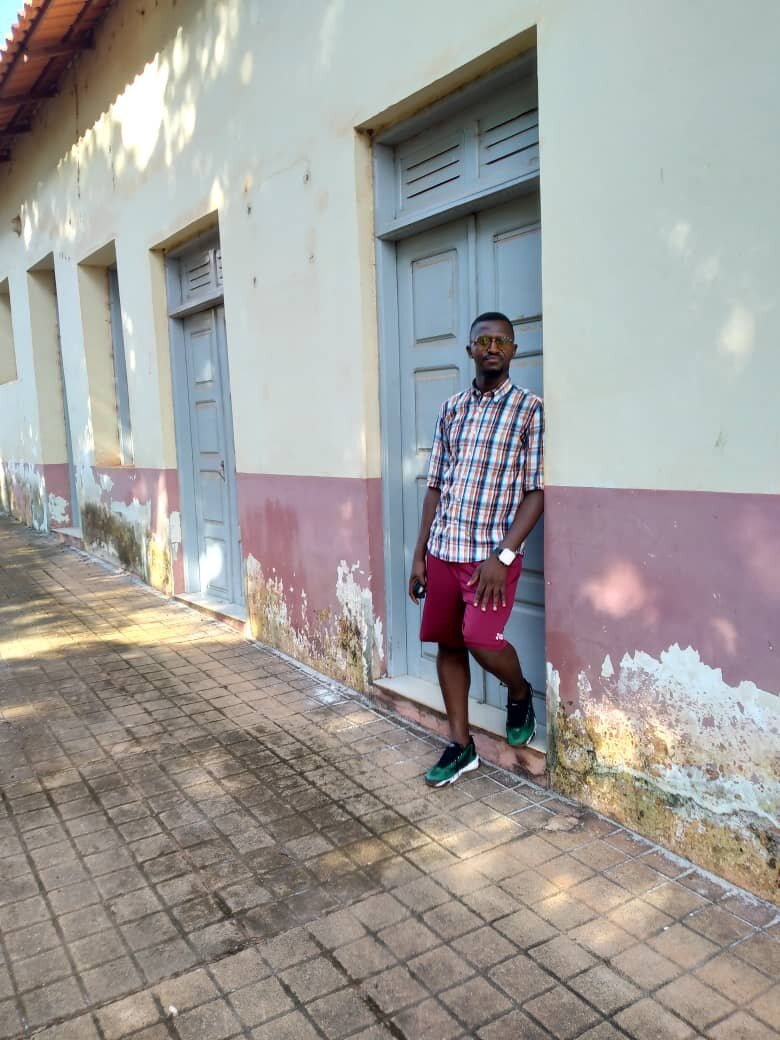
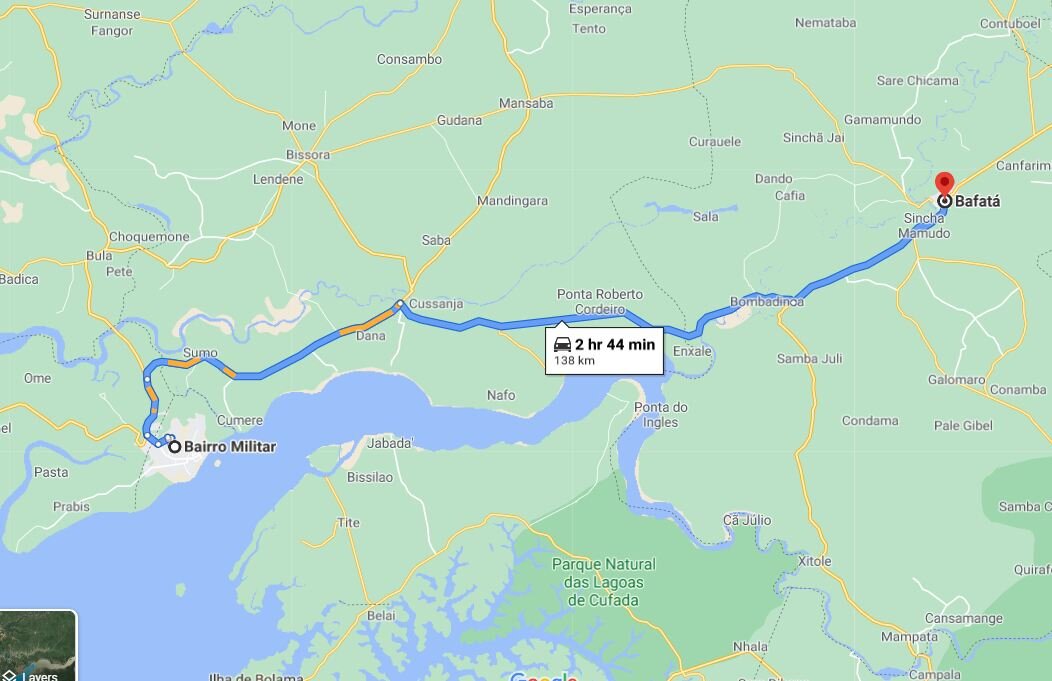
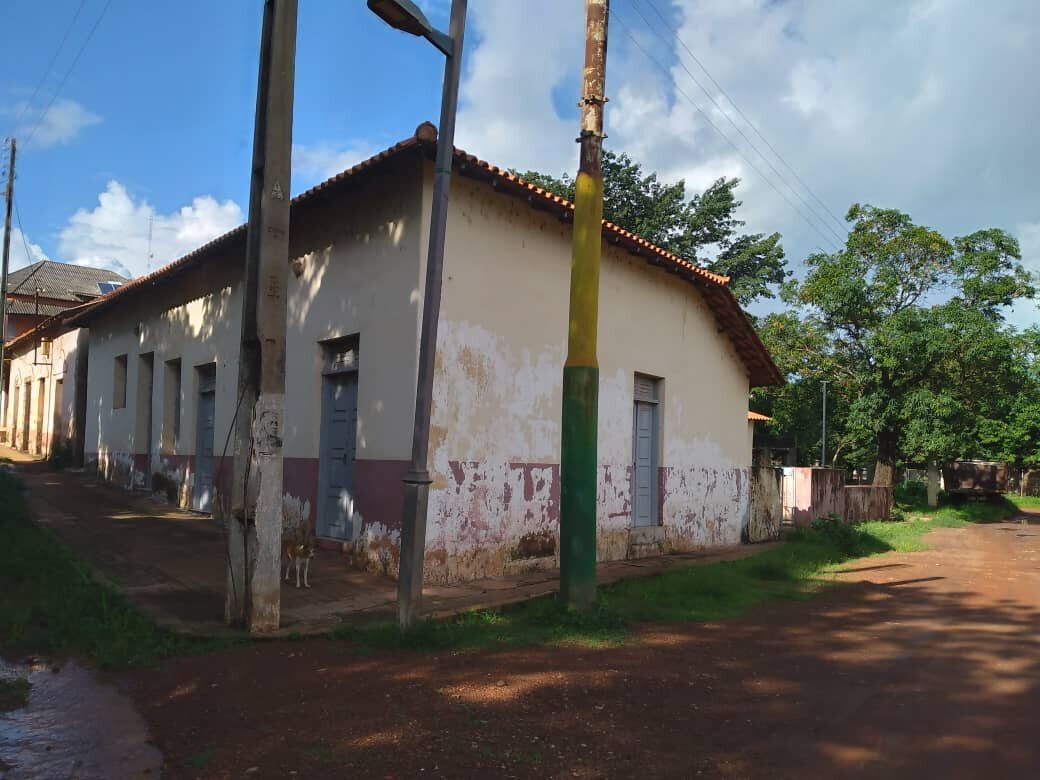
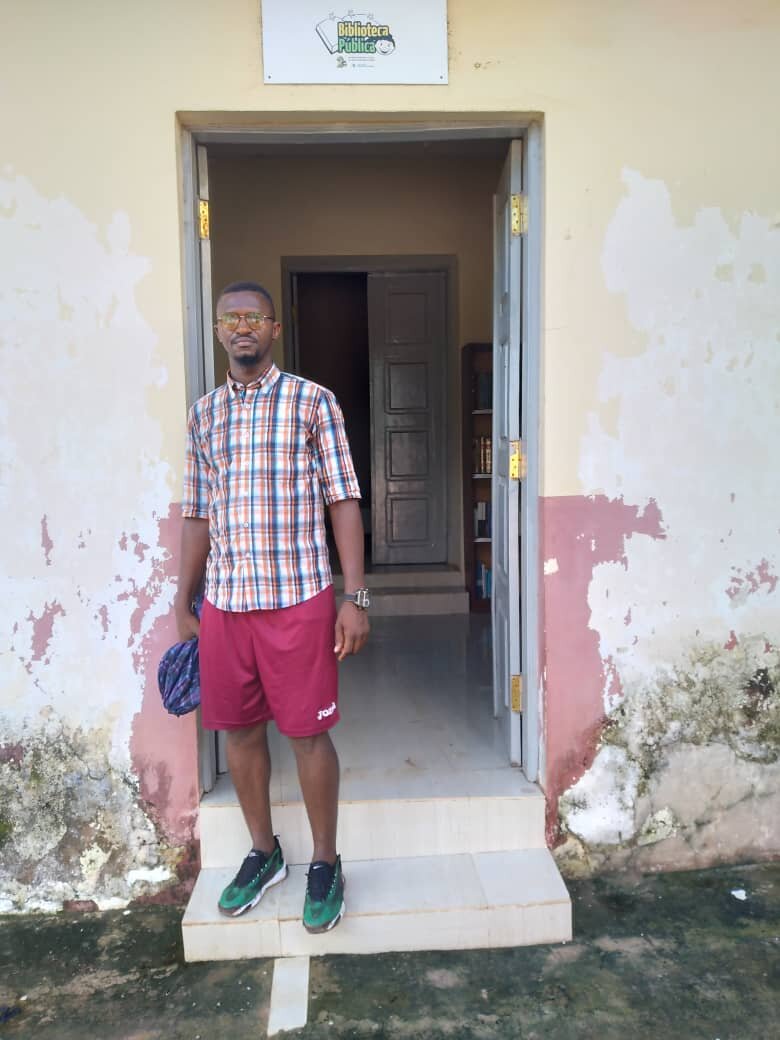
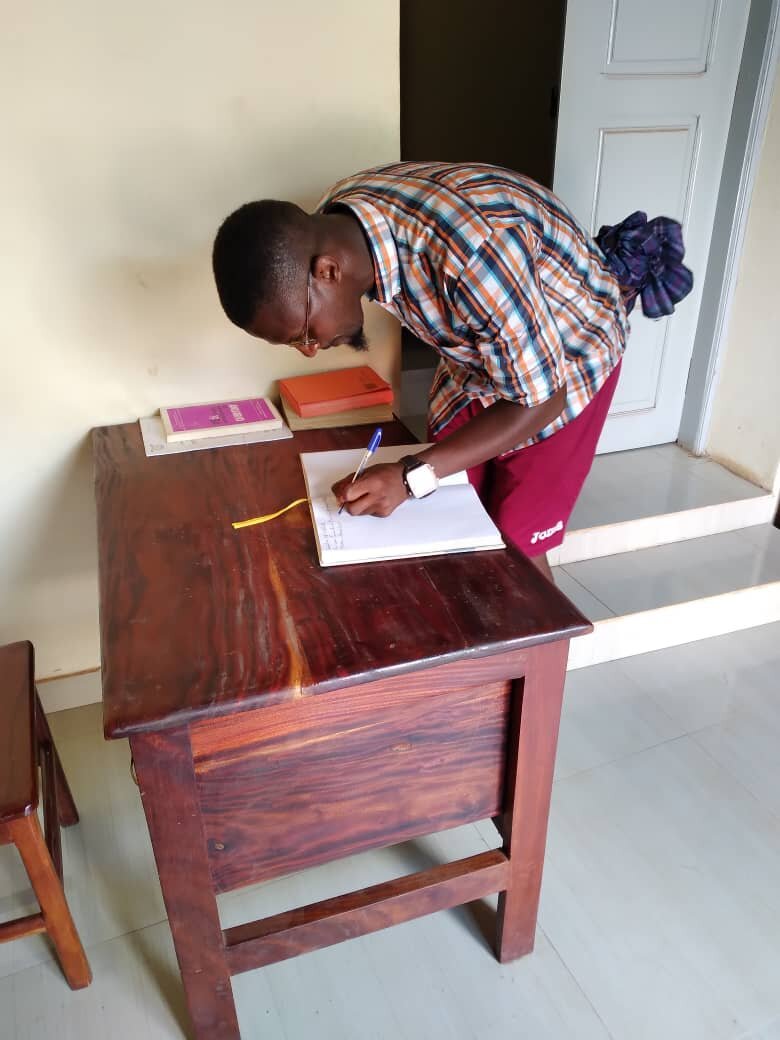
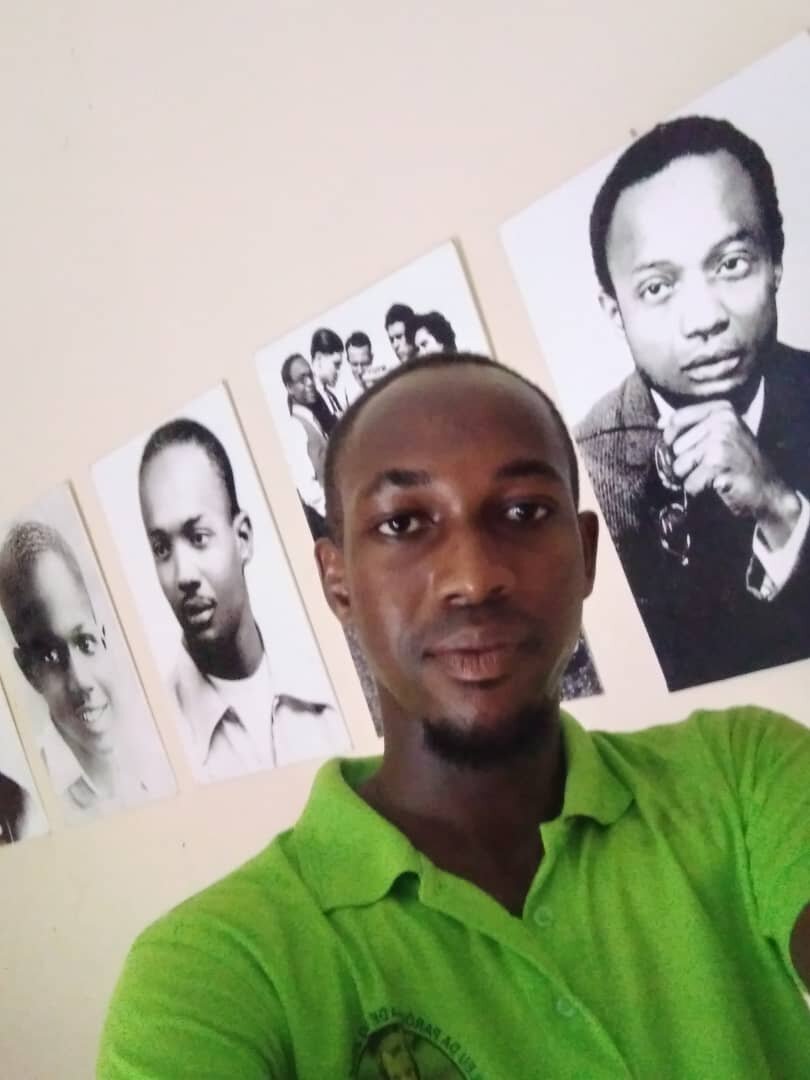



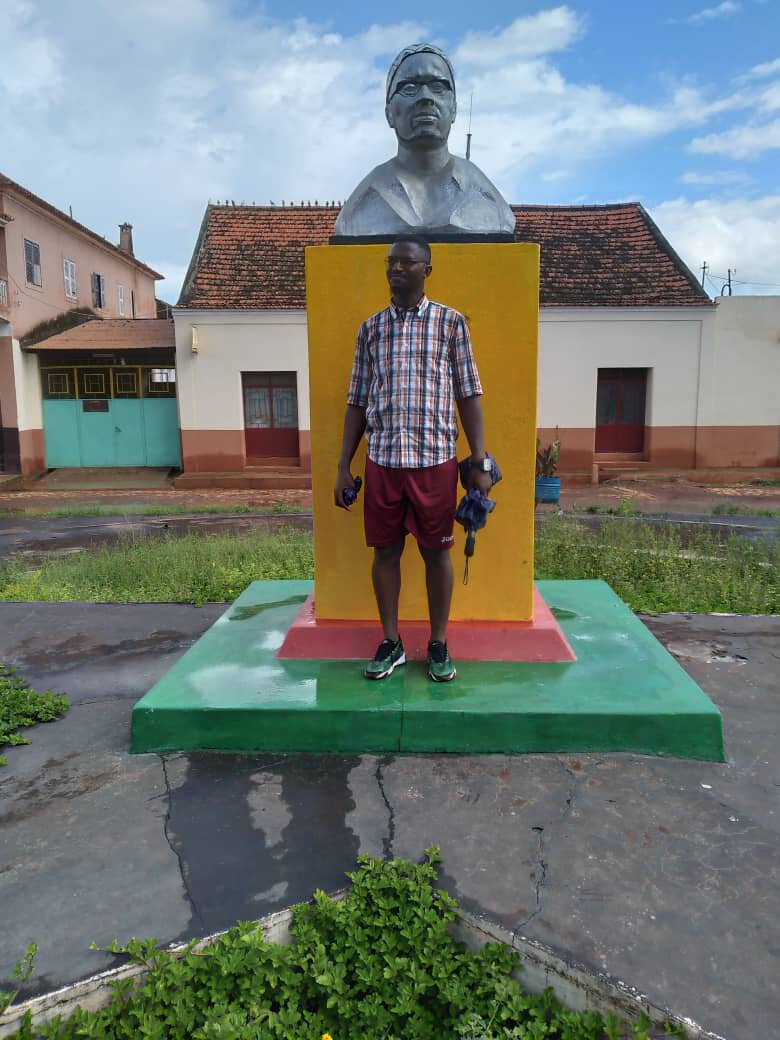
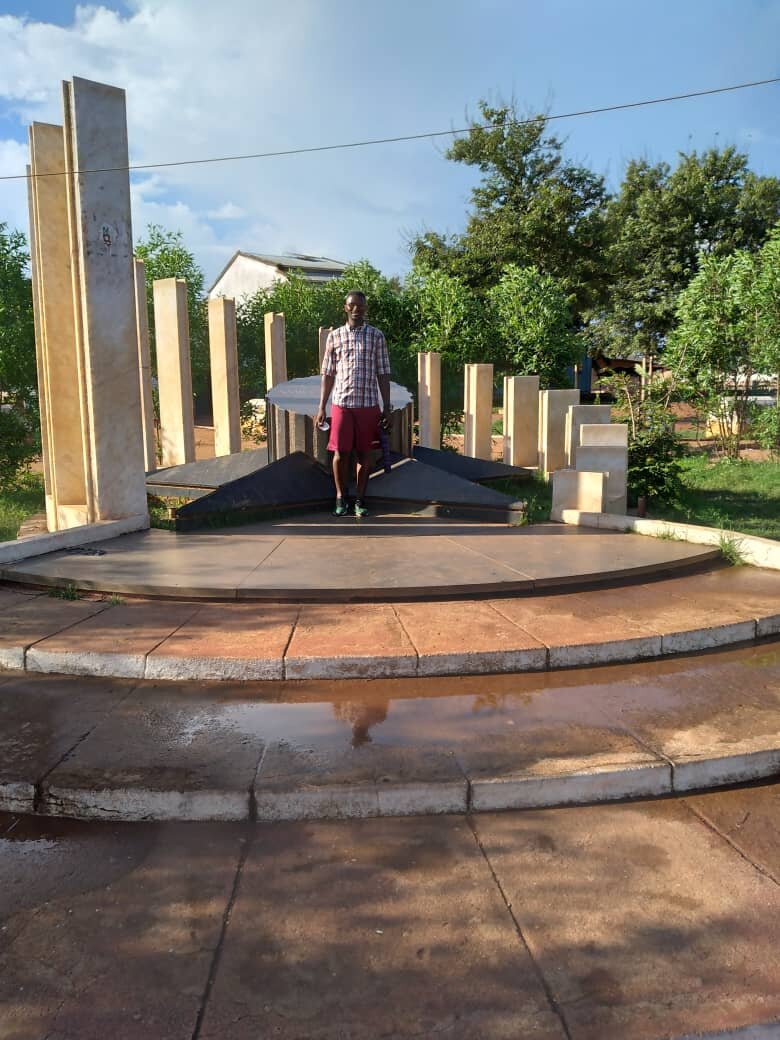
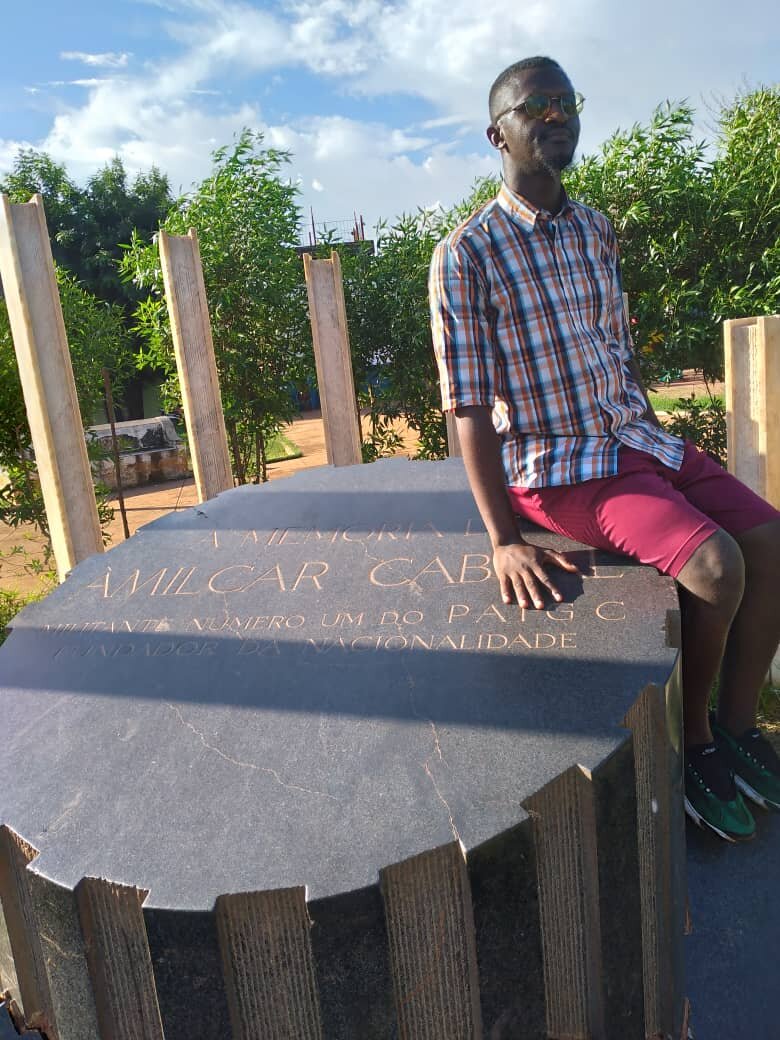
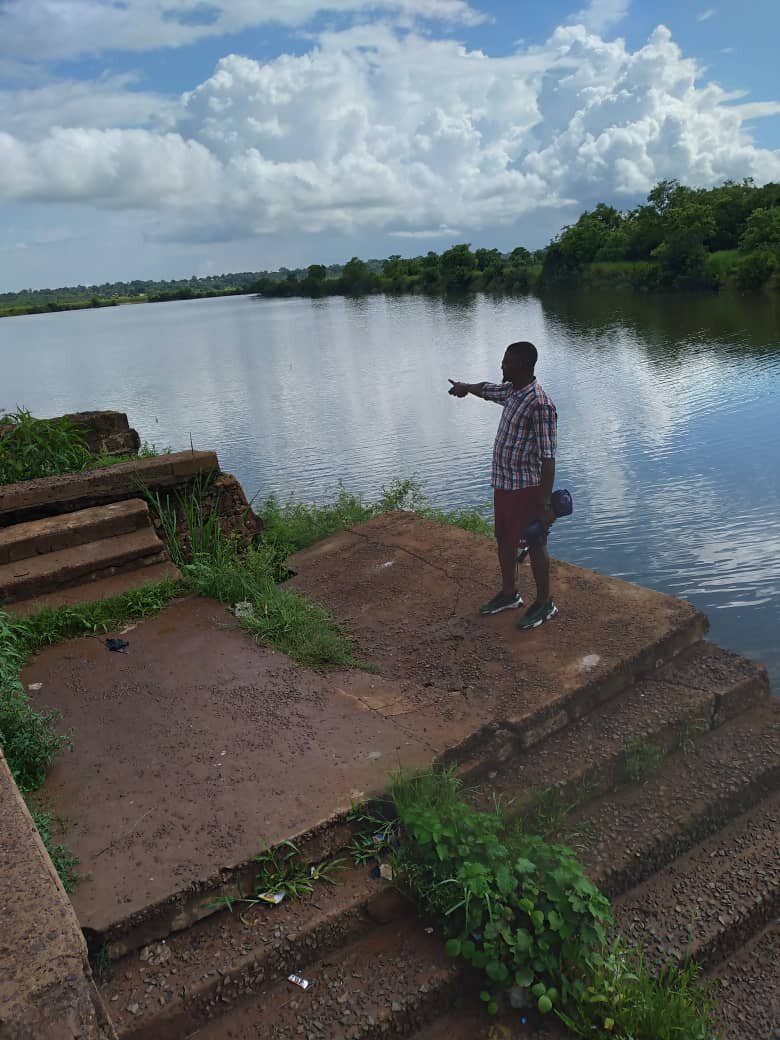
“Pude visitar o museu Amílcar Cabral e a sua cidade natal, a casa onde nasceu e muitas coisas. Em primeiro lugar, uma vez em Bafata, foi a minha primeira vez. Sempre ouvi falar do lugar desde que nasci, mas foi a primeira vez que pude visitá-lo. Chegando lá, na entrada, passei por um grande arrozal e a cidade está assentada no alto de um morro. Para você, é possível ver a cidade inteira de uma vez. É muito bonita e dá a impressão de ser uma cidade moderna.
Assim que você entra na cidade de Bafata, você vê que é uma grande cidade com infraestrutura…. Essa é a primeira impressão e imediatamente você reconhece que no passado foi uma bela cidade projetada pela colônia portuguesa. Infelizmente, está em baixa por falta de manutenção da infraestrutura. Também visitei o centro da cidade, caminhando de um lado para o outro do centro. No meio está a estátua do Amílcar Cabral e tirei algumas fotos.
Terminei a minha visita no Museu Amílcar Cabral. É o lugar onde morou com sua família. Disseram-me que o lugar era propriedade de um libanês que o deu ao pai de Amílcar Cabral. Eles moraram lá. Tentei imaginar o tipo de ambiente em que ele viveu e em que cresceu. Você pode ver uma extensão de um campo de arroz em casca. Imediatamente imaginei que fosse uma das razões porque Amílcar Cabral escolheu ser agrônomo. Porque todo dia, quando ele acorda e sai de casa, a primeira coisa que vê, além das casas, é esse arrozal. Eu posso imaginar em uma idade muito jovem, ele viu este campo de arroz em casca todos os dias. Outra coisa que pode ter influenciado Cabral na escolha da agronomia, é que ao entrar em Bafata, a primeira coisa que se vê é o grande arrozal. E quando ele acorda, a primeira coisa que vê é esta extensão de arroz em casca. E sempre que ele sai da cidade, ele passa por outro campo de arroz em casca. Então talvez todo esse ambiente tenha influenciado Amílcar Cabral a estudar agronomia na Universidade. Foi o que pensei enquanto estava ali e vendo o que Amílcar Cabral deve ter visto todos os dias.
O Museu Amílcar Cabral encontra-se em bom estado de conservação no interior. O exterior está um pouco sujo, mas o interior está reabilitado com pintura nova e mosaico no chão. Segundo o diretor, foi reformado em 2012. Dá para ver, de imediato, uma biblioteca com diversos livros sobre Amílcar Cabral e alguns escritos por ele. Na parte principal do museu encontram-se diversas fotografias de Amílcar Cabral. Há fotos de Cabral aos sete anos e na adolescência, além de fotos depois da faculdade e antes de sua morte. Há um trecho com a cama de Amílcar Cabral também. Eu queria deitar sobre ele, mas o Diretor disse que é muito frágil e que posso quebrá-lo! Tirei algumas fotos e fiquei muito próximo do Amílcar Cabral.
Eu fazia várias perguntas e uma das coisas que me impressionou foi sobre a mãe de Amílcar Cabral. O Diretor me disse que a mãe “oficial” Amílcar Cabral de que se fala é apenas uma mãe adotiva. Não é sua mãe verdadeira. A mulher adotou Amílcar Cabral. Segundo o diretor, o pai de Amílcar Cabral, Juvenal, foi para Bafata. Ele foi enviado como professor. Colocaram o povo cabo-verdiano da época, que tinha privilégio educacional mais do que o guineense ... Com esse privilégio foi educado e mandado para Bafata para ser professor. Ele foi enviado um pouco para fora da cidade de Bafata. É uma aldeia Fula. Quando Juvenal esteve nesta aldeia, conheceu uma rapariga Fula e essa rapariga Fula e Juvenal apaixonam-se. Depois de algum tempo, a menina engravidou e, como sabem, naquela época na Guiné-Bissau, é como um crime engravidar fora da própria tribo. Imagine um cabo-verdiano para engravidar uma menina Fula. É como uma humilhação para a família.
Quando a família soube que Juvenal havia engravidado a menina, foi uma pena para a família. Após o nascimento, poucos dias depois, a família obrigou a menina a dar o bebê a Juvenal porque Juvenal não podia ficar ali porque não eram casados e ele não era Fula. Então foi uma pena e depois de alguns dias, deram o bebê para o Juvenal e ele o levou. Juvenal também amava outra mulher cabo-verdiana e essa mulher aceitou receber o menino Amílcar Cabral e educou-o até todos os dias, até que ele foi para a Universidade.
Quando o Diretor me disse isso, fiquei um pouco surpreso porque isso é algo que nós (guineenses) não aprendemos. Aprendemos que o Amílcar Cabral nasceu da mulher cabo-verdiana. Agora, quando você vê que a pele de Juvenal é um pouco clara em comparação com a pele de Amilcar. E a mãe adotiva é uma mulher de pele MUITO clara. Amilcar tem a pele mais escura do que o pai. E isso me fez acreditar mais nessa história porque se a história oficial fosse verdadeira, provavelmente Amílcar Cabral seria muito mais leve. Então, para mim, isso foi uma prova de que a história da mãe Fula de Amílcar Cabral é verdadeiro.
No final, de tudo, perguntei ao Diretor que compromisso o governo tem com o Museu. O diretor disse que, infelizmente, o governo não faz nada em particular para manter o museu. Está um pouco abandonado e foi só em 2012, depois de muita pressão, que o governo fez alguma coisa. Eles não prestam atenção a isso. Mesmo para obter eletricidade, às vezes não há energia. Às vezes, o diretor tem que pagar seu próprio dinheiro para manter o lugar. Ele próprio não recebe há muitos meses, atrevo-me a dizer, há anos, não recebe. Portanto, é difícil manter o museu. Mas ele tenta fazer o seu melhor e continua comunicando ao governo central a necessidade de manter o museu e pagar a ele. Porque um lugar muito importante como aquele, o governo deve mantê-lo para todas as gerações, porque todas as gerações precisam saber sobre Amílcar Cabral, o fundador deste país. Então isso me deixou um pouco triste ... Depois disso, eu saí daquele lugar. ”
Quintino Medi's Journey to Discover Amilcar Cabral's Fula Mother in Guinea Bissau
On July 8, 2021 The President of the Republic of Guinea-Bissau, Umaro Sissocó Embaló, made a state visit to Cape Verde. The following day, President Embaló layed down a wreath at the Amílcar Cabral Memorial in Praia, stating,
“Cabral is Cape Verdean, we value our fighters and it is Cape Verdeans who know whether or not they value a worthy Cape Verdean son. . . . He is Cape Verdean and Guinean, too . . . “
For some, President Embaló’s statement only compounded the mystery and confusion surrounding Amilcar Cabral’s ancestry. Why would the President of Guinea Bissau not claim Guinea Bissau’s greatest hero?
To be sure, the entry for Amilcar Cabral in Wikipedia states,
“Cabral was born on 12 September 1924 in Bafatá, Guinea-Bissau, to Cape Verdean parents, Juvenal Antònio Lopes da Costa Cabral and Iva Pinhel Évora, both from Santiago, Cape Verde. His father came from a wealthy land-owning family. His mother was a shop owner and hotel worker in order to support her family, especially after she separated from Amílcar's father by 1929. Her family was not well off, so he was unable to pursue higher education. Amílcar Cabral was educated at Liceu (Secondary School) Gil Eanes in the town of Mindelo, Cape Verde, and later at the Instituto Superior de Agronomia, in Lisbon, Portugal. . . . “
Thus, one would get the impression that Amilcar Cabral was, indeed, born of Cape Verdean parents, albeit in the Bafatá region of Guinea Bissau.
I have always admired and been inspired by Amilcar Cabral. So when my good friend, Quintino Medi recently went to Bafatá to visit Amilcar Cabral’s home, I was very interested. As a Balanta descendant who suffered eight generations of ethnocide in the United States and recently re-discovered my own roots in Guinea Bissau, I found it curious that no one could tell me the ethnic origin of Guinea Bissau’s hero and most famous son. We heard rumors that Amilcar Cabral was a Balanta, but we learned this wasn’t true - Amilcar Cabral was associated with Balanta because they shared the same fighting spirit and love of freedom, and Cabral worked closely with the Balanta to win the independence struggle against the Portuguese.
Now, for the first time, my friend Quintino Medi clears up the mystery of Amilcar Cabral’s roots in Guinea Bissau.













“I was able to visit Amilcar Cabral museum and his birth city, the house where he was born, and many things. First of all, once in Bafata, that was my first time. I have always heard of the place since I was born, but this was the first time I was able to visit. When I reach there, by the entrance, I passed a big paddy rice field and the city is seated on the top of a hill. Your view is that it is possible to see the entire city at once. It is very beautiful and it gives the impression of being a modern city.
As soon as you enter the city of Bafata, you see its a big like city with infrastructure…. That’s the first impression and immediately you recognize that in the past it was a beautiful city designed by the Portuguese colony. Unfortunately, it is down because of the lack of maintenance of the infrastructure. I also visited the downtown, walking from one side through the center to the other. In the middle is the statue of Amilcar Cabral and I took some pictures.
I ended my visit at the Amilcar Cabral Museum. It is the place where he lived with his family. I was told that the place was owned by a Lebanese man who gave it to Amilcar Cabral’s father. They lived there. I tried to imagine the kind of environment he lived in and in which he grew. You can see an extension of a paddy rice field. I immediately imagined it is one of the reason’s Amilcar Cabral chose to be an agronomist. Because everyday, when he wakes up and goes outside of this house, the first thing to see, apart from houses, is this paddy rice field. I can imagine at a very young age, he saw this paddy rice field everyday. Another thing that could have influenced Cabral to choose agronomy, is that when you enter Bafata, the first thing you see is the big paddy rice field. And when he wakes up, the first thing he sees is this paddy rice extension. And whenever he leaves the city, he passes another paddy rice field. So maybe all of this environment is what influenced Amilcar Cabral to study agronomy at the University. This was my thinking while standing there and seeing what Amilcar Cabral must have seen everyday.
The Amilcar Cabral Museum is in good condition inside. The outside is a bit dirty, but the inside is rehabilitated with new paint and mosaic tile on the ground. According to the Director, it was renovated in 2012. You can see, immediately, there is a library with different books about Amilcar Cabral and some that were written by him. In the main part of the museum are different pictures of Amilcar Cabral. There are pictures of Cabral at seven years of age and in his teenage years, as well as pictures after university and before his death. There is a section with Amilcar Cabral’s bed, too. I wanted to lay down on it, but the Director said it is too fragile and that I might break it! I took some pictures and it made me feel very close to Amilcar Cabral.
I was asking different questions, and one of the things that impressed me was about Amilcar Cabral’s mother. The Director told me that the “official” Amilcar Cabral mother now that people talk about is just an adopted mother. It is not his real mother. The woman adopted Amilcar Cabral. According to the Director, Amilcar Cabral’s father, Juvenal, went to Bafata. He was sent as a teacher. They put the Cape Verdean people at that time, who had educational privilege more than the Bissau Guinean….. With that privilege he was educated and sent to Bafata to be a teacher. He was sent a little bit outside the Bafata city. It is a Fula village. When Juvenal was in this village, he met a Fula girl and that Fula girl and Juvenal fall in love. After some time, the girl got pregnant, and as you know, at that time in Guinea Bissau, it is like a crime to get pregnant outside your own tribe. Imagine a Cape Verdean guy to impregnate a Fula girl. It is like a humiliation for the family.
When the family knew that Juvenal had impregnated the girl, it was a shame for the family. After the birth, a few days later, the family obliged the girl to give the baby to Juvenal because Juvenal could not stay there because they were not married and he was not Fula. So it was a big shame and after some days, they gave the baby to Juvenal and he took him. Juvenal also loved another woman from Cape Verde and that woman accepted to receive the infant Amilcar Cabral and raised him up until all of his days until he went to the University.
When the Director told me that, I was a bit surprised because that is something we (Bissau Guineans) are not taught. We are taught the Amilcar Cabral was born of the Cape Verdean woman. Now, when you see that Juvenal’s skin is a bit light compared to Amilcar’s skin. And the adoptive mother is a VERY light skinned woman. Amilcar is darker skinned when compared to his father. And this made me to believe more about this history because if the official story were true, Amilcar Cabral would likely be much lighter. So to me, this was evidence that the story of Amilcar Cabral’s Fula mother is true.
At the end, of it all, I asked the Director what commitment the government has made to the Museum. The Director said that, unfortunately, the government doesn’t do anything in particular to maintain the museum. Its a bit abandoned and it was only in 2012, after huge pressure, that the government did anything. They don’t pay attention to it. Even to get electricity, there is sometimes no power. Sometimes the Director has to pay his own money to maintain the place. He himself has not been paid for many months, I dare to say, years, he has not been paid. So it is difficult to keep the museum. But he tries to do his best and he keeps communicating to the central government the need to maintain the museum and pay him. Because a very important place like that, the government should maintain it for all generations because all generations need to know about Amilcar Cabral, the founder of this country. So it made me a bit sad…… After that, I came out from that place.”
Space and Time in the African Worldview: Excerpt from Remembering the Dismembered Continent by Ayi Kwei Armah
The following is an excerpt from one of Africa’s greatest intellectuals and writers today, Ayi Kwe Armah.. In his essay, COUNTERSTATEMENTS, PSEUDOSTATEMENTS, AND STATEMENTS: ARTICULATING AN AFRICAN WORLDVIEW, Armah writes the following concerning a discussion of Wole Soyinka’s Myth, Literature and the African World:
SOYINKA: ANALYSIS AND EVALUATION
Armah writes,
“According to Soyinka, African time-structuring is not bi-polar. It is not polar at all, since it is not linear but cyclical. Nor is it static, as Mbiti implies; it is dynamic. Strictly speaking, it is so dynamic that it has no terminal. Contrary to Mbiti’s misinformation, it is neither unidirectional nor reactionary. Its direction is a reversible cycle. Such a directional pattern has literally limitless potential for innovation - positive as well as negative. For those who can understand insights only when they are stated in political terms, this means the African worldview is neither inherently revolutionary nor inherently reactionary. It contains both of these opposite terms, and everything between and beyond them.
Such a worldview, philosophically far removed from deterministic schemata, puts a premium on the rational examination of issues involving destiny, compulsion and choice.
In place of poles, Soyinka’s description of African time structure posits connected arcs of a reversible cycle. Of these arcs the best known, and the most commonly discussed, are three: past, present and future, flowing into each other. Less well known, and seldom talked about, is the time dimension Soyinka calls the fourth dimension. This sounds arcane, but a little concentrated thinking suffices to make its rationality plain.
The fourth dimension of time is that special area of confluence where ideas and images from the past (fetched from the study of as much history as an intellectual has intelligence to grasp) interact with dreams and hopes of future time, thus inspiring persons living in present time to plan, to undertake, and to achieve projects capable of drawing the human future closer than hitherto imagined.
To summarize, then: the past is the arc of the dead, who in the African worldview are never just dead, since their ideas remain available; the present is the arc of the living; the future is the arc of those not yet born. As for the fourth dimension, it has to be the arc of dreamers who, though living, can connect with ancestral ideas, mix them with present energy, and from the alchemy of hope create new realities tomorrow. That’s where creative artists, visionaries and philosophers live, seemingly out of it as far as those content with the three conventional dimensions of time are concerned.
The African community, say Soyinka, is not one arc but all three, the whole unending cycle, plus the fourth dimension. There is, he implies, no real possibility of creativity, within African reality until would-be creators understand this, integrate it into their thinking, and live it.
In principle, no one arc dominates the others. As for dwellers in the fourth dimension, typically they are even reluctant to live visibly inside the more conventional arcs. Circumstances differ, and with them the ascendant arc. The instructions of the dead (provided the living are literate enough to read them), the pressing needs of the living, and the interests of the unborn, all intersect in constant interaction, not in a frozen hierarchy. To illustrate this hetarchy, Soyinka gives a brief example of an elder owing respect to a child within this scheme of things, and the example is apt. In a society organized in age groups, such a system could be infinitely amenable to development.
When Soyinka discusses the organization of space within the African worldview, his concept of space is both external and internal. (In a text not under discussion here, Soyinka state the African attitude to physical space briefly and adequately:
Space belongs to the community in its entirety, dead, living and unborn.
When land or sea is worked to produce a yield, the yield belongs to those who worked that land or that sea. such ideas, when they appear in the western world, are called new and communistic. In Africa they are old and common. . . . )
In its organization of psychic space, Soyinka says, the African universe is humanocentric. Nonhuman phenomena exist and are adequately acknowledged. But beyond that, the African psyche, in its attempts to harmonize the external universe with its internal needs, populates the external cosmos with projections from within itself. These various projections from the human psyche make up the different combinations of gods, goddesses, spirits and demons of the exoteric African world.
The method and product of such psychic projections is myth, and the African mythopoetic universe is misunderstood. if it is assumed that all Africans, the initiated and the uninitiated, believe that the gods, goddesses, spirits and demons have a literal existence. They do have a real existence, in the sense that in the African worldview ideas are as much a part of reality as matter and artifacts. Some individuals are literal believers, some are not. Some understand proverbs, some need lengthy explications. the quality of belief depends on intelligence, education, training, experience and credulity.
What Soyinka makes clear is that at its most mature levels, African society acknowledges that gods and spirits are human made fictions, projections of the human psyche.
There are angry gods, peaceable gods, creative gods, destructive gods, dictatorial gods, democratic gods, honest, dependable gods, and hustling, trickster gods. All are arcs of the African psyche, facets of the African mind. So if the productions of the African mind are to be understood, the searcher will do well to study the myths of the African people.
The gods, then, says Soyinka, were made by human beings. . . . Here again what we have is not a linear, unidirectional relationship, but a reversible cycle. Human beings make gods; the gods reciprocate by helping beings become more human. This may sound mystifying, but only to readers who forget Soyinka’s explanation of the African attitude to gods and spirits. According to this explanation, the gods are ideas and ideals clothed in mythic form. That there are persons ready to take the mythic forms for fact is only natural, just as natural as the existence of persons who see through myths and know that at the origin of every myth lies human ideation. The African universe of thought is inclusive; it contains the believer, the agnostic, and the atheist.
The human consciousness that projects itself in the form of gods and goddesses and spirits has a purpose that these gods and spirits are designed to serve.
The purpose behind these projections is to enable the self-actualization and self-development of the originating consciousness.
That is to say, the African consciousness, if it is free, creates and then projects those ideas and ideals necessary to its own development. Gods are growth goals, markers, stations of the mind in motion toward achievement. Demons are growth obstacles, to be confronted or accommodated, fought or evaded. The paraphernalia of mythopoetic culture in Africa contain key reference points necessary to the self-orientation of the African consciousness, necessary to the elaboration of the African worldview. . . .
But in the still colonized world that is intellectual Africa today, colonized minds have not only remained ignorant of the best cultural reference points created by the African people throughout the millennia; they have grown actively hostile to the very idea of recognizing, studying, possessing and developing those cultural assets.
So disoriented African intellectuals adopt alien gods, myths, thought systems and ideals thinking they can make them their own, believing they will work for them.
What such disoriented African intellectuals do not know is that Africa possesses its own ideal projections, and they cover the entire range of human possibility. In Soyinka’s words, the possibilities range from the saintly, agonistic nonviolence of the Obatala ideal, all the way to the assertive, aggressive innovativeness - creative, destructive, scientific, technological, artistic - of the Ogun ideal. Intellectually disoriented Africans, in their inertia, remain ignorant of the fact that the ideational resources required in war and peace, reaction and revolution, stagnation and dynamic growth, are in fact present in the original lodes of African culture and history, awaiting only rediscovery and reuse by thinking Africans.”
For further study:
The Eurocentric projection of Christianity and the Disoriented African Christian Mental Slavery
https://vivisxn.com/afrofuturism-otherworldliness-and-dope-digital-art-from-manzel-bowman-taj-francis-paracosm-and-more/
Historic Moment in Guinea Bissau: Denita Madyun-Baskerville is the First Balanta Woman to Return to Her Ancestral Homeland Since the Slave Trade
As part of the Decade of Return Initiative, Denita Madyun-Baskerville celebrated her 62nd birthday on May 29th with the Ban-Faaba Council at the Balanta B’urassa History and Genealogy Society in America’s headquarters in the Bairo Militar subdivision in Bissau, the capital city of Guinea Bissau.
From 1761 to 1815, records show that 6,534 Binham Brassa (Balanta people) were trafficked from their homeland and enslaved in the Americas. That’s an average of at least 121 Balanta per year. Denita Madyun-Baskerville is the first known female descendant of one of those people to return to the land of her ancestor.
Denita was born on May 29, 1959 to John H. Dues and Dorothy E. McCarter in Washington D.C. She was the seventh of eight children. In 1977, at the age of 18, Denita enlisted in the US Army and attended basic training at Fort Jackson, South Carolina. She attended Advanced Individual Training (Quartermaster Supply School) at Fort Lee, Virginia . Twenty-two years later she retired as First Sargent in the United States Army. In between, Denita did tours of duty in Germany and Hawaii and served as a Drill Sargent at Fort Dix in New Jersey. When asked what was the highlight of your service career, Denita said, “leading almost 150 soldiers in the 40th S&S Unit at Scholfield Barracks in Hawaii.”
In January, 2020, African Ancestry’s patrilineal test determined that Denita’s paternal ancestry is a 100% match with Balanta. According to Denita, “As soon as I received my test results, my immediate goal was to return to my ancestral homeland.”
“It’s the CONNECTION, the feeling…. This trip has fulfilled the desired of knowing where I am from,” said Denita. “Coming back home I feel like I belong. I KNOW where I am from. I would tell all Balanta in America, especially the women, that they need to return home. You have to FEEL it. You have to meet OUR people. You can travel all over the world, but returning to your ancestral homeland is TOTALLY different.”
CLICK TO BECOME PART OF THE DECADE OF RETRUN INITIATIVE
Sketches of the History of Balanta People in America: Anthology Series 1 now available!
Sketches of the History of Balanta People in America: Anthology Series 1
This is the first book documenting the history of Balanta people in America. From 1761 to 1815, records show that 6,534 Balanta people were taken to the Americas. Because of the near complete ethnocide against them, their history and heritage was nearly lost until the advent of genetic testing allowed their descendants to be identified.
In 2019, The Balanta B’urassa History and Genealogy Society in America (BBHAGSIA) was established to begin the process of recovering from ethnocide, rediscovering the lost history, and restoring the lost heritage. Six members of BBHAGSIA have completed extensive research, which, collectively, serve as sketches of the history of Balanta people in America from 1732 up to the present. For the first time we learn of the everyday life of Balanta people in America as well as the prominent role they have played in the Civil War, the Civil Rights struggle, the Black Panther Party and the Black Liberation Movement, living up to their name “Balanta” which means “those who Resist”.
CLICK HERE TO ORDER YOUR COPY NOW!
MAY 5TH - THE MOST IMPORTANT DAY IN THE TWENTIETH CENTURY AND EVIDENCE THAT THE ANCESTORS OF AFRICAN PEOPLE COMMUNICATE TO THEIR DESCENDANTS ON EARTH AND SHAPE WORLD EVENTS
In 1917, a Black man named Charles Henry Holmes (pen name Clayton Adams) wrote a book entitled Ethiopia, The Land of Promise: A Book With A Purpose. The book was a novel best described as visionary prophetic fiction. In the book, five Black men had strange dreams which caused them all to meet together on May 5. One of the dreams pictured Black soldiers and a red, gold and green flag. The men began meeting on the fifth of every month and realized that their dream was about forming an organization, the Ethiopian Union, in order to combat and conquer Jim Crowism in America.
The events in the book actually came true. Black soldiers in Ethiopia and all over the world gathered together as the Ethiopian Emperor left on May 5, 1936 to fight the Battle of Armageddon. After exactly five years of battle, on May 5, 1941, the Ethiopian Emperor returned to Ethiopia victorious. He then set up the Ethiopian Union in Addis Ababa, Ethiopia, calling it The Organization of African Unity (OAU).
Below is the most amazing story how all of this happened, exactly as the Ancestors revealed it Charles Henry Holmes (pen name Clayton Adams) who prophesied it in the book:
That same year, Robert Athlyi Rogers, another Black man, also produced a pamphlet called The Negro Map of Life and began travelling across the United States preaching “the law of Ethiopian’s redemption.”
Two years later, in 1919, Regent Plenipotentiary Ras Tafari sent four ambassadors by way of the ocean, to the United States. The Royal Ethiopian Mission included Dedjamatch Nadao, Empress Zauditu’s nephew and Commander of the Imperial Army, Ato Belanghetta Herouy Wolde Sellasie, Mayor of Addis Ababa, Ato Kantiba Gabrou, Mayor of Gondar, and Ato Sinkas, Secretary of the Commander of the Imperial Army. Their purpose was to renew a Treaty of Friendship with the United States signed by Emperor Menelik in 1904. In honor of their visit, the Ethiopian Flag was ceremoniously hoisted over the White House.
During the Ethiopian Mission, the bloodiest race riot in Chicago’s history erupted on July 27, 1919. Eugene Williams, a young black boy, drowned at the 29th Street Beach after a rock thrown by George Stauber, a young white boy, knocked Williams from a raft. The Ethiopian Prince Nadao, who stated he had seen the Chicago Defender newspaper in Ethiopia, told one of their reporters “[Ethiopians] dislike brutality, burning at the stake, lynching of any nature, and other outrages handed upon [the African American] people …. Fight on, don’t stop!”
Before the Ethiopian Mission ended, an invitation to return (“Repatriate”) to Ethiopia was made to Rabbi Arnold Ford. That the offer of repatriation was given to him was extremely significant because Rabbi Ford was leader of the Hebrew Israelites (“Black Jews”) of Harlem. In this capacity, he would be able to resettle the existing remnant of Israel that was captured in the slave trade. In addition, Rabbi Ford was the musical director of Marcus Garvey’s Universal Negro Improvement Association (UNIA). Given that the UNIA was the largest, greatest organization of the scattered Ethiopians/Africans, it makes perfect sense to make the offer to the UNIA. Finally, as musical director, Rabbi Ford could use the traditional, spiritual medium of song (psalms, hymns), to communicate the Ethiopian message to the mass of black people scattered in north, south and central America, including the Caribbean. This Rabbi Ford did. It is, therefore, no coincidence that Rabbi Ford gave the UNIA “The Universal Ethiopian Anthem”, later to be used by the Ethiopian World Federation, Incorporated (EWF). The Rastafari Family Worldwide still sings the anthem at its gatherings.
On December 20. 2019, the Chicago Defender wrote, “Planning for Abyssinians – On January 27 (1920) the King of Abyssinia will be crowned and then he will appoint his representatives who will accompany the prince here to resume commercial trade with the United States. This is what St. Bishop J.A. Hickerson, himself a native Abyssinian, told a Defender reporter who interviewed the bishop at the parish house of the church which they term the Ethiopian National Church, 62 E. 123rd Street. The Bishop, who was attired in silken robes of the Abyssinians, said the queen of the African country had retired from the throne in conformity with the rule laid down by the Queen of Sheba. The committee is planning a wonderful reception to the Crown Prince and his followers when they finally reach this country.”
During the same year as the Ethiopian Mission, a Black man from Chicago named revered James Morris Webb published a treatise entitled A Black Will Be the Coming Universal King, Proven By Biblical History. Reverend Webb’s prophecies were based on the fourth Chapter of Micah, the third chapter of Habakuk, and the third chapter of Joel.
Reverend James Morris Webb
The Prophet Grover Redding
Another black man named Grover Redding who lived in Chicago and witnessed the visit of the Ethiopian Mission, began to preach that the visit of the four Ethiopian Ambassadors was the actual, literal fulfillment of Psalms 68:31
“Princes shall come out of Egypt, Ethiopia shall soon stretch forth her hands unto god.”
Redding also preached that the Ethiopian Mission fulfilled Isaiah 18:1-7
“Woe to the land shadowing with wings, which is beyond the rivers of Ethiopia: That sendeth ambassadors by the sea, even in vessels of bulrushes upon the waters, saying, Go ye swift messengers, to a nation scattered and peeled, to a people terrible from their beginning, hitherto; a nation meted out and trodden down, whose land the rivers have spoiled! All ye inhabitants of the world, and dwellers on the earth, see ye, when he lifteth up an ensign on the mountains; and when he bloweth a trumpet, hear ye. For so the Lord said unto me, I will take my rest, and I will consider in my dwelling place like a clear heat upon herbs, and like a cloud of dew in the hear of harvest . . . . In that time shall the present be brought unto the Lord of hosts of a people scattered and peeled, and from a people terrible from their beginning hitherto; a nation meted out and trodden under foot, whose land the rivers have spoiled, to the place of the name of the Lord of hosts, the mount Zion.” (Isaiah 18:1-7).
Had not princes come out of Ethiopia? Didn’t four ambassadors arrive to the land shadowing with wings (of the American Eagle), which is beyond the rivers of Ethiopia? Were not the Black people scattered and downtrodden, sold on auction blocks upon arrival and terrible since their beginning in this spoiled land? Wasn’t an ensign (flag) raised above the nation’s capital in honor of the swift messengers?
The prophet Zephaniah revealed to Redding the interpretation of the Ethiopian Mission and the meaning of Isaiah. Redding preached:
“Woe to her that is filthy and polluted, to the oppressing city!...Therefore wait ye upon me, saith the Lord, until the day that I rise up to the prey: for my determination is to gather the nations, that I may assemble the kingdoms, to pour upon them mine indignation, even all my fierce anger: for all the earth shall be devoured with the fire of my jealousy. For then will I turn to the people a pure language, that they may all call upon the name of the Lord, to serve him with one consent. From beyond the rivers of Ethiopia my suppliants, even the daughter of my dispersed, shall bring mine offering.
In that day shalt thou not be ashamed for all thy doings, wherein thou hast transgressed against me: for then I will take away out of the midst of thee them that rejoice in thy pride, and thou shalt no more be haughty because of my holy mountain. I will also leave in the midst of thee an afflicted and poor people, and they shall trust in the name of the Lord. I will gather them that are sorrowful for the solemn assembly, who are of thee, to whom the reproach of it was a burden. Behold, at that time I will undo all that afflict thee: and I will save her that halteth, and gather her that was driven out; and I will get them praise and fame in every land where they have been put to shame. At that time will I bring you again, even in the time that I gather you: for I will make you a name and a praise among all people of the earth, when I turn back your captivity before your eyes, saith the Lord.
This fulfillment of prophecy inspired the faith of Grover “The Prophet” Redding to start working. He began to organize “Ethiopians”, my suppliants, even the daughter or my dispersed, an afflicted and poor people, sorrowful, to whom the reproach of it was a burden, to gather them for the solemn assembly, to the place of the name of the Lord of hosts, the mount Zion. The name of the Prophet Redding’s organization: The Star Order of Ethiopia and the Ethiopian Mission to Abyssinia.
The Prophet Redding studied the Treaty of Friendship that the Ethiopian Ambassadors renewed with the United States. According to the treaty:
ARTICLE I.
The citizens of the two Powers, like the citizens of other countries, shall be able freely to travel and to trans-act business throughout the extent of the territories of the two contracting Powers, while respecting the usages and submitting themselves to the tribunals of the countries which they may be located.
ARTICLE II.
In order to facilitate commercial relations, the two Governments shall assure, throughout the extent of their respective territories, the security of those engaged in business therein and of their property.
ATICLE III.
The two contracting Governments shall reciprocally grant to all citizens of the United Stated of America and to the citizens of Ethiopia all the advantages which they shall accord to other Powers in respect to Customs duties., imposts and jurisdiction….”
To Prophet Redding, the treaty revealed two very important truths:
1. Ethiopian citizens were to be accorded rights and privileges that he, as a Black man, descended from Africans brought to America against their will in chains aboard slave ships, was barred by Jim Crow laws and customs;
2. Ethiopia in the future, planned greater contact with the United States for commercial purposes.
Thus, on the one hand, the Prophet Redding, seeking to escape his second class “Jim Crow” status and condition, saw salvation in “Ethiopian Citizenship”. As an “Ethiopian” he and others would be able “freely to travel and to trans-act business throughout the extent of the territories” with the “security of those engaged in business therein and of their property.” Therefore, Prophet Redding sought to renounce his American “Jim Crow” Negro status and become a citizen of Ethiopia, pledging allegiance to the Government of Ras Tafari.
On the other hand, biblical prophecy said that the Ethiopian Ambassadors would come to announce the return of the scattered Ethiopians to Zion. Therefore, reasoned Prophet Redding, salvation in this lifetime meant becoming “Ethiopian” to escape Jim Crow. The Star Order of Ethiopia in Chicago would gather the scattered Ethiopians to wait on the Lord for their return, all the while preparing themselves for business in Ethiopia. For one dollar ($1.00) the Star Order of Ethiopia provided an Ethiopian flag, a small pamphlet containing a prophecy relating to the return of the black-skinned people to Africa, a copy of the treaty between the United States and Ethiopia, and a picture of Ras Tafari. The pamphlet quoted Zephaniah 3:8-10, Isaiah 18 and Psalms 68:30-31 and published the following message on their membership application:
“This is to certify that my name was given to Elder Grover Redding, Missionary to Abyssinia, to show my brothers in my motherland that I am with them, heart and soul. . . . I have signed my name as an Ethiopian in America in sympathy with our motherland Ethiopia. I henceforth denounce the name Negro which was given me by another race.”
Membership entailed signing the application that committed oneself to return to “my motherland of Ethiopia” in order to fill one of forty-four positions such as electrical engineer, mechanical craftsman, civil engineer, architect, chemist, sign-painter, cartoonist, illustrator, traffic manager, teacher, auto-repair, agriculture and poultry-raising.
At this point, the applicant declares himself ready at any time needed to fill any positions in the list, which he has checked and which he is qualified to fill. Blank space appears then for name, address, present occupation, city, state and county. The applicant was requested to mail the application to 1812 Thirteenth Street, Washington D.C., in care of Mrs. Dabney, or 115 W. 138th Street, New York City, care of Charles Manson.
The Prophet Redding, expecting Prince Ras Tafari to come out of Ethiopia with arms outstretched in the very near future (Chicago Defender, December 20. 2019) at once staged a parade to renounce “American Jim Crow Citizenship” by publicly burning a flag in front of a café on 209 East 35th Street on June 20, 1920. According to the Chicago Defender newspaper, June 25, a headline stated, “Fanatics Burn US Flag Murder Two; Shoot Police Imposter of Abyssinian Government Stage Gun Battle in Street.” The report stated:
“Two white men are dead and several seriously injured following a reign of terror which began at 35th Street and Indiana Avenue last Sunday (June 20) at 7:30 o’clock. Hostilities started when Grover Redding, alleged chieftain of the Star Order of Ethiopia and Ethiopian Missionary to Abyssinia” burned a United States flag in front of Entertainers Hall. Redding, clad in regalia styled after Abyssinian customs, led a parade on horseback to this point, after being driven from Trinity M.E. Church, 30th Street and Prairie Avenue by Rev. Barber, who objected to the seditious language used by Redding and his followers who had engaged the church for lecture purposes.
Redding engaged in short ceremony before he applied the torch to the flag. Policeman Joseph Owens of the Cottage Grove Avenue station was attracted by the flames and rushed to the scene to prevent Redding from burning another flag. Owens, according to witnesses, attempted to arrest Redding, and when he placed his hand on the latter four shots rang out in rapid succession. Owens sank to his knees, but later regained his feet, staggered to the drug store and sent in a riot call. R.L. Rose (white), a sailor from Co. G 15th regiment stationed at the Great Lakes Naval Training station, ran to the rescue of the officer and made an attempt to secure the flag which Redding was about to burn. Mason Furno and his son alleged to be Abyssinians and followers of Redding, made for a nearby auto in which several high powered army rifles had been concealed. Furno’s son fired at rose and the latter made a dash for the United cigar store, located at 270 East 35th Street. Rose was shot dead in the store and Joseph Hoyt (white), a clerk, was also slain when he sought to rescue Rose. It has not been established whether Redding or the Furnos killed the two white men. The Furnos have not been captured.
Witnesses stated that after Redding burned the flag and Policeman Owens was shot, one of the Furnos shouted, “Join us boys, we are 40,000,000 strong.” Redding was arrested Monday. . . .”
Two days later Prophet Redding was hanged. A supporter of the Star Order of Ethiopia said to a Commission Investigating race relations in Chicago:
“I am a radical. I despise and hate the white man. They will always be against the Ethiopian. I do not want to be called Negro, colored, or ‘nigger’. Either term is an insult to me or to you. Our rightful name is Ethiopian. White men stole the black man from Africa and counseled with each other as to what to do with him and what to call him, for when the Negro learned that he was the first civilized human on earth he would wise up and rebel against the white man. To keep him from doing this it was decided to call him Negro after the Niger River in Africa. This was to keep him from having that knowledge by the Bible for his right name was Ethiopian. This was done so we could always be ruled by the white man. I will call your attention to the Bible. There is not one word of evil against the Children of Israel and Ethiopia written in it. Ethiopia came out of Israel and God said they are his people and he will be their God. He also says after the 300 years of punishment he will never go by [desert] Israel again and will be with him for ever and ever. We find by the Bible that he, the Ethiopian, is the only child of God.
The three hundred years of punishment are up, and this is the year of deliverance. It started in 1619 when we were stolen from Africa and made slaves. God is takin care of the black man. Some great destruction will take place, but God’s chosen people will be all right….”
The Chicago Commission on Race Relations reported that the reason for the flag burning was intended to symbolize the feeling of the “Ethiopian” followers that it was time to forswear allegiance to the American Government and consider themselves under the allegiance to the government of Ethiopia under Ras Tafari, Regent and Plenipotentiary of Ethiopia.
While Redding was parading in Chicago, Robert Athlyi Rogers was parading in Newark, New Jersey with a host of Black men protected by riding officers of the city and accompanied by members of the Salvation Army carrying banners proclaiming a universal holiday for Black people and foretelling of their industrial and national independence.
Though Prophet Redding lived only one year after the Ethiopian Mission enlightened him to for the Star Order of Ethiopia to prepare for Repatriation when Prince Ras Tafari would fulfill Biblical prophecy by coming to America to gather the scattered Ethiopians for the purpose of building an Ethiopian Empire, and only eight days after publicly declaring his allegiance to the Ethiopian Government of Ras Tafari, it did not stop the Ethiopian expectation for Repatriation to their motherland.
Chicago Reverend James Morris Webb then began preaching from his pamphlet entitled A Black Man Will Be The Coming Universal King Proven By Biblical History to the UNIA on October 22 and November 5. At this time, Robert Athlyi Rogers began traveling throughout Central and South America and the Caribbean on boats preaching the gospel of Ethiopian’s Redemption for over a year.
On March 29, 1922, Marcus Garvey addressed the Newark, New Jersey division of the UNIA at a mass gathering attended by Robert Athlyi Rogers after which Rogers declared Garvey “An apostle of the Lord God for the redemption of Ethiopia and her suffering posterities.”
Then, at the UNIA 1922 Convention, on July 29, Reverend Webb again lectures the UNIA on the Coming of a Universal Black King. At the Convention, Persian Consul General H. Topakyan read a message from Ethiopian Regent Plenipotentiary Ras Tafari:
“I invite [African Americans] back to the homeland, particularly those qualified to help solve our big problems and to develop our vast resources. Teachers, artisans, mechanics, writers, musicians, professional men and women - all who are able to lend a hand in the constructive work which our country so deeply feels and greatly needs.”
On September 29, 1923 - Ethiopia joined the League of Nations and on January 15, 1924 , Robert Athlyi Rogers published the Holy Piby, which stated,
” For as much as the children of Ethiopia, God’s favorite people of old, have turned away from his divine Majesty, neglecting life economic, believing they could on spiritual wings fly to the kingdom of God, consequently became a dependent for the welfare of others . . . . Mothers of Ethiopia, the convention has triumphed, your sorrows have brought joy to Ethiopia, your tears have anointed her soil with a blessing, your cries have awakened her children throughout the earth, yea in the corners of the unknown world are they aroused, and is prophesying, saying prepare ye the way for a redeemer. For unto Ethiopia this day a Shepherd is anointed, yea, as a shepherd gathers his sheep so shall he gather unto God, the generation of Ethiopia even from the end of the earth and lead them high, a nation among nations. Then shall the inhabitants of the earth know that the Lord our God has not forsaken Ethiopia and that the might is weak against his command and unto no nation has he given power forever.
When the might angel had finished speaking to the heavenly host he then turned to the earth and said: ‘Children of Ethiopia, stand,’ and there flashed upon the earth a great multitude of Negroes knowing not from whence they came; then shouted instantly the whole heavenly host, “Behold, behold Ethiopia has triumphed’….
The angel of the Lord roved Athlyi in four colors and commanded him to put forth his right hand and the messenger presented in his right hand a staff an in his left hand the Holy Laws saying, ‘Go and administer this Law through thine apostles unto the children of Ethiopia and command them to rise from the feet of their oppressors. Great is the penalty if there be any failure on your part to deliver the Law:
The Holy Commandments
I
Love ye one another, O children of Ethiopia, for by no other way can ye love the Lord your God.
II
Be thou industrious, thrifty and fruitful, O offsprings of Ethiopia, for by no other way can ye show gratitude to the Lord your God, for the many blessings he has bestowed upon earth free to all mankind.
III
Be ye concretized and ever united, for by the power of unity ye shall demand respect of the nations.
IV
Work ye willingly with all thy heart with all thy soul and with all thy strength to relieve suffering and oppressed humanity, for by no other way can ye render integral service to the Lord your God.
V
Be thou clean and pleasant, O generation of Ethiopia, for thou art anointed, moreover the angels of the Lord dwelleth with thee.
VI
Be thou punctual, honest and truthful that ye gain flavor in the sight of the Lord your God, and that your pathway be prosperous.
VII
Let no people take away that which the Lord thy God giveth thee, for the Lord shall inquire of it and if ye shall say some one hath taken it, ye shall in no wise escape punishment, for he that dieth in retreat of his enemy the Lord shall not hold him guiltless, but a people who dieth in pursuit of their enemy for the protection of that which the Lord God giveth them, shall receive a reward in the kingdom of their Father.
VIII
Thou shalt first bind up the wound of thy brother and correct the mistakes in thine own household before ye can see the sore on the body of your friend, or the error in the household of thy neighbor.
IX
O generation of Ethiopia, shed not the blood of thine own for the welfare of others for such is the pathway to destruction and contempt.
X
Be ye not contented in the vineyard or household of others, for ye know not the day or the hour when denial shall appear, prepare ye p. 38 rather for yourselves a foundation, for by no other way can man manifest love for the offsprings of the womb.
XI
Athlyi, Athlyi, thou shepherd of the holy law and of the children of Ethiopia, establish ye upon the Law a Holy temple for the Lord according to thy name and there shall all the children of Ethiopia worship the Lord their God, and there shall the apostles of the shepherd administer the law and receive pledges thereto and concretize within the Law. Verily he that is concretized within the Law shall be a follower and a defender thereof, more-over the generations born of him that is concretize within the law are also of the law.
XII
O generation of Ethiopia, thou shalt have no other God but the Creator of Heaven and Earth and the things thereof. Sing ye praises and shout Hosanna to the Lord your God, while for a foundation ye sacrifice on earth for His Divine Majesty the Lord our Lord in six days created. the heaven and earth and rested the seventh; ye also shall hallow the seventh day, for it is blessed by the Lord, therefore on this day thou shall do no manner of work or any within thy gates.”
The Shepherd's Prayer By Athlyi
O God of Ethiopia, thy divine majesty; thy spirit come in our hearts to dwell in the path of righteousness, lead us, help us to forgive that we may be forgiven, teach us love and loyalty on earth as in Heaven, endow us with wisdom and understanding to do thy will, thy blessing to us that the hungry be fed, the naked clothed, the sick nourished, the aged protected and the infants cared for. Deliver us from the hands of our enemies that we prove fruitful, then in the last day when life is o'er, our bodies in the clay, or in the depths of the sea, or in the belly of a beast, O give our souls a place in thy kingdom forever and forever. Amen.
Robert Athlyi Rogers
By the summer of 1924, Marcus Garvey and the UNIA seemed to have concretized the program for Ethiopian Repatriation. On March 16, 1924, Marcus Garvey delivered a speech at Madison Square Garden “In Honor of the Return to America of the Delegation Sent to Europe and Africa by the Universal Negro Improvement Association to Negotiate for the Repatriation of Negroes to a Homeland of Their Own in Africa”. Garvey said,
“The coming together, all over this country, of fully six million people of Negro blood, to work for the creation of a nation of their own in their motherland, Africa, is no joke. . . . Our desire is for a place in the world . . . to lay down our burden and rest our weary backs and feet by the banks of the Niger, and sing our songs and chant our hymns to the God of Ethiopia . . . . As children of captivity we look forward to a new day and a new, yet ever old, land of our fathers, the land of refuge, the land of the Prophets, the land of the Saints, and the land of God’s crowning glory. We shall gather together our children, our treasures and our loved ones, and, as the children of Israel, by the command of God, face the promise land . . . . Good and dear America that has succored us for three hundred years knows our story . . . . The thoughtful and industrious of our race want to go back to Africa, because we realize it will be our only hope of permanent existence. We cannot all go in a day or in a year, ten or twenty years. It will take time under the rule of modern economics, to entirely or largely depopulate a country of a people, who have been its residents for centuries, but we feel that with proper help for fifty years, the problem can be solved. We do not want all the Negroes in Africa. Some are no good here, and naturally will be no good there . . . . The no-good Negro will naturally die in fifty years. The Negro who is wrangling about and fighting for social equality will naturally pass away in fifty years, and yield his place to the progressive Negro who wants a society and country of his own. . . . What are you going to expect, that white men are going to build up America and elsewhere and hand it over to us?”
During the 1924 UNIA Convention, members of the UNIA boarded five ships from ports in the Caribbean and the United States. As soon as the UNIA contingent departed for Liberia, the United States government dispatched a quick light cruiser with the Secretary of State on board. The cruiser sped past the UNIA fleet of ships. The United States Secretary of State met with President King in a secret meeting. The contents of this meeting were not disclosed to the public. As the UNIA and its fleet approached the shores of Liberia, the Liberian Navy blocked its passage, preventing them from coming ashore. The Captain of the Black Star Line displayed the lease agreement, signed and agreed upon by President King. However, President King adamantly refused to meet the UNIA delegation. In the middle of the convention, the Associated Press reports the Liberian Governments statement rejecting the UNIA. Under Pressure from the British and French Government, Liberia grants the Firestone Rubber Company a 99-year lease on the one million acres it originally had granted to the UNIA.
On August 1, 1924, on behalf of the Fourth Annual Convention of the Negro Peoples of the World, Garvey wrote to Ethiopian Empress Zauditu,
“Greetings from the 400,000,000 Negroes of the world through our convention now sitting in New York. We hope for you and your country a reign of progress and happiness. Our desire is to help you maintain the glory of Ethiopia. Your expression of goodwill toward us two years ago through your consul-general is highly cherished and we are looking forward to the day when large numbers of us will become citizens of Ethiopia.”
Finally, after the publication of the Holy Piby and the UNIA 4th Convention, Annie Harvey, in New York from Kingston, Jamaica by way of Port Limon, Costa Rica via Panama, was called to Ethiopia by a “vision” and went to Ethiopia for five years. Reverend Fitzhugh Ballentine Petersburg, who authored The Royal Parchment Scroll of Black Supremacy, also left New York for Jamaica.
The following documents, then formed the foundation of the Ras Tafari Movement that started in 1919 in Chicago and thirty-three years later spread to Jamaica:
Charles Henry Holmes (Clayton Adams) Ethiopia, The Land of Promise: A Book With A Purpose (1917)
Redding’s Star of Ethiopia Pamphlet (1919);
Rev. Webb’s A Black Man Will Be The Coming Universal King, Proven By Biblical History (1919);
Garvey’s Philosophy and Opinions Volume1 (1923);
Roger’s Holy Piby (1924); and
Rev. Ballentine’s Royal Parchment Scroll of Black Supremacy (1924-1927).
Leonard Howell is usually credited with being the "First Rasta". Leonard Howell left Jamaica and arrived in the United States in October 1918, where after it is said that Howell worked on 5 U.S. army vessels until his discharge in 1923. It is likely that Howell read such newspaper headlines such as "The Moses of the Negro Race Has Come to New York and Heads a Universal Organization Already Numbering 2,000,000 Which Is About To Elect A High Potentate and Dreams of Reviving the Glories of Ancient Ethiopia" that appeared in the New York World special feature by Michael Gold for the Sunday Supplement on August 22, 1920.
Nevertheless, in 1924, Howell took a room on Horatio Street in the Lower East Side, New York where he stayed until he returned to Jamaica in November 1932. In May, 1924 Leonard Howell applied for US citizenship and later opened a shop at 113 W. 136th St. In Harlem. According to Archibald Dunkley in Robert A. Hill in Dread History, "The UNIA declared against Howell in New York".
Howell himself told the Jamaican Daily Gleaner, November 23, 1940, that
"After my travels and subsequent return to the United States, I became attracted to the Ras Tafarites and afterwards returned home to Jamaica to preach its tenants."
Jamaican Daily Gleaner, November 23, 1940
Where did Howell learn the "tenants" of the "Ras Tafarites"? In the United States from Redding, Webb, Ford, Rogers, Ballentine, and Garvey.
What were the first tenets of the Ras Tafarites?
acceptance of Ethiopian identity (Rogers 1917, Redding 1919)
rejection of white supremacy (Holmes 1917, Rogers 1917, Redding 1919)
use of biblical prophecy (Redding, Rogers, Webb 1919,)
recognition of messianic, Universal Black King (Webb 1919)
pledge of allegiance to the Government of Ras Tafari (Redding 1919)
use of picture of Ras Tafari (Redding 1919, Ford 1930)
physical return to Ethiopia for the purpose of building Ethiopian Empire (Delany 1836, Alexander 1908, Redding 1919)
use of Ethiopian flags and parades (Redding 1919, Rogers 1919)
martyrdom in defense of Ethiopian freedom (Redding 1919)
organization for Repatriation to Ethiopia (Delany 1836, Redding 1919)
On September 2, 1924 Garvey and the UNIA forwarded a Petition of Four Million Negroes of the United States of America to His Excellency the President of the United States Praying for a Friendly and Sympathetic Consideration of the Plan of Founding a Nation in Africa for the Negro People, and to Encourage Them in Assisting to Develop Already Independent Negro Nations as a Means of Helping to Solve the Conflicting Problems of Race.
That same year, Garvey starts the Black Cross Navigation and Trading Co. while in Ethiopia, Ras Tafari established a school for freed slaves, issued another decree banning slavery on March 31, and set up Bureaus to supervise the abolition of slavery in Ethiopia. Ras Tafari also established in Ethiopia schools with foreign languages and built hospitals with his private money. He encouraged the United States to open an Embassy in Ethiopia.
In the summer of 1928, Garvey traveled to Geneva to the League of Nations to renew his petition filed on July 26, 1922. Then, on October 7, 1928, Ras Tafari was crowned Negus, King of Ethiopia in fulfilment of Biblical prophecy and the prophecy of Reverend Webb. Negus Tafari then sent 100 Ethiopian students abroad.
Ato Gabrou Desta, then in the United States on a special mission to obtain economic and educational advisers, discussed Repatriation directly with Rabbi Arnold Ford whom the Abyssinian Mission of 1919 had made the first Repatriation offer. Ato Gabrou then issued the fourth invitation to Repatriate to Ethiopia in a message from Ras Tafari which stated,
“We would welcome them back to Ethiopia, their Fatherland . . . . There is plenty of room for them here and we are certain they would be of the greatest aid in restoring their ancient land to its pristine glory.”
Three months after this meeting, Ford’s congregation sent him to Ethiopia accompanied by Miss Eudora Paris, a singer of note among Harlem nationalists.
The Chicago Defender July 5, 1930 headlines: "Black Emperor Reviews His Soldiers" with a picture of the marching troops captioned
"Ethiopian Army Passes in Review: On May 21 at Addis Ababa, Ethiopia, better known to the world as Abyssinia, the new Emperor, Ras Tafari Conquering the rebel army reviewed his loyal troops, who outshone the splendor and dazzling color of the Red army of Russia in Moscow, that of the favorite troops of the late Kaiser William of Germany in the huge square in Berlin, also that of the king of Afghanistan on the plains near Kabul. The above photo, published exclusively in The Chicago Defender, shows the standard bearers of His Majesty’s forces as they passed before the reviewing stand,. Below also an exclusive picture for the Chicago Defender, shows the Ethiopian drum corps as they lead the crack regiment of rifles before the presence of His Majesty, who is a direct descendent of King Solomon of the Bible."
The article "Ethiopian Army in Parade": states:
(Chicago Defender Foreign News Service) July 3 - The state department is considering sending a special representative of President Hoover with the rank of Ambassador to Addis Ababa for the coronation of Ras Tafari as Emperor of Abyssinia Nov. 2. The prince of Wales or the Duke of York, it is understood, will probably attend the coronation, while Italy, France and the Vatican are expected to send representatives. Addison E. Southard, American minister to Abyssinia, recently reported to the state department that extraordinary opportunities for American commerce, finance and engineering skill were to be found there. ‘Ethiopia the country is rich,’ Mr. Southard said. ‘Its ruler is determined upon development along modern lines and he has decided preference for the United States.’
By W.A. Jackson
Addis Ababa, Ethiopia, June 10 With the passing of the Empress Zauditu, Ras Tafari now ascends the ancient Throne of Ethiopia. Already Negus (king), to distinguish him from all other Rases, now becomes Negus Nagasti (King of Kings) and Emperor of all Ethiopia
Upon the receipt of the news that the Empress had died, Tafari, by a masterful stroke of organization, concentrated 10,000 picked troops on the palace grounds of the late Empress before his strongest rival, Ras Kassa, seized the reins of government and proclaimed himself emperor. Since his ascendancy to the throne Tafari has shown such great determination and strength of character that he has gained the respect of even his enemies.
Although the government of Ethiopia is in the hands of Tafari and his conservative party, the new emperor is faced with many grave problems, both from within and without. The old party, which was headed by the late Empress, continues strong and the resentment against the many radical reforms which Tafari has instituted since his return from Europe some five years ago still lingers on.
The growing resentment against the presence of Europeans is one of the major problems which confronts the new Emperor. However, for the present, Tafari is master of the situation and the Europeans are hoping that he will be able to overcome everyone who now impedes his plans for reform.
Several months before her death, the late Empress gave full expression to her growing anxiety regarding the welfare of her country by calling Ras Koukan, a powerful leader, in the North, to assist her in displacing Tafari from the throne, for she and her party never accepted the rightful heir.
In the quarrel that ensued, Ras Kouksa succeeded in enlisting the assistance and support of other followers of the Empress and as a final break, civil war broke out. Tafari, with characteristic calm and determination, met the situation with a firmness that surprised the entire country. He immediately dispatched the minister of war, Bletan Geta Bulnenguetta, with a large force of troops to the revolting province. Later powerful chiefs or rases from Gondar, Harra, Tigre, joined him with their armies and in a surprisingly short time had succeeded in surrounding the forces of Ras Kouksa. Modern Browning machine guns and cannons were used by the rebel forces. For a while the outcome seemed doubtful on the part of government forces, but with reinforcements from the loyal provinces a decision was soon reached. Tafari, at the critical period, seeing that a prolonged civil war would be both embarrassing and expensive, dispatched two airplanes, piloted by French and German aviators. Despite the fact that the revolting forces succeeded in bringing down the German plane which resulted in the death of the King’s uncle; the French plane succeeded in dropping several well-placed bombs, which frightened the revolutionists and dispersed their fighting units. Hostilities ended shortly after the death of Ras Kouksa, who was slain in the battle.
With the restoration of peace in the revolting provinces and the end of the mourning period for the late Empress, which lasted for 40 days, the Emperor ordered the victorious armies to return to Addis Ababa for a final review before returning to their respective provinces.
As a part of the plans for the welcome for the returning armies, 6,000 bullocks were brought in from the surrounding country to be slaughtered near the palace grounds. Native wood carriers brought wood in on their heads from great distances. Women and children brewed tej or native beer and carried large earthen jars on their backs to the palace to serve to the soldiers. During the meantime, thousands of soldiers, many of whom had served under Menelik in previous wars, traveled overland, across high mountains, through deserts and tropical forests subsisting, for the most part, on handfuls of parched grains . . ."
Ford and Paris reached Addis Ababa in 1930, joining the elderly Daniel Alexander who was the first Black American on record to Repatriate to Ethiopia in 1908. They arrived just in time to attend the Coronation Ceremony on November 2, 1930, when Ras Tafari became Emperor of Ethiopia and was crowned Haile Selassie, King of Kings and Lord of Lords, Conquering Lion of Judah.” The total number of repatriates at this time numbered around ten, including Daniel Robert Alexander, who was the first African from the Americas (Chicago) to permanently repatriate to Ethiopia (1909).
1930 November 2 Haile Selassie’s Coronation.
About 100 Africans from the Americas attend the Coronation of HIM Haile Selassie I. Many of those present are associated with the Elder Daniel Robert Alexander, who had been living in the country for 21 years and would become known as the Emperor’s blacksmith. Garvey sent a cable to the New Emperor stating: "Greetings from Ethiopians of the Western World. May your reign be peaceful, prosperous, progressive. Long live your majesty." The Black Hebrews of Harlem and the "Ethiopian Exiles" in Jamaica began re-reading scriptures and determined that HIM Haile Selassie was the King of Kings spoken of in the Book of Revelations.
The Chicago Defender of November 8 pictured Ras Tafari with the caption "CROWNED KING OF KINGS" and a front page story announced, "Amid splendor and pomp that would have put the Roman empire in its palmy days into the shade, HIS MAJESTY RAS TAFARI, this ruler of Ethiopia was crowned Haile Selassie I, King of Kings, Lord of Lords, Conquering Lion of Judah and Elect of God, Sunday morning. His Ancestry Traces Back To King Solomon."
W.E.B. DuBois’s Crisis newspaper also pictured Ras Tafari sitting on the Throne of David captioned, "King of Kings".
The Jamaican Daily Gleaner ran a report of Ras Tafari’s Coronation and Garvey’s Jamaican newspaper The Blackman, printed large portraits of Haile Selassie and Marcus Garvey on its front page. Garvey’s article in The Blackman, November 8, 1930, stated:
". . . We are glad to learn that even though Europeans have been trying to impress the Abyssinians that they are not belonging to the Negro Race, they have learned the retort that they are, and they are proud to be so. Ras Tafari has traveled to Europe and America and is therefore no stranger to European hypocrisy and methods … We do hope that Ras Tafari will live long to carry out his wonderful intentions. From what we have heard and what we do know, he is ready and willing to extend the hand of invitation to any Negro who desires to settle his kingdom. We know of many who are gone to Abyssinia and who have given good report of the great possibilities there . . . . The Psalmist prophesied that Princes would come out of Egypt and Ethiopia would stretch forth her hands unto God. We have no doubt that the time is now come. Ethiopia is now really stretching forth her hands. This great kingdom of the East has been hidden for many centuries, but gradually she is rising to take a leading place in the world and it is for us the Negro race to assist in every way to hold up the hand of Emperor Ras Tafari."
On January 4, 1931 Garvey’s UNIA followers march side by side with Rabbi Arnold Ford’s Black Hebrews in a street parade through Harlem, carrying framed life-size portraits of HIM Haile Selassie I and the Honorable Marcus Garvey. Later in the year, Ato Gabrou Informs Rabbi Ford of Land Concessions Granted. Nine more members of Ford’s Congregation repatriate to Ethiopia, including UNIA members Ada and Augustine Bastian, joining Rabbi Ford who had been in Ethiopia since the Coronation. Garvey then sets sail for London to file a petition to the League of Nations which accused the United States and the nations of Europe of violating the human rights of African Americans and other African peoples.
Eleven days after Garvey set sail, Detroit-area UNIA President Earl Little (Malcolm X’s father), who was responsible for collecting signatures for the petition, was discovered dying on the trolley tracks near his home.
Ethiopian Emperor Haile Selassie saw the need to recognize the incoming Repatriates as Citizens of Ethiopia. Thus, when His Majesty issued the Consolidated Laws of Ethiopia that become part of the 1931 Constitution, under Section 9 NATIONALITY 12(2) Haile Selassie provided for Citizenship for Black people of the West:
“12(2) If the Imperial Ethiopian Government deems any foreigner who applies for Ethiopian citizenship to be of value or if it finds other special reason which convinces it that the applicant should be granted citizenship it may grant him/her Ethiopian citizenship even if he/she does not fulfill the [residency and language] requirements prescribed in Article 12(b) and (d) of the Nationality Law of 1930.”
By 1931, with a framework in place for the full Repatriation of Blacks from the West, Ato Gabrou informed Rabbi Ford and Eudora Paris of land concessions granted. Ato Gabrou sent word to Ford’s congregation in America to arrange passage for the next group of repatriates. Nine more members repatriated, including Mignon Innes (who, also from Barbados, married Arnold Ford in Addis Ababa and bore him two sons), Alberta Thomas, John Sandiford, Mary Lynch, Jane Foster, Ada and Augustine Bastian (Virgin Islands, UNIA members), and Thomas and Nancy Paris (Eudora Paris’ parents). During this period, 1930-1931, approximately 100 Ethiopian “Blacks” from America repatriate to Ethiopia, including Horace W. Hendricks and William Weeks of Harlem, Oswald Nanton, James Alexander Hart (British Guiana), George A. Smith, and Mr. Helwig. Noted Black scholar J.A. Rogers twice visited Ethiopia during the early 1930’s.
On August 24, Robert Athlyi Rogers, feeling that he had accomplished his mission, committed suicide.
In 1932 The Peace Movement of Ethiopia is established in Chicago by Mrs. Gordon. The Chicago Defender newspaper describes their purpose as
"Repatriating all unemployed, hopeless Negroes off the relief rolls, to be returned to Africa where they can develop themselves in a country under black leadership where their opportunities will not be limited and where the thousands of others who desire to be free from slavery . . . . "
Petitions containing the names of 400,000 members of the race were sent to President Roosevelt from the various branches established strategically all over the country. The Peace Movement of Ethiopia was successful in getting the Virginia legislatures to pass a resolution endorsing the repatriation of people of African descent.
In 1934 Hattie Kofie returns to Ohio from Ethiopia. The Young People’s Progressive League of Ethiopia is established and sends letters of protest to the League of Nations prior to the Italian invasion. Africans and African-Americans also establish the Ethiopian Research Council in Washington D.C.
On October 6, the Chicago Defender reports: "Nip Ethiopian-Italian Breach Rumor":
"Countries Express Views Rome, Italy Oct. 5 -- Behind the news of the recent healing of the threatened breach between Italy and Ethiopia, some believe, is the all-powerful voice of the Vatican, and also the anti-slavery society efforts of the same strong institution: Mother Church - the Roman Catholic Faith.
A muted expression of friendship and non-aggression was issued last week by Italy and Abyssinia in an official statement. The statement was an answer to rumors which have circulated in Italy in the last two months concerning possible Italian expedition into Abyssinia and a possible Abyssinian attack in the adjoining Italian colonies of Eritrea and Somaliland. The rumors arose after Italy, in the last three months, began to reinforce the colonies considerably while Abyssinia formed a formidable army under the direction of a Belgian military mission. The announcement read:
‘The Ethiopian charge d’affairs, Megadras Afework, has communicated that he has been authorized by His Majesty Haile Selassie, Emperor of Abyssinia, to declare formally that the Imperial Government of Ethiopia has never had and does not now have any intentions of aggression against Italy and intends to conform in the most absolute manner to the letter and spirit of the Italian and Ethiopia treaty of friendship of 1928, not having any motive to disturb the good and friendly relations existing between the two governments.’
In taking note of the communication, the Italian Government has replied to the charge d’affairs of Ethiopia that Italy does not have any intention that is not friendly toward the Ethiopian Government with which it is bound by the Treaty of friendship of 1928. ‘Italy intends to continue to cultivate with Ethiopia the most friendly relations of augmenting reciprocal political and economic relations.’
Rome, Oct 5 - Citizens were ordered today to report to the Government anyone spreading rumors that Italy intends to invade Abyssinia. It was pointed out that Abyssinia like Italy, is a member of the League of Nations and that such a move would incur the displeasure of powers throughout the world."
On December 10, Italy provokes the Wal Wal incident.
On January 3, 1935 HIM Haile Selassie appealed to the League of Nations under Article 10 and Article 15 of the League of Nations Covenant. Three days later, France’s Laval agree to give Mussolini Ethiopia in violation of the Anglo-French Agreement to exclude Italy from Ethiopia. In April Garvey leaves Jamaica for England. On May 16, the British and French began to boycott the sale of arms to Ethiopia while making friendly diplomatic overtures to Italy. Faced with this embargo, Haile Selassie appeals to Japan and the United States, the latter taking an official stance of neutrality, while secretly aiding the Italians through oil supplies provided through Standard Oil and canceled supplies to Ethiopia. In July, Haile Selassie was informed that Belgium, Czechoslovakia and Denmark had all cancelled promised deliveries of armaments.
The June 15, 1935 Chicago Defender stated in big bold letters atop its front cover, "WAR IN ETHIOPIA BY SEPTEMBER!" Above several pictures of Emperor Haile Selassie and His troops read:
"Standing under a huge umbrella, resplendent in color and tinged with gold, Emperor Haile Selassie, King of Kings and Lion of the Tribe of Judah, startled the world this week with his pronouncements on the Italo-Ethiopian controversy. Speaking directly to Black Musselmen who had gathered by the thousands from all parts of the country to pledge their loyalty to the government, the Emperor took advantage of the occasion to warn black people everywhere, including those in the United States, that they owed their loyalty and support to Ethiopia. ‘I am not only Emperor of Africa, I am King of all Negroes everywhere, including those in the United States and other foreign domains. The Italian war lord is trying to destroy the last, best hope you have on earth.’ He then openly defied Mussolini to do his worst. He said: ‘If the power-crazed lords of Italy attempt to set one foot on Ethiopian territory, they will meet the rank and file of black soldiery all along the line until the white sands of Eritrea are red with the blood of Italians."
The article "Italy Defies World, ‘Honor is at stake’ Mussolini Hurls Dare As Many African Troops Continue to Arming, Both Sides Ready, Bulletin!" reads:
"Rome, June 14 - Angered at release of authentic news dispatches of Italian activities in its quarrel with Ethiopia, the Fascist government Thursday ordered David Darrah, veteran Chicago Tribune Rome correspondent out of the country. Darrah was arrested and escorted to the French border.
Literally thumbing his nose at the rest of the world, Italy’s fascist dictator Il Duce Mussolini in the strongest terms at his command, told an enormous crowd at Galianri, Sardinia, Sunday that he intends to go ahead with his war with Ethiopia. He was reviewing the Sabauda Division prior to its embarkation for East Africa.
That the ignominious route and slaughter of the Italian army by the black soldiery of Ethiopia at Adowa in 1898 still rankles was indicated by Mussolini’s assertion that Italy had an ’old and a new score to settle’ by actual conflict with the African empire. He stirred every corner of Europe with a thinly veiled attack on Great Britain, whose actions in attempting to bring about a peaceful settlement of the Italo-Ethiopian crisis had aroused his ire. ‘Italy’ he shouted to his cheering minions, will initiate to the letter those who would now preach us a sermon but who have demonstrated that when they were creating an empire and defending it, they never took into consideration world opinion.
‘We have an old and new score to settle, and we shall settle them. We shall not take any account of what is said beyond our frontiers because we, we alone and we exclusively, are the judges of our interests and the guarantors of our future.’
Mussolini gives as his excuse to attack Ethiopia that the nation’s ‘power and glory’ are involved in the dispute. It is usual for nations declaring war to say that they are fighting to defend themselves or their possessions. In this instance, Mussolini can only claim that Italy’s ‘power and glory’ have been questioned. . . Assured of Italy’s intention to force him into war, communiqués from Ethiopia say, Haile Selassie has indicated that he is ready right now for any attack the Italians attempt to make. Ethiopia’s army is unlike that of most nations. It is made up of fierce tribesmen, commanded by rich feudal lords and chieftains who, while turbulent during times of peace, will rally at once in defence of their country. But Selassie has been playing his hand quietly. He told correspondents at Addis Ababa that he would not sound the call to national arms until the first move was made toward Ethiopian soil by Italy. He gave as his reason the fact that his men, uneducated to western conceptions of war, would be difficult to control if they were assembled and then forced to wait any length of time before fighting. He has modern weapons, machine guns, tanks and airplanes. Actual war will begin sometime next September, Mussolini revealed here. The Italian soldiers are unaccustomed to the torrential rains in East Africa and it would be suicide to try any kind of an attack right now while the country is going through its annual rainy season. Reports are already being returned here that the thousands of Italian soldiers in East Africa are discontented and that hundreds of them have died from diseases contracted in the unaccustomed African clime. These adverse reports are being squelched by Mussolini who, in plunging ahead with his plans in open defiance of the rest of the world, knows that this regime of fascism is doomed to fall if this, the biggest undertaking since King Victor Emanuel was moved as the actual ruler of Italy, falls through. Failure of Great Britain to line up with him in his proposed conquest of Africa, has enraged the dictator, but, nevertheless, he has ordered the militant fascist press to let up in its bitter tirades against the English. Especially was this so this week when one newspaper went so far as to rave that if Great Britain wanted war with Italy, she could have it.
To agitate further the cause of Italy and the ease with which it could be accomplished, Italian newspapers circulated the rumor that an attempt was made on Emperor Haile Selassie’s life a few days ago when about 2,000 Danakil tribesman tried to wreck the train to which he was returning from a short stay in the Harrar district. These tribesman, who are Moslem in faith, were said to have been repulsed by machine gun fire. Cross ties, spikes and bolts were said to have been removed from the tracks. This was emphatically denied in Ethiopia."
The following headlines appeared in subsequent Chicago Defender articles:
June 29: "Ethiopia (Joe Louis) Stretched Forth A Hand and Italy (Primo Carera) Hit the Canvas"
July 13: "Ethiopian, Italian Troops Face Each Other In Africa, Peace Efforts Fail" Prophet Says Italy Will Lose Its Fight"
July 20: "Ethiopian Conflict Stirs World"
"Is Ethiopia Stretching Forth Her Hands? Believe World Headed For Biblical Armageddon, World Uprising In Italo-Ethiopian War Forseen By Writer"
"Forthcoming Conflict May Be The Fulfillment Of Biblical Prophecies"
"Would Be Race War, End of White Domination Is Possible Outcome"
"Ethiopia’s Artillery Ready For Mussolini"
"Itlay Doomed in Africa, Ethiopian Princess Says"
July: 27: "race Americans Seek Place in Working Out of Prophecies; Believe Curse of Babylon May Be Lifted In Ethiopia"
"Forecasts Doom of White Race"
August 17: "Intellectuals Rap League of Nations"
"Bitter in Denunciation of Stand on Ethiopia"
"Geneva’s Calm is Conspicuous"
August 24: "World Turns Eyes on Ethiopia"
"Nations In Ferment As Battle Nears"
"He Walks Alone. His Majesty Haile Selassie, Emperor of Ethiopia, Who Occupies A lonely Position These Days, With Italy Demanding Control Over His Country, and England and France Bargaining Without Even Consulting Him, The Emperor Awaits the First Move Which Will Indicate The Beginning of Another Terrible War But Although Alone, He Is Unafraid"
August 31: "Ethiopia Will Defend Land And Independence"
"see League of Nations Meeting As Last Hope"
"Only Way To Prevent War of Aggression"
"(Haile Selassie) Can Shoot As Well As Speak"
September 7: "Ethiopia Must Bear Burden Alone Help of Power Denied"
On July 8, 1935, Emperor Haile Selassie established the Red Cross Society of Ethiopia while Nazi Germany sent a large quantity of weapons to Ethiopia. A New York Herald Tribune article August 2, 1935 proclaims Ethiopian relief "A Juicy Racket" in Harlem. Garvey opposes involvement of UNIA members in New York-based Provisional Committee for the Defense of Ethiopia because of coalition’s ties with members of the Communist party.
Finally, on September 30, 1935 - Emperor Haile Selassie signs the general mobilization order for His troops,. On October 3 Italy invaded Ethiopia. Haile Selassie, while watching the bombing and machine-gunning of His troops, comments to an advisor, "I fail to understand the role of the League of Nations. It seems quite impotent." US President Franklin D. Roosevelt signed the Neutrality Act to keep America out of the war. On October 7, the League of Nations declare Italy the aggressor.
The United Committees for Ethiopia forms and collects funds, and tries to force the United States to help Ethiopia under the Kellog-Briand Pact of 1928. The Provisional Committee for the Defense of Ethiopia forms in Harlem representing 20 organizations and 15,000 people. Later, the Chicago Society for the Aid of Ethiopia, the Friends of Ethiopia, and American Aid for Ethiopia are formed. By November, Friends of Ethiopia had locals in 106 cities and American Aid for Ethiopia sent one ton of medical supplies and an ambulance to the Ethiopian Red Cross. Plain Talk newspaper reports that
"A group of Jamaicans had decided to launch a series of meetings throughout the Island, for the purpose of getting together a battalion of stalwart men to defend the Ethiopian frontier from the Italian invaders" and that the contingent would be assisted by a black organization in Chicago. On October 13, Amy Jacques Garvey, delivered the main address at a mass meeting in support of Ethiopia at the Kingston Liberty Hall, concluding that the war would result in the "rising up of the people of Africa in one great effort to emancipate themselves." At the rally, "a petition signed by no fewer than 1400 persons was drafted asking the British Government to allow Jamaicans to enlist in the Ethiopian army so as ‘to fight to preserve the glories of our their ancient and beloved Empire.’"
A group of demonstrations also took place among Rastafarian groups in Kingston, though these were not reported in the press, which preferred to report only those acts which gave cause for vilification of the movement. Randolph Williams, an actor and broadcaster in Jamaica, reported
"There were sections that wanted to send a petition to His Majesty the King of England praying that they be allowed to recruit men in Jamaica to be sent to Abyssinia to do service in the Ethiopian ranks, others wished to collect money to send to Ras Tafari to be used for the purchase of arms, some decided upon just praying three times per day for the triumph of Abyssinia."
In Chicago, 5,000 Black men volunteered to defend Ethiopia but were prevented by the United States Government.
Colonel John C. Robinson from Chicago becomes the Emperor's pilot and trains the Ethiopian air force (which became Ethiopian Airlines). Black people all over the world volunteer to go to Ethiopia and fight to defend the last sovereign nation in Africa. Martin Luther King Sr. (Dr. Martin Luther King Jr.’s father) oversees the Ethiopian defense fundraising in the state of Georgia.
On November 28, Emperor Haile Selassie traveled to Dessie to personally direct the Ethiopians as Commander in Chief. On December 7, Emperor Haile Selassie rejected the Hoare-Laval Plan to balkanize Ethiopia into spheres of influence for Britain, France and Italy.
1936 January 4 Chicago Defender newspaper headlines:
"Italy Attacked Black Empire On October 5"
"Haile Selassie Submits 5-Point Peace Proposal"
"Italian Guns Captured . . . Munitions Leave For Front"
"Mussolini Is Admitting He Is Defeated"
"Haile Selassie and Joe Louis Provide Biggest News"
"Defender Foreign News Experts Forecast Attack On Ethiopia Scooping World On Developments In African Empire"
"Black People Saw the Light in 1935"
"Learned They Had A True Great History"
"Black Peoples Learn Of True Racial Status"
"Students Voice Opposition To Ethiopian War"
"Race Ready To Unshackle Itself In 1936"
On April 30, 1936, Haile Selassie returned to Addis Ababa from the warfront and summoned his remaining elders to a meeting wherein he supported a plan to transfer both himself and his government to the town of Gore (a settlement in the mountains near the Sudanese border, two hundred miles west of Addis Ababa in the province of Ilubabor). Discouraged by British, French and US officials, opposed by his family, and supported by only three of his own councilors, the Emperor was forced to abandon his plan to continue the resistance and moved himself and government records outside of the country, instead of to Gore.
On May 5, 1936, HIM Haile Selassie and members of the Royal Family departed from Ethiopia en route for Geneva Switzerland to address the League of Nations on June 30.
HIM Haile Selassie eventually makes his home in Bath, England, the former capital of the Roman Empire and home to European Kings. Thus, Haile Selassie left his Royal palace in Addis Ababa for the Royal Palace in Bath.
Haile Selassie arrived in London on June 3. Garvey was a member of a delegation representing the black community in Britain which planned a welcoming reception at the train station. The Emperor declined to meet with the committee which included representatives from the British Guiana Association, the International Friends of Ethiopia, the Kikuyu Association of Kenya, the League of Colored Peoples, the Negro Welfare Association, the Pan-African Federation, the Somali Society, and the UNIA. The tone of Garvey’s previously favorable editorials changed to criticism, then hostility, from this day. [Ras note: Haile Selassie did not meet with any official reception sponsored by the British Government, either.]
During the summer, however, Haile Selassie did meet with Reverend Lloyd Imes, Pastor of the St. James Presbyterian Church, Philip M. Savoy of the Victory Insurance Company and co-owner of the New York Amsterdam News, and Mr. Cyril M. Philip, Secretary of the United Aid, who sailed to England to speak with His Imperial Majesty concerning financial matters. In response, HIM Haile Selassie empowered Dr. Malaku Bayen to establish the Ethiopian World Federation, Incorporated. [see here]
On January 27, 1936 Dr. Malaku Bayen established The Voice of Ethiopia which began weekly publication as "A Paper for the vast Universal Black Commonwealth and Friends of Ethiopia." On February 3, Dr. Bayen began a national speaking tour and launched the "Haile Selassie Fund".
On March 5, 1936 Dr. Bayen lectured to the Chicago Society for the Aid of Ethiopia and stated that "The fighting in Ethiopia goes on" and that the Italians will soon be defeated "when their funds run low." He also said, "No truthful dispatches have been received here since American correspondents were forced to leave Ethiopia, but the fighting still goes on." By August 25, Dr. Bayen merged all pro-Ethiopian organizations into a new Ethiopian World Federation Incorporated with Local #1 International Headquarters in New York. The EWF adopts former UNIA Musical Director Rabbi Ford’s "Ethiopia Awaken" as its anthem, presenting its Charter on September 3 through the Law Firm of Delaney, Lewis and Williams at 36 West 135th Street. Evanston, Illinois received its EWF Charter on March 26, 1938; Chicago received its EWF Charter on August 25, 1938, and, a year later, EWF Local #17 received its charter in Jamaica on July 23, 1939 with L.F.C. Mantle as President and Paul Earlington as Vice-President. Joseph Nathaniel Hibbert, Archibald Dunkely and other early Rastafarites are foundational members. See here
Warren Harrigan, editor of The Voice of Ethiopia, wrote on November 11, 1939:
“This war is a test for the souls of Black men. Will they wholeheartedly come to the assistance of their country, Ethiopia, so viciously attacked and so cowardly abandoned by pretended friends? Will those Blacks who so honorably came to the aid of Ethiopia hold fast until victory is won?
Ethiopia is a big country, 350,000 square miles – 9 times the size of the State of New York, bigger than France and Germany together, capable of accommodating millions of Blacks from the West. Ethiopia will give us the opportunity we never had and will never obtain under British or American rule. The rich farm lands of Ethiopia await the skilled hands of Black Americans and West Indians with modern farming machinery and methods. Here Black men [unreadable] and operate bus lines and other means of transportation.
Black men can build and own factories of any kind. A Black skin is no hindrance to the holding of any civil or military office. When the war is over, Black builders will be needed in Ethiopia – builders in wood and stone; in iron and steel. We must be ready. This is the great opportunity presented to us by the God of justice.
But we must lend all possible assistance now. Ethiopia needs money; Ethiopian refugees need clothing, they need food, they need the moral support of knowing that the Ethiopians abroad are thinking of them. Mussolini can’t send his hoodlums to gas our people and get away with it. Let us rally to the cause!”
Haile Selassie I and the Battle of Armageddon:
June 30, 1936
REVELATIONS 16:
The Kings of the Earth gather to make war against God
13 And I saw three unclean spirits like frogs come out of the mouth of the dragon, and out of the mouth of the beast, and out of the mouth of the false prophet.
14 For they are the spirits of devils, working miracles, which go forth unto the kings of the earth and of the whole world, to gather them to the battle of that great day of God Almighty.
15 Behold, I come as a thief. Blessed is he that watcheth, and keepeth his garments, lest he walk naked, and they see his shame.
16 And he gathered them together into a place called in the Hebrew tongue Armageddon.
17 And the seventh angel poured out his vial into the air; and there came a great voice out of the temple of heaven, from the throne, saying, It is done.
18 And there were voices, and thunders, and lightnings; and there was a great earthquake, such as was not since men were upon the earth, so mighty an earthquake, and so great.
19 And the great city was divided into three parts, and the cities of the nations fell: and great Babylon came in remembrance before God, to give unto her the cup of the wine of the fierceness of his wrath.
Right after World War I (1914-18, 65 million men mobilized, 35-50 million dead or wounded), US President Woodrow Wilson declared that the war was fought to “make the world safe for democracy.” Wilson then made an unprecedented state visit to Europe and, like a messiah, promised the world everlasting justice and peace by establishing a Covenant called The Charter of The League of Nations. (Revelations 16:13, foul spirit from the mouth of the False Prophet)
In 1929, Benito Mussolini, the Prime Minister of the Fascist Government of Rome (Revelations 13b, The Dragon) signed the Lateran Treaty, trading secular temporal power for spiritual protection (Revelations 13:b), by giving a square mile of its capital seat (The Vatican) to the Pope (Revelations 13:2a, the Beast).
The Beast then blessed the Dragon (Revelations 16:3 foul spirit from moth of the Beast) to invade Ethiopia in violation of the Charter of the League of Nations. The Dragon then shouted from a piazza balcony, “Ethiopia is mine!” (Revelations 16:13 foul spirit from the mouth of the Dragon. Eight dictatorships (Germany, Italy, Poland, Hungary, Greece, Spain, Portugal and Austria) along with two democracies (Great Britain and France) sought to betray the principles of “collective security” enshrined in the Charter and sacrifice the blameless Ethiopians to the Beast (Pope) and the Dragon (Mussolini).
Revelations 17:
12 And the ten horns which thou sawest are ten kings, which have received no kingdom as yet; but receive power as kings one hour with the beast.
13 These have one mind and shall give their power and strength unto the beast.
14 These shall make war with the Lamb, and the Lamb shall overcome them: for he is Lord of lords, and King of kings: and they that are with him are called, and chosen, and faithful.
On June 30, 1936 the League of Nations headquartered in Geneva, Switzerland convened to consider the question of Italy’s “conquest” of Ethiopia (Revelations 16:14,16). His Imperial Majesty Emperor Haile Selassie I, anointed with the messianic titles King of Kings and Lord of Lords, Conquering Lion of Judah, a blood descendant of the biblical David reigning from David’s Throne in a country reputed to have the Ark of the Covenant, showed up on the morning of June 26, 1936, to present his appeal to the League of Nations. On June 25, HIM Haile Selassie I recalls in his autobiography, “We set out from London and went to Geneva by way of Paris, arriving there by train on the following morning. Subsequently, June 30, 1936 was the day fixed for us to speak Our mind before the representatives of fifty-two nations assembled there.” (Revelations 16:15, “Behold, I come like a thief”).
At the league of Nations rostrum on June 30, 1936, HIM Haile Selassie, King of Kings, Lord of Lords, Conquering Lion of Judah said,
“I, Haile Selassie I, Emperor of Ethiopia, am here today to claim that justice which is due to my people, and the assistance promised to it eight months ago, when fifty nations asserted that aggression had been committed in violation of international treaties.
There is no precedent for a Head of State himself speaking in this assembly. But there is also no precedent for a people being victim of such injustice and being at present threatened by abandonment to its aggressor. Also, there has never before been an example of any Government proceeding to the systematic extermination of a nation by barbarous means, in violation of the most solemn promises made by the nations of the earth that there should not be used against innocent human beings the terrible poison of harmful gases. It is to defend a people struggling for its age-old independence that the head of the Ethiopian Empire has come to Geneva to fulfil this supreme duty, after having himself fought at the head of his armies. . . .
It is my duty to inform the Governments assembled in Geneva, responsible as they are for the lives of millions of men, women and children, of the deadly peril which threatens them, by describing to them the fate which has been suffered by Ethiopia. . . . in that struggle I was the defender of the cause of all small States exposed to the greed of a powerful neighbor.
In October 1935, the 52 nations who are listening to me today gave me an assurance that the aggressor would not triumph, that the resources of the Covenant would be employed in order to ensure the reign of right and the failure of violence. . . .
What have become of the promises made to me as long ago as October 1935? . . . I assert that the problem submitted to the Assembly today is a much wider one. It is not merely a question of the settlement of Italian aggression. It is collective security: it is the very existence of the League of Nations. It is the confidence that each State is to place in international treaties. It is the value of promises made to small States that their integrity and their independence shall be respected and ensured. It is the principle of the equality of States on the one hand, or otherwise the obligation laid upon small Powers to accept the bonds of vassalship. In a word, it is international morality that is at stake. . . . Apart from the Kingdom of the Lord there is not on this earth any nation that is superior to any other. Should it happen that a strong Government finds it may with impunity destroy a weak people, then the hour strikes for that weak people to appeal to the League of Nations to give its judgment in all freedom. God and history will remember your judgment. . . .
I ask the fifty-two nations, who have given the Ethiopian people a promise to help them in their resistance to the aggressor, what are they willing to do for Ethiopia? And the great Powers who have promised the guarantee of collective security to small States on whom weighs the threat that they may one day suffer the fate of Ethiopia, I ask what measures do you intend to take?
Representatives of the World I have come to Geneva to discharge in your midst the most painful of the duties of the head of a State. What reply shall I have to take back to my people?"
As he left the rostrum, HIM Haile Selassie was heard to say, “Today it is us, tomorrow it will be you. You have struck the match in Ethiopia, but it shall burn in Europe!”
With those fateful words, judgment was cast, as it was written in Isaiah 11:4, He
“shall smite the earth with the rod of his mouth and with the breath of his lips he shall slay the wicked,” and
Revelations 19:15-16,
“From his mouth issues a sharp sword with which to smite the nations, and . . . on his robe and on his thigh, he has a name inscribed, King of Kings, and Lord of Lords.”
Psalms 9:15-16:
“the nations have sunk in the pit which they made; in the net they hid has their own foot been caught. The Lord has made himself known; he has executed judgement; the wicked are snared in the work of their own hands.”
Obadiah 15:
“As you have done, it shall be done to you, your deeds shall return on your own head.”
For claiming the authority of God, enslaving the Earth’s Original People, stealing them, their land and resources, and attempting to commit genocide and exterminate them while finally breaking the solemn Covenant of Peace made before God at the League of Nations, Europe earned the wrath of God. The King of Kings and Lord of Lords, spoke and the extermination of the descendants of the Shasu who first invaded Africa began, followed by World War II.
On January, 1940, Garvey suffered a stroke which caused a cerebral hemorrhage and deprived him of his speech. On June 10, Garvey suffered a second cerebral hemorrhage and cardiac arrest and died in London after a second stroke at the outbreak of the Battle of Britain. Haile Selassie left England for Khartoum, Sudan at that time, arriving on July 3. On August 5 Dr. Malaku Bayen suffered a nervous breakdown and was rushed to Bellevue Hospital where he died.
By January, HIM Haile Selassie departed from Khartoum.
On May 5, 1941, exactly five years to the day Haile Selassie left Ethiopia to fight the Battle of Armageddon at the League of Nations, Haile Selassie returned to his throne, having defeated the Italians.
The land and waters had been poisoned, three out of four educated Ethiopians were killed, and the Emperor now had the task of rebuilding his nation. Commenting on the support given to Ethiopia during the war, HIM Haile Selassie said, “
As it turns out, a genuine friend is tested in times of crisis, and the heavy challenge We encountered has enabled Us to distinguish between a friend and foe. We cannot afford passing without mentioning the substantial support and political agitation which millions of Americans, particularly Black Americans, have made.”
Thus, as a reward for their support in 1948 HIM Haile Selassie I granted 5 gashas of land in Shashemane to be administered through the Ethiopian World Federation, Incorporated.
Remember, when the Italians invaded Ethiopia was the last free, independent and unconquered nation in Africa. Had the Ethiopians been defeated, there would be no independent Africa today.
Remember again that in 1917 a Black man named Charles Henry Holmes ( pen name Clayton Adams) wrote Ethiopia, The Land of Promise: A Book With A Purpose. In the book, five Black men had strange dreams which caused them all to meet together on May 5. MAY 5, 1936 was the day that the
ETHIOPIAN KING OF KINGS AND LORD OF LORDS, CONQUERING LION OF THE TRIBE OF JUDAH LEFT ETHIOPIA TO GO FIGHT THE BATTLE OF ARMAGEDDON AT THE LEAGUE OF NATIONS.
One of the dreams in described in the book pictured Black soldiers and a red, gold and green flag. The men began meeting on the fifth of every month and realized that their dream was about forming an organization, the Ethiopian Union, in order to combat and conquer Jim Crowism in America. Two years after the book was published, the STAR ORDER OF ETHIOPIA was started in Chicago renouncing Jim Crow American Citizenship and pledging allegiance to the Ethiopian Government of Ras Tafari. After the Battle of Armageddon,
ETHIOPIAN KING OF KINGS AND LORD OF LORDS, CONQUERING LION OF THE TRIBE OF JUDAH RETURNED TO ETHIOPIA AND REGAINED HIS THRONE, ALSO ON MAY 5TH, 1941!
How could this story have been told 24 years prior to it happening? How could it have been told in Revelations hundreds of years before it happened?
THE ANSWER IS COMMUNICATION FROM THE ANCESTRAL REALM FROM ANCESTORS TO THEIR LIVING OFFSPRING ON EARTH.
In the book, their dream was about forming an organization, the Ethiopian Union . . . After HIM Haile Selassie I regained his throne on May 5, 1941, he helped other people in Africa fight and defeat their European colonial invaders. By 1960, 17 countries had been liberated and become independent.
By May 23, 1963, there were thirty-three (33) independent African nations that formed the Organization of African Unity (OAU), headquartered in Addis Ababa, Ethiopia. The dream of an “Ethiopian Union” had come to pass!
All that remained was REPATRIATING the black people living in the land of their captivity. Malcolm X went to the OAU in 1964 to receive his instructions but they murdered him.
CLARIFYING THE POLITICAL AND LEGAL STATUS OF 1,108 GENERATIONS OF MY FAMILY
1. 970 generations from 42,300 BC (haplogroup E-V38, which originated in the Horn of Africa) to 3,500 BC (beginning of Nekhen Confederation) during the Nilo-Sudanic period - 38,800 years: free people subject to natural law and totemic customs
2. 10 generations from 3,500 BC to 3,100 BC during Nekhen Confederation – 400 years: free people subject to natural law and totemic customs freely associated with members of the Nekhen Confederation
3. 113 generations from 3,100 BC to 1400 AD during the Migration Period from Nile Valley to Guinea Bissau – 4,500 years: free people subject to natural law and totemic customs Note: during this period, my family resisted various assaults, attacks and raids by various peoples and various states, especially the Mande peoples of the Mali and Kaabu Empires, as well as by Islamic jihads
4. 9 generations from 1400 AD to 1765 AD in Nhacra – 365 years: free people subject to natural law and Balanta customs Note: according to Balanta oral history and historians, my family recognized no leaders, chiefs, or kings and the head of the family household was the highest unit of sovereignty
5. 1765 - approximate date of the capture of B’rassa Nchabra, my great, great, great, great, great grandfather, in his homeland of Nhacra in present day Guinea Bissau: prisoner of war that was declared by the Papal Bull Dum Diversas in 1452
6. 1765-6 – arrival in Charleston, South Carolina: Balanta prisoner of war misclassified as “slave” by the Negro Law of South Carolina (1740): Section I declared “all Negroes and Indians (Free Indians in amity with this Government, Negroes, mulattoes and mestizos, who are now free excepted) to be slaves.” However, Section 4 stated that “The term Negro is confined to slave Africans (The ancient Berbers) and their descendants. It does not embrace the free inhabitants of Africa, such as the Egyptians, Moors, or the Negro Asiatics, such as Lascars.” Thus, by this statute, B’rassa Nchabra, who was a free inhabitant at the time of his capture and came from a family lineage and people that had never been enslaved and were not subjects of any political authority, was wrongfully enslaved in Charleston. Being so young and unable to speak English, he could not make a case in defense of his freedom.
7. 2 generations from 1766 to 1853 – 87 years: Balanta prisoner of war misclassified as “slave”;
8. 1853 to 1865 – twelve years: Jack Blake, B’rassa Nchabra’s son now in his sixties, is emancipated by his owner Catherine Hartsfield-Blake: emancipated Balanta prisoner of war note: Jack Blake’s son and grandchildren are not emancipated and are still Balanta prisoners of war misclassified as “slaves”
9. 1865 (passage of the 13th Amendment) to July 1868 (ratification of 14th Amendment) - 3 years: emancipated Balanta prisoner of war classified as “free person”
10. 4 to 6 generations from 1868 to present – 153 years: emancipated Balanta prisoner of war misclassified as “naturalized citizen” and colonized through fraudulent illegal forced assimilation and integration
1949 Geneva Convention: Article 4 (1) defines prisoners of war as “Members of the armed forces of a Party to the conflict, as well as members of militias or volunteer corps forming part of such armed forces.” Article 5 states, “The present Convention shall apply to the persons referred to in Article 4 from the time they fall into the power of the enemy and until their final release and repatriation. Should doubt arise as to whether persons, having committed a belligerent act and having fallen into the hands of the enemy, belong to any of the categories enumerated in Article 4, such persons shall enjoy protection of the present Convention until such time as their status has been determined by a competent tribunal.”
The new Geneva Convention Protocol on Prisoners of War, which the United States has signed but not yet ratified and which went into force for some states on 7 December 1978, has provided in Articles 43 through 47 broader standards for prisoners of war, who come from irregular and guerilla units, than the terms of the 1949 Article 4. Article 45 of the 1978 Protocol states that a “person who takes part in hostilities and falls into the power of an adverse Party shall be presumed to be a prisoner of war… if he claims the status of war, or if he appears to be entitled to such status, or if the party on which he depends claims such status on his behalf.” Article Five of the 194
December 15, 1960: Declaration on the Granting of Independence to Colonial Countries and Peoples (United Nations General Assembly Resolution 1541) provides all colonized people have the right to self-determination and that the 13th Amendment, ending slavery, had created an obligation in the law for the United States government to conduct a plebiscite and to assist in effectuating each of the following four choices: (1) US citizenship, (2) return to Africa, (3) emigration to another country and (4) the creation of a new African nation on American soil.
CHRONOLOGICAL DEVELOPMENT OF MODERN INTERNATIONAL LAW PERTAINING TO THE AFRODESCENDANTS’ RIGHTS TO SELF DETERMINATION
August 1920 – Declaration of Rights of Negro Peoples of the World
September 25, 1926 – Slavery Convention
June 28, 1930 – Forced Labour Convention
June 26, 1945 – Charter of the United Nations
December 10, 1948 Universal Declaration of Human Rights
January 12, 1951 - Convention on the Prevention and Punishment of the Crime of Genocide
May 23, 1953 – Equal Remuneration Convention
April 26, 1954 – Convention relating to the Status of Stateless Persons
September 7, 1956 – Supplementary Convention on the Abolition of Slavery, the Slave Trade, and institutions and Practices Similar to Slavery
June 25, 1958 – Discrimination (Employment and Occupation) Convention
December 14, 1960 - The Declaration on the Granting of Independence to Colonial Countries and Peoples General Assembly resolution 1514 (XV)
December 14, 1960 – Convention against Discrimination in Education
December 15, 1960 – Principles which should guide Members in determining whether or not an obligation exists to transmit the information called for under Article 73 e of the Charter
December 14, 1962 – Permanent Sovereignty Ove Natural Resources
December 21, 1965 - International Convention on the Elimination of All Forms of Racial Discrimination
December 16, 1966 - International Covenant on Civil and Political Rights
December 16, 1966 - International Covenant on Economic, Social and Cultural Rights
November 26, 1968 – Convention on the Non-Applicability of Statutory Limitations to War Crimes and Crimes Against Humanity
December 11, 1969 – Declaration on social Progress and Development
October 24, 1970 – Declaration on Principles of International Law, Friendly Relations and Co-operation Among States in Accordance with the Charter of the United Nations
December 3, 1973 – Principles of international co-operation in the detection, arrest, extradition and punishment of persons guilty of war crimes and crimes against humanity
November 10, 1975 – Declaration on the Use of Scientific and Technological Progress in the Interests of Peace and for the Benefit of Mankind
November 27, 1978 – Declaration on Race and Racial Prejudice
November 25, 1981 – Declaration on the Elimination of All Forms of Intolerance and of Discrimination Based on Religion or Belief
December 10, 1984 – Convention against Torture and Other Cruel, Inhuman or Degrading Treatment or Punishment
November 29, 1985 – Declaration of Basic Principles of Justice for Victims of Crime and Abuse of Power
December 13, 1985 – Declaration on the Human Rights of Individuals who are not nationals of the country in which they live
December 4, 1986 – Declaration on the Right to Development
September 5, 1991 – Indigenous and Tribal Peoples Convention
December 18, 1992 – Declaration on the Rights of Persons Belonging to National or Ethnic, Religious and Linguistic Minorities
November 11, 1997 – Universal Declaration on the Human Genome and Human Rights
July 17, 1998 – Rome Statute of the International Criminal Court
September 8, 2001 – Report of the World Conference against Racism, Racial Discrimination, Xenophobia and Related Intolerance
November 2, 2001 – Universal Declaration on Cultural Diversity
February 8, 2005 – Updated Set of Principles for the Protection and Promotion of Human Rights Through Action to Combat Impunity
September 13, 2007 – Declaration on the Rights of Indigenous Peoples
Organization of American States
Since 1863, the time of the Emancipation Proclamation in the United States of America, 151 new independent nations have been established.
March 17, 1861: Italy
July 1, 1867: Canada
January 18, 1871: Germany
May 9, 1877: Romania
March 3, 1878: Bulgaria
1896: Ethiopia
June 12, 1898: The Philippines
January 1, 1901: Australia
May 20, 1902: Cuba
November 3, 1903: Panama
June 7, 1905: Norway
September 26, 1907: New Zealand
May 31, 1910: South Africa
November 28, 1912: Albania
December 6, 1917: Finland
February 24, 1918: Estonia
November 11, 1918: Poland
December 1, 1918: Iceland
August 19, 1919: Afghanistan
December 6, 1921: Ireland
February 28, 1922: Egypt
October 29, 1923: Turkey
February 11, 1929: The Vatican City
September 23, 1932: Saudi Arabia
October 3, 1932: Iraq
November 22, 1943: Lebanon
August 15, 1945: North Korea
August 15, 1945: South Korea
August 17, 1945: Indonesia
September 2, 1945: Vietnam
April 17, 1946: Syria
May 25, 1946: Jordan
August 14, 1947: Pakistan
August 15, 1947: India
January 4, 1948: Burma
February 4, 1948: Sri Lanka
May 14, 1948: Israel
July 19, 1949: Laos
August 8, 1949: Bhutan
December 24, 1951: Libya
November 9, 1953: Cambodia
January 1, 1956: Sudan
March 2, 1956: Morocco
March 20, 1956: Tunisia
March 6, 1957: Ghana
August 31, 1957: Malaysia
October 2, 1958: Guinea
January 1, 1960: Cameroon
April 4, 1960: Senegal
May 27, 1960: Togo
June 30, 1960: Republic of the Congo
July 1, 1960: Somalia
July 26, 1960: Madagascar
August 1, 1960: Benin
August 3, 1960: Niger
August 5, 1960: Burkina Faso
August 7, 1960: Côte d'Ivoire
August 11, 1960: Chad
August 13, 1960: Central African Republic
August 15, 1960: Democratic Republic of the Congo
August 16, 1960: Cyprus
August 17, 1960: Gabon
September 22, 1960: Mali
October 1, 1960: Nigeria
November 28, 1960: Mauritania
April 27, 1961: Sierra Leone
June 19, 1961: Kuwait
January 1, 1962: Samoa
July 1, 1962: Burundi
July 1, 1962: Rwanda
July 5, 1962: Algeria
August 6, 1962: Jamaica
August 31, 1962: Trinidad and Tobago
October 9, 1962: Uganda
December 12, 1963: Kenya
April 26, 1964: Tanzania
July 6, 1964: Malawi
September 21, 1964: Malta
October 24, 1964: Zambia
February 18, 1965: The Gambia
July 26, 1965: The Maldives
August 9, 1965: Singapore
May 26, 1966: Guyana
September 30, 1966: Botswana
October 4, 1966: Lesotho
November 30, 1966: Barbados
January 31, 1968: Nauru
March 12, 1968: Mauritius
September 6, 1968: Swaziland
October 12, 1968: Equatorial Guinea
June 4, 1970: Tonga
October 10, 1970: Fiji
March 26, 1971: Bangladesh
August 15, 1971: Bahrain
September 3, 1971: Qatar
November 2, 1971: The United Arab Emirates
July 10, 1973: The Bahamas
September 24, 1973: Guinea-Bissau
February 7, 1974: Grenada
June 25, 1975: Mozambique
July 5, 1975: Cape Verde
July 6, 1975: Comoros
July 12, 1975: Sao Tome and Principe
September 16, 1975: Papua New Guinea
November 11, 1975: Angola
November 25, 1975: Suriname
June 29, 1976: Seychelles
June 27, 1977: Djibouti
July 7, 1978: The Solomon Islands
October 1, 1978: Tuvalu
November 3, 1978: Dominica
February 22, 1979: Saint Lucia
July 12, 1979: Kiribati
October 27, 1979: Saint Vincent and the Grenadines
April 18, 1980: Zimbabwe
July 30, 1980: Vanuatu
January 11, 1981: Antigua and Barbuda
September 21, 1981: Belize
September 19, 1983: Saint Kitts and Nevis
January 1, 1984: Brunei
October 21, 1986: The Marshall Islands
November 3, 1986: The Federated States of Micronesia
March 11, 1990: Lithuania
March 21, 1990: Namibia
May 22, 1990: Yemen
April 9, 1991: Georgia
June 25, 1991: Croatia
June 25, 1991: Slovenia
August 21, 1991: Kyrgyzstan
August 24, 1991: Russia
August 25, 1991: Belarus
August 27, 1991: Moldova
August 30, 1991: Azerbaijan
September 1, 1991: Uzbekistan
September 6, 1991: Latvia
September 8, 1991: Macedonia
September 9, 1991: Tajikistan
September 21, 1991: Armenia
October 27, 1991: Turkmenistan
November 24, 1991: Ukraine
December 16, 1991: Kazakhstan
March 3, 1992: Bosnia and Herzegovina
January 1, 1993: The Czech Republic
January 1, 1993: Slovakia
May 24, 1993: Eritrea
October 1, 1994: Palau
May 20, 2002: East Timor
June 3, 2006: Montenegro
June 5, 2006: Serbia
February 17, 2008: Kosovo
July 9, 2011: South Sudan
Balanta Marriage Customs: KWÂSSI, B-BÂSTI and MHÂH M-NANHI
The following is taken from BALANTA KENTOHÉ LANGUAGE LESSONS SERIES 3 by Balanta Press of the Balanta B’urassa History & Genealogy Society. We believe that one of the best ways to learn Balanta culture is through learning the Balanta language.
ORDER YOUR COPY
Lesson 27
CULTURAL TOPICS : KWÂSSI= marriage.
Wâssa = to marry.
Kwdina = to kneel.
Alante= man, husband.
Anin= woman, wife.
Yéklee = bride.
Nkwd (yama nkwd) = maid of honor, bridesmaid, matron of honor.
Bdênh = official marriage ceremony at bride's father's house, with dancing, beautifying with wedding clothes.
Fâta = white piece of cloth given to the bride when having honeymoon in order to know if she has or not kept her virginity up to the marriage date. After sleeping with her husband in the first day, early in the morning the maid of honor go to take it and to verify if there is blood in it as sign of loss of virginity and then to show it to people.
Kbéle kléti = literally meaning holy bowl. A traditional bowl used in marriage. The bride put it on her head only if she is still virgin. If the bride put on it by mistake, she is not going to have children, staying barren.
Nhitha = to beautify, to embellish.
Knhithee = beautifying, embellishments.
Nhirina = to dance.
Nhiri = Dance.
Swmandina = to be happy, joyous...
Kswma = happiness, joy.
Natchana = to be glad.
Knâtch = gladness.
Kqpéldina = to have a conversation.
Fqpélde = conversation.
Kqpénha = to fuss; to argue.
Kqpénh = fuss, arguing.
Lôha = to refuse.
Nanha = to want, to accept.
Ywra = to pour a liquid like wine at an Idol place in order to communicate with it.
Kywr = pouring of liquid.
K-kwbe = traditional cup with a long handle used for pouring liquid
B-bâssi = idol.
Ksodi = dowry.
Fir = whistle (instrument: like referees').
Léfa = to blow (whistle, traditional flute...).
Riba = to sing.
Brib = song.
Sôka = to start singing when in group. Generally, there is one person who starts singing and others follow them.
Ksôk = start singing first in a group.
Asôk = the one who starts singing first in a group.
Kwkana = shout.
Knkwk = shouting.
Kwmba = pig.
Arâhe= goat.
Nhék = chicken.
Mbânh = knife.
Fdés = machete.
Ksâhâm = blood.
Tibat/ tibatna = to be patient.
Ktibat = patience.
Yônkana = to wait.
Kyônka = waiting
Haba= to kill.
Gwil= clothes.
Nhôme = clothe for covering oneself. Women use them instead of skirts.
Mâla = traditional suitcase for keeping clothes made by woods.
Twmna gwil = to wear clothes.
Yontatna = to change clothes.
Momna = to impregnate a woman.
Moma = to be pregnant (Women) or to be full of food.
Déha = to give birth.
Wôhôrna = to have a miscarriage or to give birth a dead child.
Mbee (singular l), kbee(plural)= child, children.
Lesson 28
CULTURAL TOPIC: B-BÂSTI = Balanta marriage when a girl becomes pregnant before being married.
Literally it means cleansing ceremony, because in Balanta culture, it is not acceptable for a girl to get pregnant before marriage, the person is considered as unclean. And if this ceremony is not done, when that girl gives birth and it comes to pass someone pass over her blood, that person can get a sickness because of the impurity of the girl. Even the girl herself and man who impregnate her, if this ceremony is not done, they can get a sickness as result of it. This cleaning ceremony takes place at water stream generally in low altitude rice field with water called "FTHÂMBA" where both the girl and the man are washed and cleansed. It's done by specific people, not everybody is allowed to be there; generally, the ceremony is led by a witch doctor " ASSEEKEE". It is done either before the girl gives birth or after she gives birth. Sometimes it is done years after the pregnancy however the earlier it is done the better it is.
Wassana = to clean, to cleanse.
Afwlee = girl
Kfwlee = the period when a girl is in her youth when she behaves truly as girl generally before being pregnant, married.
(Kssâke) kfwlee = the sickness that comes when a girl get pregnant before marriage and the cleaning ceremony (B-BÂSTI) is not done.
Fthâmba = low altitude rice field with water.
Dwklina a fthamba = to go down to low altitude rice field with water.
Ywrâ (noun: kywr) = to pour a liquid like wine at an Idol place to communicate with it.
For the normal marriage that we saw in the previous lesson, it's done like this: the first four days the girl is brought to the future husband family house but does not sleep yet with the man. During these days, she dresses in a simple way with a traditional piece of cloth as skirt and a hat like AMILCAR CABRAL hat and they pour smooth talk in her neck. She goes house to house accompanied by people, singing and each family chief give her something like money...if the girl is a close relative, the family chief can even slaughter an animal generally a pig.
After these four days, on the fifth day she is taken to her father house. During next four days, this is when the true marriage ceremony starts. The family does a series of ceremonies and the girl stays only inside covered, assisted only by her maid of honor (Nkwd). She becomes very sensible in this period not being in contact with any strange person. She eats specific food and drinks specific water. If she can't finish the food it cannot be thrown away, only a woman who has just given birth (because she does not sleep with a man in this period so she is pure) can help her finish this food. The fallen food on the ground is carefully gathered by the maid of honor that takes it throw in a secret place generally in a termite house, because if someone with bad Faith get access to even a grain of rice of that food they can harm her or she can become barren.
After these four days in father's house, on the fifth day it's where "B-DÊNH" takes place by bringing out the girl, singing, shouting and enjoying. The girl is changed clothes in each instant. Only in the evening of that fifth day the girl is taken to husband's house and the marriage ends.
Lesson 39
CULTURAL TOPIC: MHÂH M-NANHI = temporary marriage arrangements.
In Balanta culture it is normal to give a girl/woman for temporary marriage. When you receive a male guest who you really respect, you give him a woman/girl that is your friend or to whom you talked to about the subject, and both agree to stay together during some days or nights. If the woman is already married, everything is done secretly.
Even women themselves give their female friends for temporary marriage to their male friends.
Nhaha M-nanhi = to give a woman/ girl for a temporary marriage.
Ananhi = lover, girlfriend, boyfriend.
Wertina k'ananhi= to pass a night with a lover.
Fhênhi = love.
Nhênha = to love.
Bwssa klôt a hal = to no longer love someone.
Between ‘forced marriage’ and ‘free choice’: social transformations and perceptions of gender and sexuality among the Balanta in Guinea-Bissau
Published online by Cambridge University Press:
27 March 2019
Abstract
African women are frequently portrayed as a subaltern group in need of external support, used as property in forging social relations, producing wealth in people and doing most of the agricultural work to feed household members in societies where ‘modernization’ does not always seem to change their unfortunate predicament. This article destabilizes such narratives by showing the complexities of marriage practices and the difficult dialectics between freedom and subjugation in one West African agrarian society – the Brassa-speaking people of Guinea-Bissau. Among this patrilineal and virilocal group, marriage was usually arranged at birth or when girls were still small children. However, after marriage, women enjoyed great freedom of movement to have distant sexual partners and to pursue private profit-making activities. Paradoxically, while at present most young women are allowed to marry a young husband of their choice, having lost the support of their descent groups they are becoming more subjected to their husbands’ power and control.
THE POWER OF THE LINEAGE RESTORATION MOVEMENT: LEARNING SPIRITUALITY AND CULTURE FROM LANGUAGE - A BALANTA CASE STUDY OF SINHA KREETCH (CELEBRATING THE DEATH OF SOMEONE)
THE LINEAGE RESTORATIN MOVEMENT is the organized effort to provide reparations for the crime of ETHNOCIDE that was committed against the victims of the criminal Trans-Atlantic Trafficking of people with African Lineage and Heritage (CTATOPWALAH). ETHNOCIDE is the reason for the IDENTITY CRISIS in black America today. LRM’s primary concern is inspiring black/African Americans to use the DNA testing provided by African Ancestry to determine their maternal and paternal lineages and to use that knowledge to pursue an education designed to repair the damage done to our ethnic identities, spirituality and culture while organizing and centralizing itself to pursue all means of Justice. (see BASIC PRINCIPLES OF THE LINEAGE RESTORATION MOVEMENT below)
Fundamental to that healing process is restoring the language that your ancestor (the one that survived the middle passage) spoke. LRM Co-founder Siphiwe Baleka has argued that the key to unlocking the ancient knowledge encoded in DNA is retrieving the code/key that was used to encode it in the first place - language. Listen to this Conversation Reparations With NCOBRA: Reparations thru Lineage Restoration.
On November 12, 2019, the Balanta B’urassa History and Genealogy Society in America established the Balanta Brassa Language Preservation Society in America (BBLPSIA). According to its By-Laws, its mission is to:
Section 1. To encourage descendants of the Balanta B’urassa in America to learn the Balanta B’urassa languages (Balanta-Kentohe and Balanta-Ganja).
Section 2. To emphasize the value and importance of speaking the Balanta B’urassa languages to future generations.
Section 3. To educate the community through outreach seminars and workshops to acknowledge the rich cultural heritage contained in the language of Balanta B’urassa people.
Section 4. To develop, recognize, transcribe, create, produce and publish educational materials on Balanta B’urassa languages.
Since then, it has lead the way in producing language learning resources for the movement through its Balanta Language Learning books and video series (more than 30 videos). Balanta Kentohé Language Lessons Series #3 Lesson 25 is a great case study showing how learning can unlock understanding about culture and spirituality.
Lesson 25
CULTURAL SUBJECT
KREETCH = mourning, death of someone.
Ksâkee = sickness.
Wssakee/wrahee = sick.
Whêha = to be healed, cured.
Kisna = to assist a sick person.
Knkiss = assistance of a sick person.
Lôda = to die
Hal lôd = somebody died.
Bnhanh nhân = people are crying.
Bnanh nrôhandee = people are crying bitterly.
Knkwla = tears.
Lôfina = to make oneself fall (generally women) by their back by overturing when someone dies.
Klôfi (noun of lôfina).
Swmee = corpse.
Arânhât (late, someone who died).
Lede = soul.
Kqpéba = to burry.
Kqpéba = burial.
B-bwhee = grave before burial.
Mtchétchi = when someone dies, they make a traditional bed of wood according to the height of the dead person covering it with a piece of cloth (red or white) used to cover the corpse. After some ceremonies, someone chosen people carry it. According to the belief the soul of the dead person come in it and tells what killed the person and what should be done in family. There is a specific person chosen to hold a dialogue with it and it agrees and disagrees, and moves to different places by people who carry it to show what it wants to show.
Sinha kreetch = to celebrate a death of someone.
Tchaklee = traditional Balanta drum.
Fitana = to beat tchaklee.
Kqbombor = celebration of death by beating tchaklee, shouting and killing animals.
Seekeena = to go to the witch doctor in order to know what happened.
Seekee = going to witch doctor.
Déssina = to recover a soul of a sick person caught in witchcraft, by a witch doctor.
Kdéssi = Recovering of soul of a sick person.
Afére/ wfére = wizard, witch. Bféri (plural)
Kfére = witchcraft.
Afwmi/ wfwmi = not wizard, witch.
Kfwmi = fact of not being a wizard/ witch.
Ftheelee = grave.
Click here to learn more about the modern Bféri
Click here to learn more about THE SPIRITUAL PROTECTIVE FUNCTION OF THE BALANTA PLACENTA TRADITION, THE UNITED STATES BIRTH CERTIFICATE AND THE SPIRITUAL DAMAGE OF SLAVERY
Click here to learn more about B’KINDEU & RANSOM: BALANTA PEOPLE REFUSED TO PARTICIPATE IN THE CRIMINAL EUROPEAN TRANS ATLANTIC SLAVE TRADE
Click here to learn more about BALANTA AND THE POISON ORDEAL
Click here to learn more about the 26 Principles of the Great Belief of the Balanta Ancient Ancestors
BASIC PRINCIPLES OF THE LINEAGE RESTORATION MOVEMENT
1. The Lineage Restoration Movement (LRM) is a response by the descendants of the people who were trafficked from the African continent, carried across the Atlantic ocean, and enslaved.
2. The LRM recognizes and understands that in addition to the theft of land, people, and labor, IDENTITIES were also stolen creating the current IDENTITY CRISIS experienced by black people in the Americas today.
3. Justice and healing, therefore require the return of that which was stolen.
4. In order to return the land and people, the stolen identities must (first) be restored.
5. The principal aim of LRM is to restore the ancestral lineages that were severed as a result of the criminal Trans-Atlantic trafficking and enslavement of people from the African continent.
6. This can be achieved by taking proprietary genetic tests from African Ancestry which uses technology that enables the identification of one’s maternal and paternal lineage.
7. LRM is trans-national since people of the same lineage were trafficked by people from multiple nations and enslaved in multiple nations.
8. LRM aims to organize the various ethnic lineages in a Lineage United Front to more effectively achieve Justice due to the victims of the criminal Trans-Atlantic Trafficking of People with African Lineage and Heritage (CTATOPWALAH).
9. LRM believes that at this time, FOR THE MOST EFFECTIVE USE OF REPARATIONS RESOURCES, THE PRIORITY FOR THE REPARATIONS MOVEMENT is to train and develop a professional class of genealogy researchers from among the victims of
CTATOPWALAH and deploy them as part of a modern day government Workers Project that will go throughout the United States and determine the genetic ancestry lineage and family history of every person claiming to be the descendants of the victims of CTATOPWALAH.
10. LRM demands any Reparations must include the following: right of each person to choose among and receive the remedy of one of the four natural options: (1) US citizenship, (2) return to the African continent, (3) emigration to another country and (4) the creation of a new nation on American soil by and for the victims of CTATOPWALAH.

































































































































